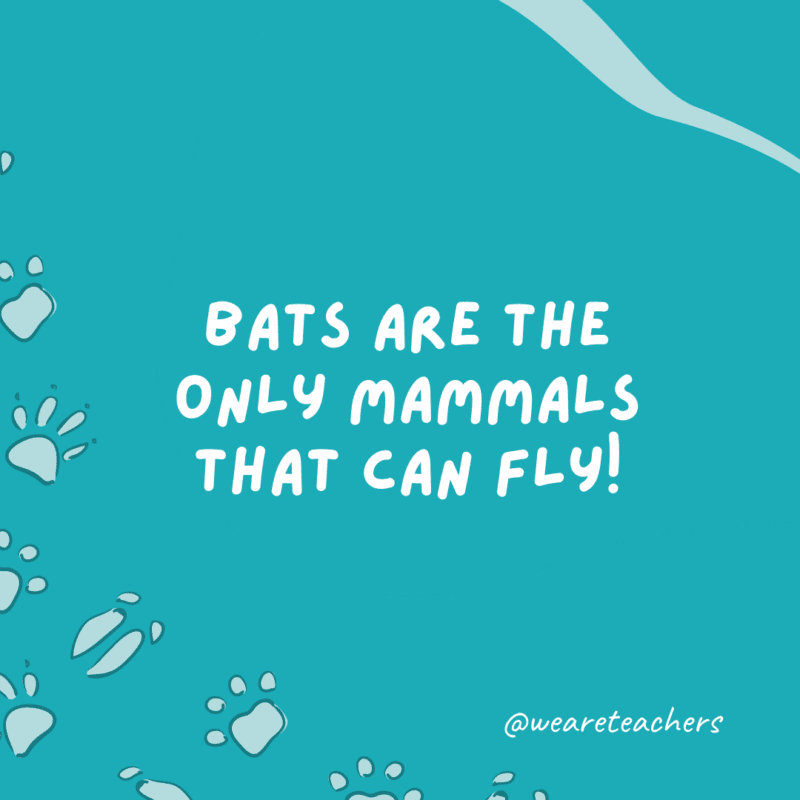Animals can be cute, cuddly, fast, smart … and gross, but they’re all pretty amazing! Kids love learning about animals, so these amazing animal facts are perfect for sharing with your students. Post one during your morning meeting or share them all during a science lesson.
Amazing Animal Facts for Kids
The regal horned lizard has a gross way of repelling attackers. They squirt blood out of their eyes!

It’s really gross, but if you want to see the lizard in action, check out this video from Animal Planet.
There are an estimated 700 million to 1 billion dogs in the world.

The United States has the most dogs at about 90 million. Scientists estimate that dogs were domesticated (made human-compatible) 15,000 years ago. Learn more about different dog breeds in this video.
Polar bears are not really white. Their fur is actually transparent.
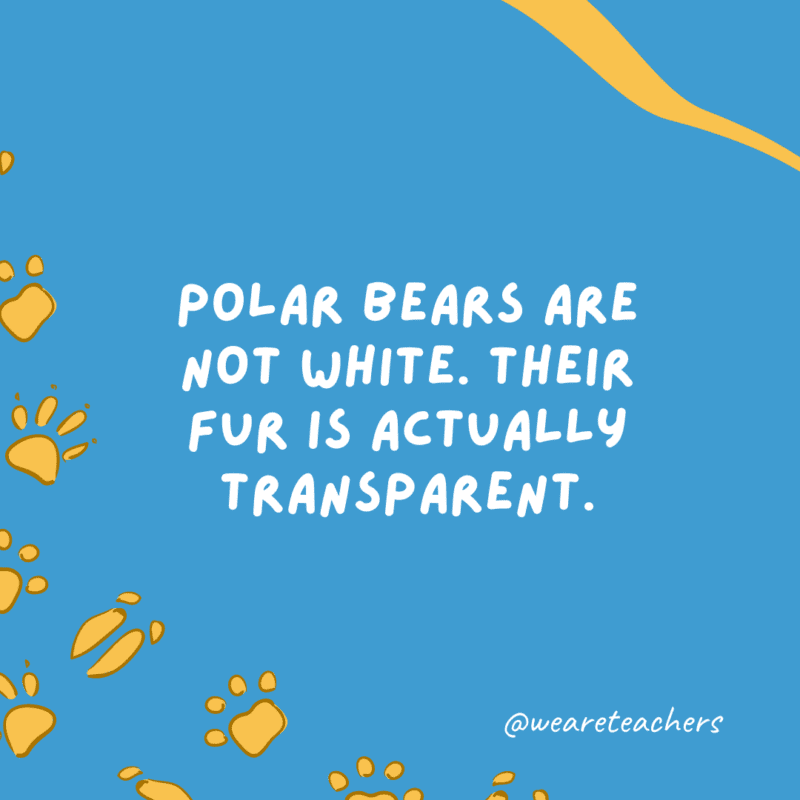
Learn more about how polar bears are unique in this video.
An ostrich’s eyes are bigger than its brain.
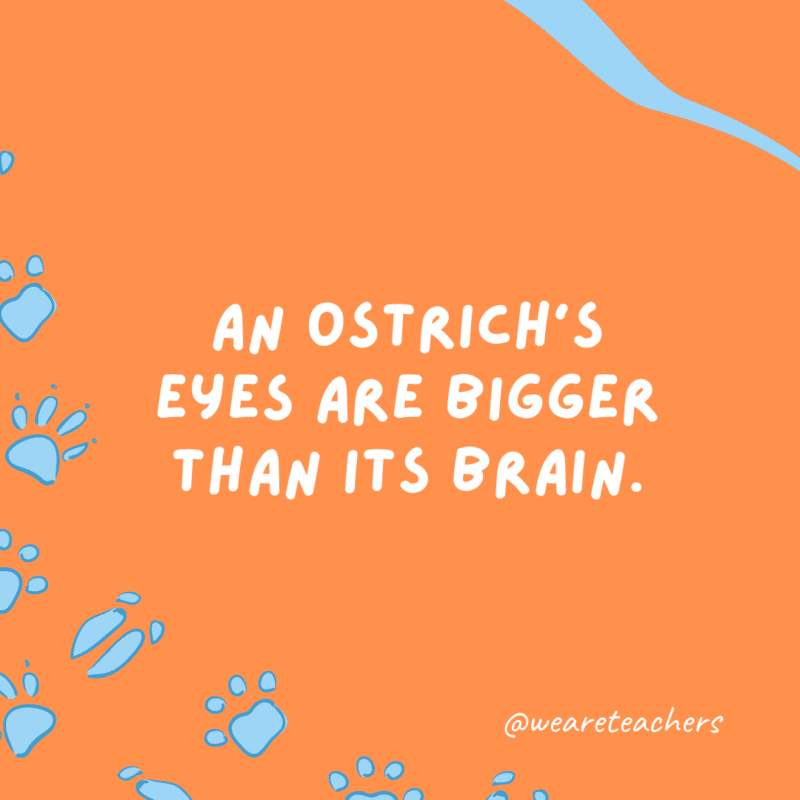
The ostrich’s eyes are about the size of billiard balls. They take up so much room in the skull that the brain is actually smaller than either one of the eyeballs. Learn more fun facts about ostriches in this video from Animals for Kids.
Bats are the only mammals that can fly.
Some mammals glide, but bats are the only ones that truly fly. Learn more facts about bats in this video from SciShow Kids.
Some hummingbirds weigh less than a penny.

A penny can weigh up to 4 grams (less than an ounce), but some hummingbirds weigh only 2 grams! Learn more about hummingbirds in this video from All Things Animals TV.
Dragonflies can see in all directions at the same time.
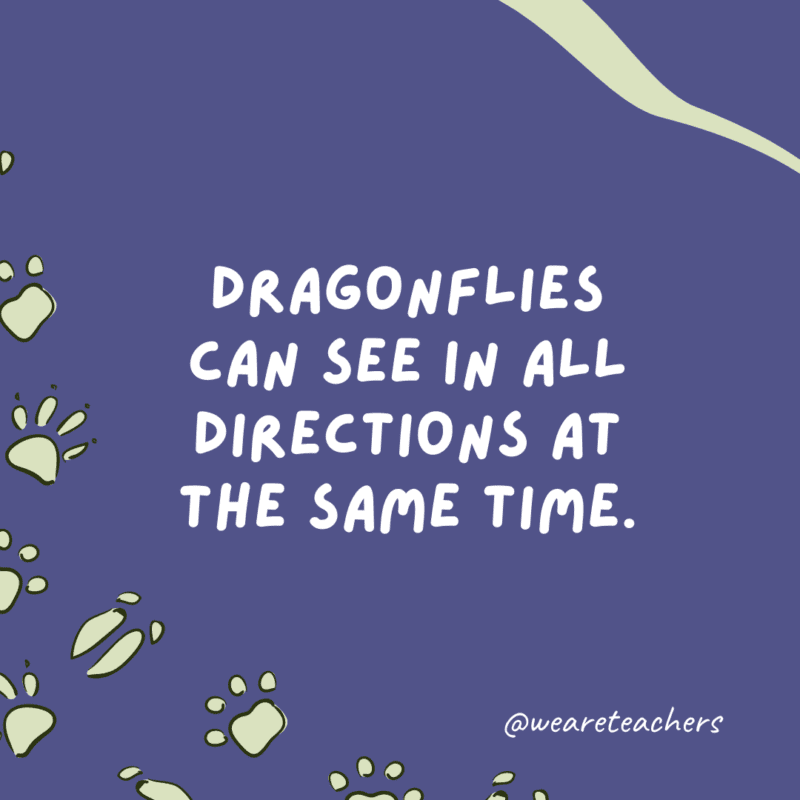
Learn more facts about dragonflies in this video from SciShow Kids.
Bats have thumbs.

The thumb usually has a substantial claw, which is used for climbing, food handling, and more.
Gorillas burp when they’re happy!

Learn more about amazing gorillas in this video from Nat Geo Kids.
A giraffe has seven bones in its neck.
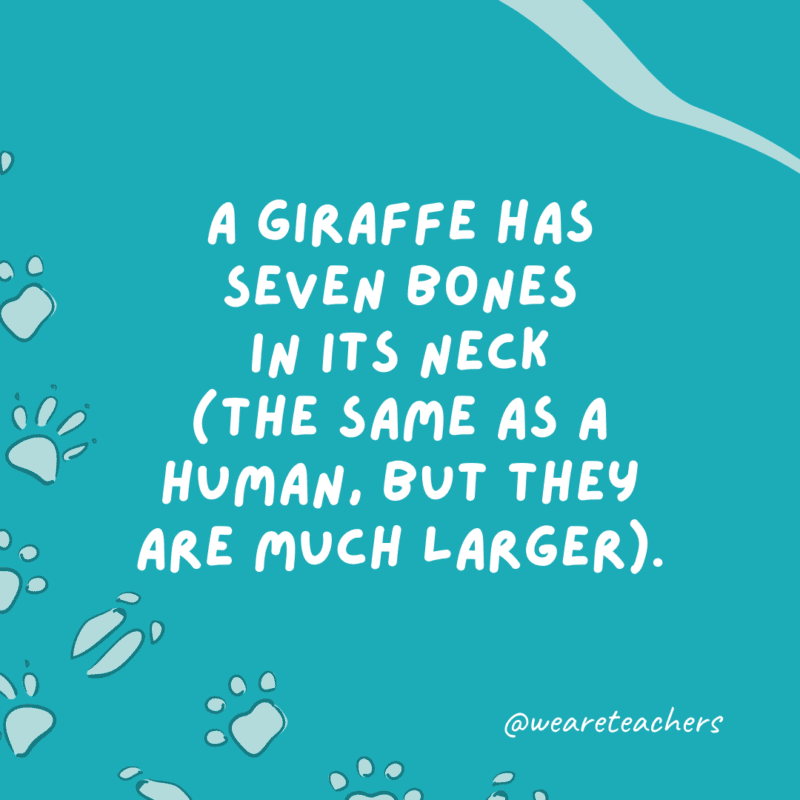
That’s the same number as humans have, but giraffes’ are much larger. Learn more giraffe facts in this video from Homeschool Pop.
Sharks lay the biggest eggs in the world.

Learn more cool facts about sharks in this video from Nat Geo Kids.
Cheetahs only need to drink once every three to four days.

They can even go without drinking for up to 10 days! Learn more cheetah facts in this video from Nat Geo Kids.
You can tell the age of a whale by looking at the wax plug in its ear.

Much like tree rings, whale earwax accumulates in layers, adding a layer about every six months. By slicing up the wax, a scientist can estimate a whale’s age.
Gorilla noseprints are as unique as human fingerprints.
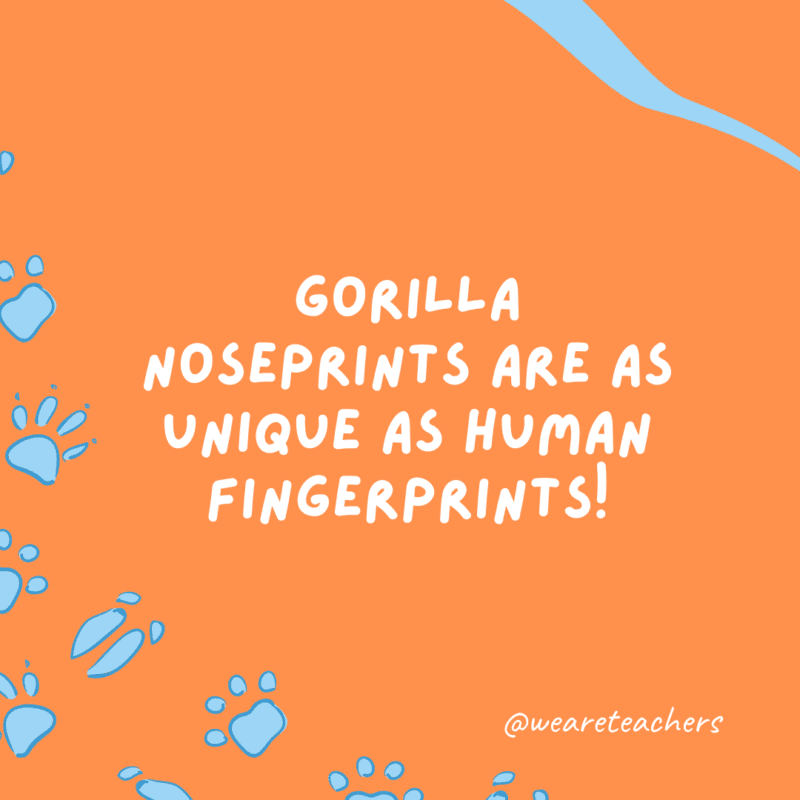
Learn more cool gorilla facts in this video from Nat Geo Kids.
Male rhinos are called bulls, and female elephants are called cows.

In fact, a lot of animal species use these same names, including alligators, camels, dolphins, and reindeer.
A tiger’s roar can be heard as far as 3 kilometers (2 miles) away.

Learn more cool tiger facts in this video from Homeschool Pop.
Walruses can sleep in water.

Walruses sleep around 19 or 20 hours a day! They can sleep in water and on land, although they sleep for longer periods on land.
Giant anteaters can eat over 30,000 insects a day.
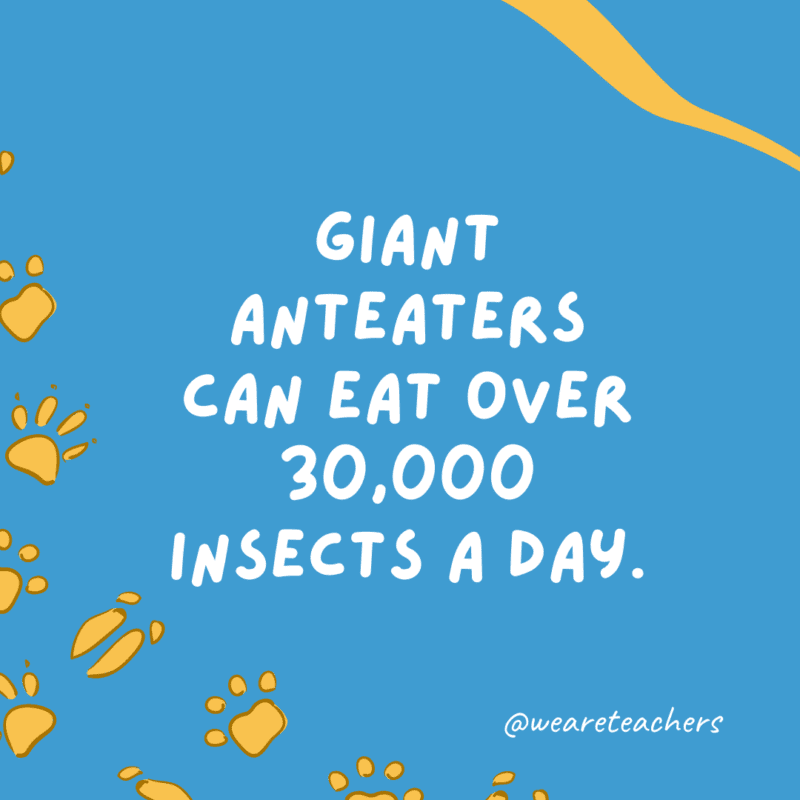
Anteaters primarily eat ants and termites, and gosh they eat a lot!
Starfish have no brain and no blood. And they aren’t even fish!

Learn 10 more facts about starfish in this video.
Baby elephants are able to stand within 20 minutes of being born.
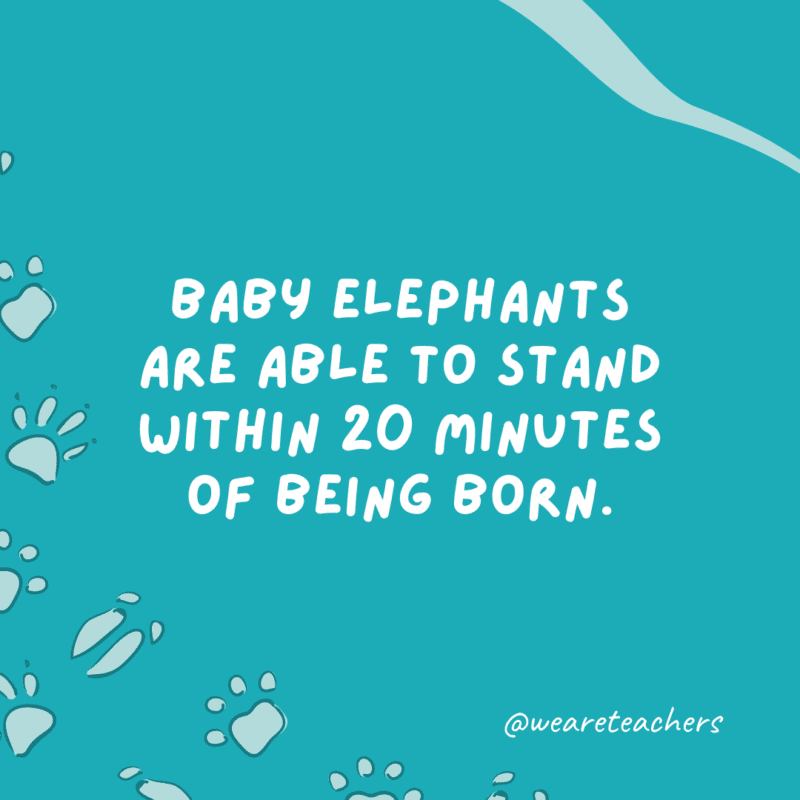
And they can walk within 1 hour of being born! Learn more fun facts about elephants in this video from Homeschool Pop.
Reindeer grow new antlers every year.
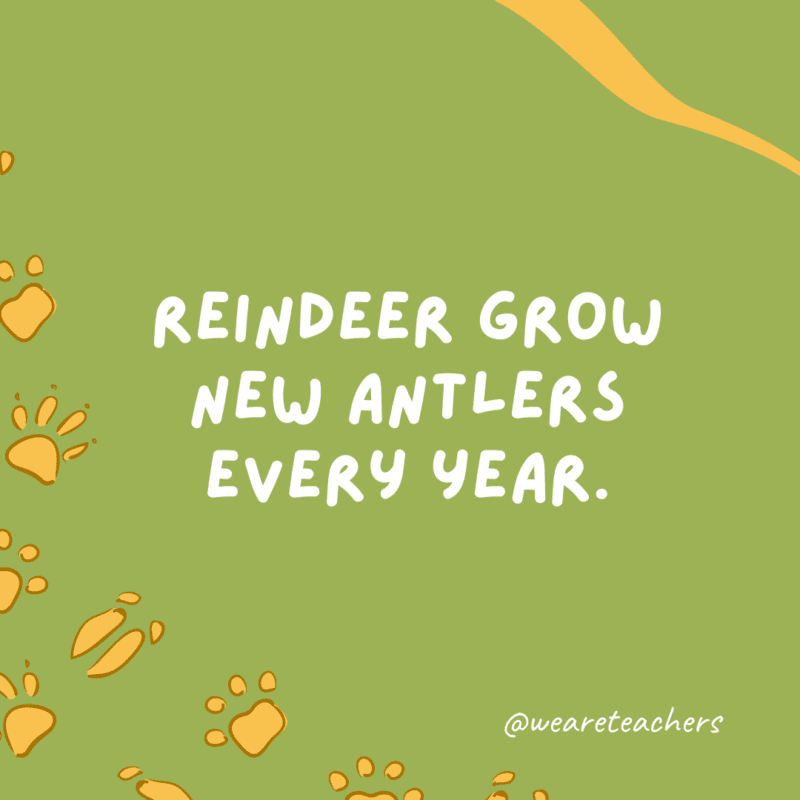
Both male and female reindeer grow antlers, and the antlers are like our fingerprints—no two are alike!
Sloths are so slow that in their native climate, algae actually grows on their fur.

This is a symbiotic relationship. The sloth provides the algae with shelter and water. The algae provide the sloth with camouflage and extra nutrients.
Some land snails can sleep for up to three years in hibernation or aestivation.

Snails need moisture to survive. If the weather is bad, it causes the snails to hibernate for a long time!
A grizzly bear’s bite is so strong that it can crush a bowling ball.
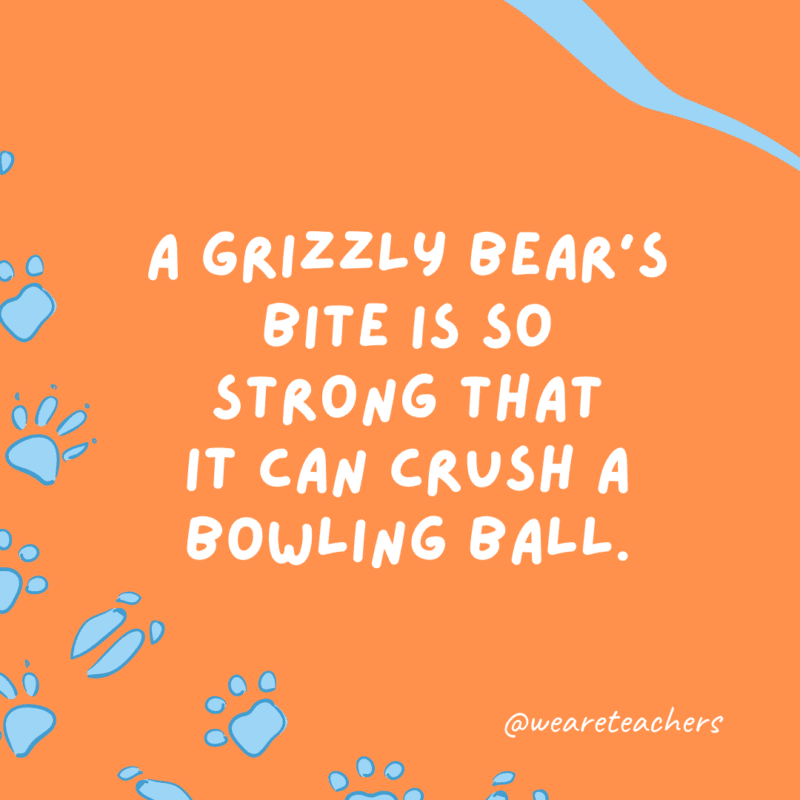
Learn more facts about grizzly bears in this video from Little Fox.
Rats laugh when being tickled.

They actually let out tiny giggles, too high for humans to hear.
There are no male or female earthworms.

While all earthworms have both male and female parts, they still need one of each to reproduce.
A jaguar’s night vision is six times better than a human’s.
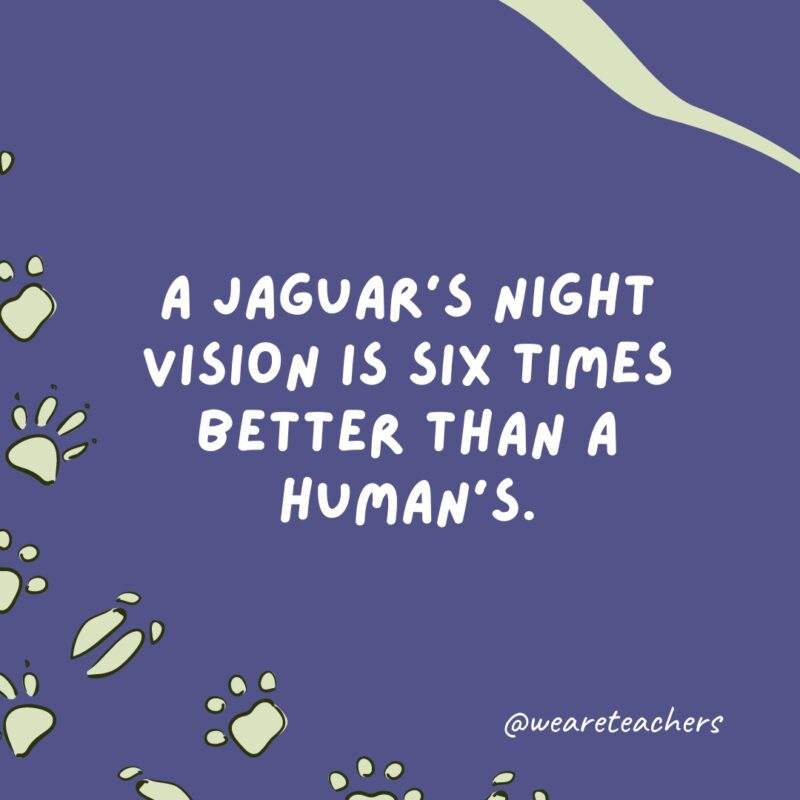
Watch this video from BBC Earth to learn more about how jaguars hunt at night.
A hummingbird’s wings can beat up to 200 times per second to hover.

See them fly, drink, shake, and more in this amazing slow-motion video from National Geographic.
Vampire bats have such sharp teeth that you may not feel them bite you.

On top of that, their saliva dulls pain, and they can feast on a victim’s blood for 30 minutes undetected!
Humans share 98.8% of chimpanzee DNA.
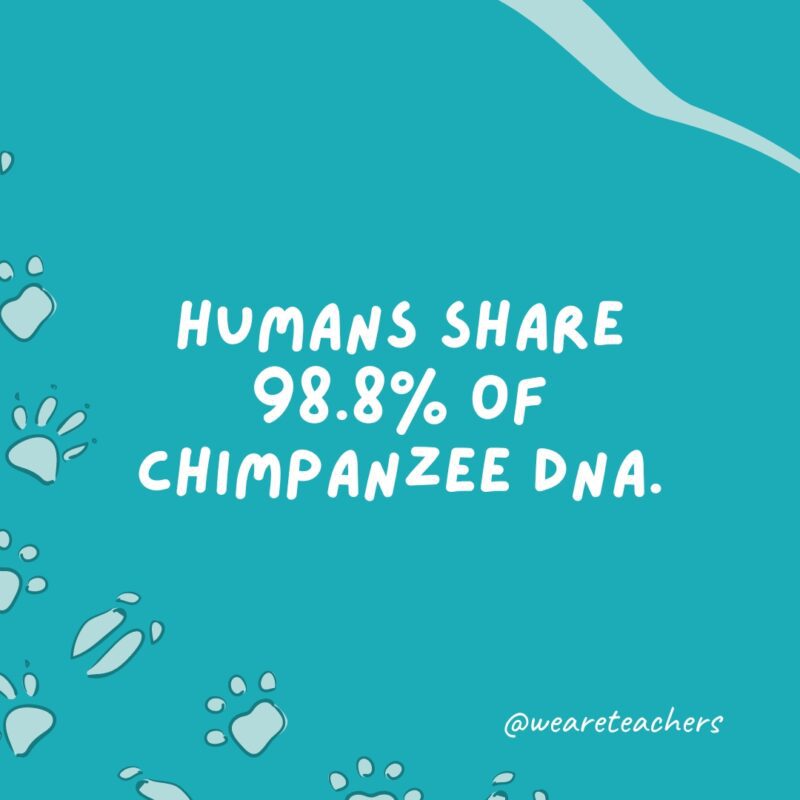
Despite these similarities, though, we still have around 35 million differences between us. Watch this BBC Reel about how chimpanzees are just like us!
A rhinoceros horn is made from keratin, the same protein found in hair and fingernails.

Shockingly, it’s not bone or another substance! Watch this video to learn more about why their horns are so valuable.
A cat can use its whiskers to check whether it will fit into a space.

They can measure if it’s too small for them to fit through! Watch this video about how cats use their whiskers.
A chameleon’s tongue can be twice as long as its body.

This National Geographic video explains why their tongues are so powerful.
The hippo’s closest living relatives are whales, dolphins, and porpoises.
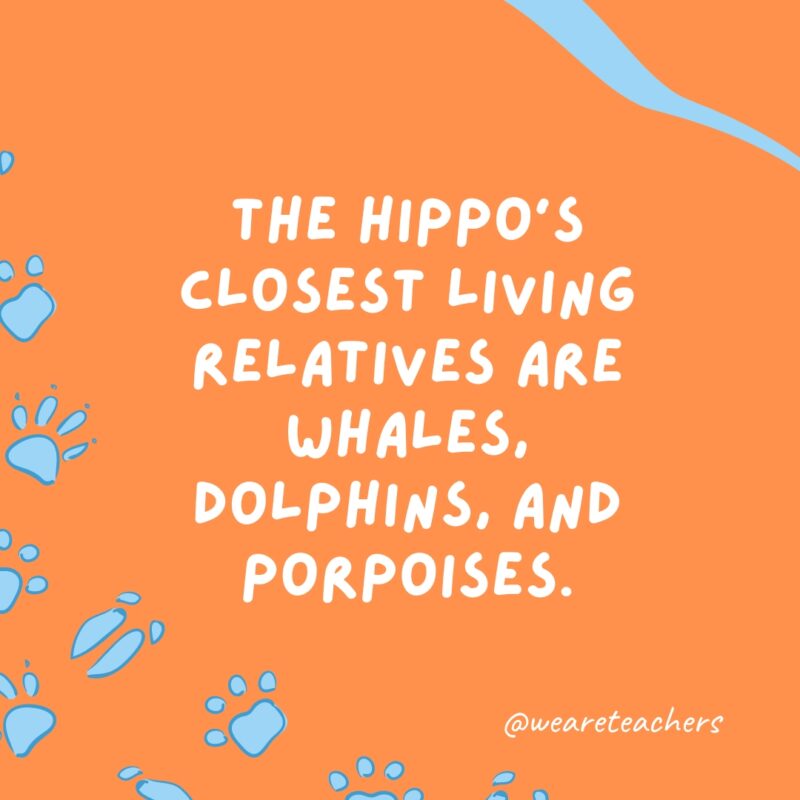
They share a lot with these aquatic mammals!
Adult bison are the largest land mammals in North America.
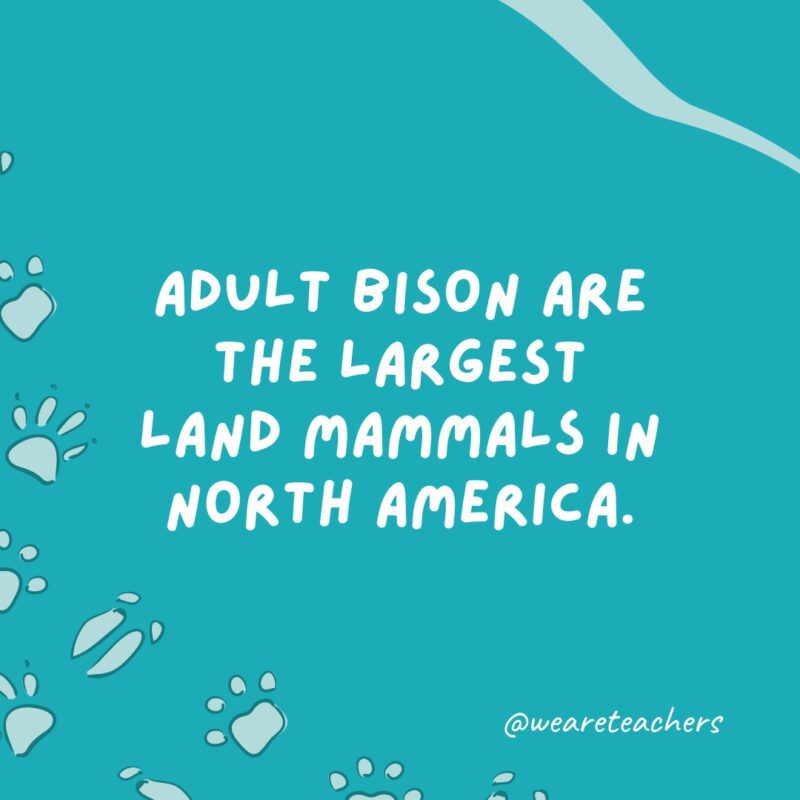
Watch this video to learn all about bison.
An eagle’s vision is four times sharper than a human’s.
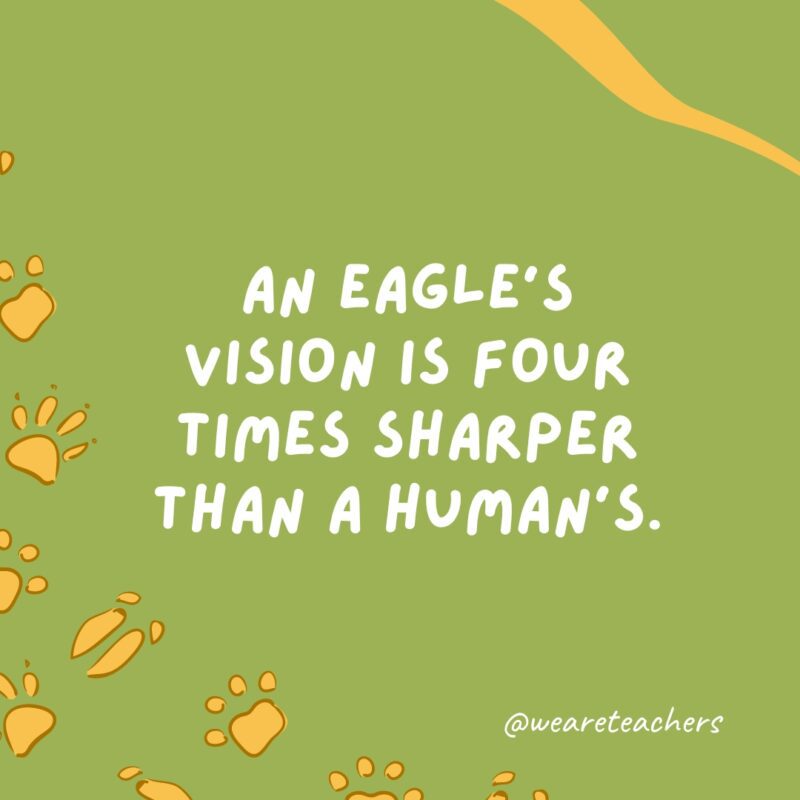
Find out what would happen if humans had eagle vision.
Nine-banded armadillos always give birth to identical quadruplets.

Watch this video to learn more about how armadillos give birth to these cute babies.
The giant tortoise of the Galapagos Islands weighs as much as a brown bear.
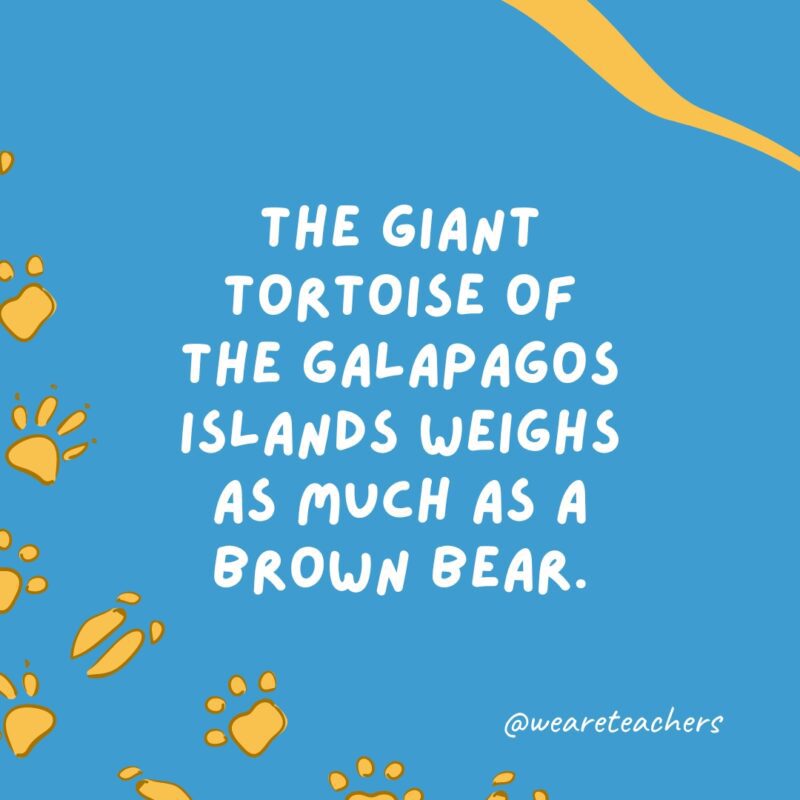
It can weigh up to 550 pounds. Watch this video for more facts about the giant tortoise.
Sea otters have the densest fur of any mammal.
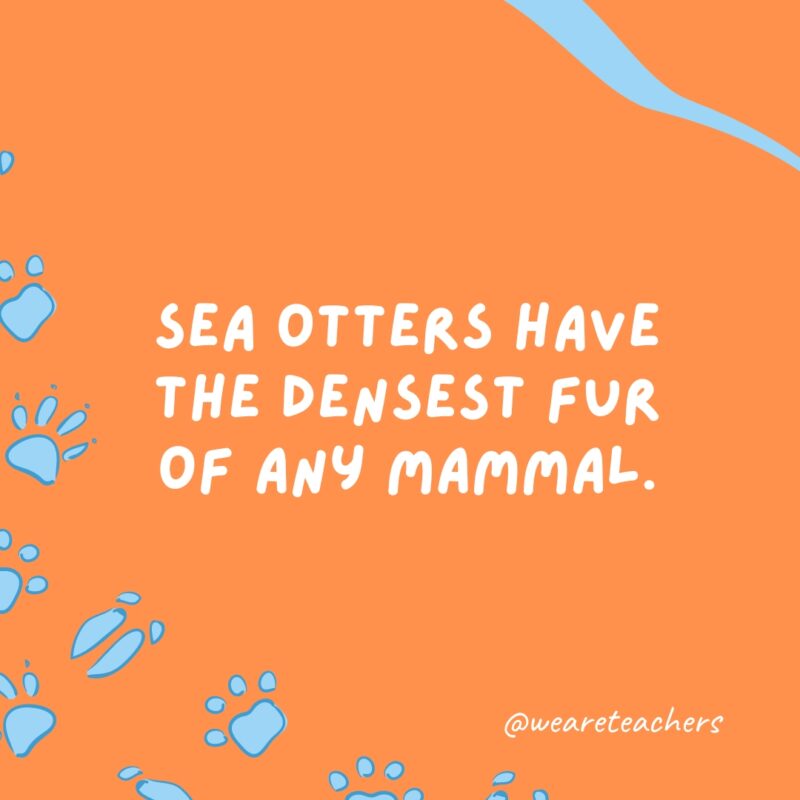
While humans are covered in 5 million hairs, the large male sea mammal has around 800 million! This video explores the fantastic fur of sea otters.
Cat fleas have amazing jumping skills.
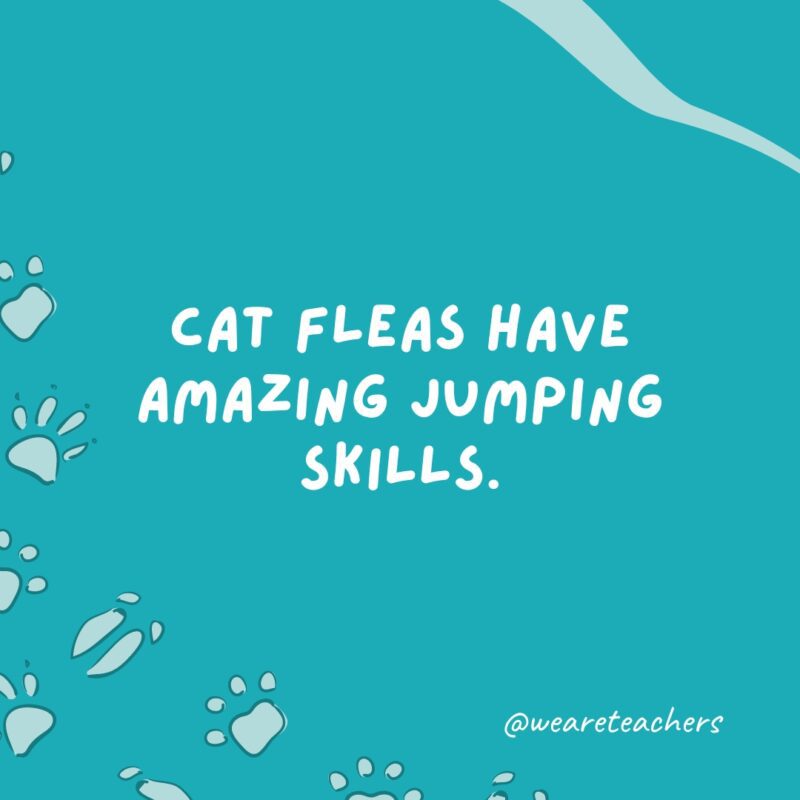
They can jump to a height of up to 60 times their own body length, but these incredible leaps require more than just muscle!
An emperor penguin can stay underwater for 27 minutes.

They can also dive as deep as 500 meters and speed-launch out of the water!
Both male and female pigeons produce milk for their babies.

Each produces crop milk, a substance used to feed their chicks. This is a rare ability among birds!
Camels can drink 50 gallons of water in 3 minutes.

That’s a lot of water! This video explains where they store it all.
Kiwis have nostrils at the end of their long beaks.
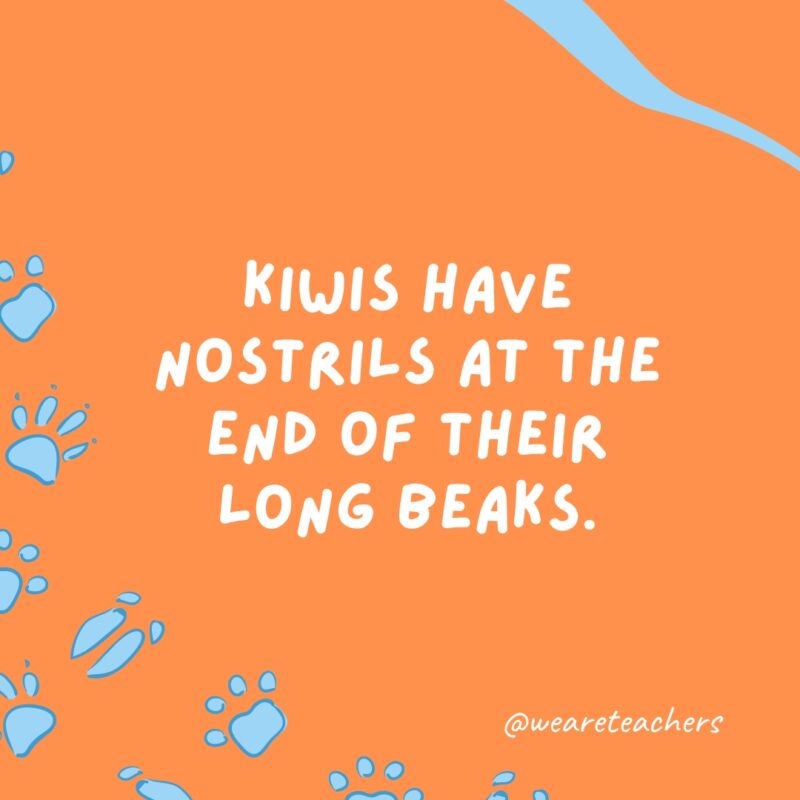
Learn more about the national bird of New Zealand from this video.
Blue whales make the loudest sound of any animal.
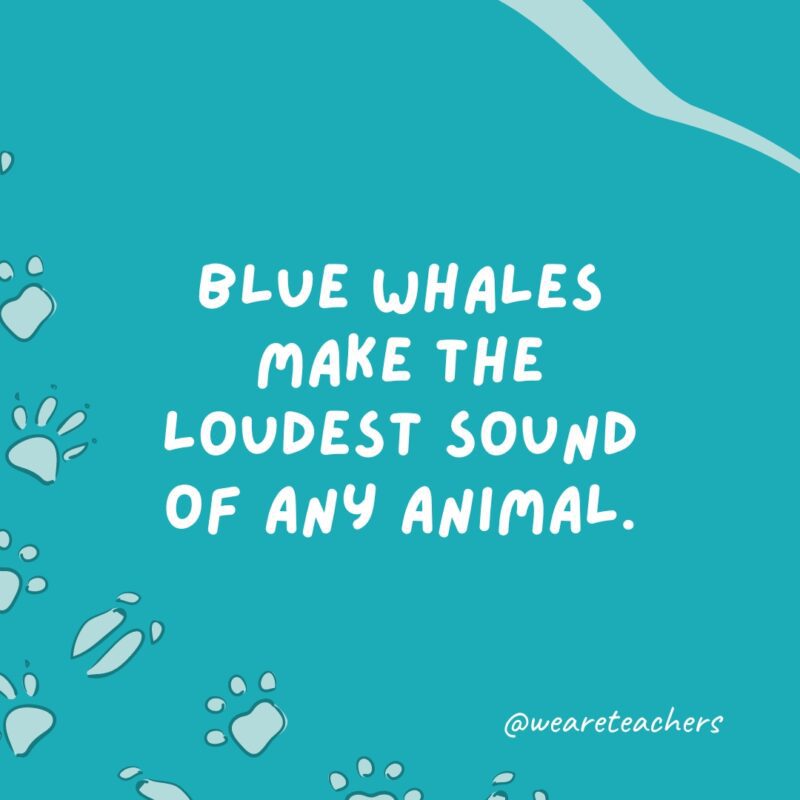
The remarkable sound, which registers at 188 decibels, can be detected almost 500 miles away! Learn more about the biggest, loudest animal on the planet.
A group of flamingos is called a flamboyance.
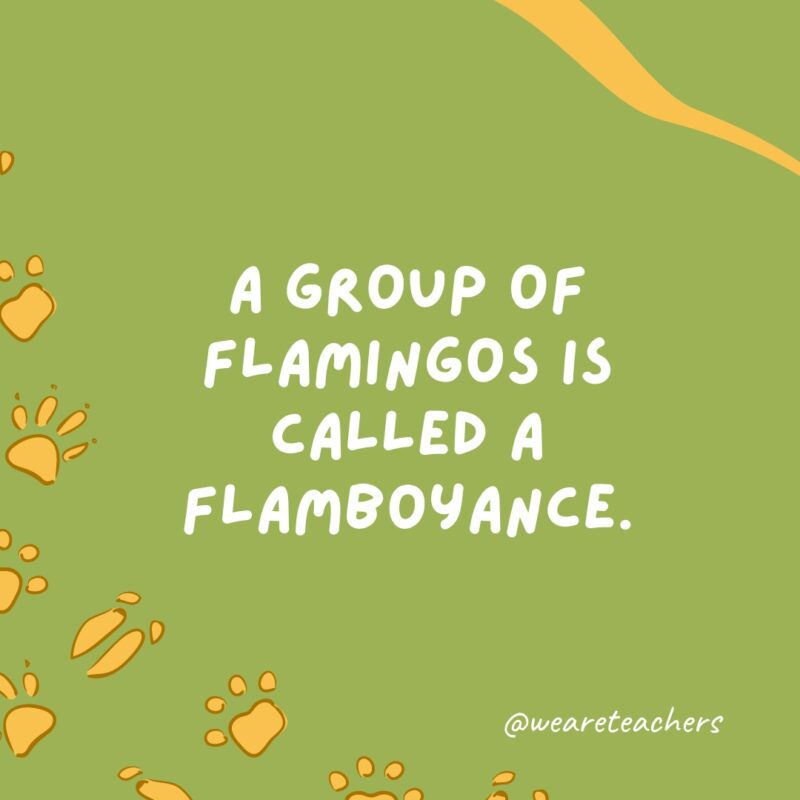
Watch this cool video from Nat Geo Wild to see flamingos with some serious dance moves!
Snakes can see with their eyes closed.

Check out this video about how snakes can see infrared with their pit organ.
Sheep have four stomachs.

Each one of them plays a role in digestion for grass-eating animals.
Only female mosquitos bite.
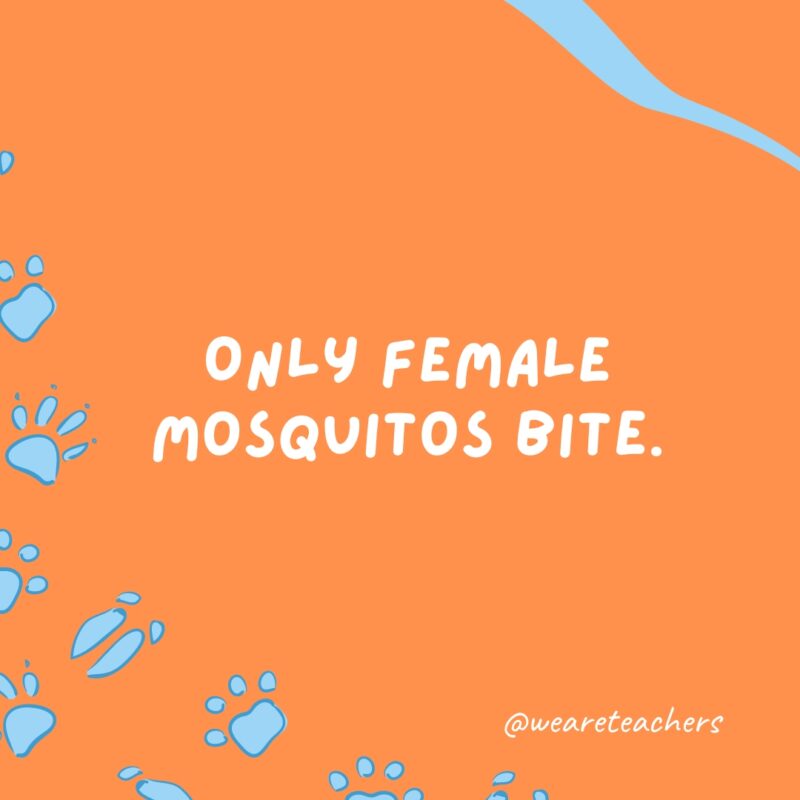
It’s because females need a blood meal to produce eggs. Yuck!
Salamanders can regenerate body parts.

Incredibly, they can grow back their tail, limbs, and jaw!
Kiwis lay eggs that can weigh up to a quarter of their body weight.

National Geographic sheds light on the lives of kiwis in this video!
Octopuses have three hearts and blue blood.

Fascinating. Watch this video to learn more!
Honeybees communicate through dance.
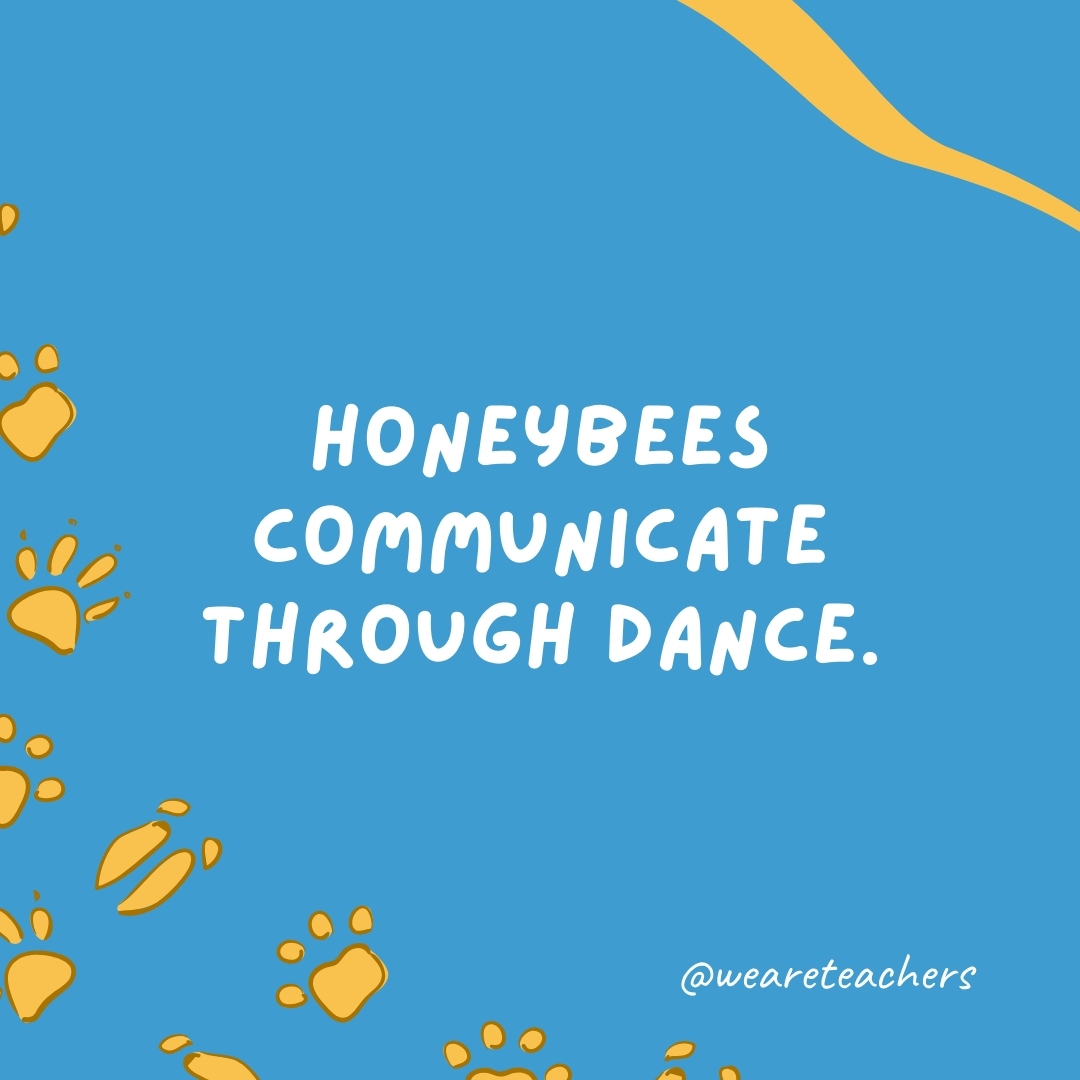
You’ve got to watch this video of the Bee Dance to believe it!
The peacock mantis shrimp can throw a punch at the speed of a bullet.
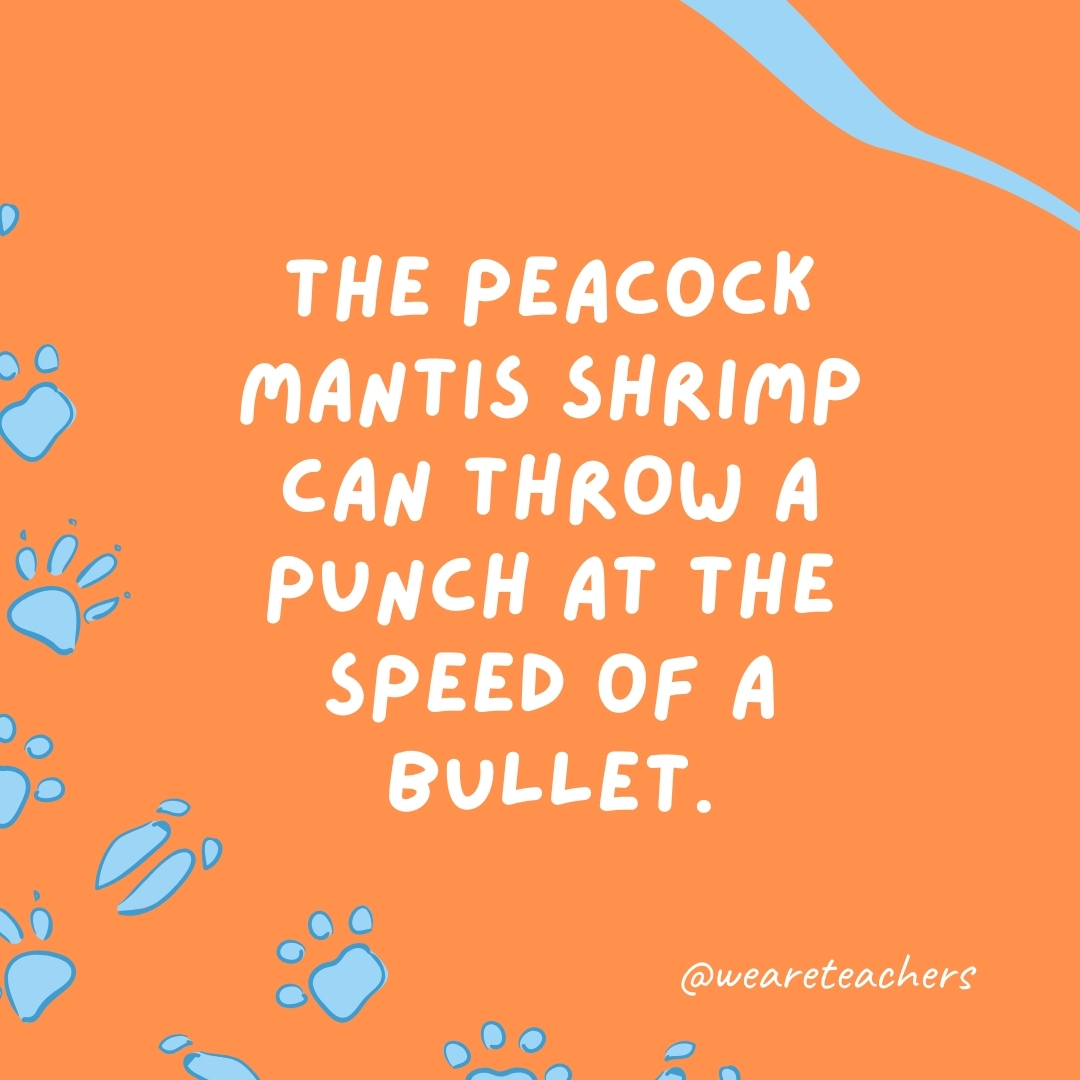
Learn more about this tiny crustacean with the most powerful punch in the world!
Dolphins have names for each other, communicated through whistles.
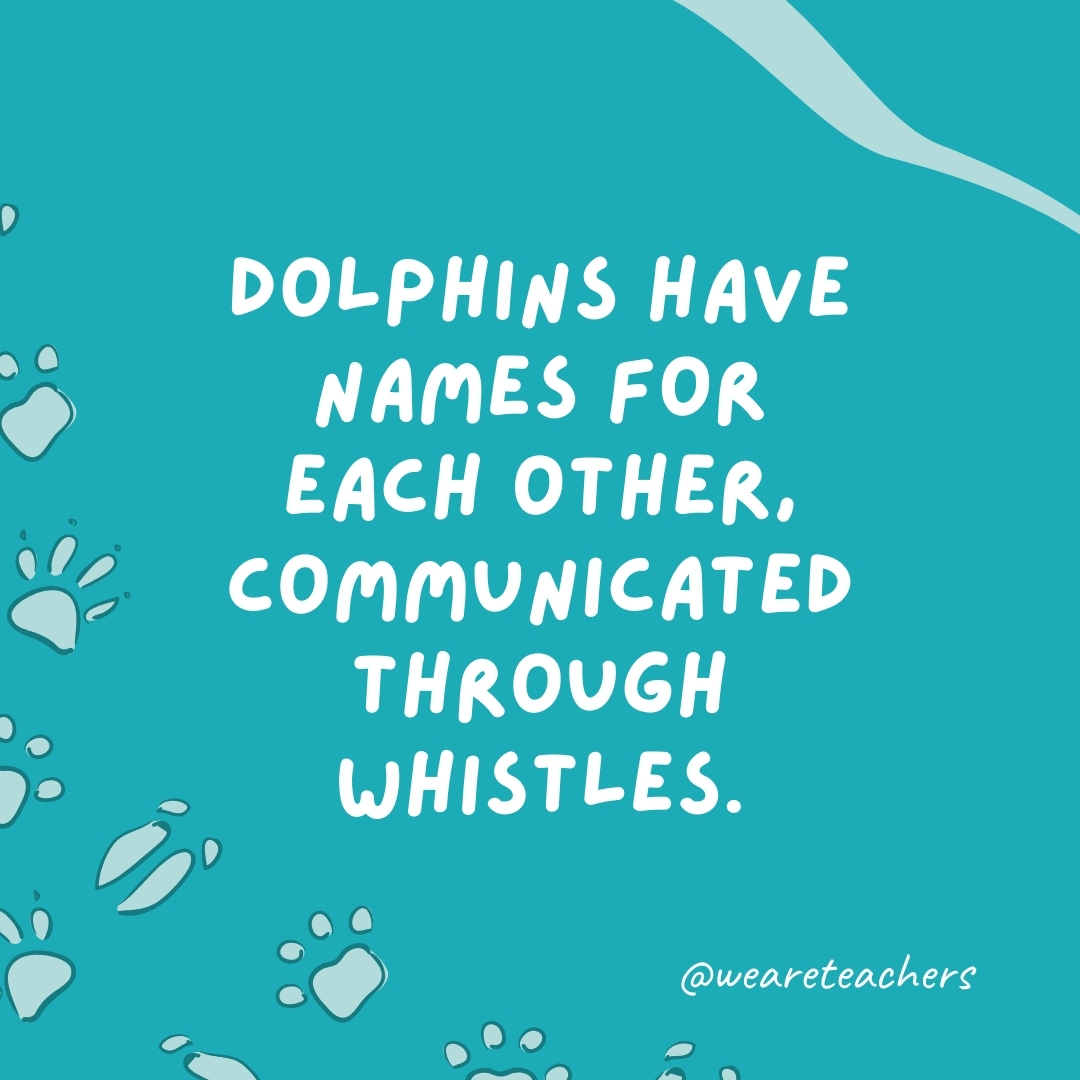
According to researchers, “dolphins copy the signature whistles of loved ones, such as a mother or close male buddy, when the two are apart.”
Elephants can sense rain up to 150 miles away.

It’s because they can vividly remember the sound of rain!
The heart of a blue whale is so big that a human can swim through its arteries.
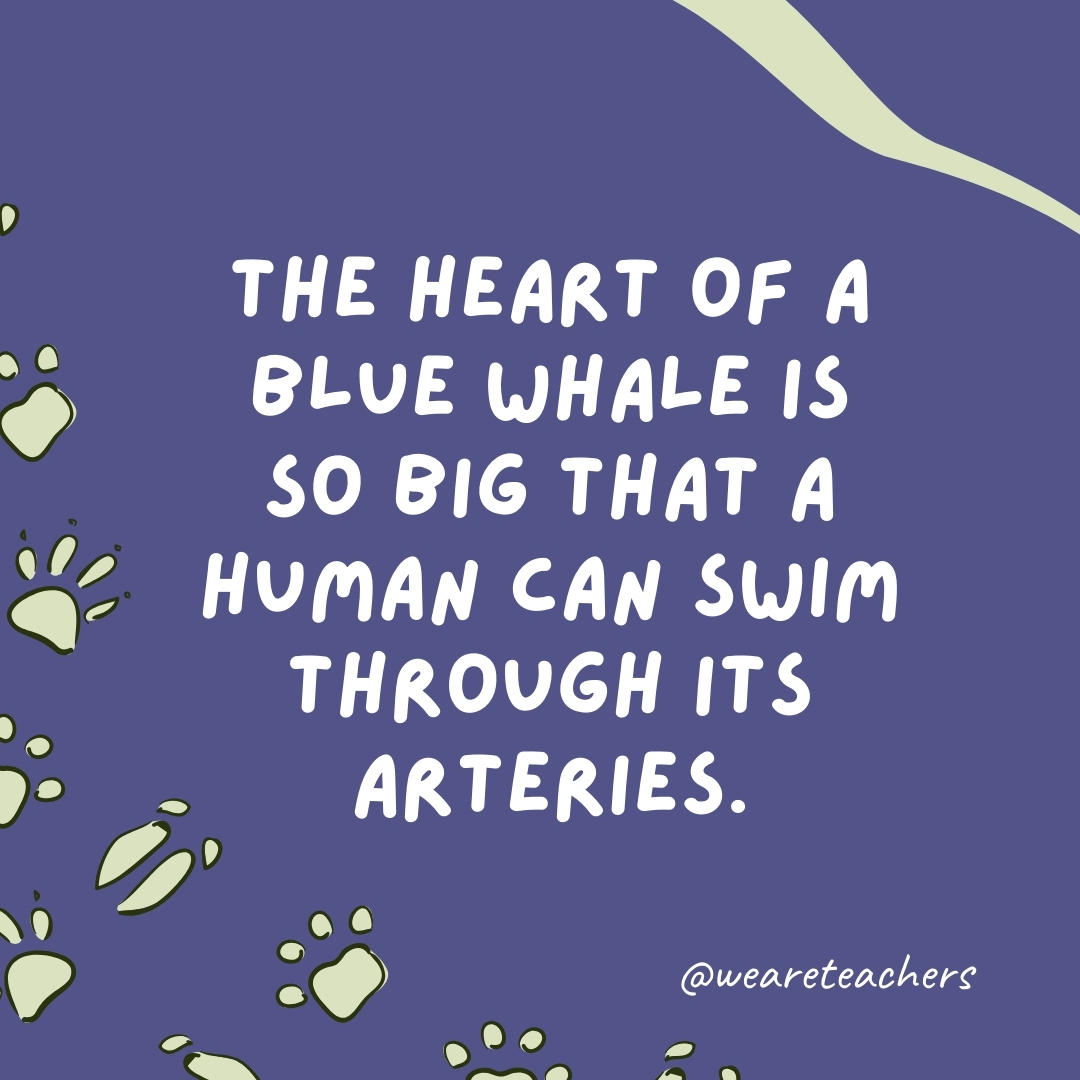
That’s hard to even imagine, but it’s real!
A group of crows is called a murder.
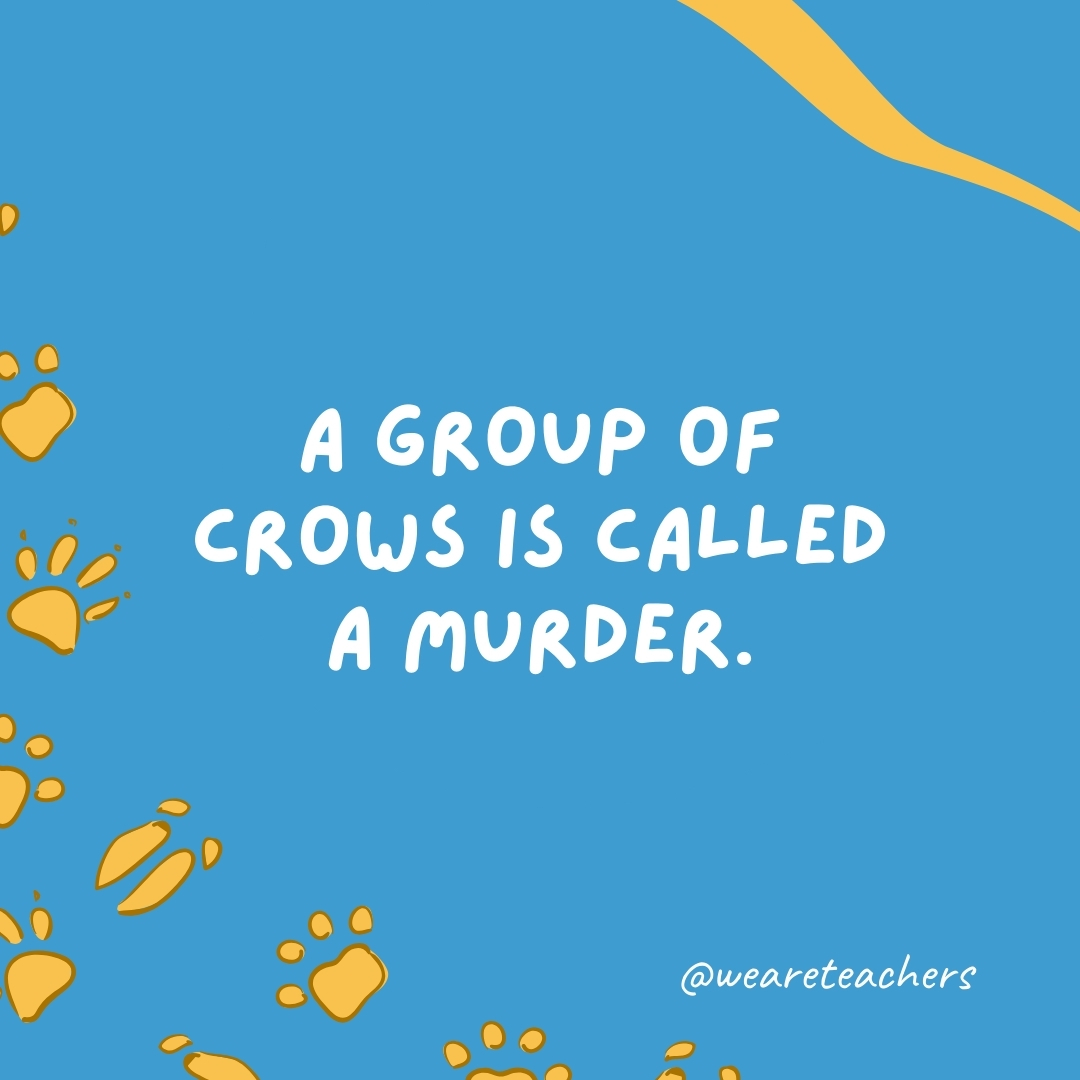
This spooky name comes from old stories where crows were often seen as a sign of bad luck.
Turtles can breathe through their butts.
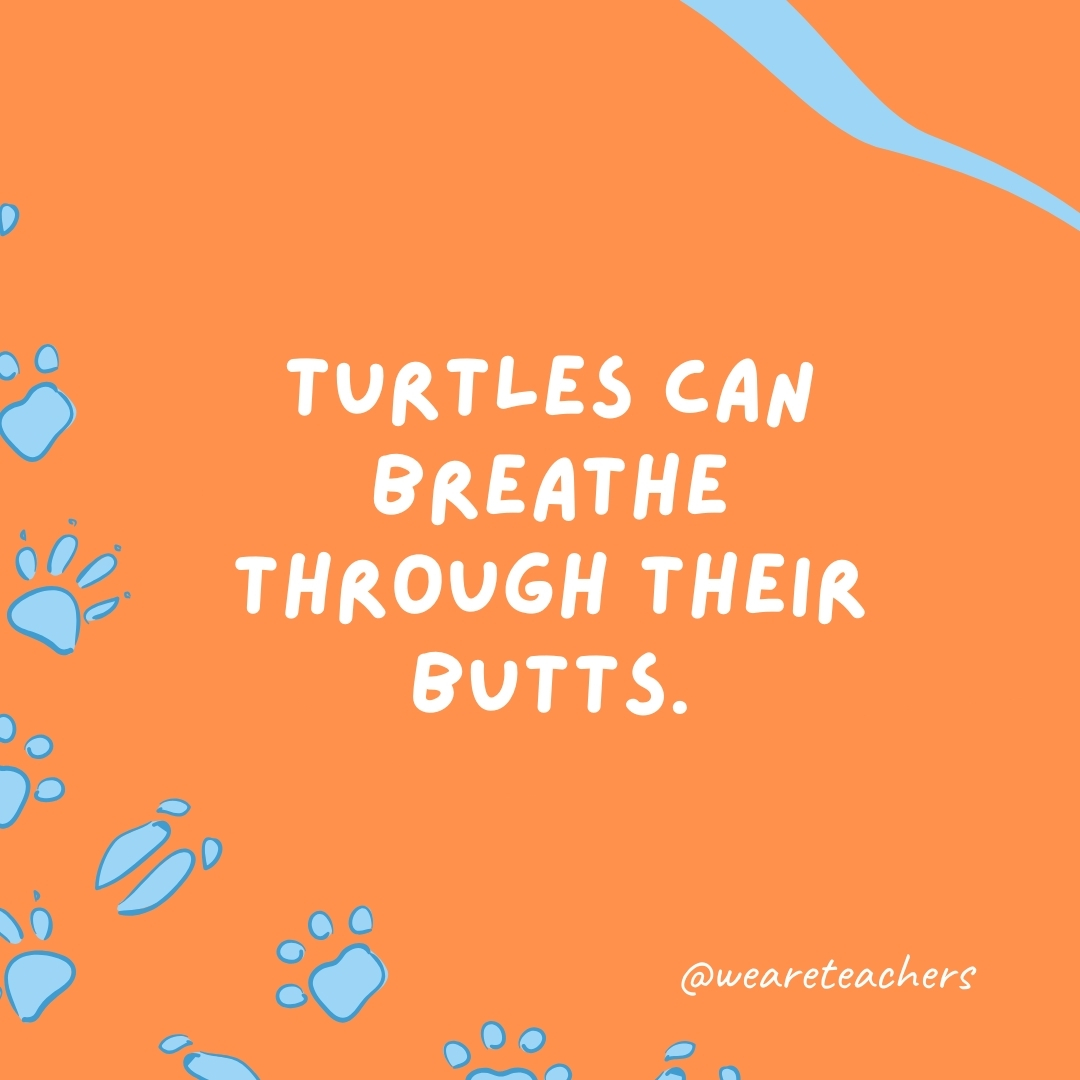
Believe it or not, this helps them stay underwater for a long time without coming up for air.
Sea cucumbers can eject their internal organs to scare off predators.
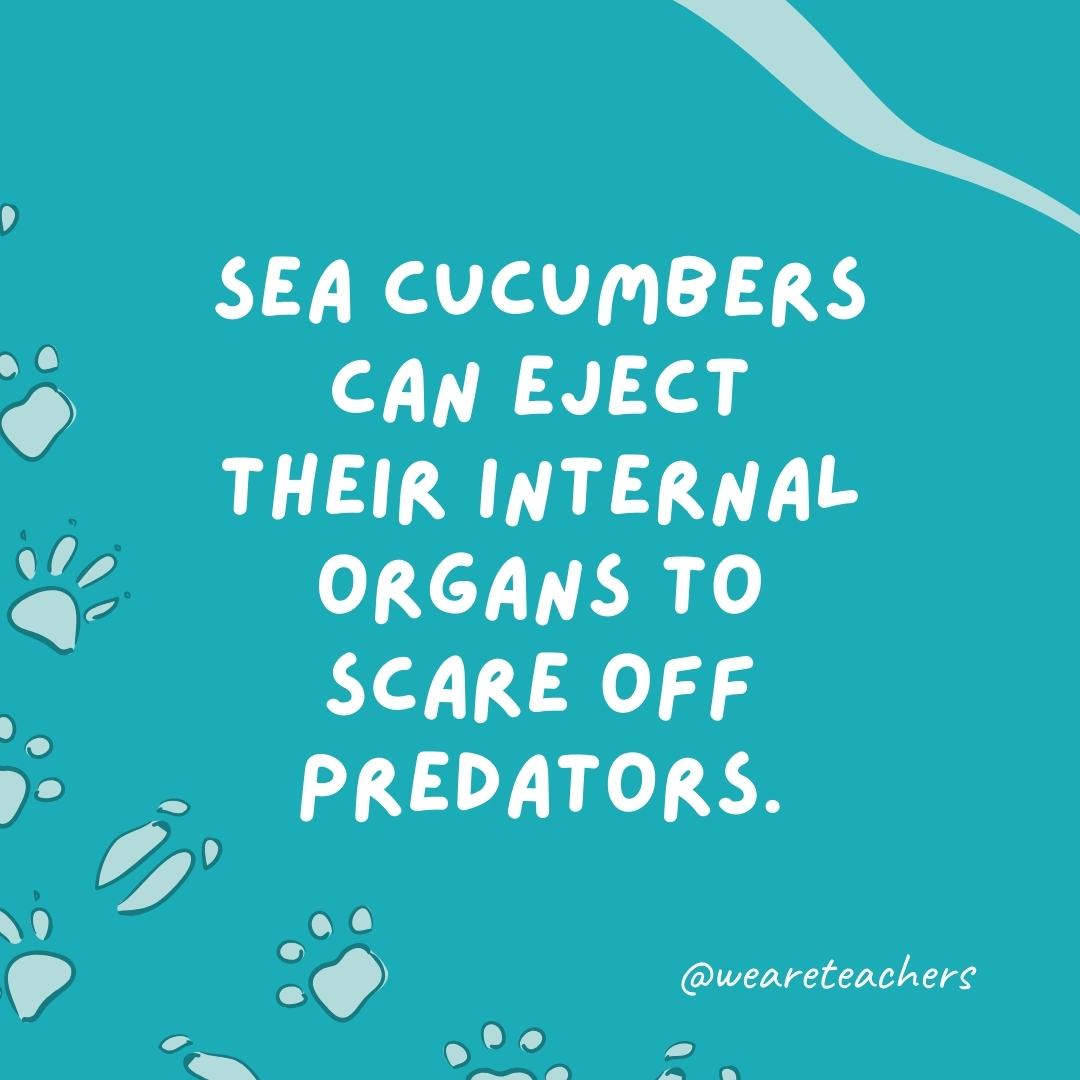
It’s their weird but kind of super-cool way of saying “Back off!” to any creature that tries to eat them. Watch this video for more.
The tongue of a blue whale can weigh as much as an adult elephant.

That’s because it needs a huge tongue to gulp down thousands of fish in one big swallow. Check out this video to see how it works.
Penguins have knees inside their bodies.
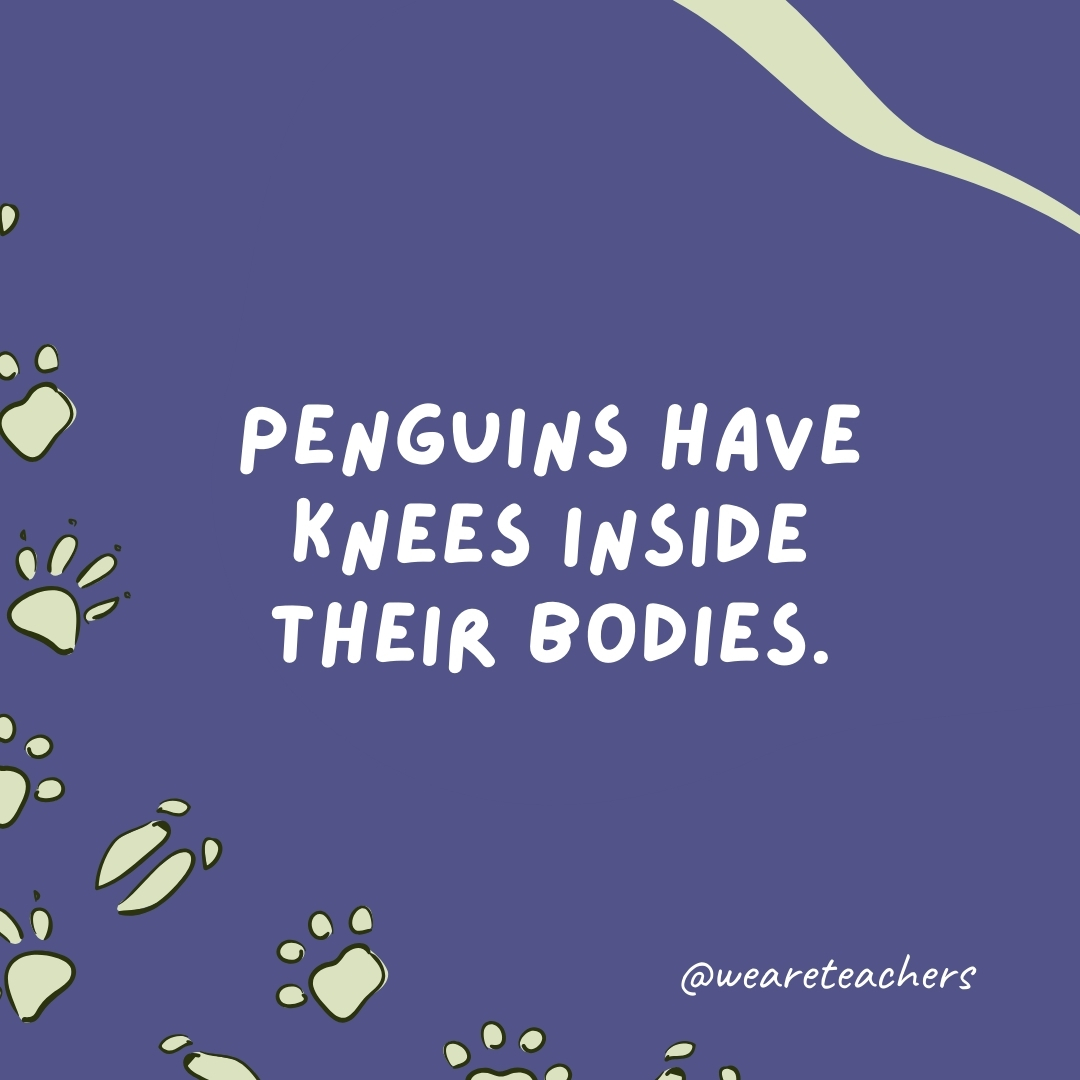
Even though you can’t see them, penguins have knees that help them waddle and swim in the ocean.
Lobsters have teeth in their stomachs.
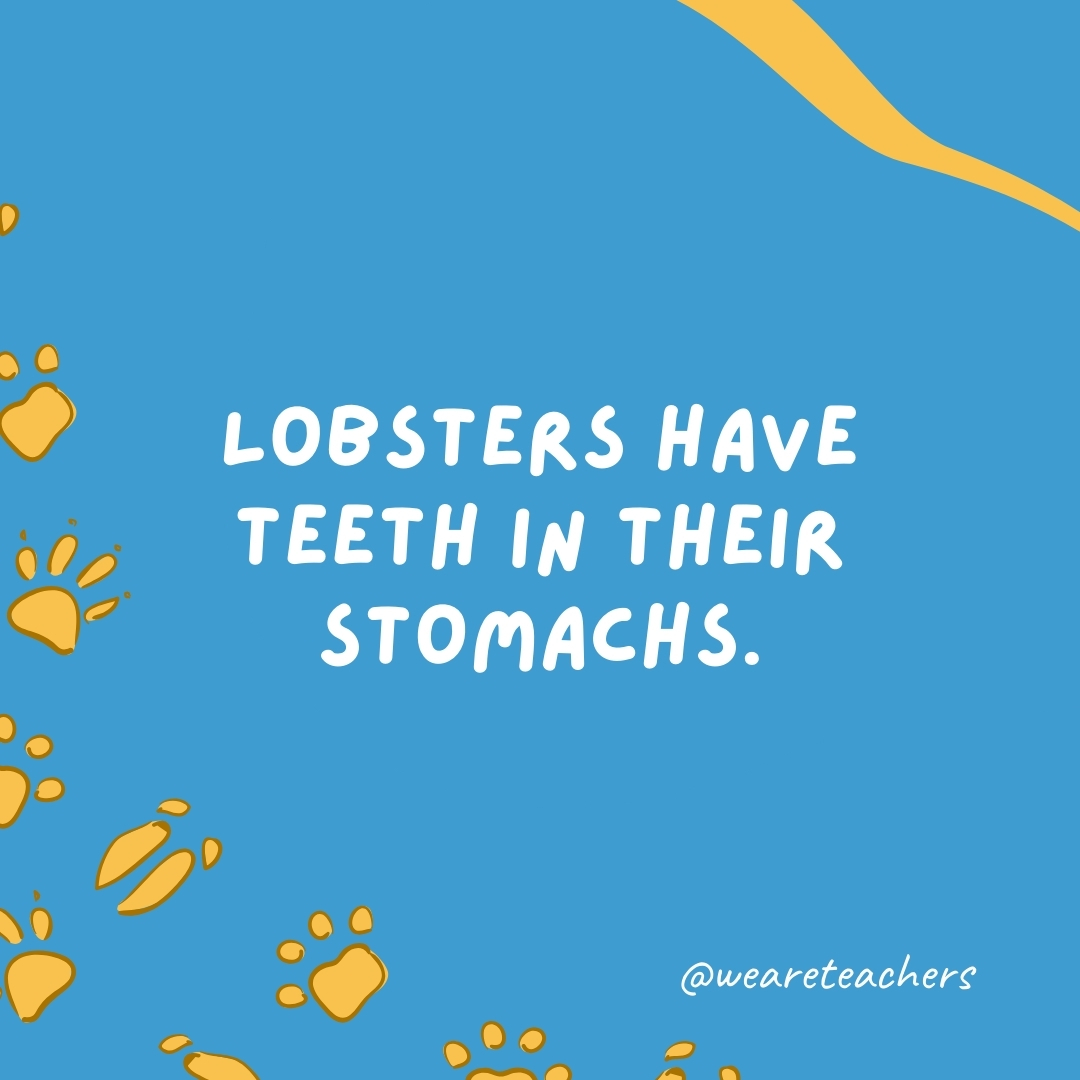
These sea creatures chew their food in their stomach, which is just as weird and wonderful as it sounds.
A snail can grow back a new eye if it loses one.

Snails are amazing at playing peekaboo because they can grow a new eye if one gets lost.
Ostriches can run faster than horses, and the males can roar like lions.
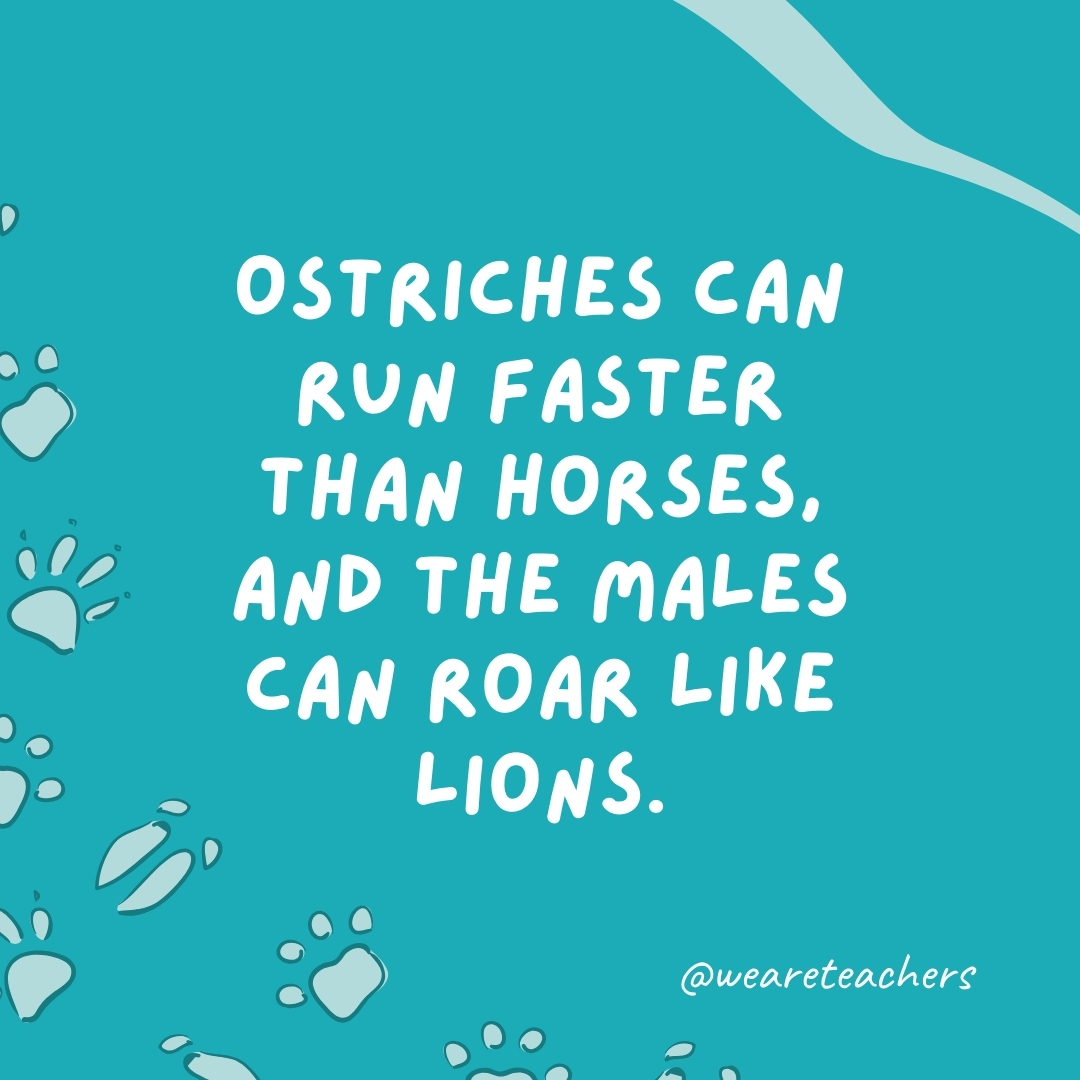
Not only are ostriches superb sprinters, but their mighty roars might also make you think a lion is nearby!
Crocodiles can gallop like horses.

Believe it or not, some crocs can pick up the pace and gallop when they really need to hustle.
Hummingbirds are the only birds that can fly backward.

These tiny birds are the acrobats of the sky, zipping backward as easily as they do forward.
Butterflies taste with their feet.
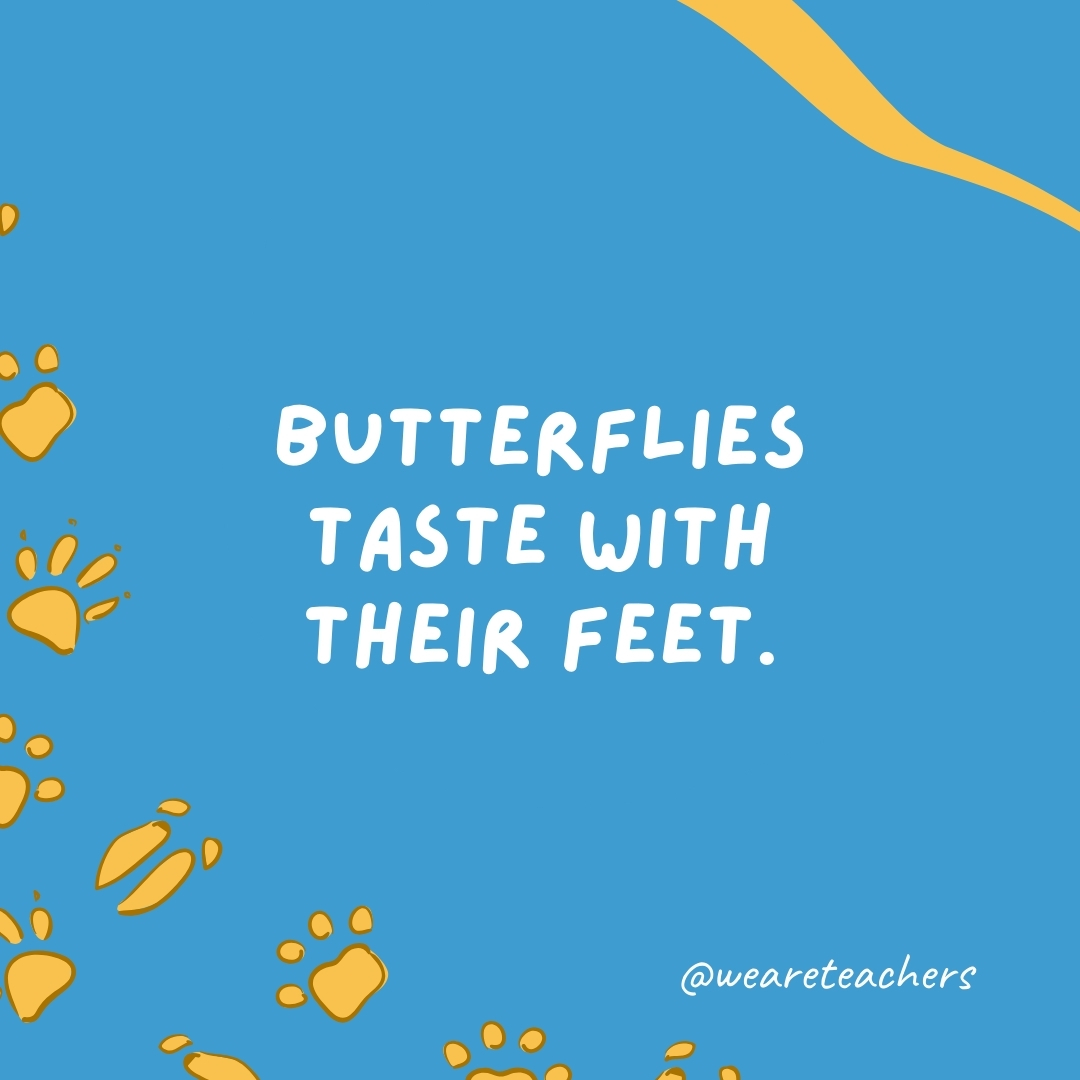
Imagine tasting your favorite ice cream just by walking on it—that’s how butterflies check out flowers!
The cheetah is the only cat that has semi-retractable claws.
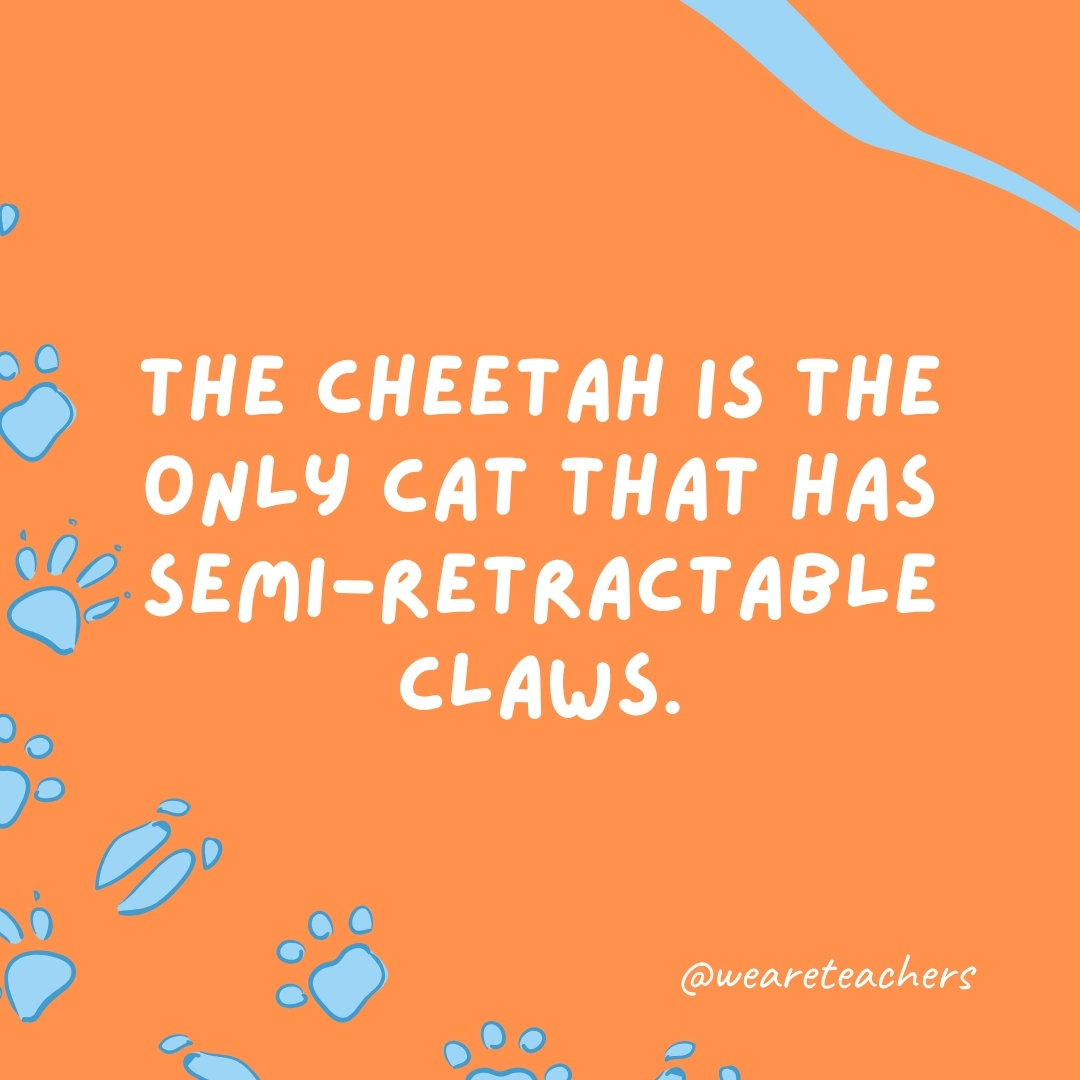
Cheetahs have built-in running shoes with spikes—their claws don’t retract the way other cats’ do, helping them dash at lightning speed.
Frogs can freeze without dying.
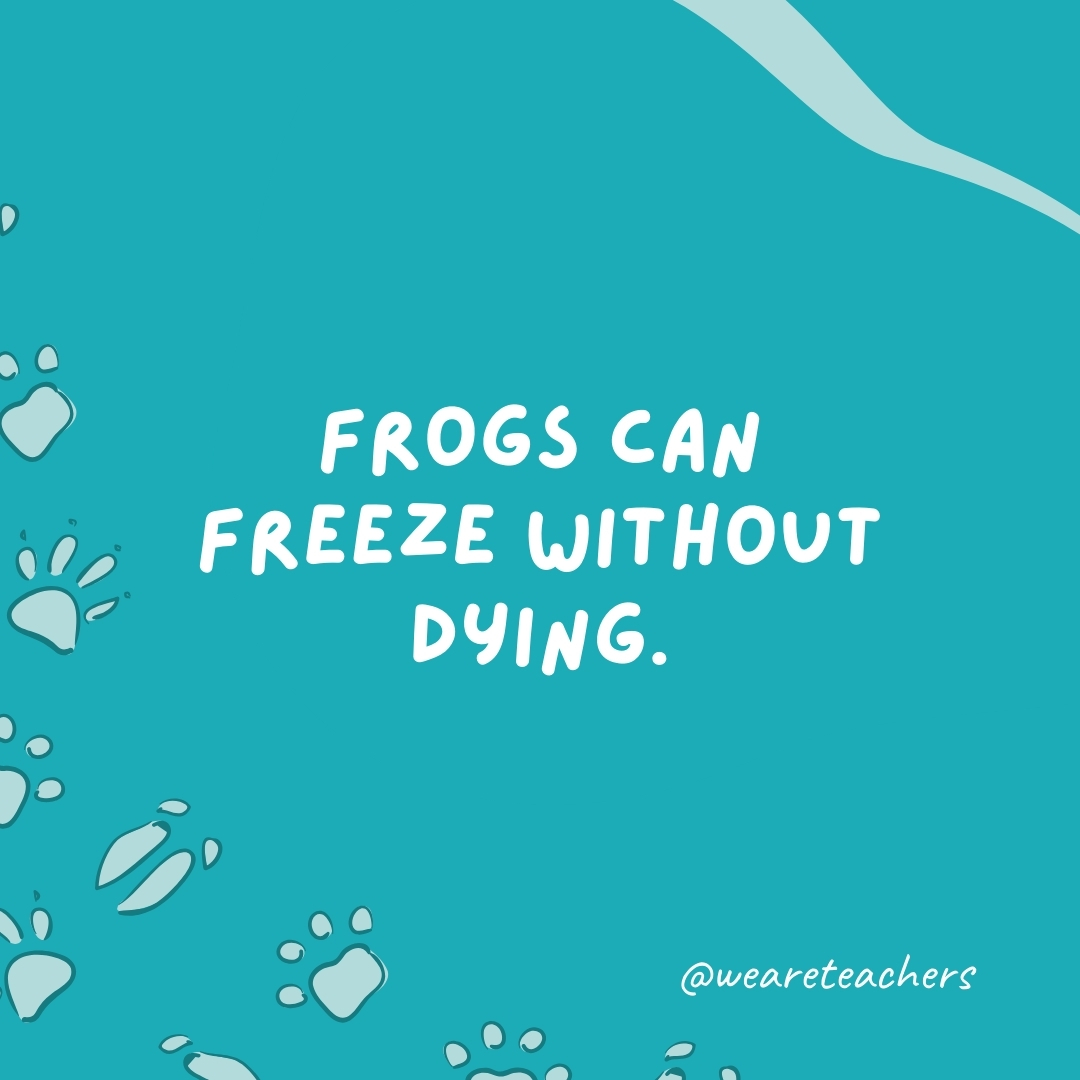
Frogs can turn into frogsicles in the winter and hop away just fine when they thaw out.
Goldfish can recognize faces.

Next time you peek into a goldfish bowl, remember they might just be looking back at you, recognizing who you are!
An octopus has nine brains—one central brain and eight in its arms.

With a brain in each arm, octopuses are super smart and can multitask like no other creature in the sea.
Cats have no collarbone and almost always land on their feet.
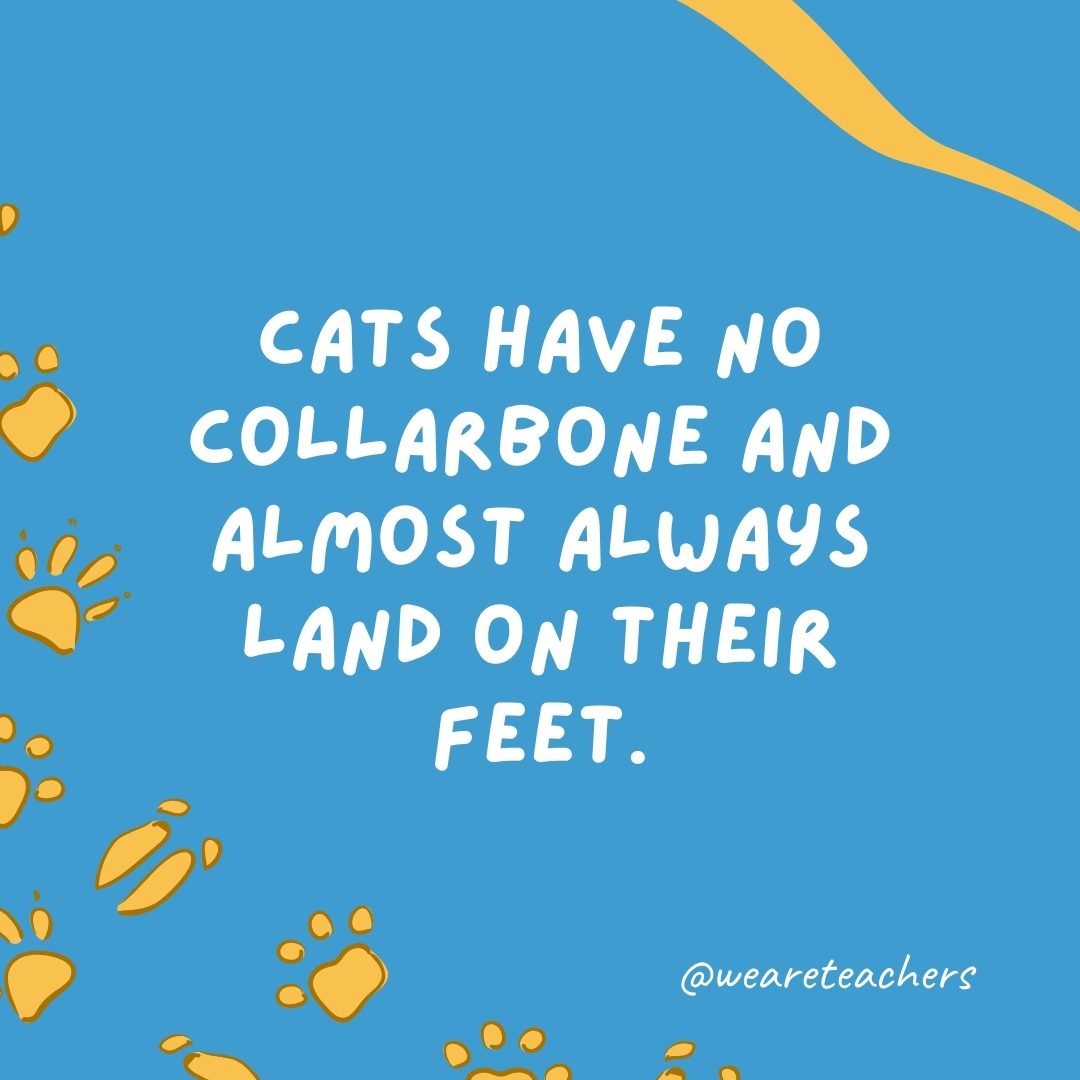
Along with their super agility, cats are the gymnasts of the pet world, always sticking the landing.
Sharks have been around longer than trees and dinosaurs.
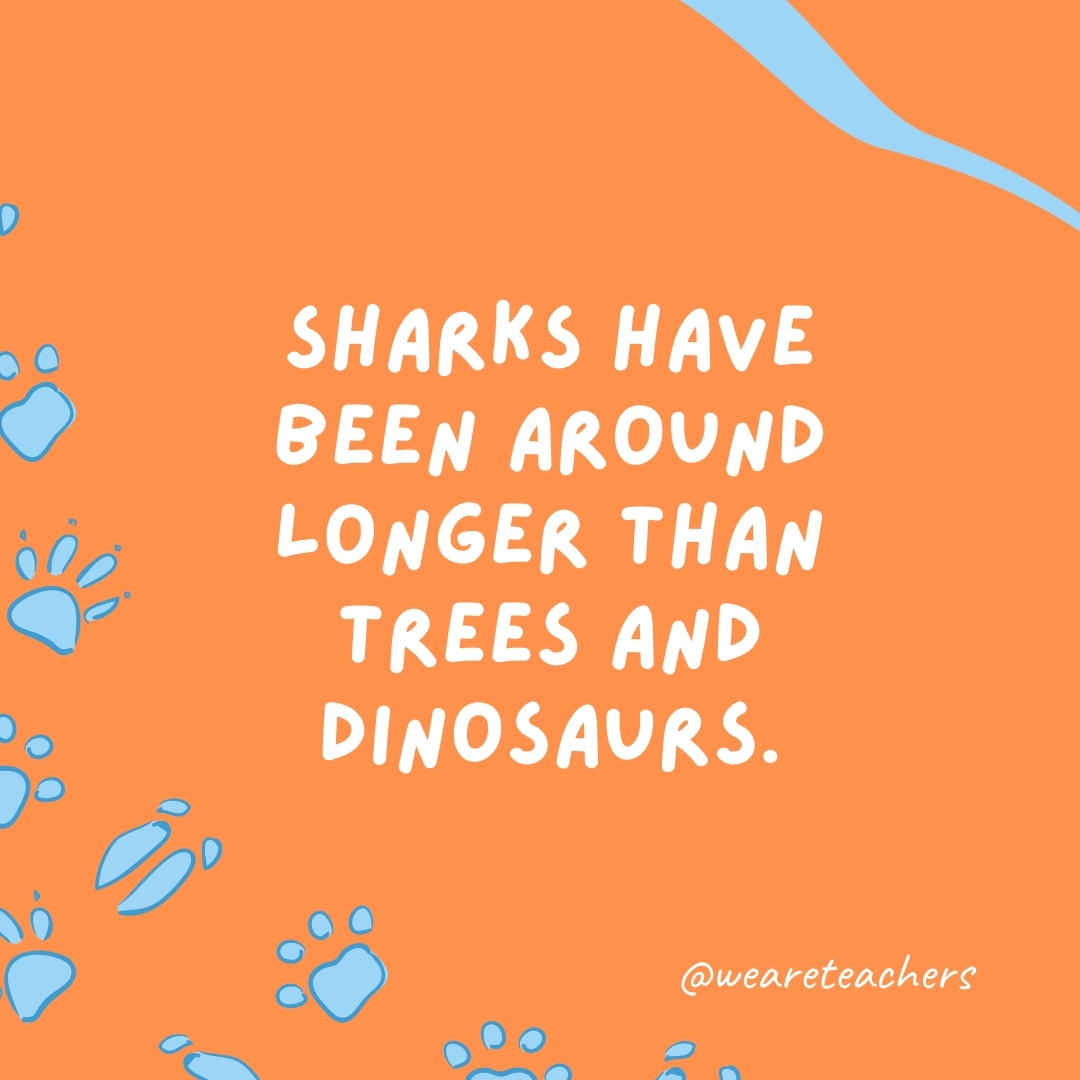
Sharks were swimming in the oceans even before the first trees grew on land, making them ancient oceanic overlords.
The male seahorse carries and gives birth to babies.

Male seahorses are the ones who carry and welcome tiny seahorses into the world, taking fatherhood to a whole new level!
A cow gives nearly 200,000 glasses of milk in its lifetime.
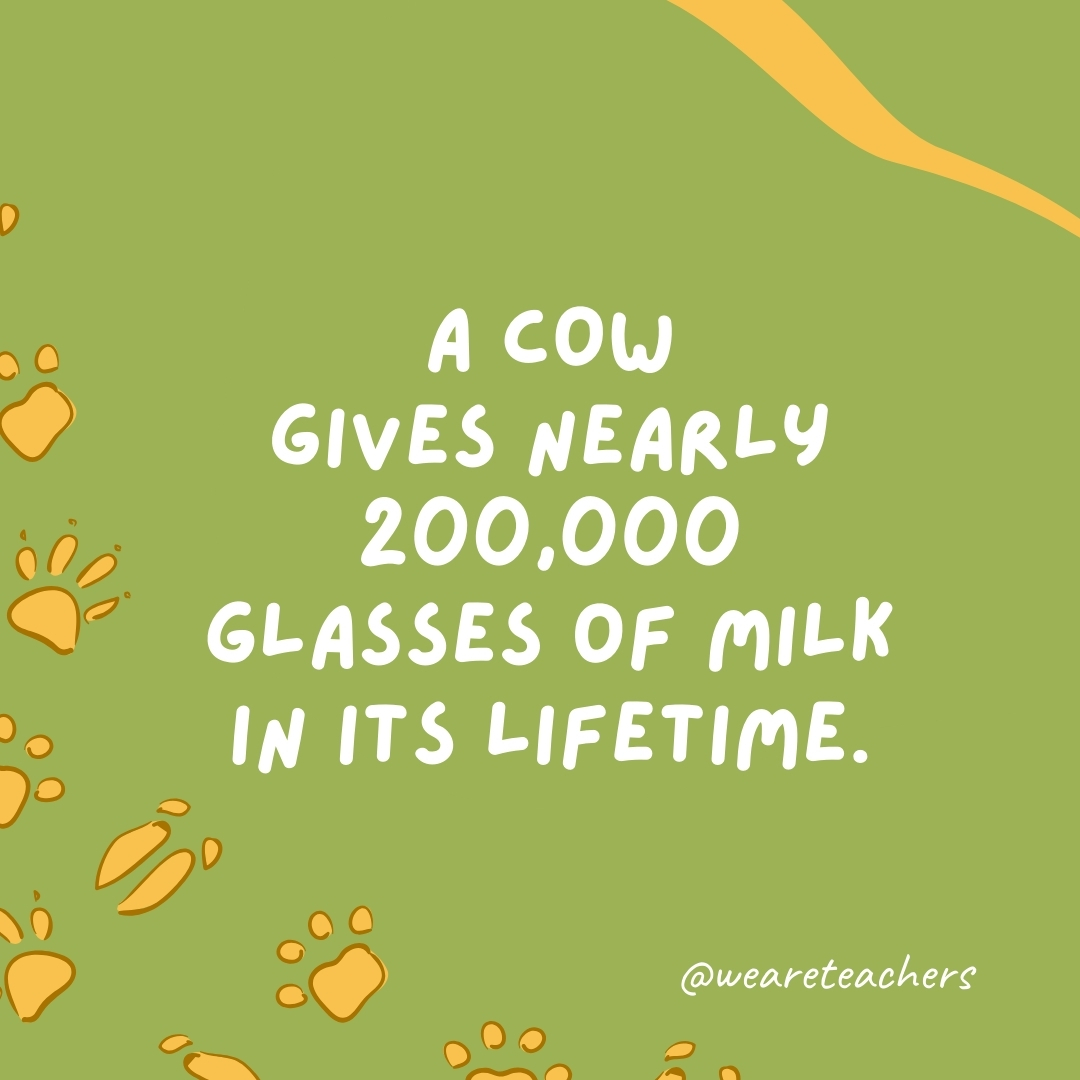
Cows are like the superheroes of the dairy world, producing enough milk to fill a small lake, one glass at a time, throughout their lives.
Ravens can mimic human speech and other sounds.
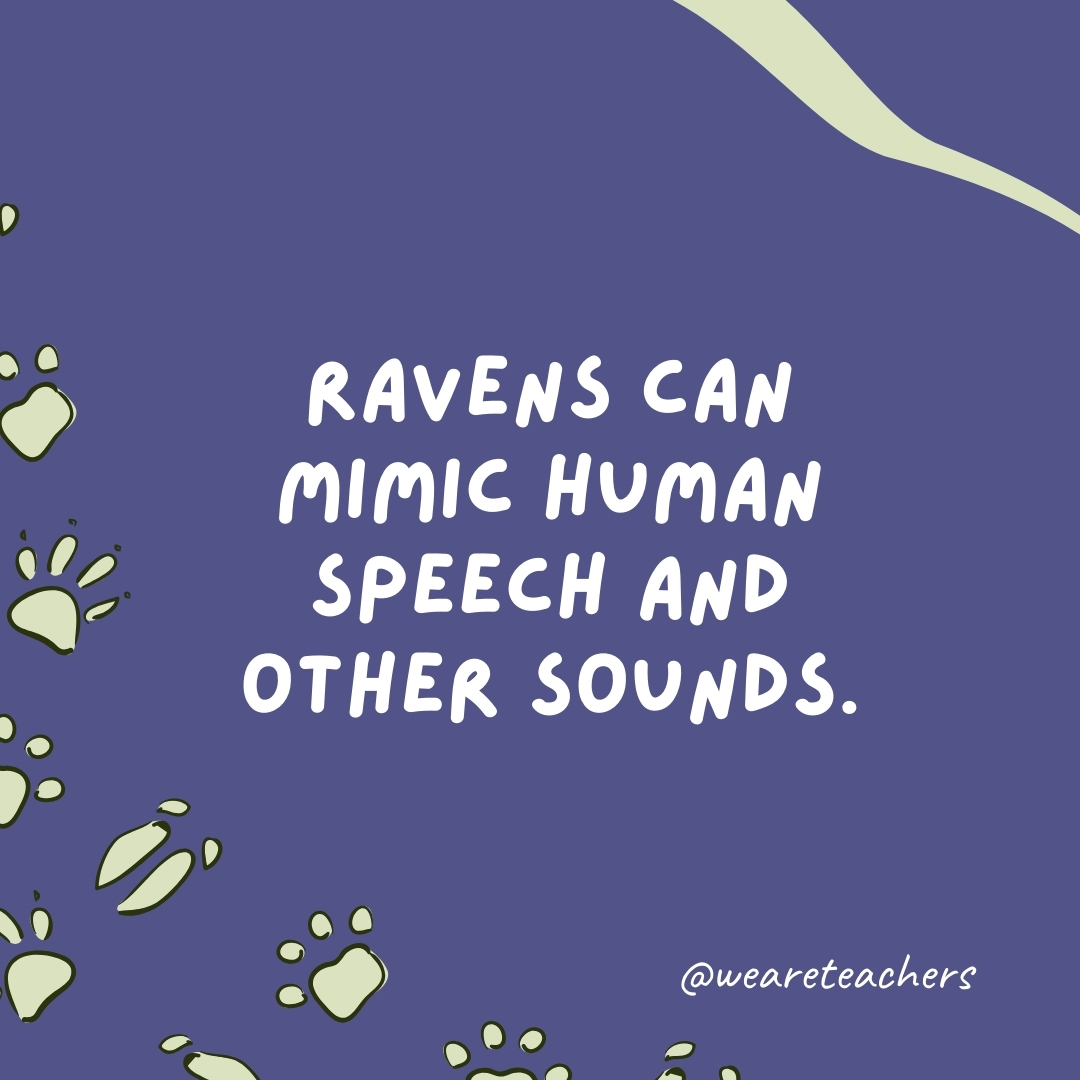
With a talent for mimicry, ravens are the master impersonators of the bird world.
There are no mosquitoes in Iceland.
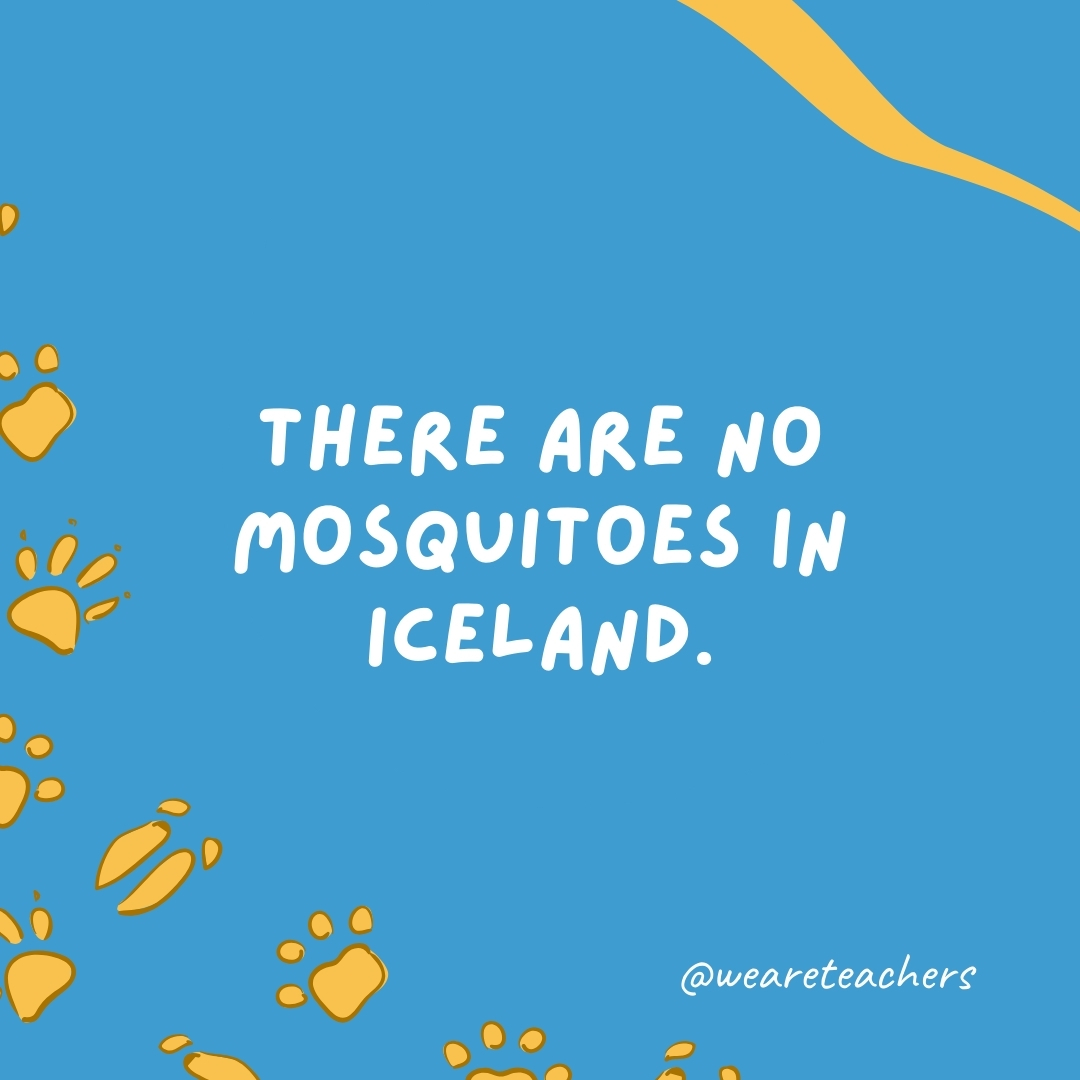
Iceland’s unusual weather patterns make it inhospitable for mosquitoes.
The smell of a skunk can be detected by a human a mile and a half away.

Skunks carry around their own natural defense system, a smell so strong you could detect it from more than a mile away—if the wind is in your favor.
An ant can lift 5,000 times its own weight.

Ants might just be the strongmen of the insect world, with the power to lift objects up to 5,000 times their own weight, no gym membership required.
Camels have three eyelids to protect themselves from blowing sand.
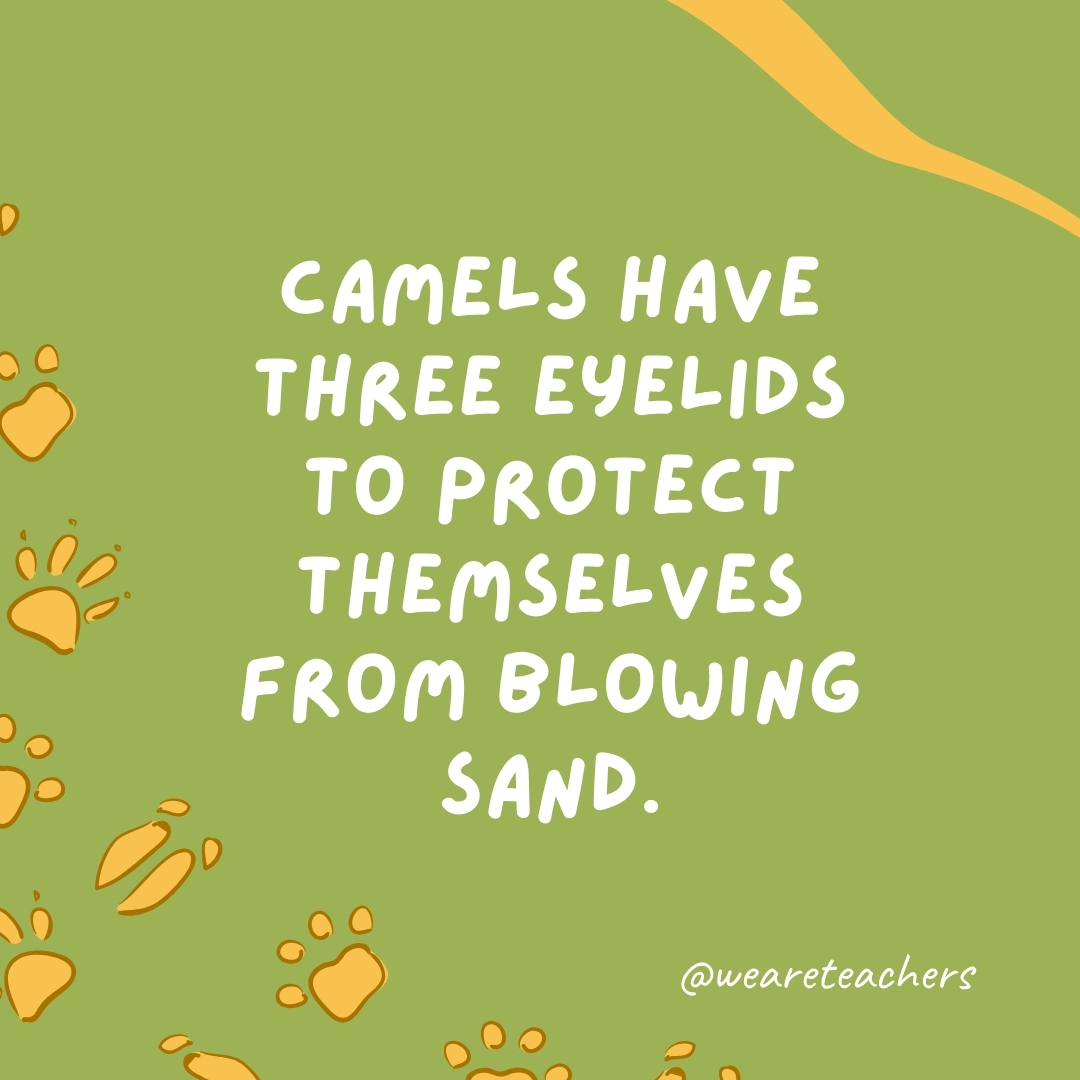
Two of the eyelids have lashes!
The lifespan of a housefly is only 15 to 25 days.

In some cases, though, they could be buzzing around for two months.
The only continent without native ants is Antarctica.

Antarctica is the ultimate ant-free zone, proving too cold for these exploratory insects to call home.
Researchers have struggled to understand how giraffes make sounds.
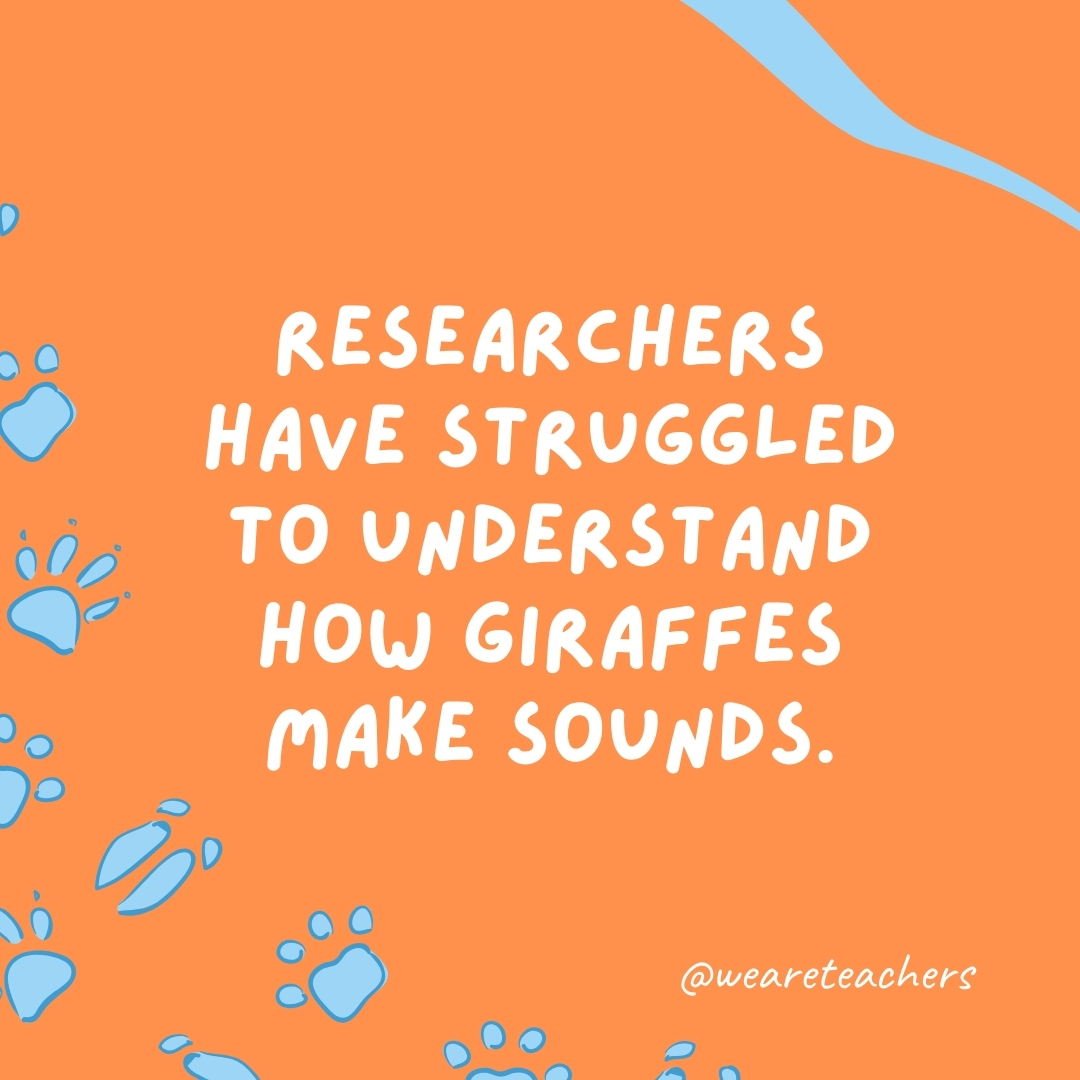
While studies have shown that giraffes do indeed have a larynx (or voice box), their narrow trachea and small lung capacity make it hard to vibrate their vocal cords.
The fingerprints of koalas are so similar to humans that they could taint crime scenes.
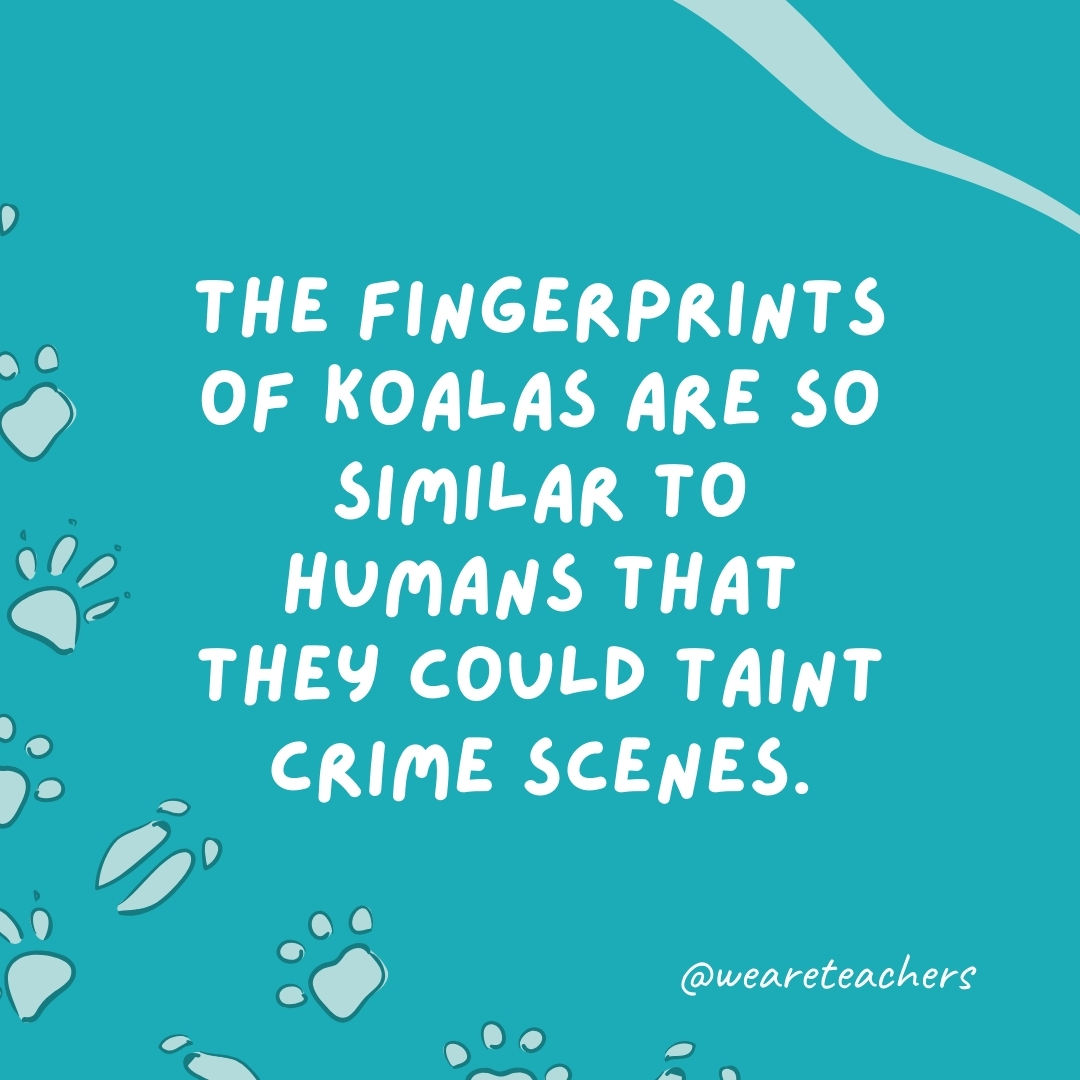
They could cause a lot of confusion if they weren’t so busy with eucalyptus leaves.
Peacocks make their colorful feathers rattle as a display and warning.

Peacocks aren’t just about the visual flair, they add a rattling soundtrack to their display, turning their feather show into a full sensory experience.
Owls don’t have eyeballs, they have eye tubes.
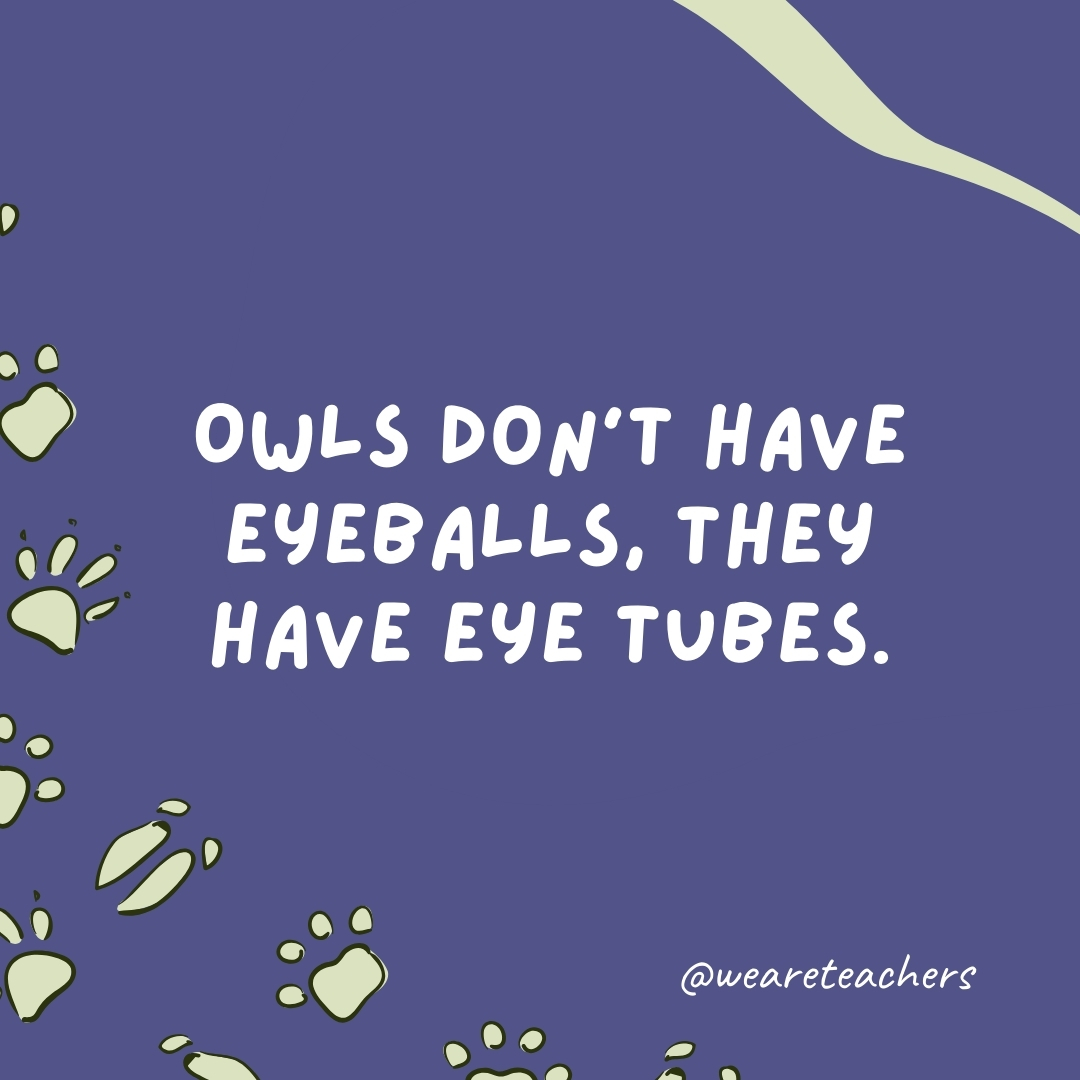
Owls take seeing to a whole new level with their tube-shaped eyes, giving them an extraordinary view of the night world, even if it means they can’t give you the side-eye.
The basenji is the only dog that can’t bark.

Quiet as a mouse, the basenji stands out in the canine world by keeping its barks to itself, thanks to a one-of-a-kind voice box.
A group of rhinos is called a crash.
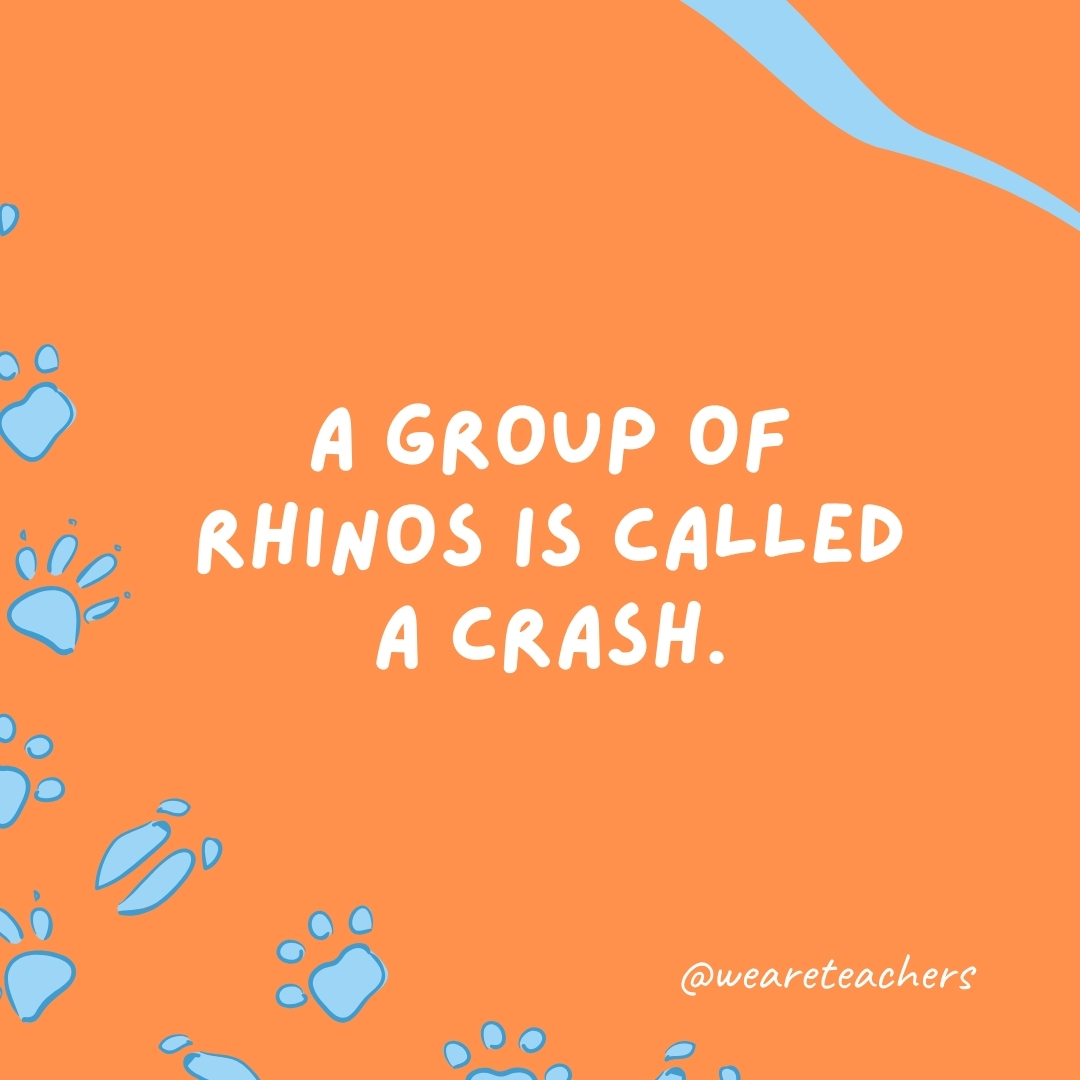
When rhinos hang out together, they form a crash, making it sound like the most epic meetup in the animal kingdom.
Dolphins sleep with one eye open.

To keep themselves safe and sound, dolphins sleep with one eye open, always ready to spot friends or fend off foes even in their dreams.
Saluki dogs are the world’s oldest known breed of domesticated dog.

They date back to 329 B.C. and were revered in Ancient Egypt!
The male platypus has venomous spurs on its hind feet.
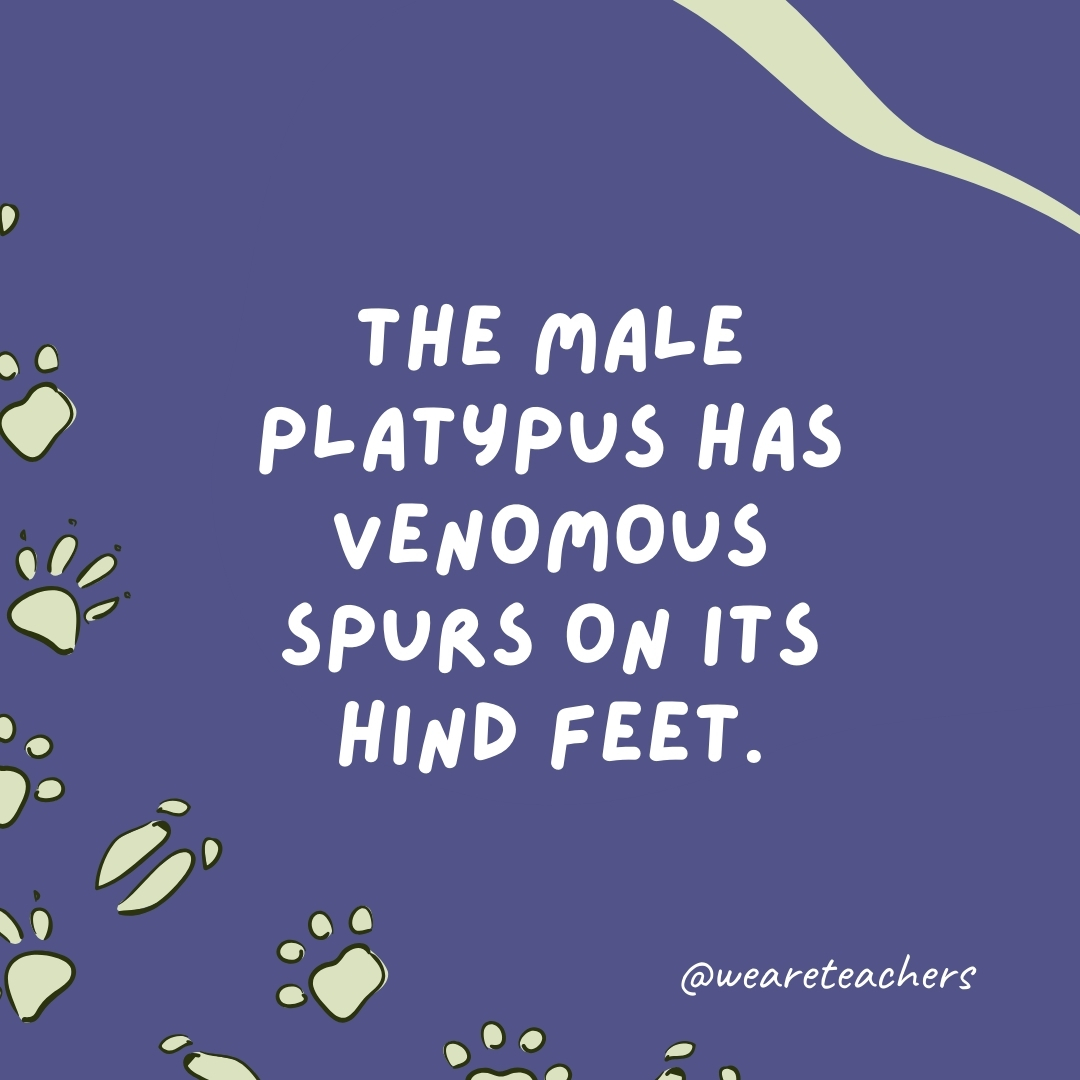
Adding to their list of unique features, male platypuses come equipped with venomous spurs, making them one of the animal kingdom’s most intriguing creatures.
A cat has 32 muscles in each ear.

Cats have the remarkable ability to move their ears in any direction, thanks to the 32 muscles in each ear, making them highly attentive listeners.
An elephant can smell water up to 12 miles away.
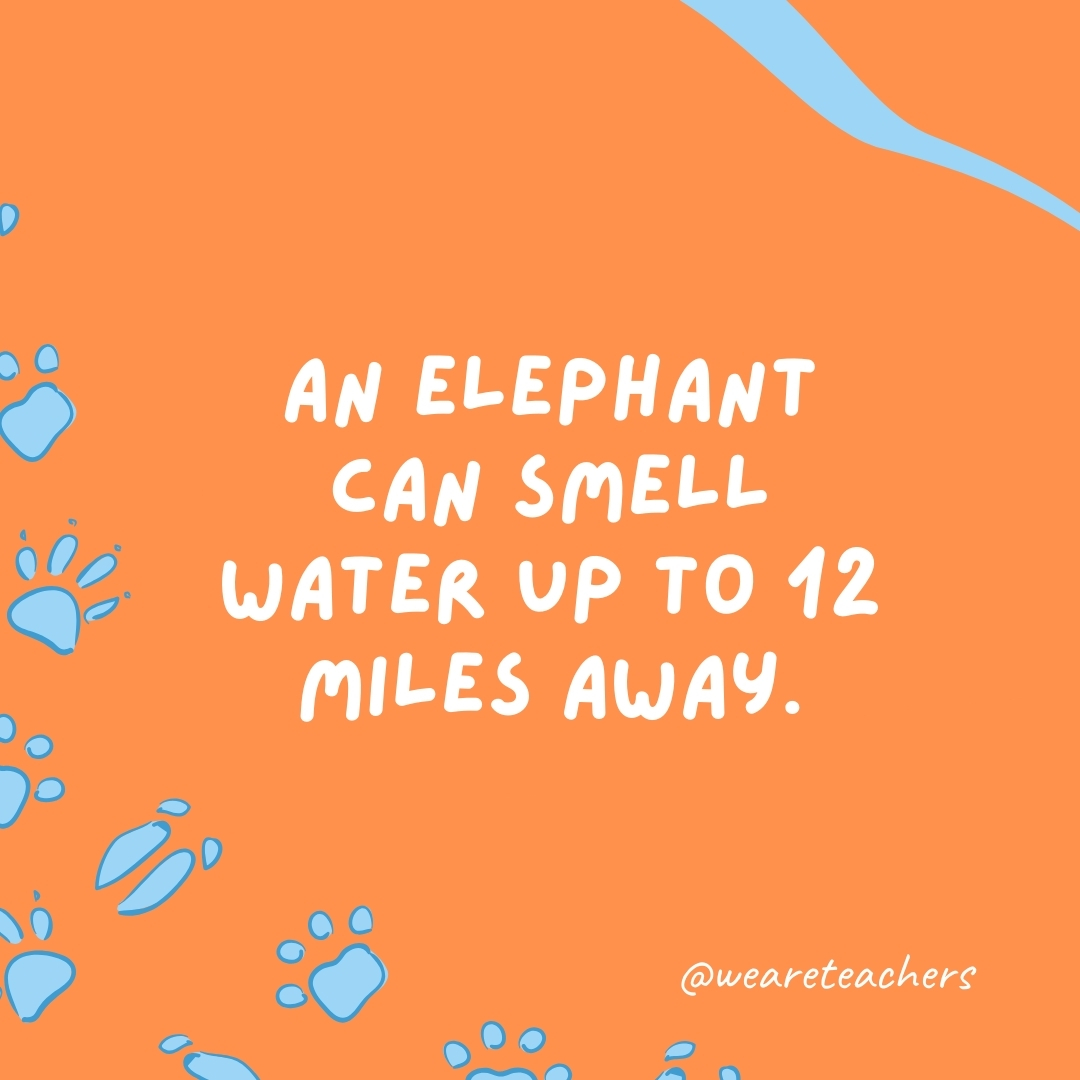
Their powerful trunks act like natural divining rods in the search for hydration.
The world’s deadliest animal is not a shark, bear, or tiger—it’s the mosquito.

Despite its tiny size, the mosquito tops the charts as the deadliest animal, responsible for more human deaths than any other creature on the planet.
A butterfly has a lifespan of only about two weeks.
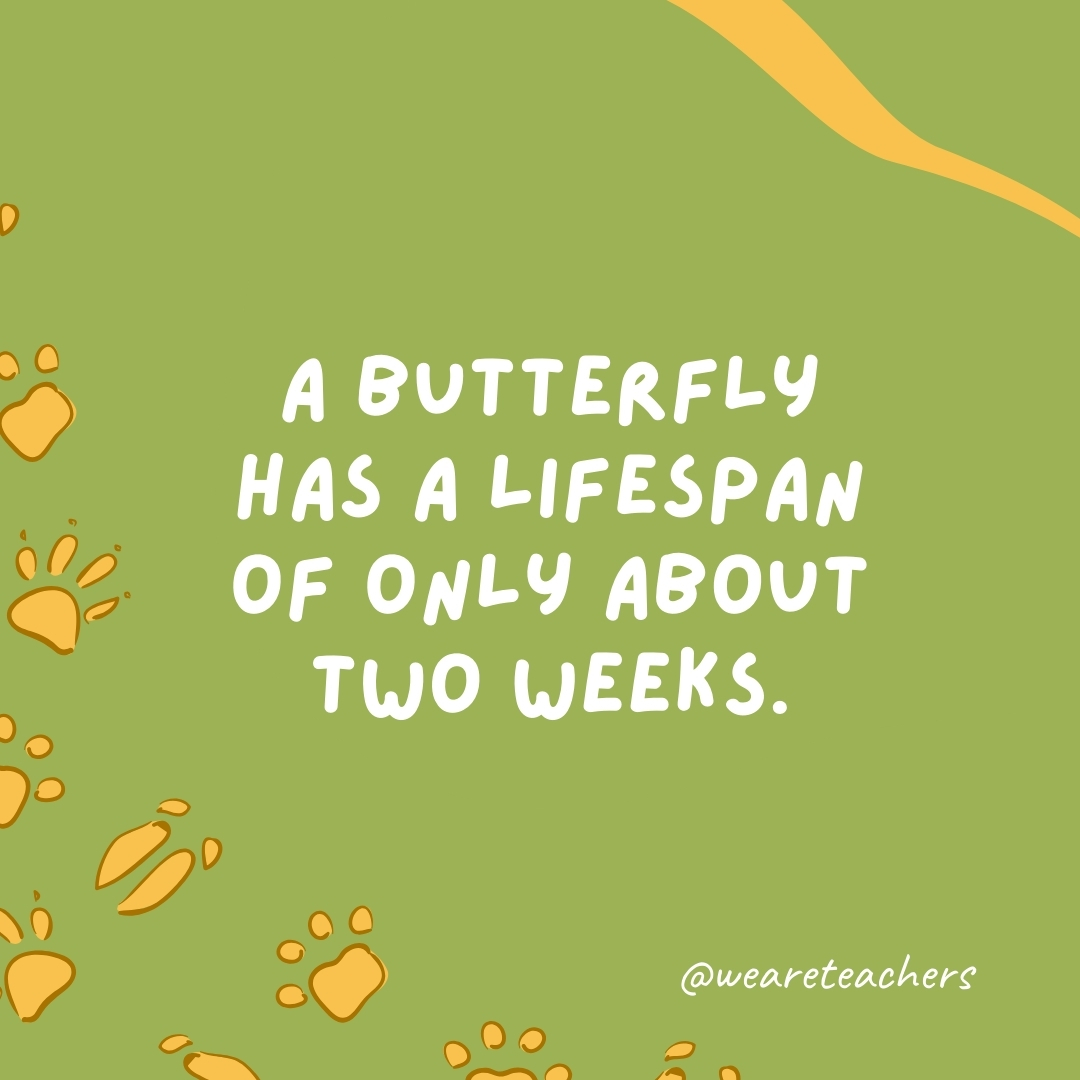
Butterflies grace us with their beauty for a brief two weeks to four weeks, but the longest-lived can survive for nine months.
The world’s smallest dog breed is the Chihuahua.

A little Chihuahua named Pearl is the shortest dog alive!
The blue whale eats half a million calories in one mouthful.

No wonder it’s the world’s largest mammal!
Bees can recognize human faces.

Bees have the incredible ability to remember human faces, showing that these busy pollinators are also keen observers.
A crocodile cannot stick out its tongue.

Unlike alligators, crocodiles can’t move their tongues due to a membrane that keeps it in place.
The heart of a shrimp is located in its head.

Shrimps wear their hearts on their… heads, making them one of the most headstrong creatures in the sea.
A group of kangaroos is called a mob.

It can also be called a troop or a court.
A flea can jump 40 to 100 times its body length.

Fleas are the Olympic long jumpers of the animal kingdom, leaping distances you’d have to see to believe.
A group of tigers is known as a streak or an ambush.
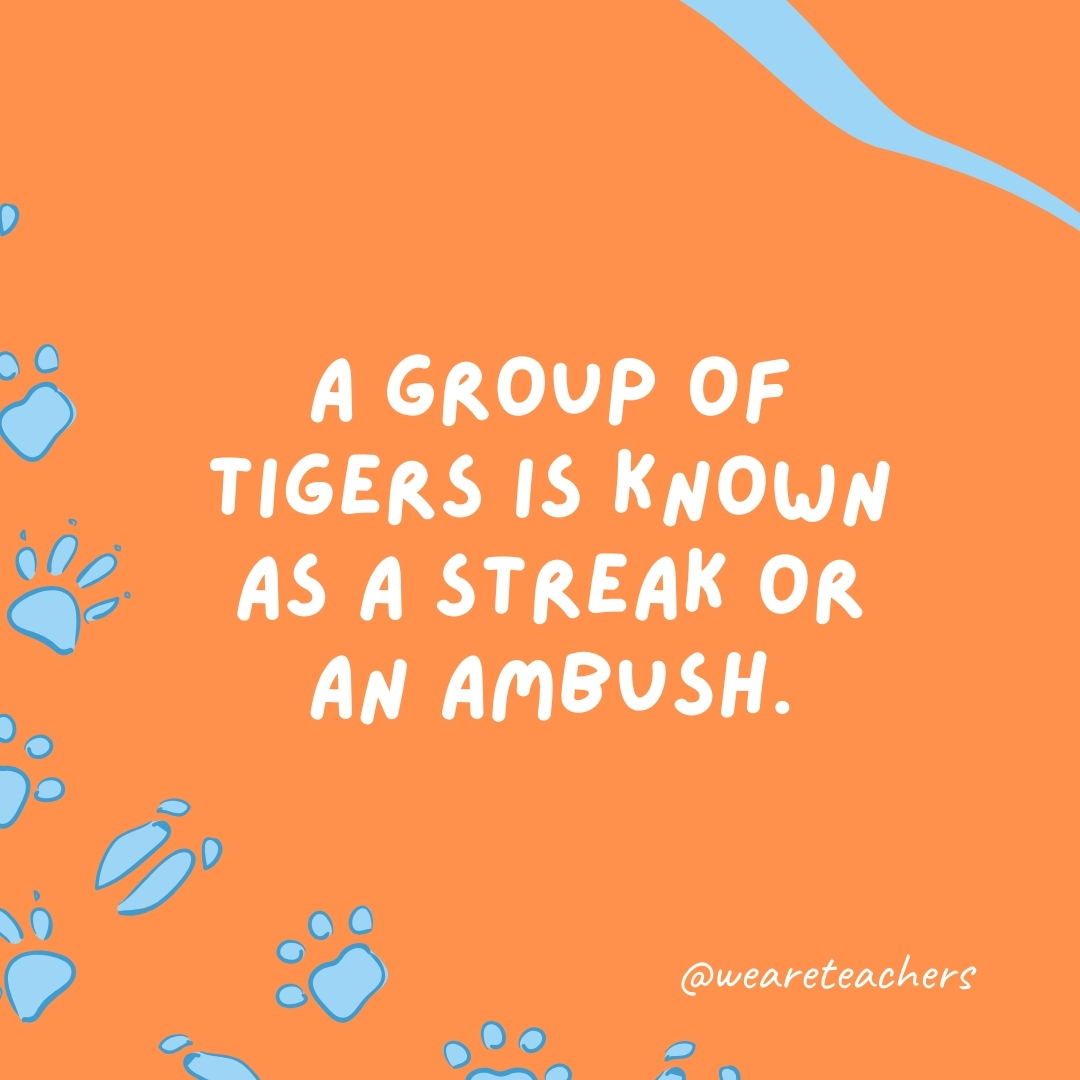
A streak refers to a female tiger and her cubs, and an ambush is a group of adults who come together to hunt or share resources.
The average chicken can live for 5 to 10 years.
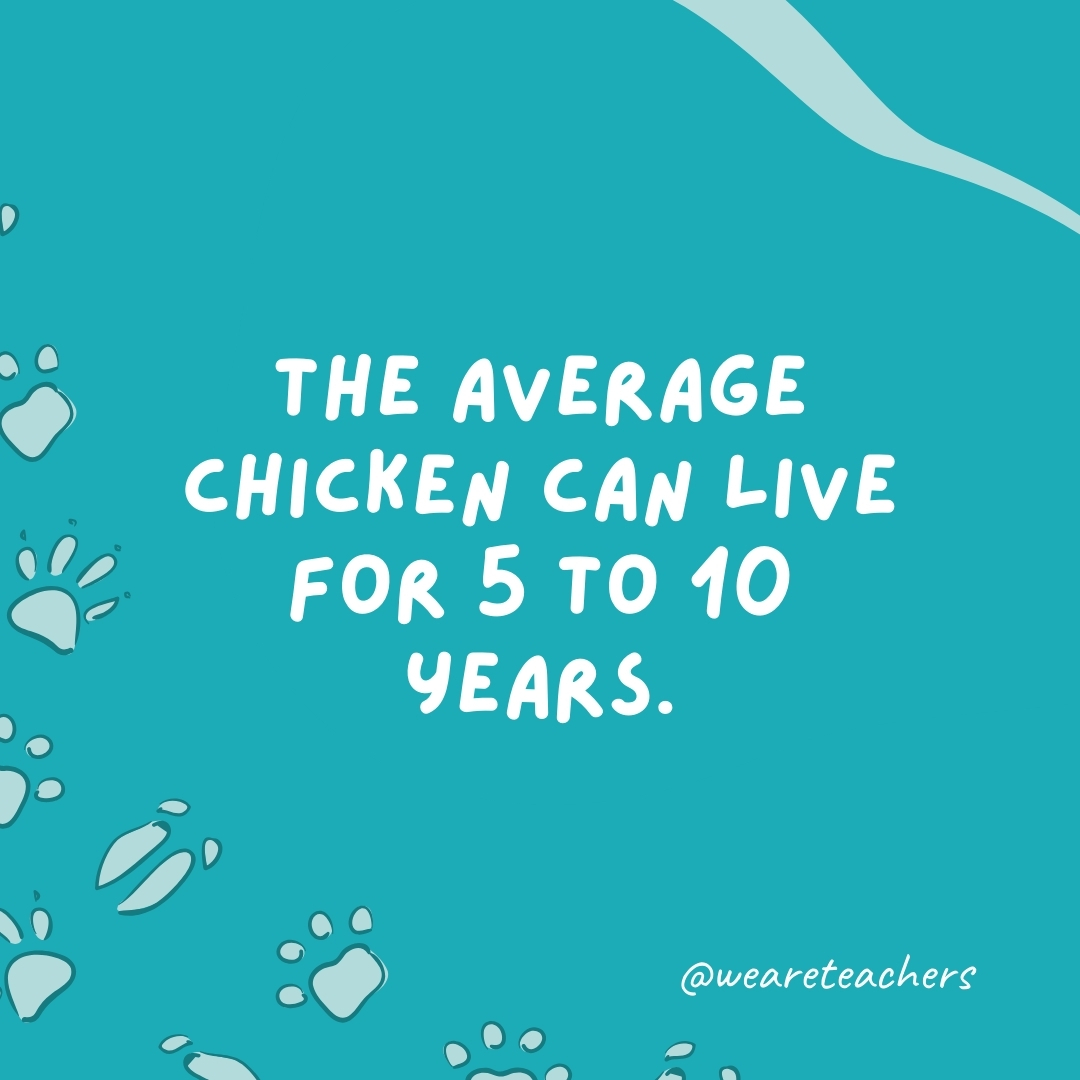
Chickens are not just farmyard animals, they can be feathery friends with personalities, living much longer than many people think.
Elephants can’t jump.
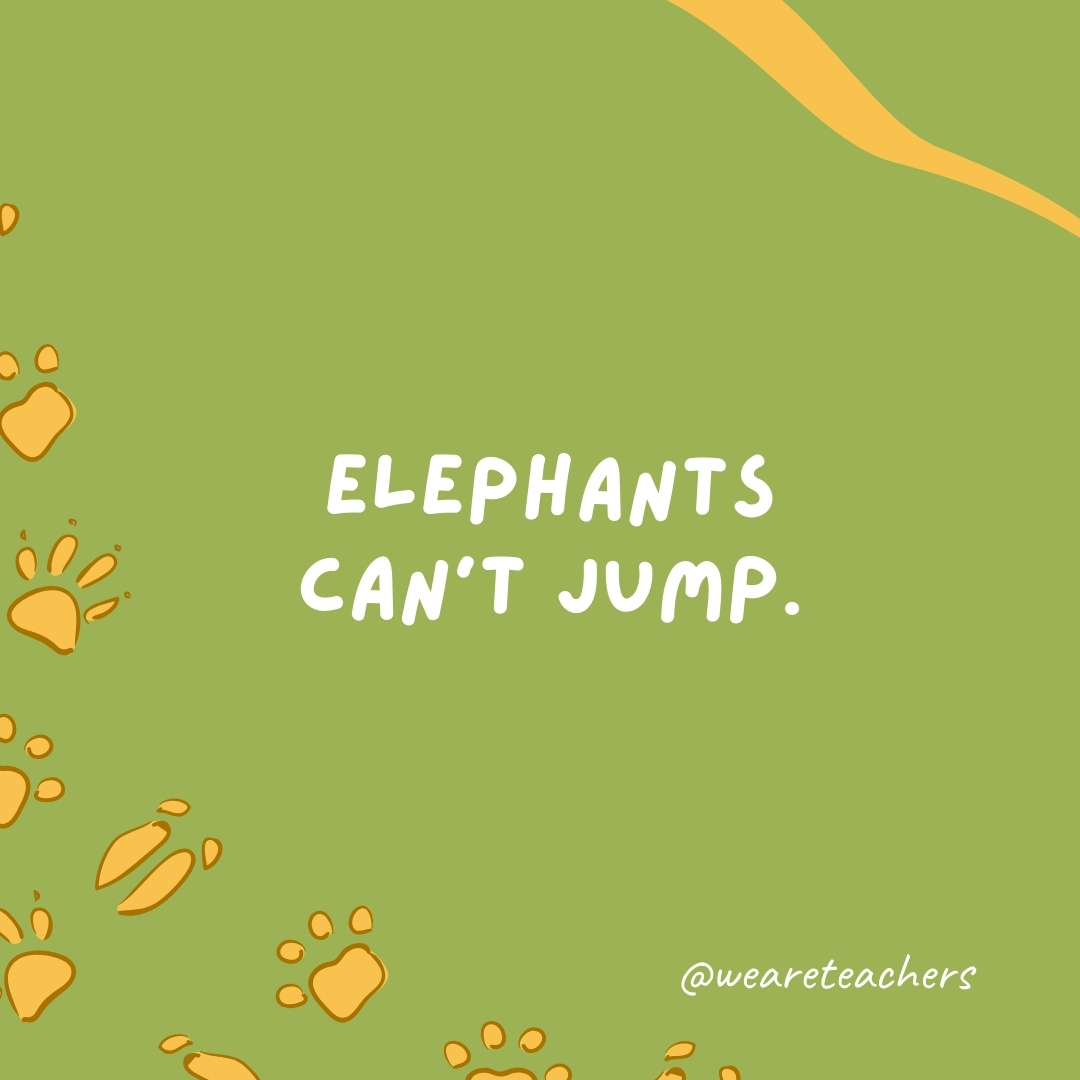
With their massive size and weight, elephants stay grounded.
The average lifespan of a squirrel is 5 to 10 years.
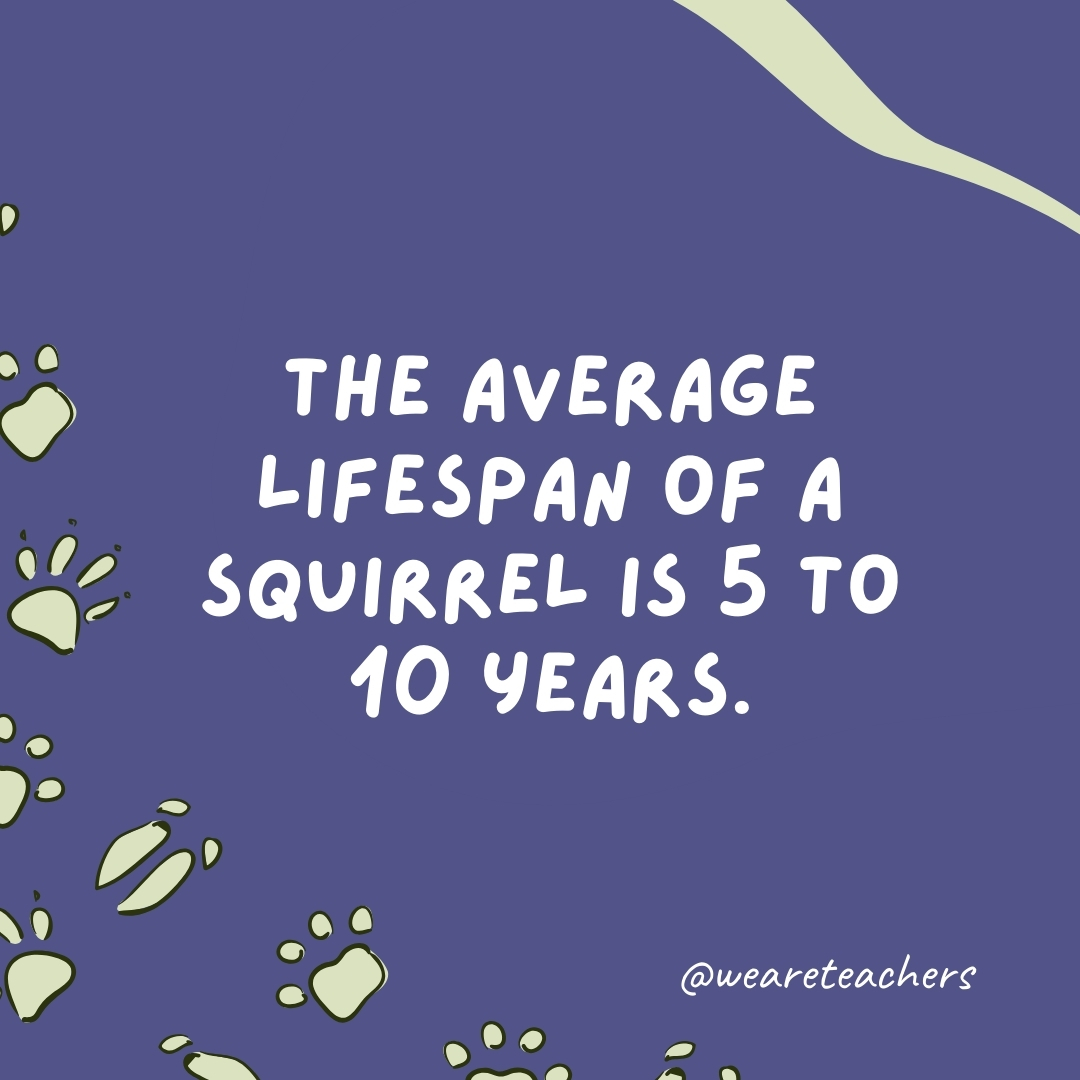
Squirrels, with their bushy tails and acrobatic antics, can enjoy a surprisingly long life scampering through the trees.
Giraffes can clean their ears with their 21-inch tongues.

Not only are giraffes the tallest animals on land, but they also have incredibly long tongues, perfect for personal grooming.
Horses and cows can nap standing up.
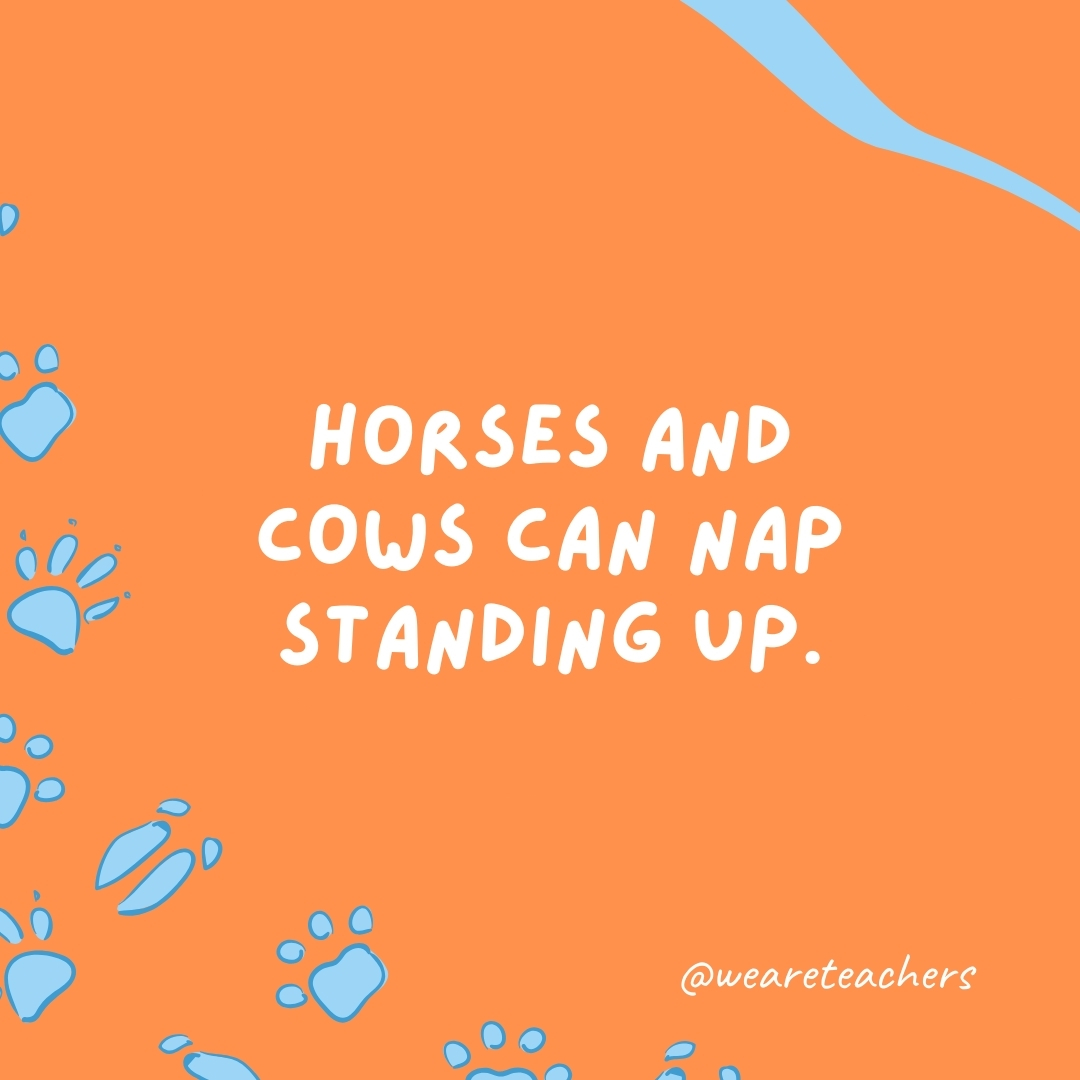
Thanks to a special locking mechanism in their legs, horses and cows can catch their zzz’s without ever lying down.
Goats have rectangular pupils.
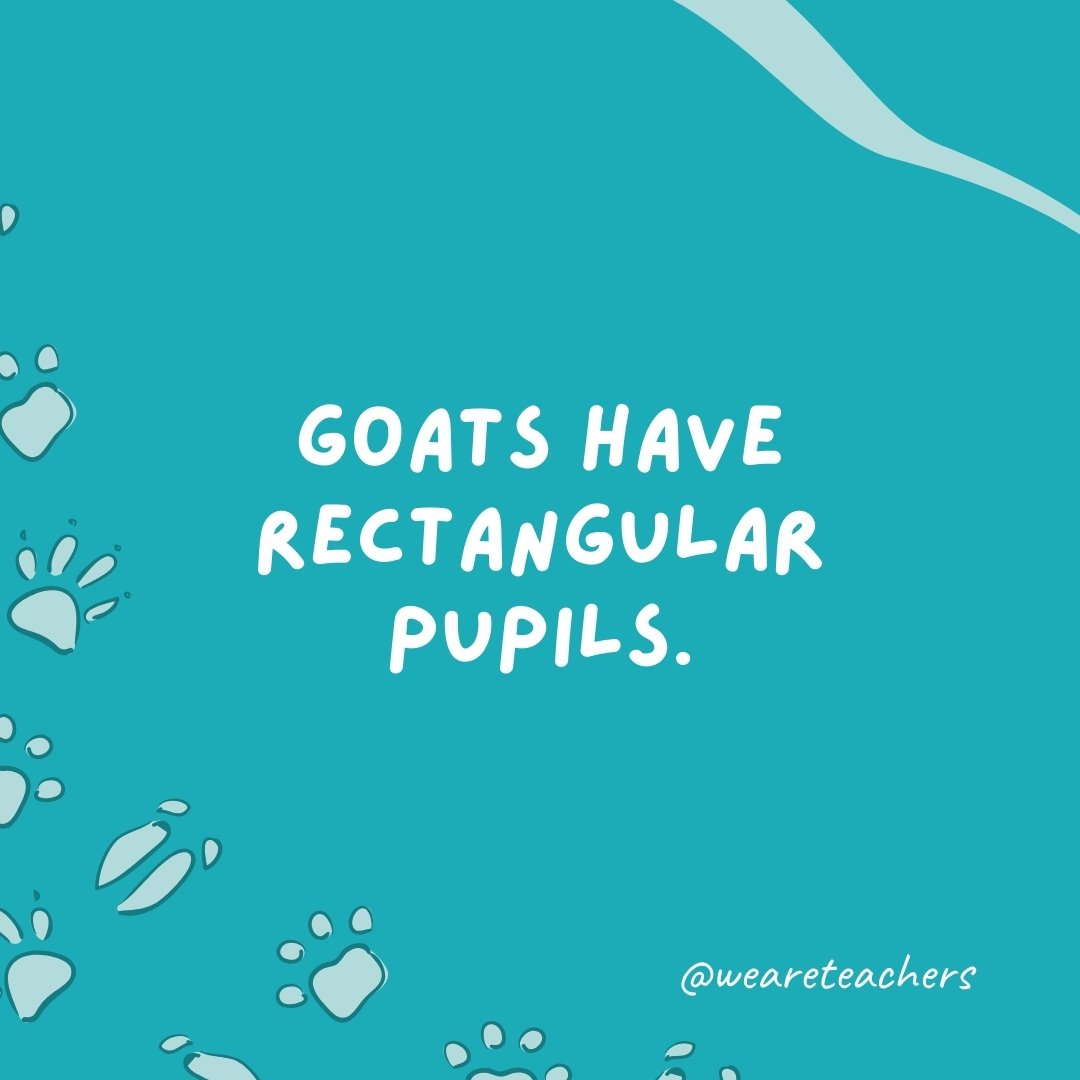
This unique eye shape gives goats a wide field of vision, helping them spot predators from various angles.
The turkey is one of the most famous birds in North America.

Celebrated in culture and cuisine, the turkey is an iconic symbol of American wildlife and tradition.
A group of owls is called a parliament.
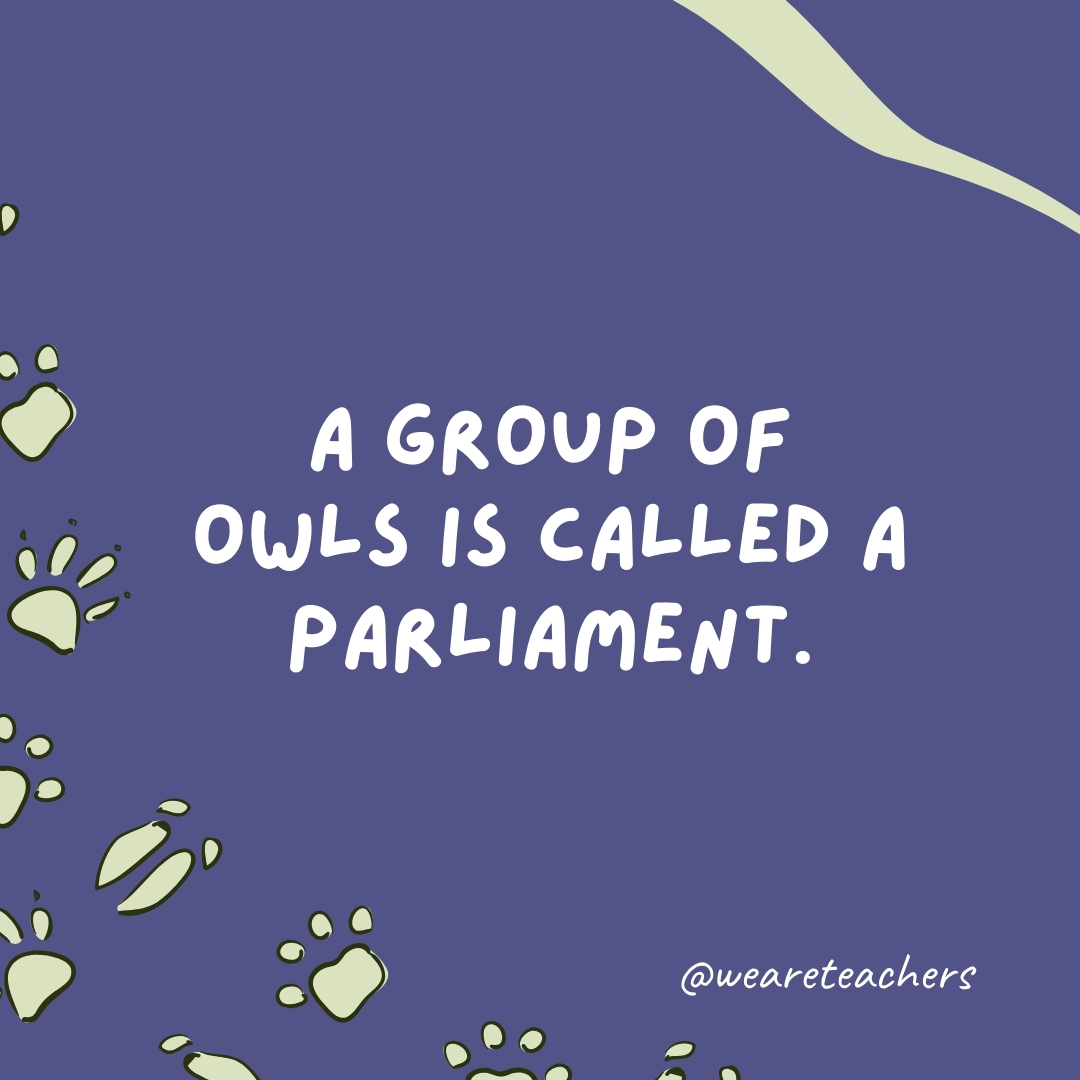
This dignified term reflects the wise and solemn appearance of owls, creatures often associated with wisdom in folklore.
Frogs absorb water through their skin, so they don’t need to drink.

Frogs’ skin acts like a sponge, allowing them to soak up moisture directly from their environment.
The male emperor penguin incubates the eggs while the female hunts.

In the harsh Antarctic winter, emperor penguin dads keep their eggs warm in a remarkable display of parental care.
A cat’s jaw cannot move sideways.

Cats have a specialized jaw structure that allows for powerful vertical bites but not side-to-side chewing motion.
The color red doesn’t really make bulls angry during bullfights—they are color-blind.
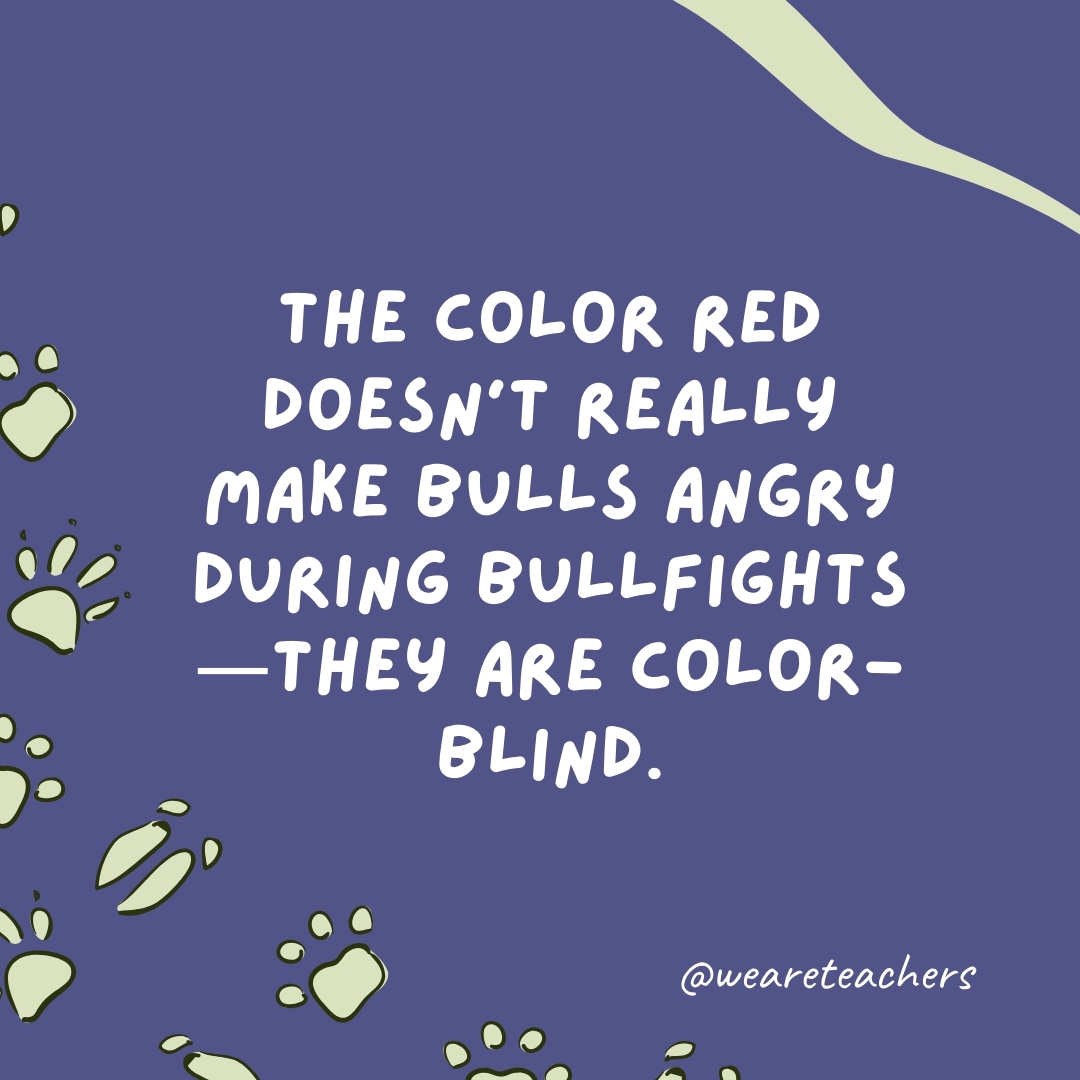
Bulls react to the movement of the matador’s cape, not its color, debunking the myth that red incites their anger.
The average speed of a housefly is 5 miles per hour.
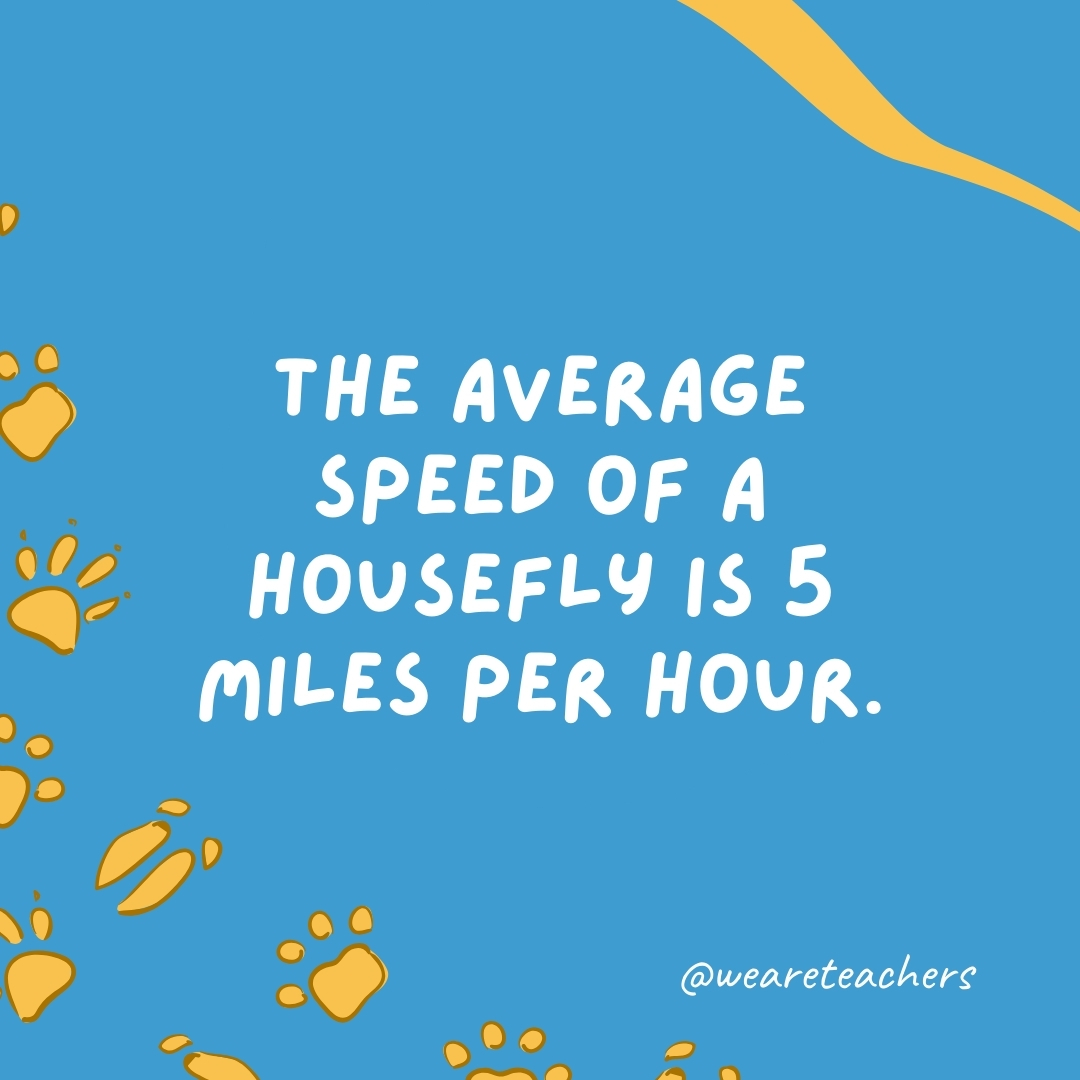
When they feel threatened, they’re capable of bursts of speed up to 15 miles an hour. No wonder they’re so hard to catch!
Some species of birds can fly for weeks without stopping.

In fact, the common swift can continue flying for 10 straight months!
The world’s largest rodent is the capybara.
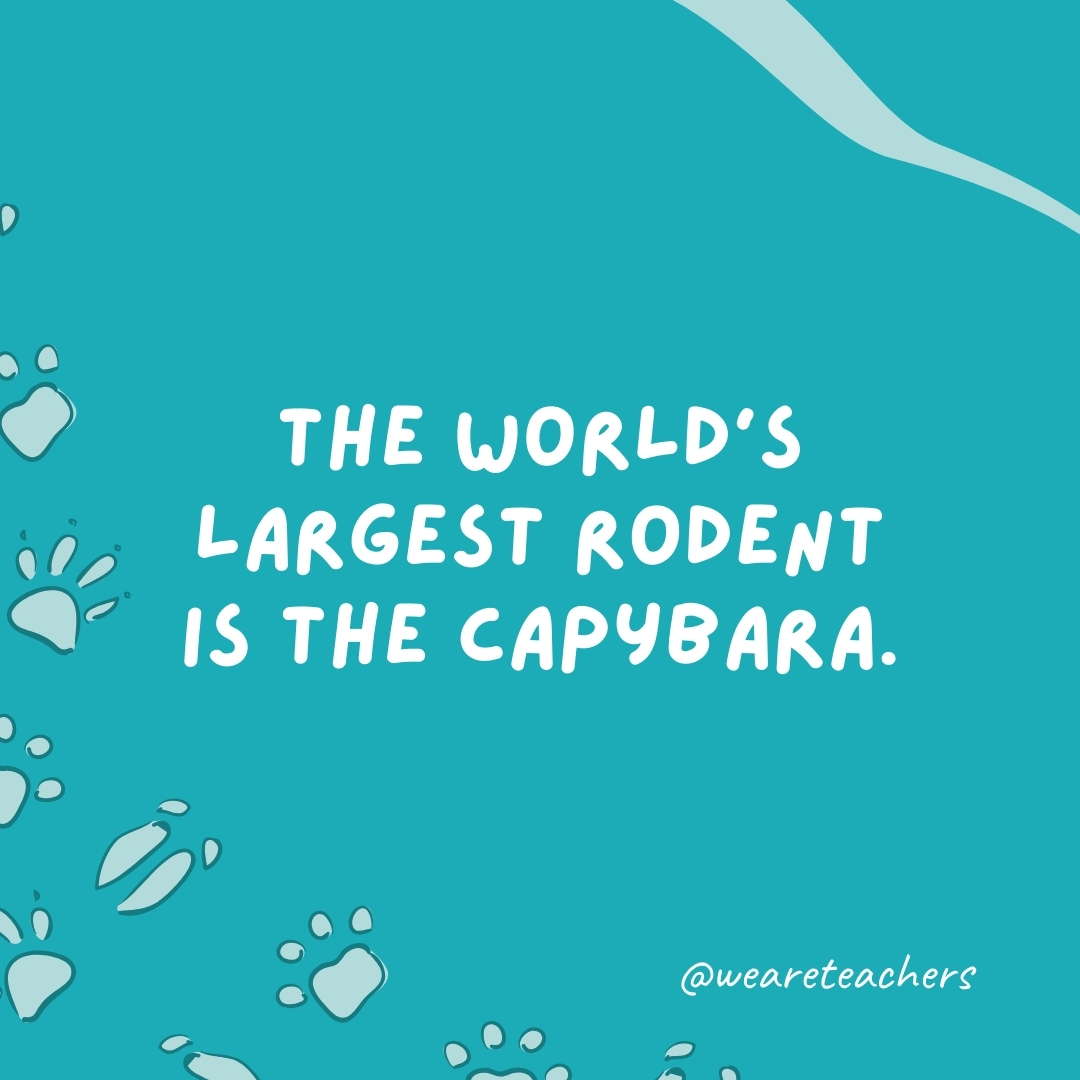
Native to South America, the capybara is a gentle giant, living in groups along water bodies.
An adult bear can run up to 40 miles per hour.

Bears might look slow and cumbersome, but they can sprint with surprising speed when necessary.
A group of jellyfish is not a school but a bloom or a swarm.
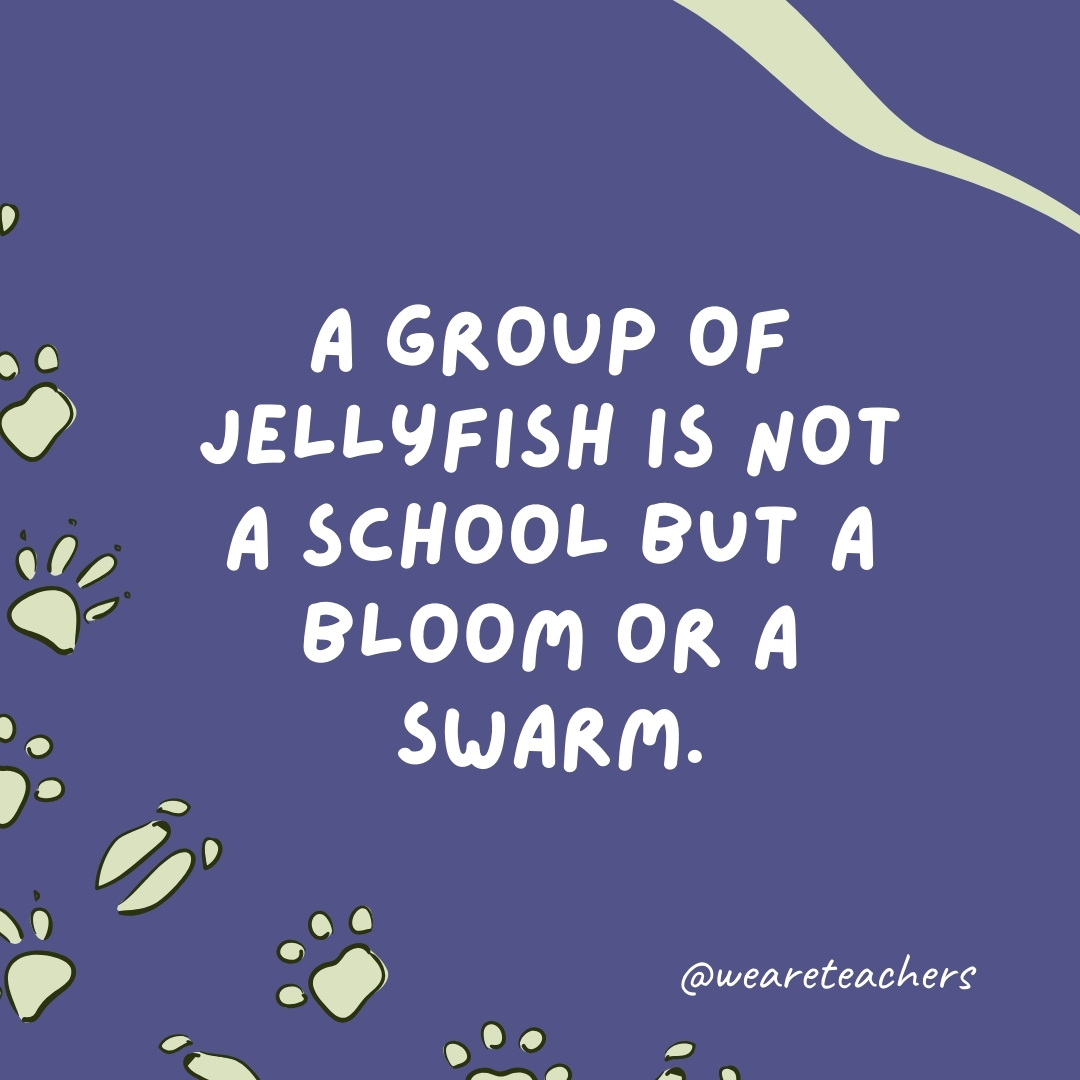
These mesmerizing marine creatures drift together in large, sometimes luminous groups known as blooms.
Whales can communicate with each other over thousands of miles underwater.
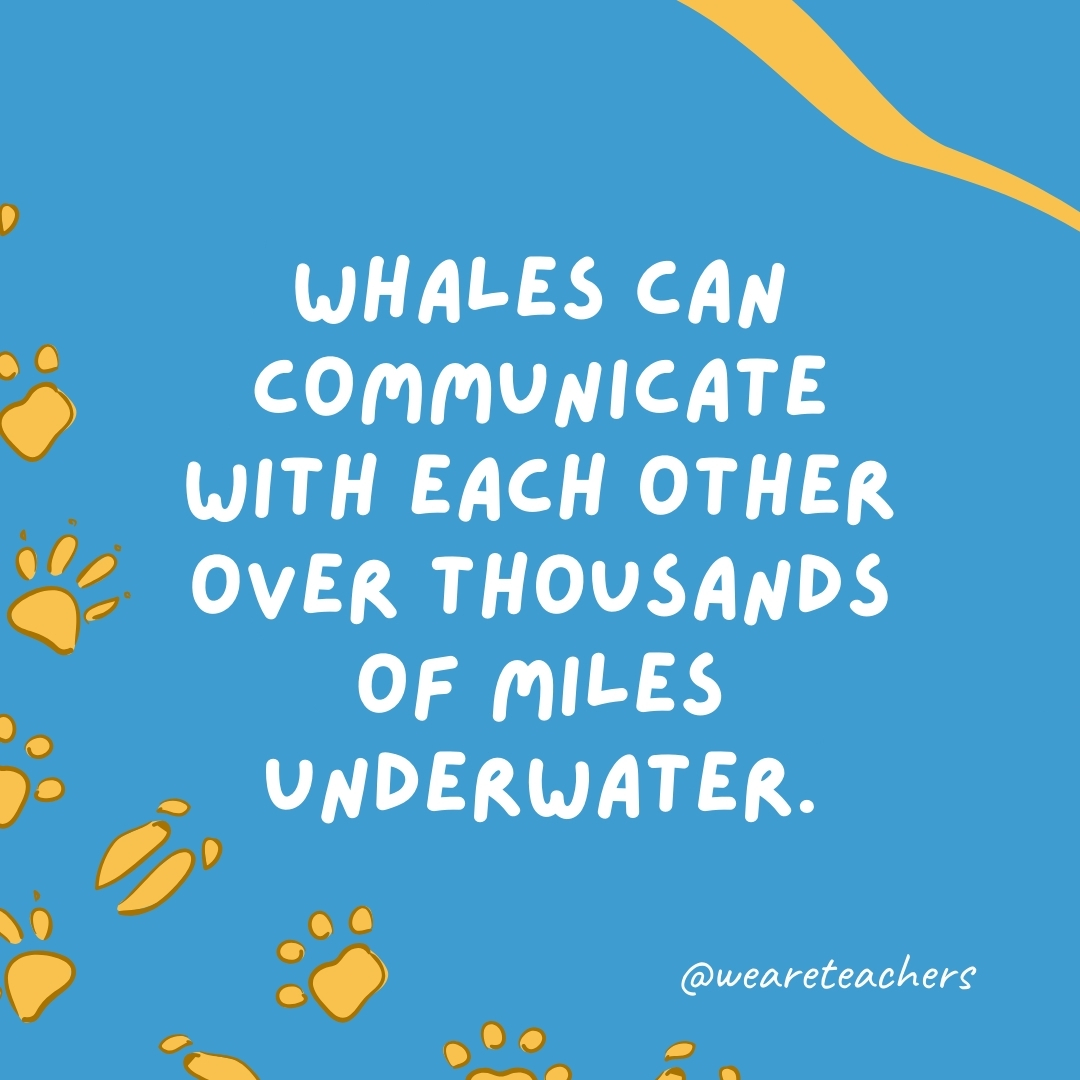
Through their complex songs and calls, whales can “talk” to each other across the vast expanses of the ocean.
The world’s smallest fish is the Paedocypris, measuring just 7.9 mm in length.

This tiny freshwater fish from Indonesia is a marvel of miniaturization, barely visible to the naked eye.
A lion’s roar can be heard from 5 miles away.
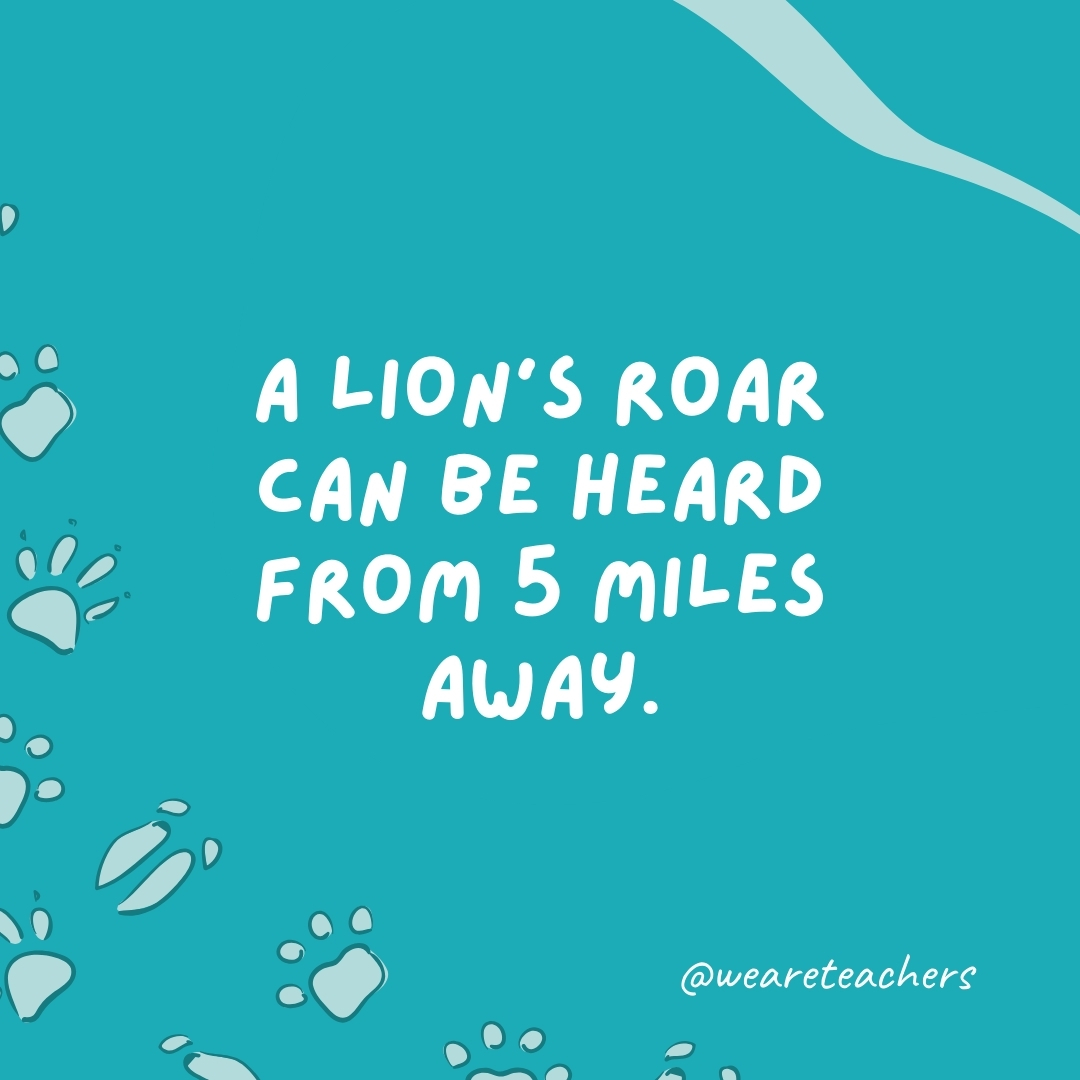
The powerful roar of a lion, used to communicate and assert territory, can echo far and wide across the savanna.
The eyes of a chameleon can move independently and look in two different directions at the same time.

This gives chameleons a panoramic view of their surroundings, making them expert hunters.
The average lifespan of a dragonfly is just six months.
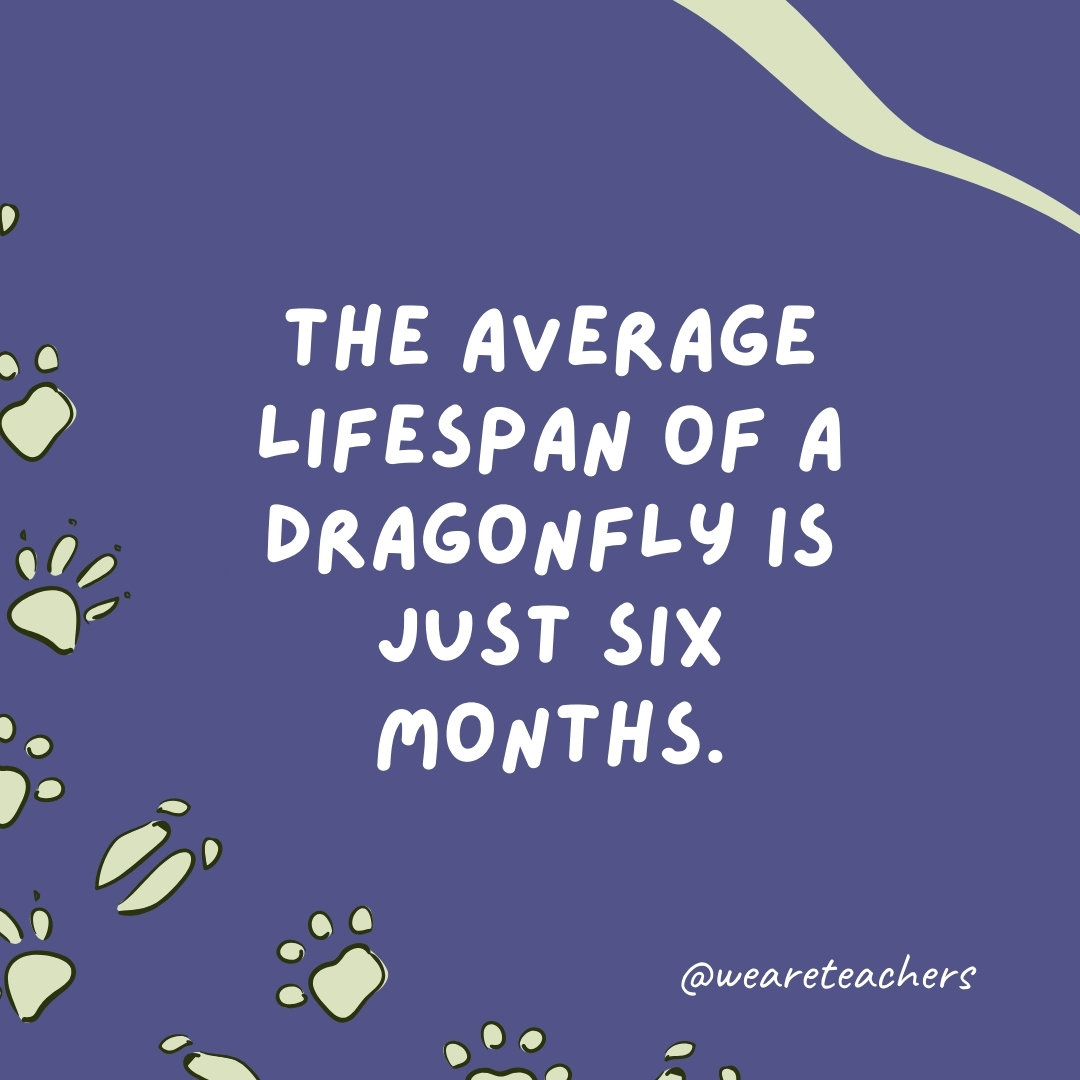
Despite their brief life, dragonflies are agile flyers and important predators of mosquitoes and other small insects.
A group of frogs is called an army.
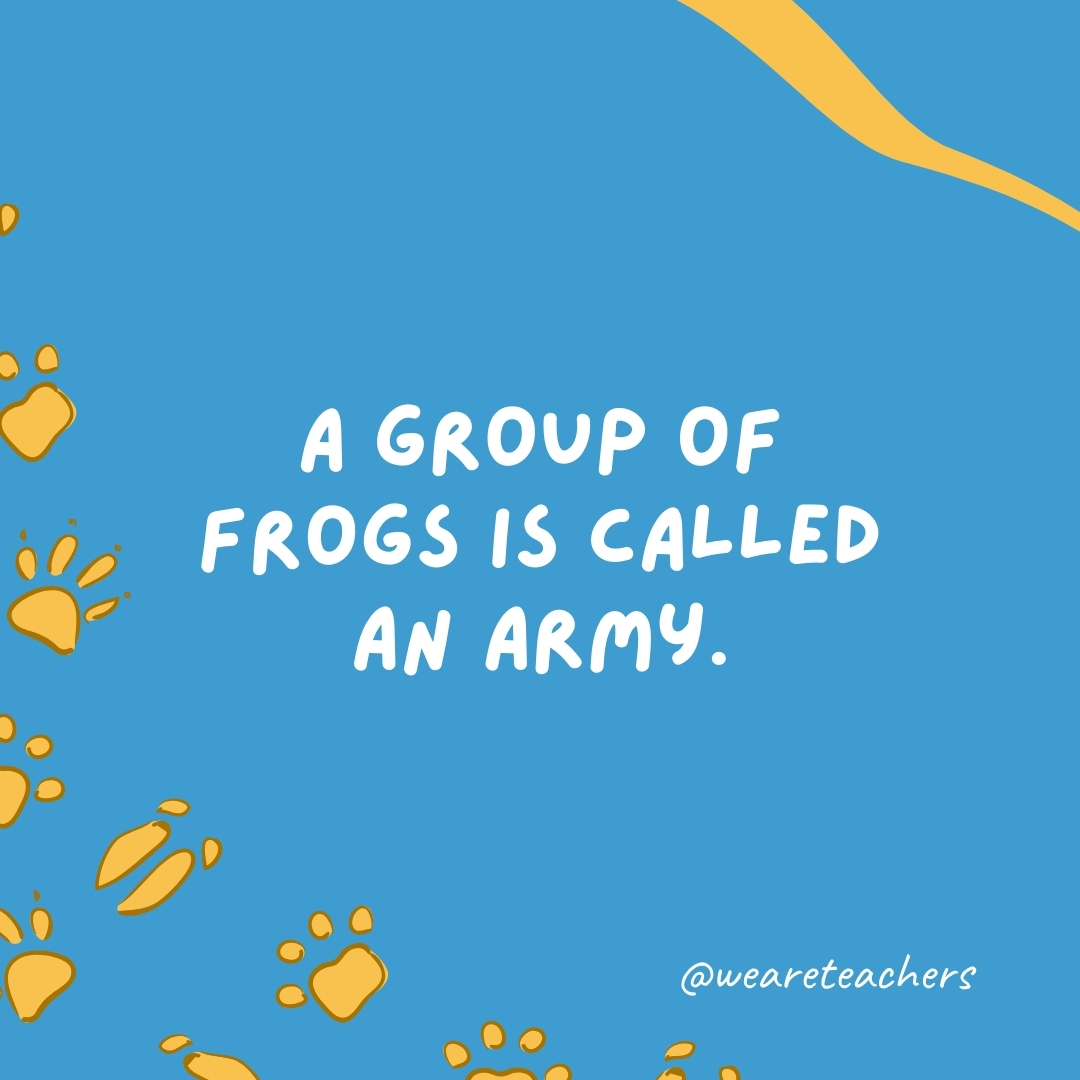
When frogs gather in large numbers, their collective might is aptly termed an army, ready to leap into action.
The giraffe is the tallest mammal in the world.
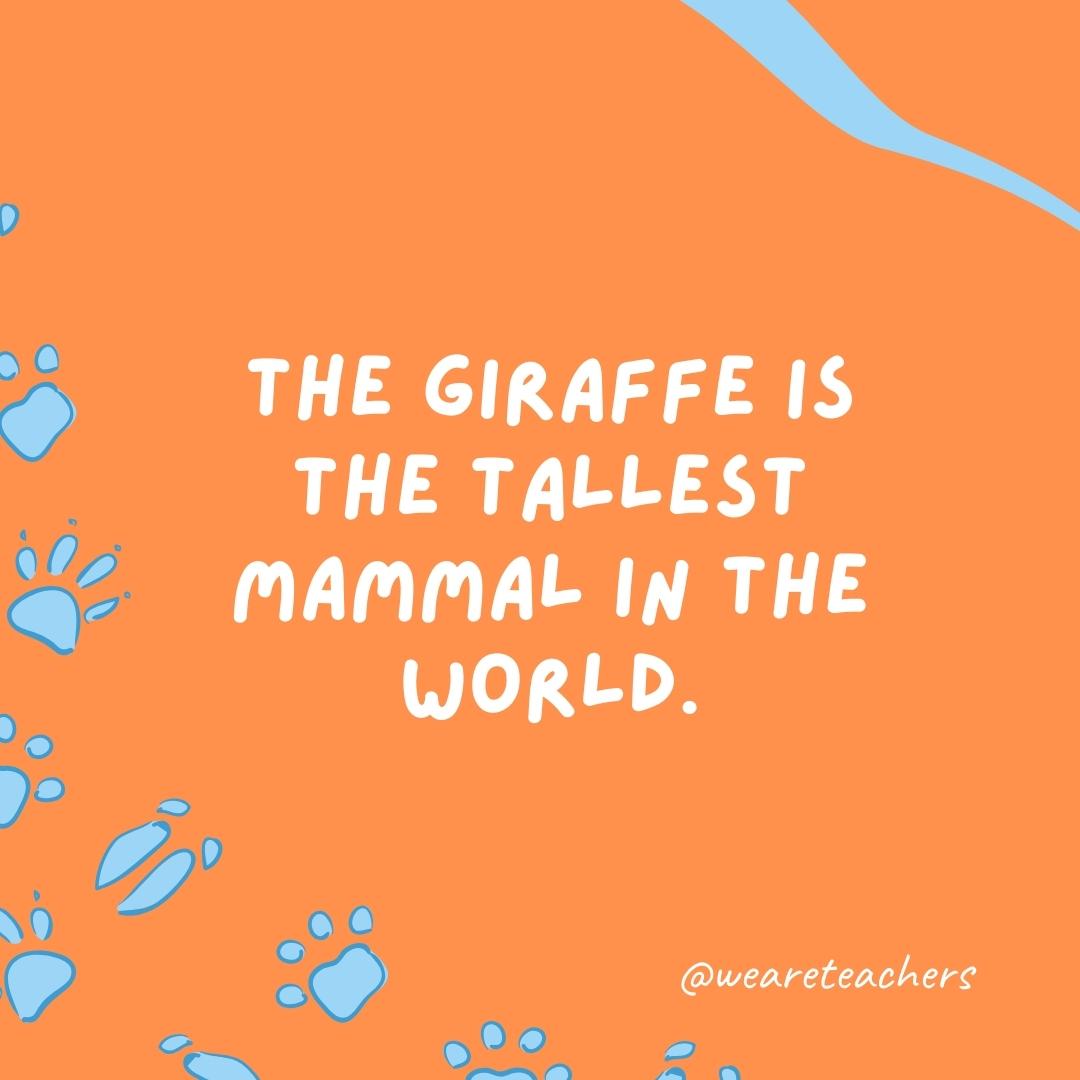
With their long necks and legs, giraffes tower over other mammals, reaching heights that allow them to access leaves other herbivores can’t.
A single elephant tooth can weigh as much as 9 pounds.

These massive molars help elephants grind down the vast amounts of vegetation they eat daily.
The kangaroo’s method of hopping is a highly efficient way of traveling long distances.

This unique form of locomotion conserves energy, allowing kangaroos to cover vast stretches of the Australian outback.
The arctic fox can change its fur color with the seasons for better camouflage.

With a white coat in winter and a brown one in summer, the arctic fox is always in style and stealth.
The venom of the king cobra is strong enough to kill an elephant.
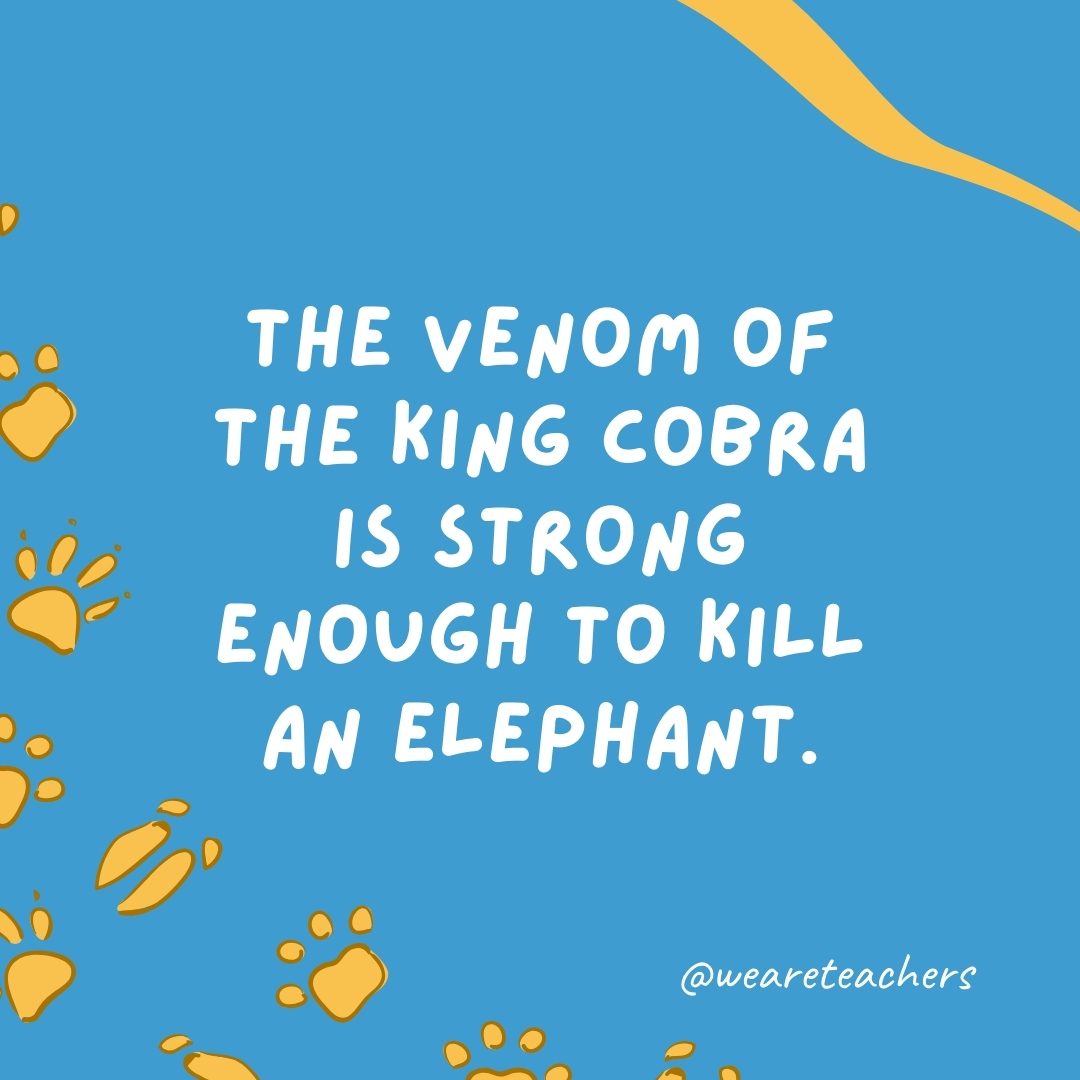
King cobras possess one of the most potent venoms in the snake world, a testament to their status as formidable predators.
The world’s largest bird egg is laid by the ostrich.
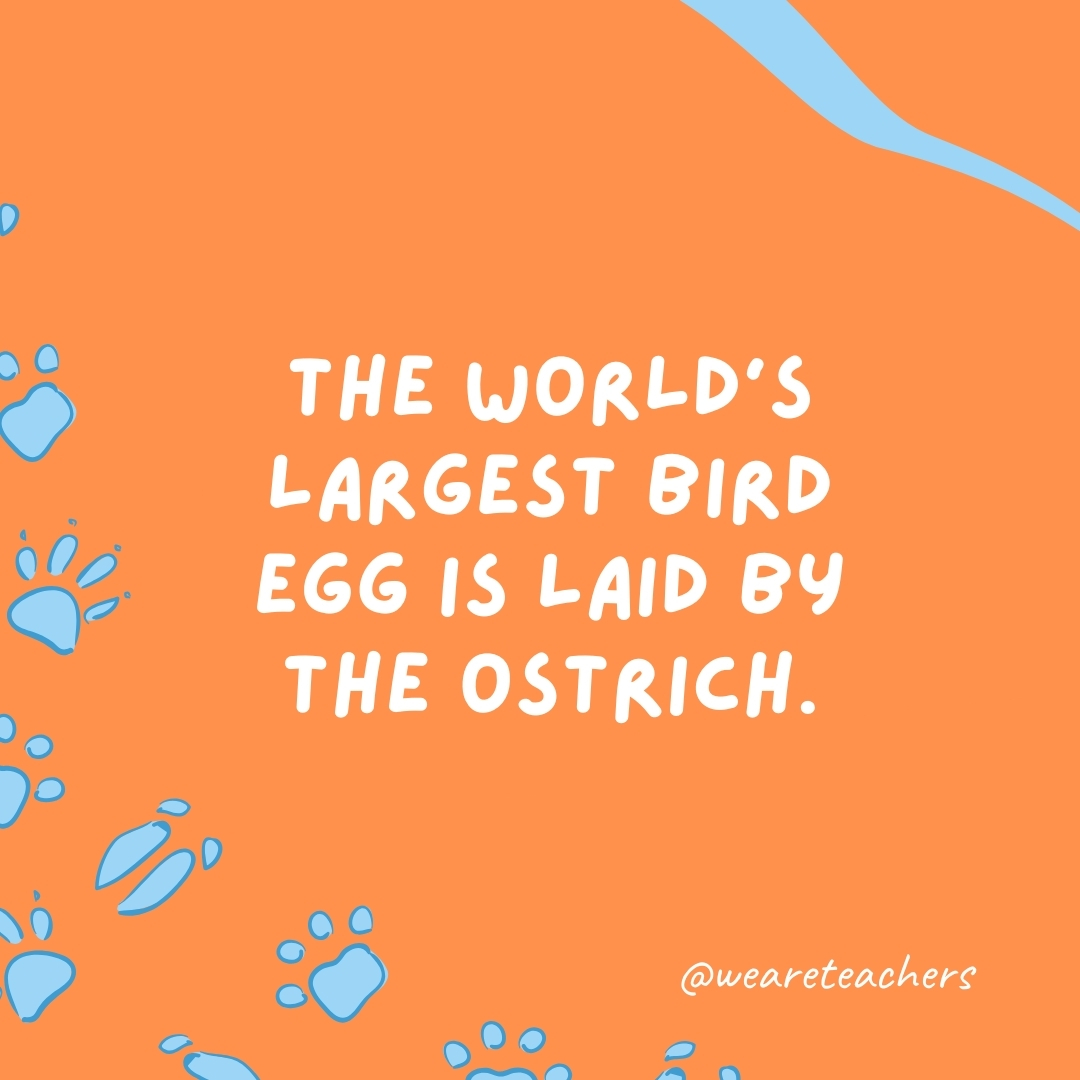
The largest egg on record weighed 5 pounds 11.36 ounces and was laid by an ostrich at a farm in Sweden.
A group of whales is called a pod.
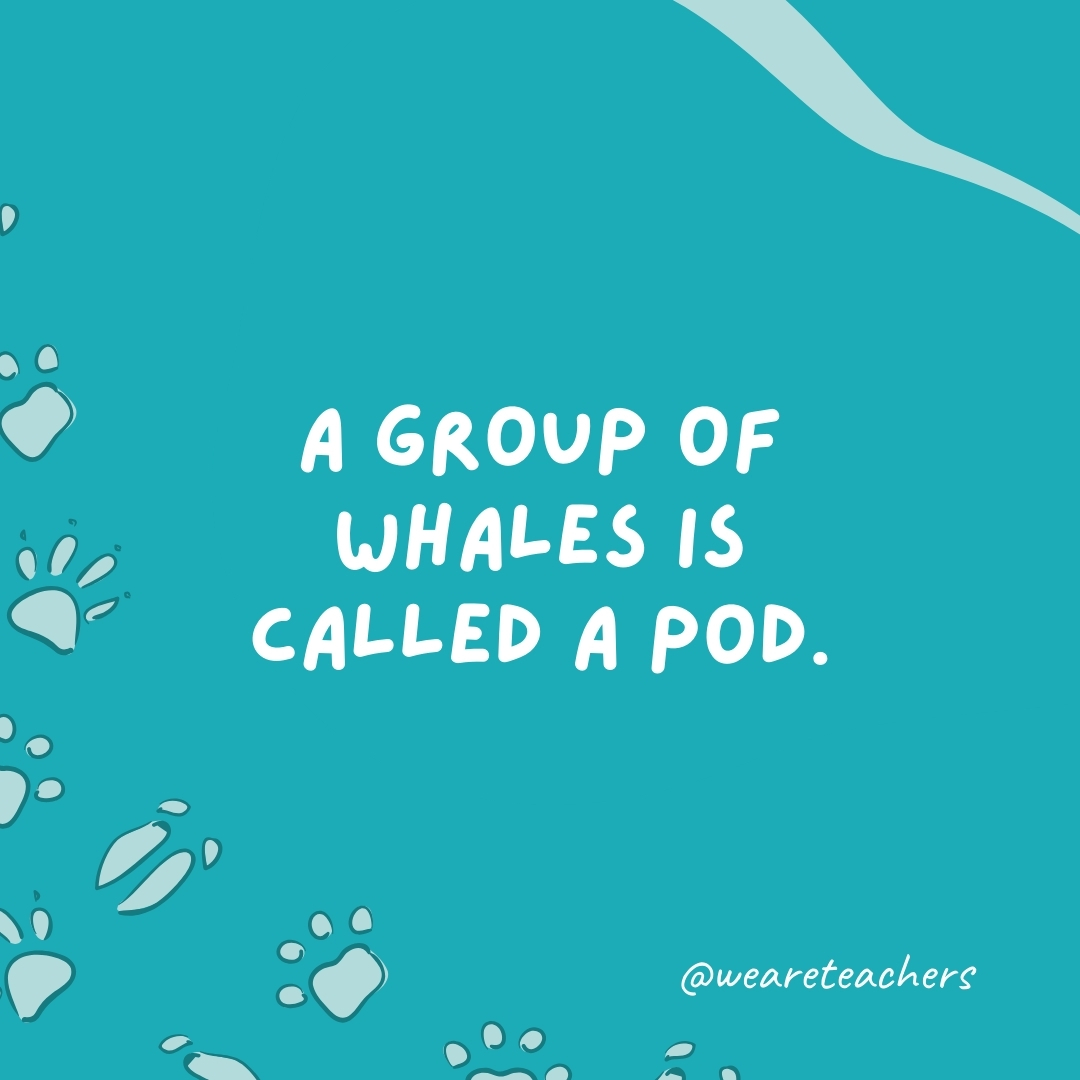
These social marine mammals travel in familial groups, sharing food and caring for each other’s young.
The narwhal’s tusk is actually an elongated tooth with sensory capability.

This “unicorn of the sea” uses its tusk to sense changes in its environment, and possibly to joust with rivals or break ice.
The axolotl can regenerate not just its limbs but also its heart and other vital organs.

This remarkable ability makes the axolotl a subject of intense scientific study in the field of regenerative medicine.
Flamingos are born with gray feathers, which gradually turn pink.
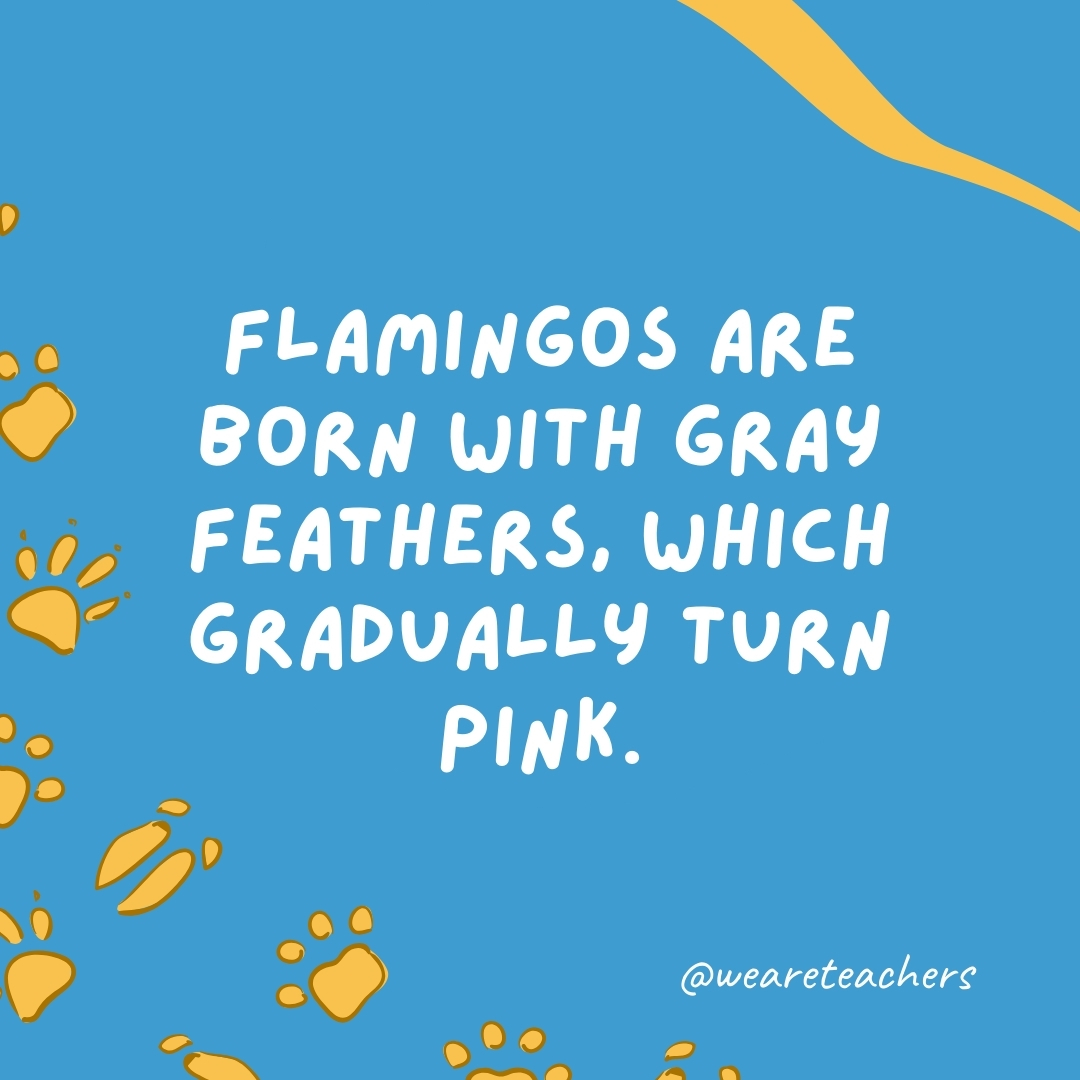
This color change is caused by a natural pink dye they obtain from their diet of shrimp and algae. It’s a vibrant example of how an animal’s appearance can be directly influenced by its food source.
The pistol shrimp can create a bubble hot enough to rival the sun’s surface temperature and loud enough to stun its prey.

With a snap of its claw, the pistol shrimp unleashes a powerful shock wave, showcasing one of the animal kingdom’s most explosive hunting techniques.
Wombats produce cube-shaped poop.

This peculiar trait helps wombats mark their territory, as the cubic poop doesn’t roll away easily. Watch this video for more!
The Australian box jellyfish carries enough venom to kill more than 60 humans.
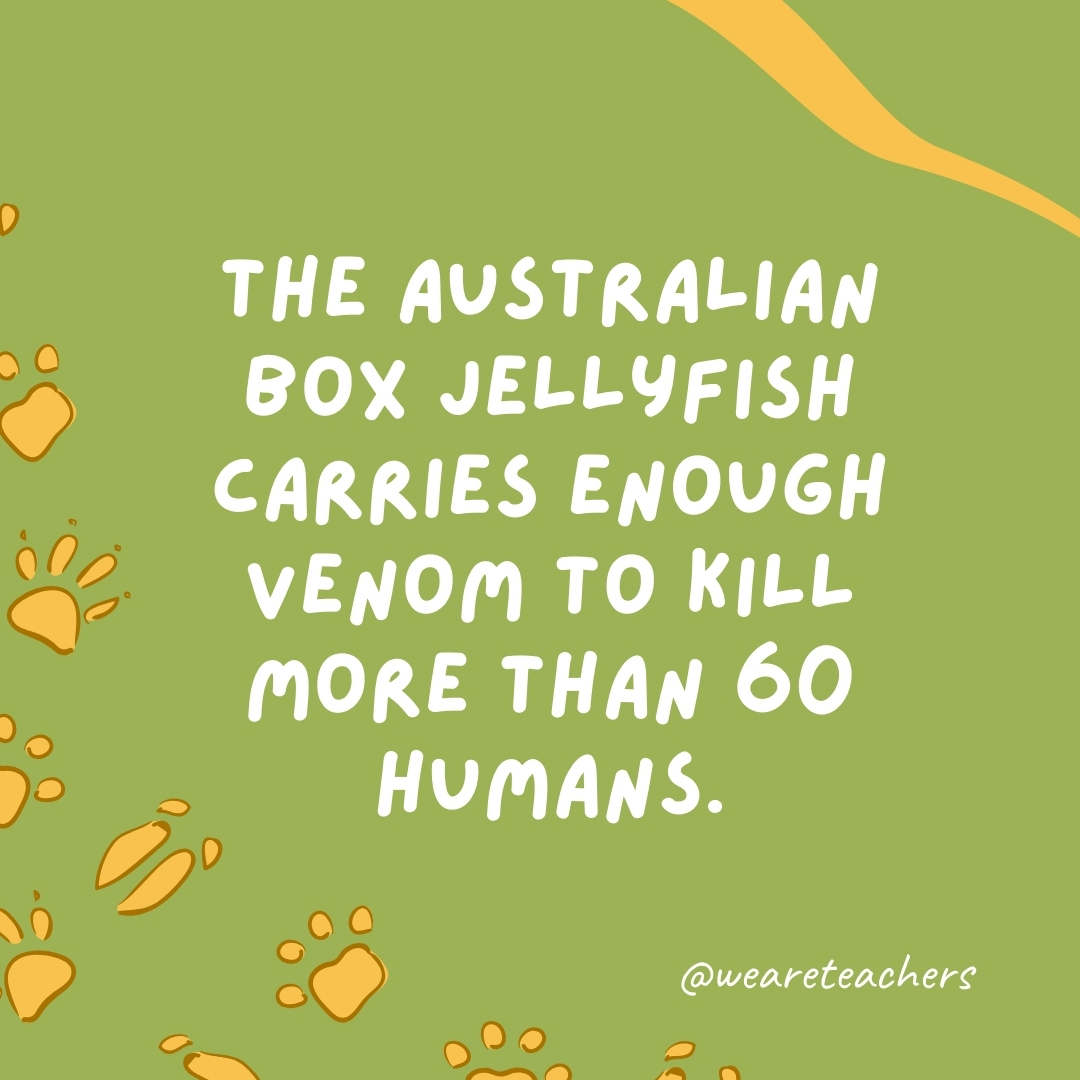
Considered one of the most venomous marine creatures, the box jellyfish poses a serious threat with its nearly invisible tentacles.
A group of porcupines is called a prickle.

This fitting name reflects the porcupine’s spiky defense mechanism, which warns predators to keep their distance.
The male bowerbird builds elaborate structures to attract mates.

These avian architects gather and arrange objects ranging from shells to plastic items, creating artful displays to woo females.
The dumbo octopus flaps its ear-like fins to move through the water.

Resembling the beloved flying elephant from Disney, the dumbo octopus glides through the deep sea with a grace that belies its odd appearance. Watch this video of one in action!
Parrots are one of the only species capable of using tools with their feet.

These intelligent birds can manipulate objects with their zygodactyl feet, showcasing their problem-solving skills and dexterity.
The turritopsis dohrnii jellyfish is effectively immortal.
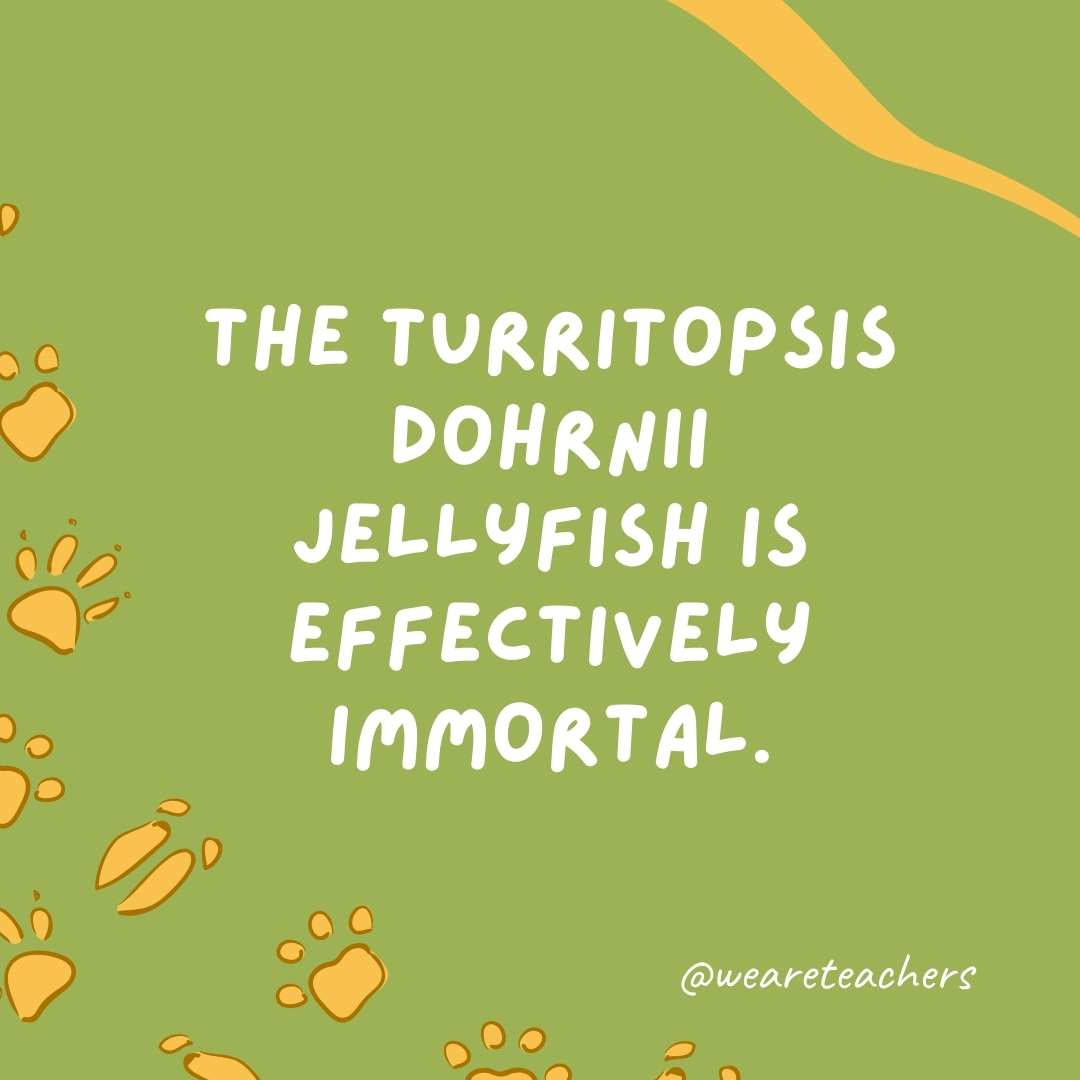
This biological marvel challenges our understanding of aging and mortality as it’s capable of reverting back to its juvenile polyp stage after reaching maturity.
The electric eel can produce electric shocks of up to 600 volts to stun prey or defend itself.

Living in the murky waters of the Amazon and Orinoco basins, the electric eel uses its shocking ability to navigate and hunt in its dark environment.
A group of hippos is known as a bloat.

Gathered in the rivers and lakes of Africa, these massive mammals form groups that aptly reflect their substantial presence.
The mimic octopus can imitate the shapes and colors of other sea animals to avoid predators.
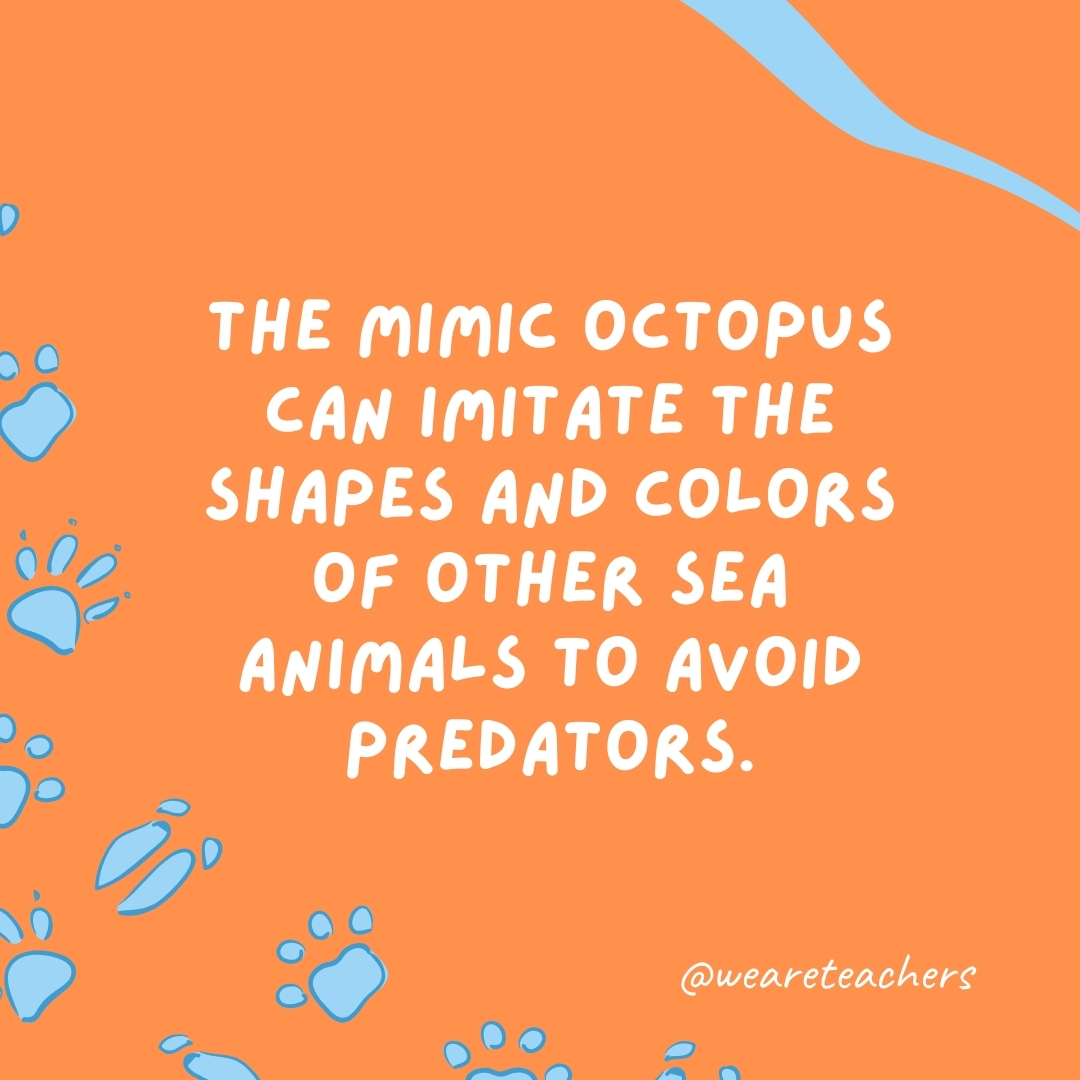
This master of disguise can transform its appearance to resemble venomous species, confusing predators and prey alike.
Deer have antlers, not horns, which are shed and regrown each year.
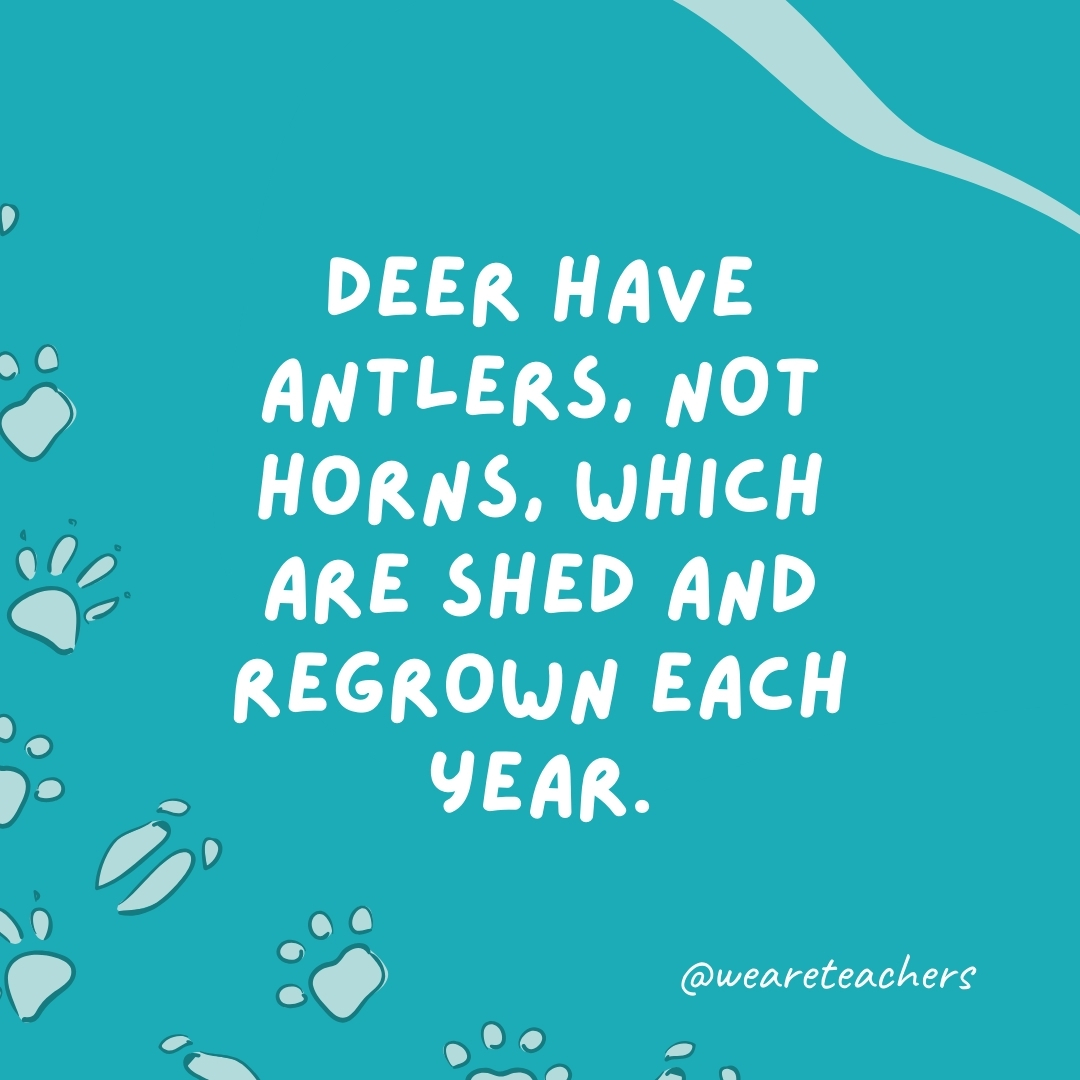
This renewable resource allows male deer to compete for mates each breeding season with a fresh set of impressive antlers.
The flying lemur can glide for over 230 feet without losing much altitude.
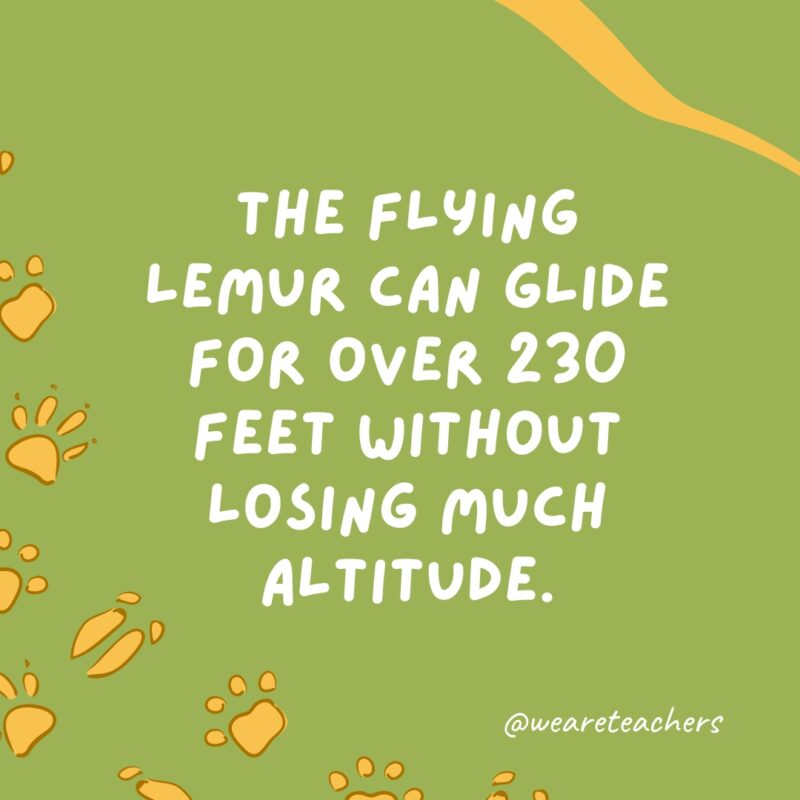
It uses its large gliding membrane to move between trees, covering great distances with ease.
A group of lizards is called a lounge.

Basking in the sun or lying low in the shade, these reptiles certainly know how to relax in style, forming lounges that can be a sight to behold.
The blobfish looks like a blob due to its lack of bones and muscles.

Adapted to the high pressures of the deep ocean, the blobfish’s gelatinous appearance becomes notably more peculiar when brought to the surface.
The Venus flytrap can digest insects by trapping them in its leaves.

This carnivorous plant has evolved specialized leaves that snap shut on unsuspecting prey, then utilizes digestive enzymes to break down its insect meals.
The cassowary is considered one of the most dangerous birds in the world due to its powerful kick.

Armed with sharp claws, the cassowary can slice up an enemy with a single kick!
A group of butterflies is called a kaleidoscope.

This poetic term beautifully captures the swirling, colorful patterns created by groups of butterflies fluttering together.
The saiga antelope has an unusually large nose that filters out dust and cools its blood.
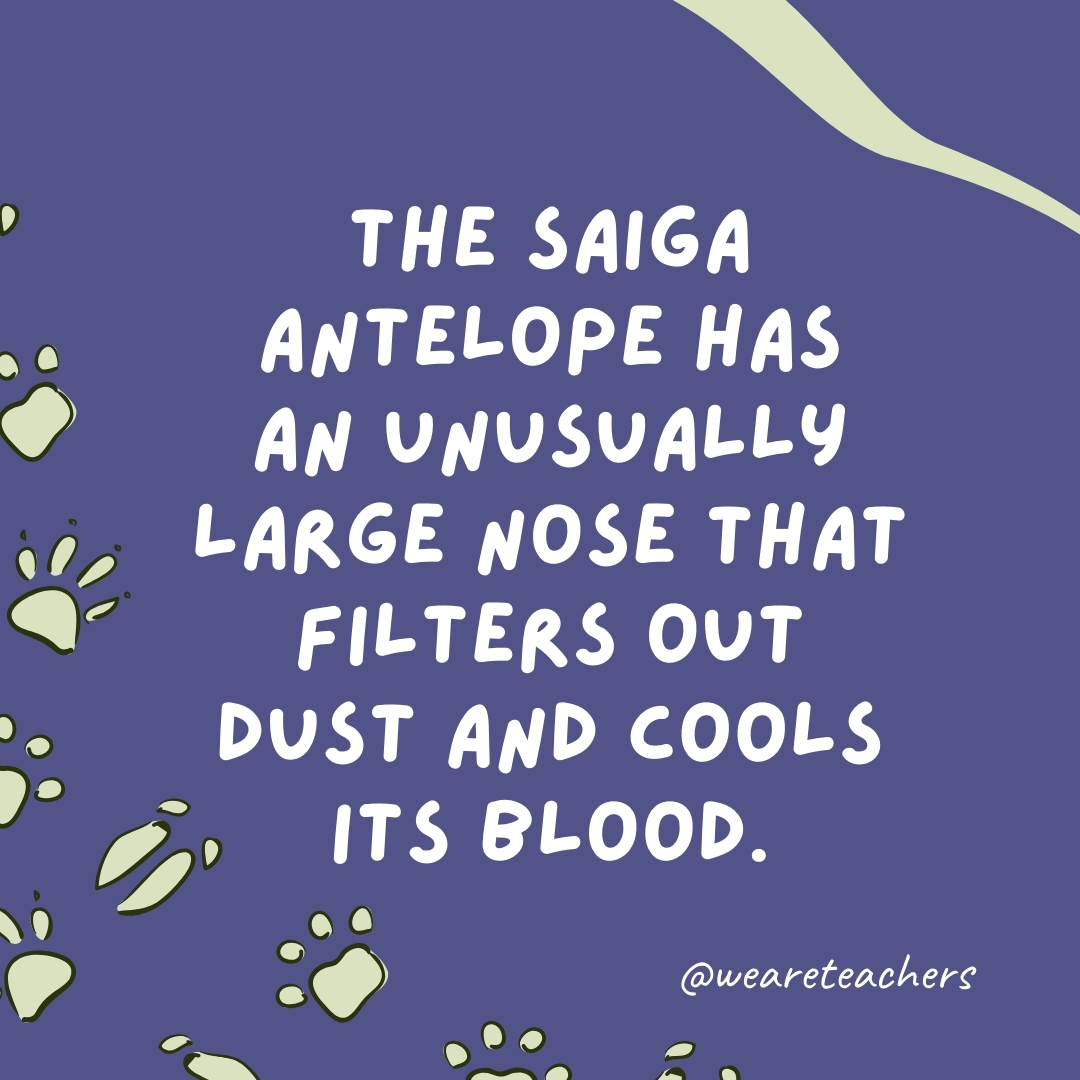
This distinctive nose is perfectly adapted to the dusty, arid Asian habitats of the saiga, filtering air and regulating temperature during its migrations.
The pangolin is the only mammal in the world with true scales made of keratin.
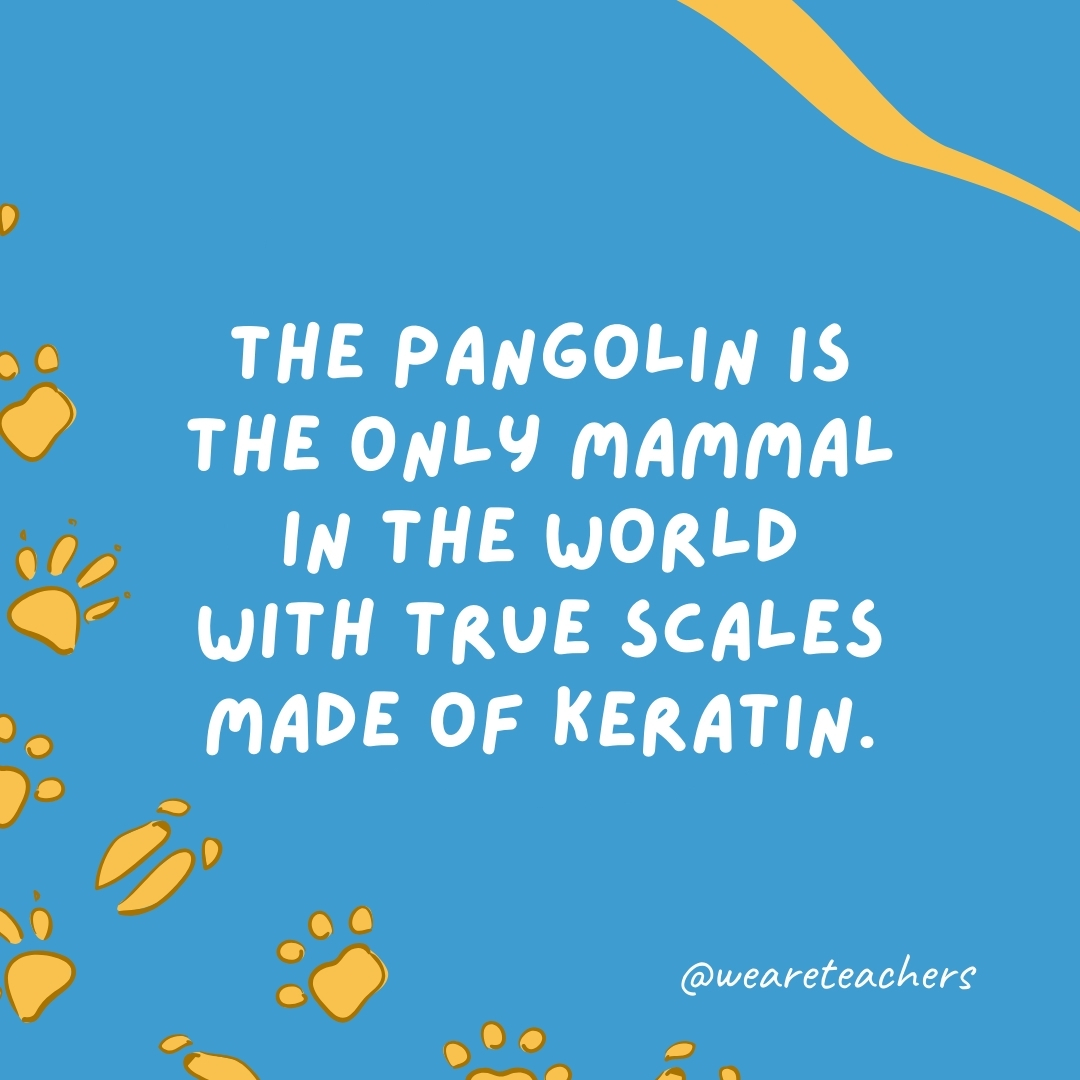
These unique scales provide protection against predators. The pangolin curls up into a tight ball when threatened, making it resemble a living pine cone.
The frilled shark has remained mostly unchanged for over 80 million years.
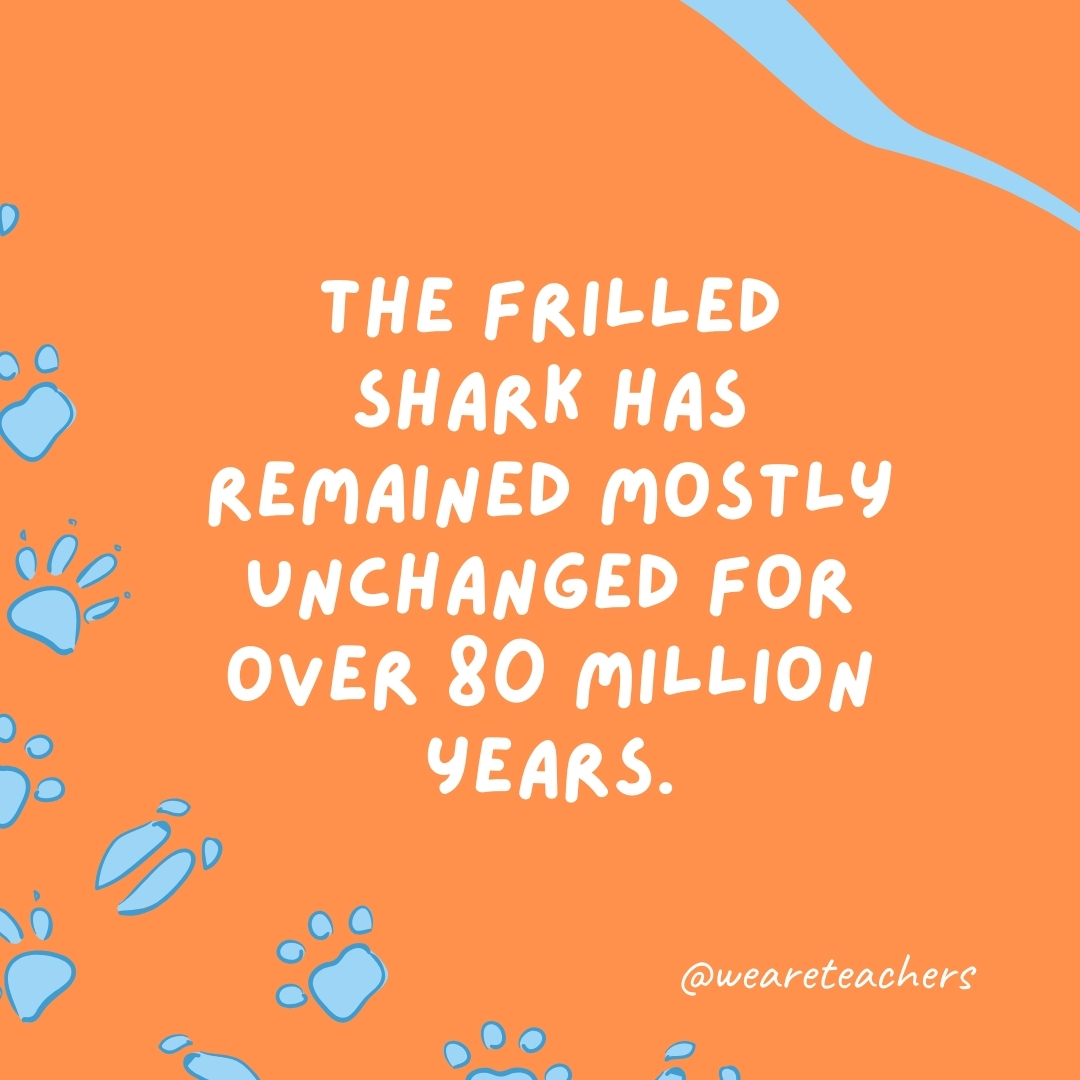
Also known as a “living fossil,” this deep-sea shark’s prehistoric features offer a glimpse into the ancient past, showing how little some species have changed over eons.
A group of ravens can be called an “unkindness.”
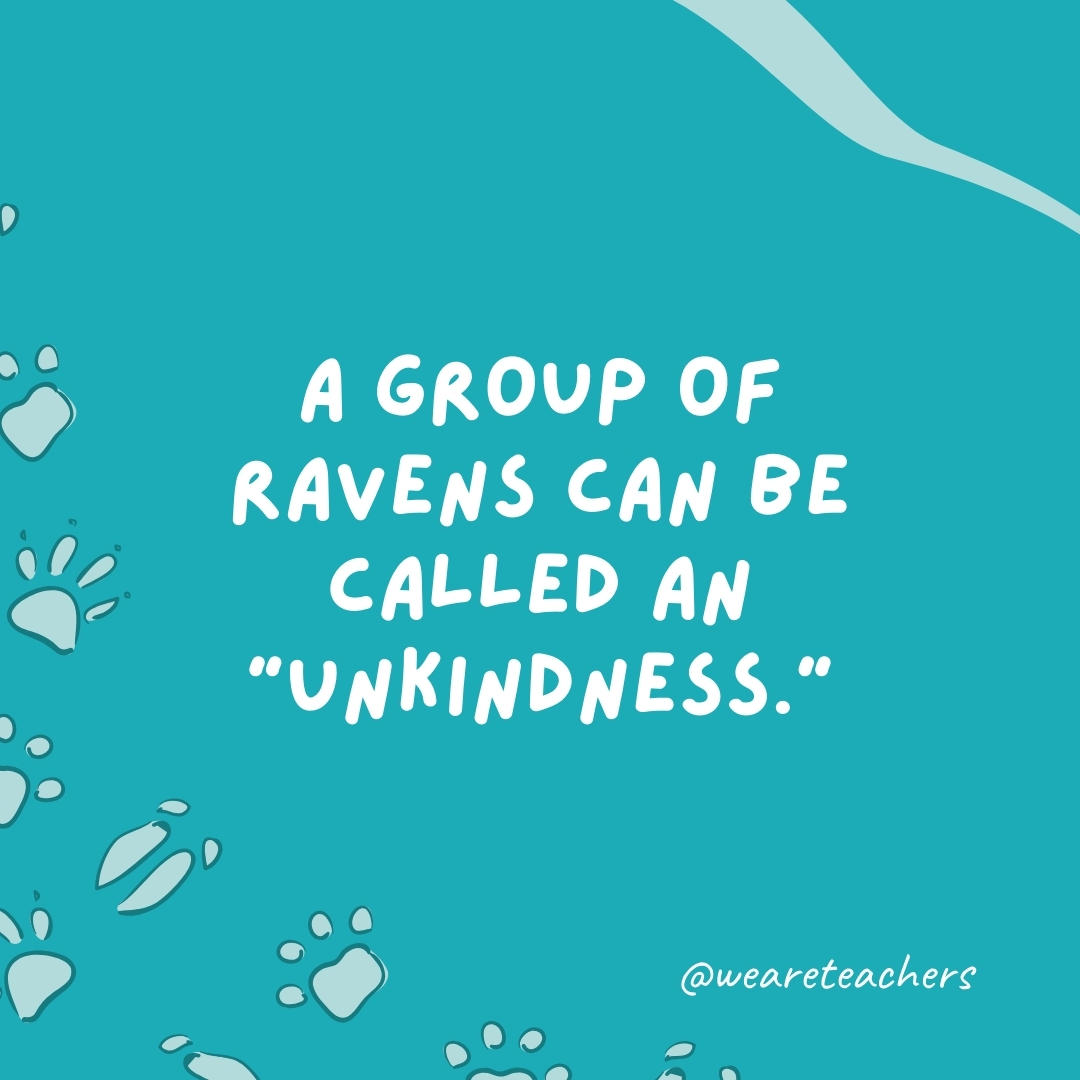
This term hints at the mystical and often misunderstood nature of ravens, birds that have fascinated humans for centuries with their complex behaviors and intelligence.
The Goliath birdeater tarantula is the largest spider by mass in the world.

Despite its intimidating size and name, the Goliath birdeater’s venom is relatively harmless to humans, making it a giant with a gentle bite.
The okapi has striped hindquarters similar to a zebra.

This elusive creature of the Congo rainforest, often called the forest giraffe, embodies a blend of giraffe and zebra features, with a long neck and striking stripes that provide camouflage in the dappled forest light.
The arctic tern has the longest migration of any animal in the world.
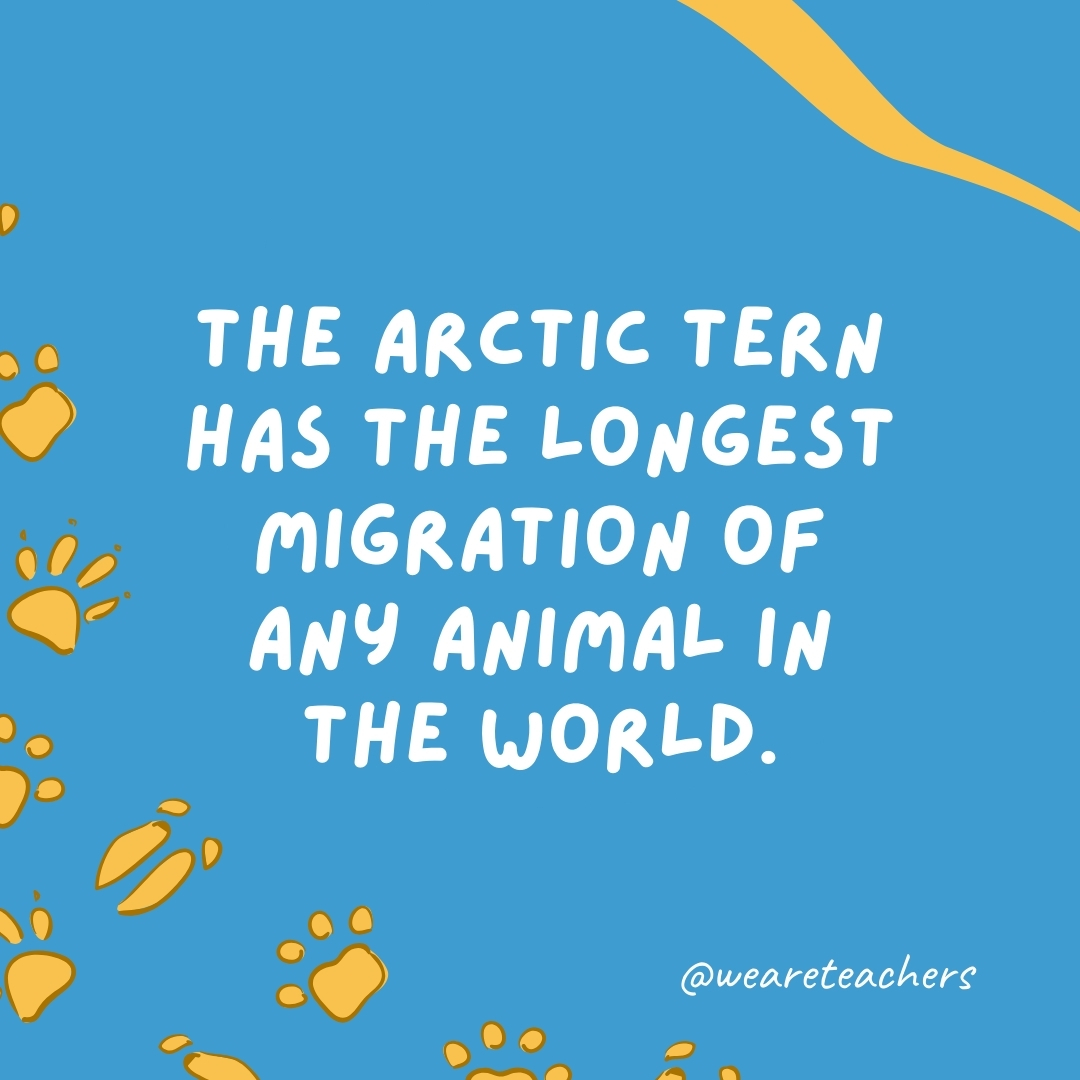
This incredible journey includes traveling from the Arctic to the Antarctic and back each year.
A group of sharks swimming close together and exhibiting synchronized movement is called a shiver.

Meanwhile, a group of swimming sharks in general is called a school.
The glass frog has see-through skin, allowing you to see its internal organs.
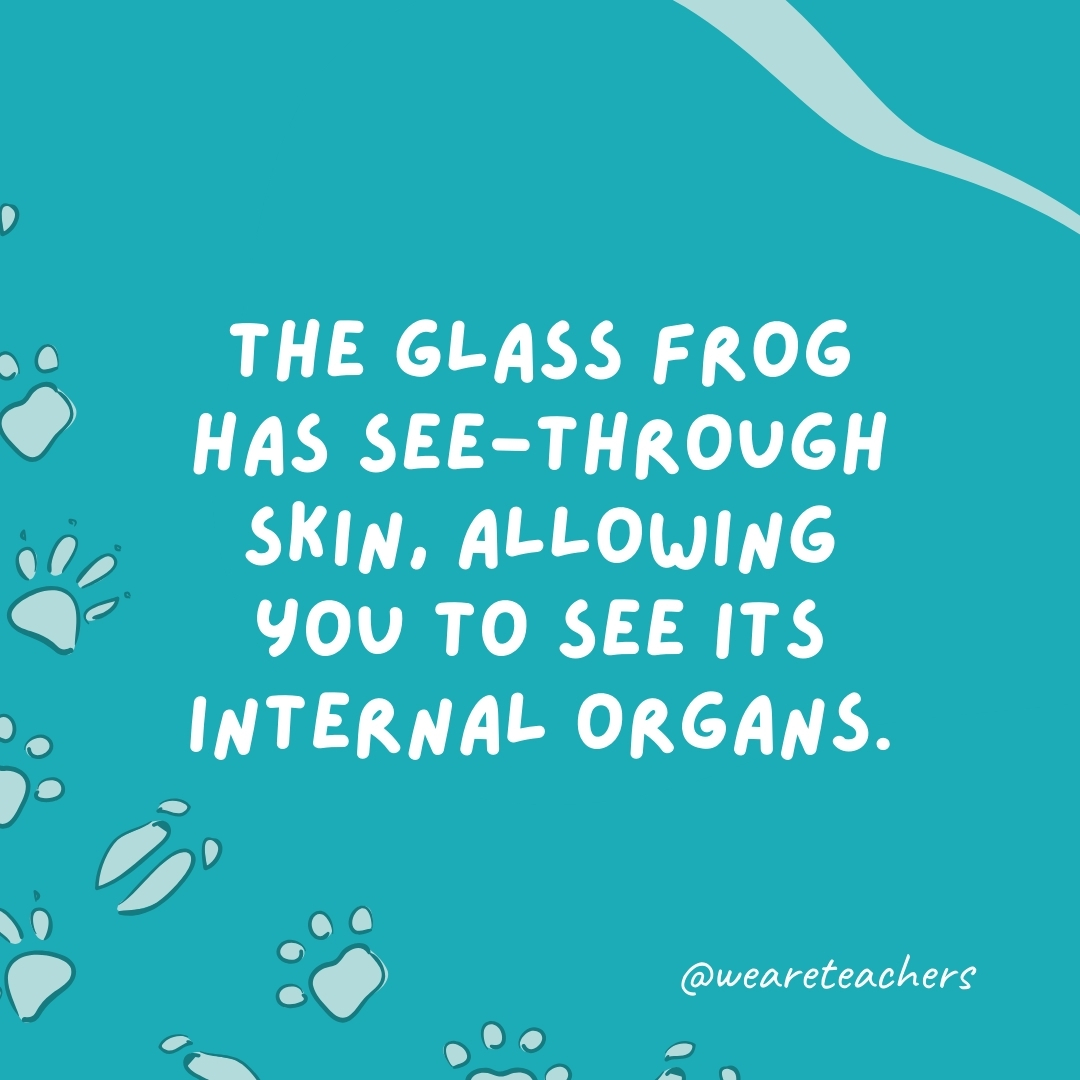
Inhabiting the rainforests of Central and South America, the glass frog’s translucent skin serves as a natural camouflage, blending in with the surrounding foliage and water.
A group of zebras is called a dazzle.

This term captures the mesmerizing effect of a herd’s moving stripes, which can confuse predators and create a stunning visual spectacle.
The mantis shrimp can see polarized light and multispectral images.
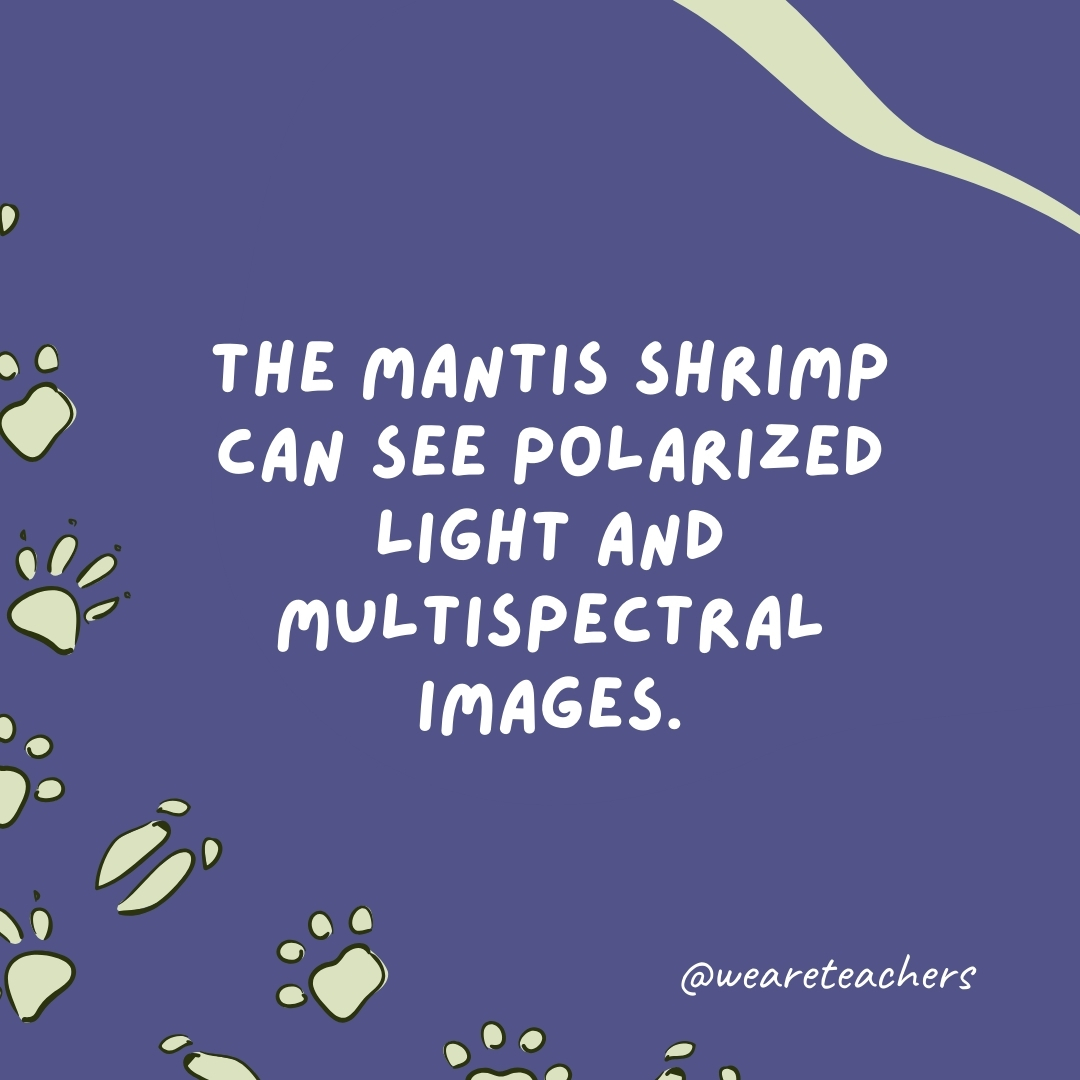
With the most complex eyes in the animal kingdom, the mantis shrimp can detect a range of colors and lights, making its view of the world incredibly rich and detailed.
The honey badger will attack buffalo and lions.
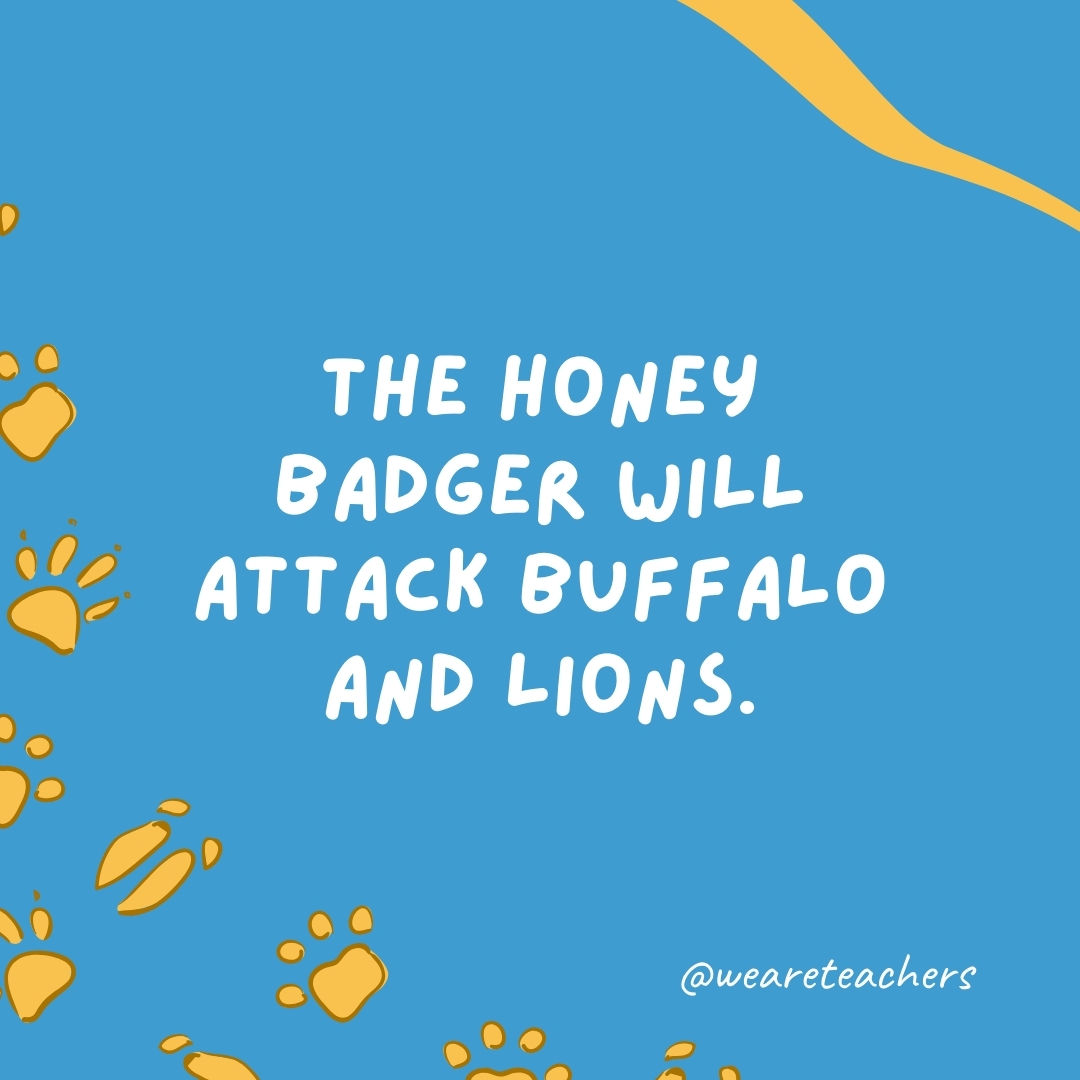
Renowned for its fearless nature, the honey badger’s reputation for bravery and resilience is well earned, often facing off against animals much larger than itself.
The slow loris is one of the world’s few venomous mammals.

This seemingly adorable creature harbors a secret weapon in its bite, a rare trait among mammals that adds an element of danger to its cuddly appearance.
The anglerfish uses a luminous lure to attract prey in the deep, dark ocean waters.
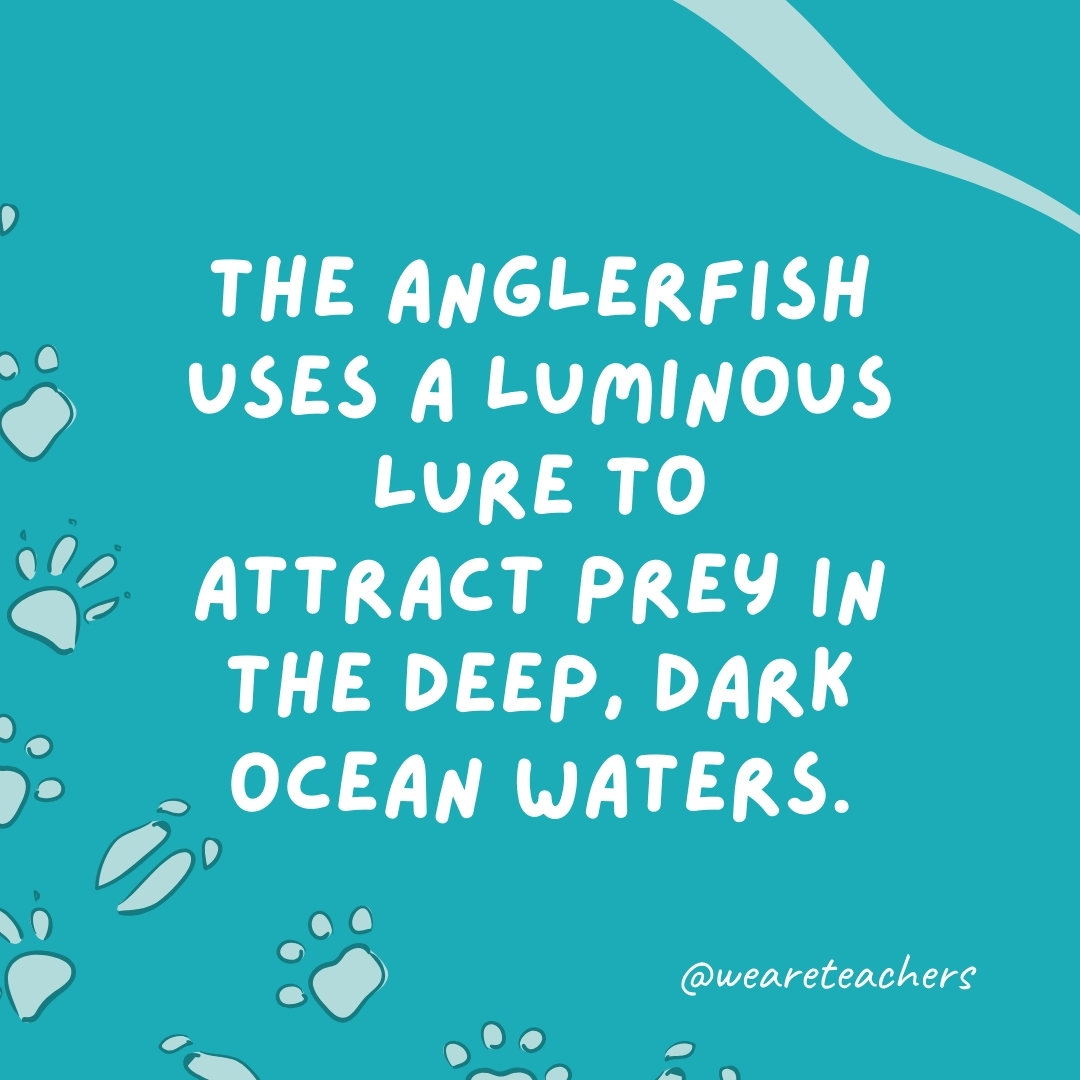
In the abyssal depths where light is scarce, the anglerfish’s glowing bait stands out, drawing curious fish straight into its waiting jaws.
The quokka is known as the world’s happiest animal because of its smile-like facial expression.

Native to small islands off the coast of western Australia, the quokka’s cheerful demeanor and friendly nature have endeared it to people around the globe. Learn more from this video about this adorable animal!
The echidna is an egg-laying mammal.
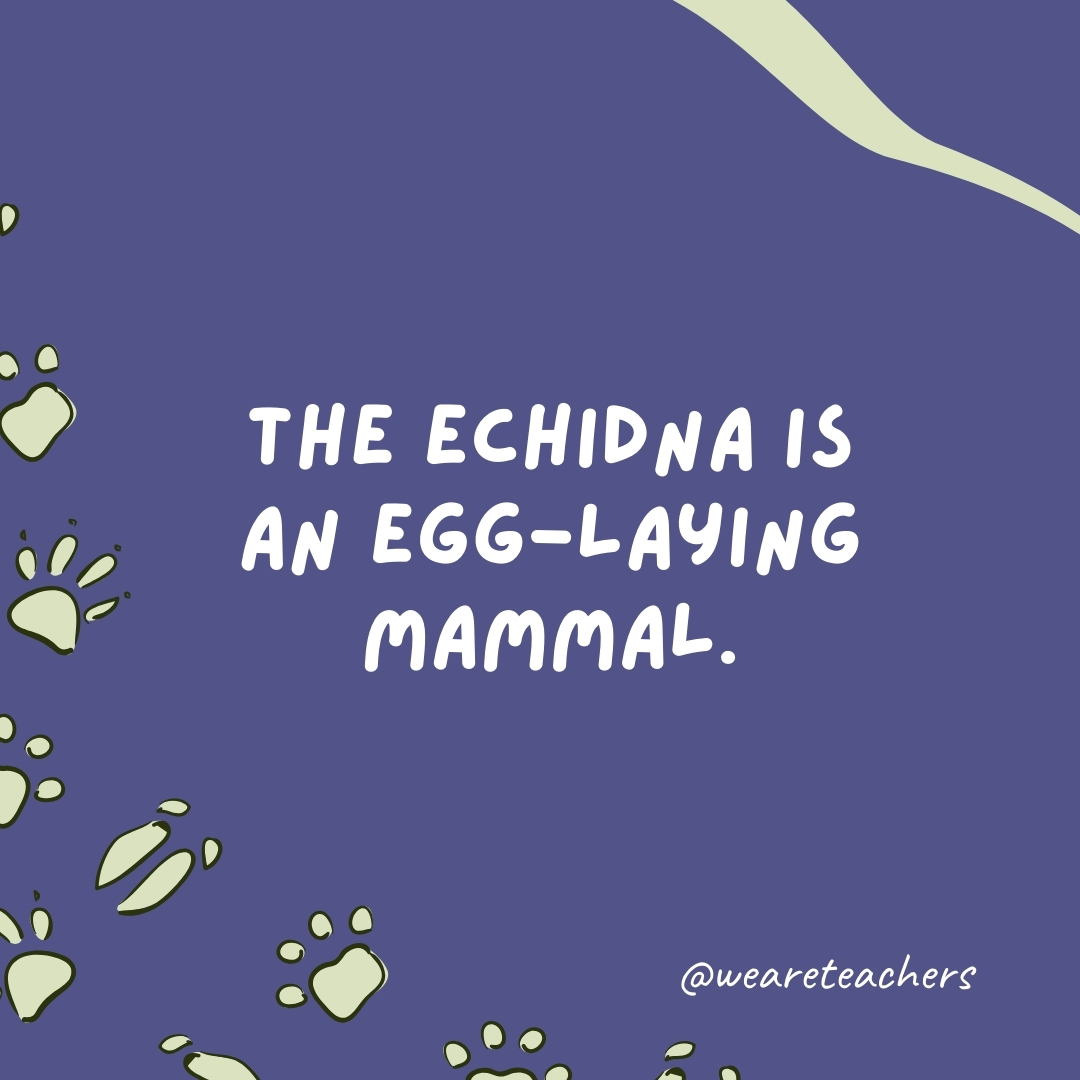
These unique creatures are among the only mammals that lay eggs, sharing this rare reproductive strategy with their cousin the platypus. Learn more about this incredible ability!
The thorny devil lizard can collect water from any part of its body.
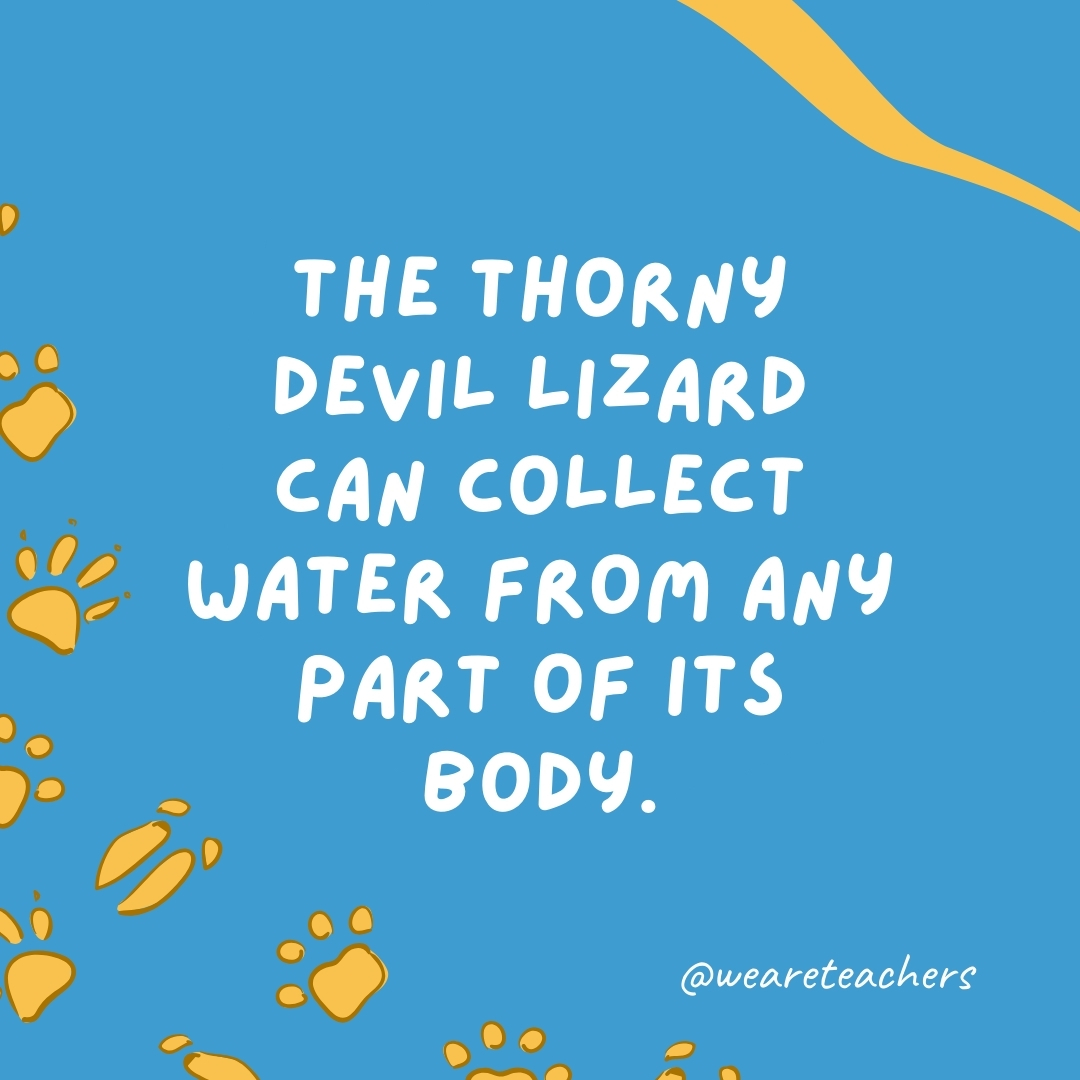
Adapted to the arid Australian desert, the thorny devil has evolved an ingenious method of hydration, using its skin to channel water directly to its mouth.
The male lyrebird can mimic sounds from its environment to attract mates.
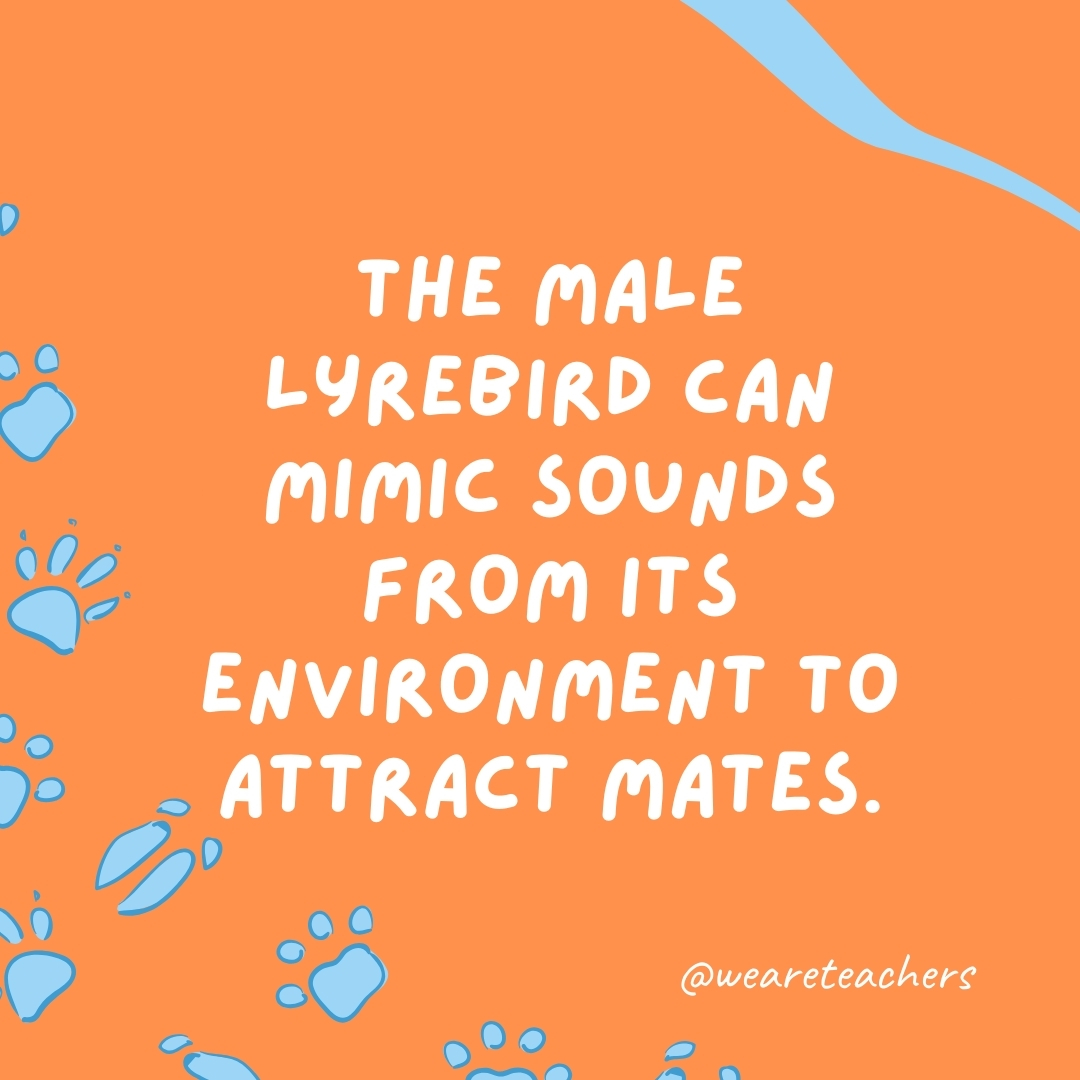
With an extraordinary ability to reproduce a variety of sounds, the lyrebird’s vocal performances are among the most complex and beautiful in the avian world.
A group of bees is called a swarm.
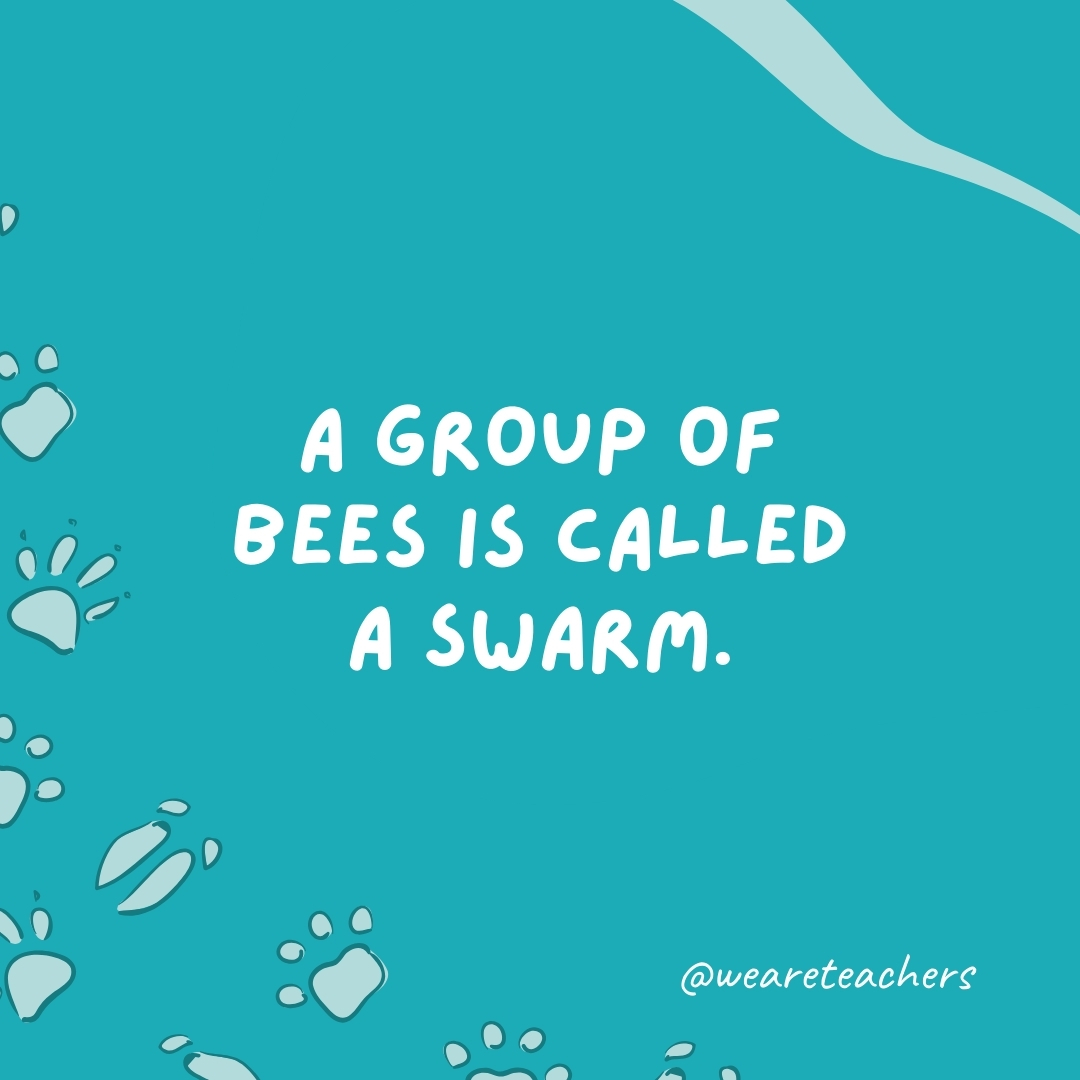
In their quest for a new home or when protecting their hive, bees move together in a swarm, a buzzing cloud of activity and collective purpose.
The sea lion has the ability to walk on all fours and can climb stairs.

Unlike their seal cousins, sea lions have flexible flippers that allow them to move with ease on land, navigating obstacles with surprising agility.
The pufferfish inflates into a ball shape to deter predators.
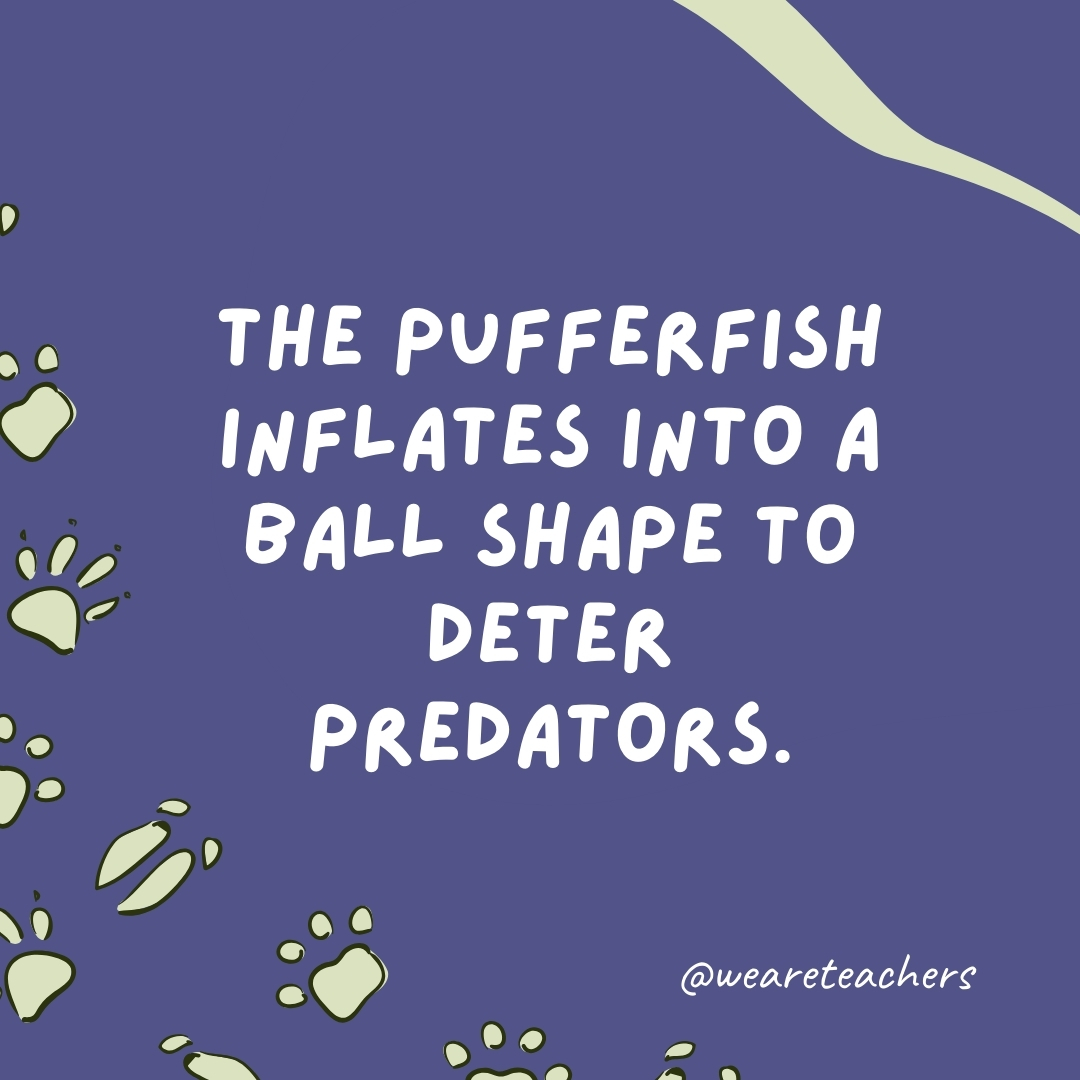
When threatened, the pufferfish’s ability to balloon in size, combined with its toxic defense, helps keep it safe.
The golden poison dart frog’s skin contains enough toxin to kill 10 grown men.

Found in the rainforests of Colombia, this bright-colored amphibian carries a lethal defense mechanism, a potent toxin in its skin that has been used by indigenous people to coat their blowgun darts.
The albatross can fly for thousands of miles without landing.

In fact, it can go for years without touching the ground!
The African elephant has the longest pregnancy of any land animal.
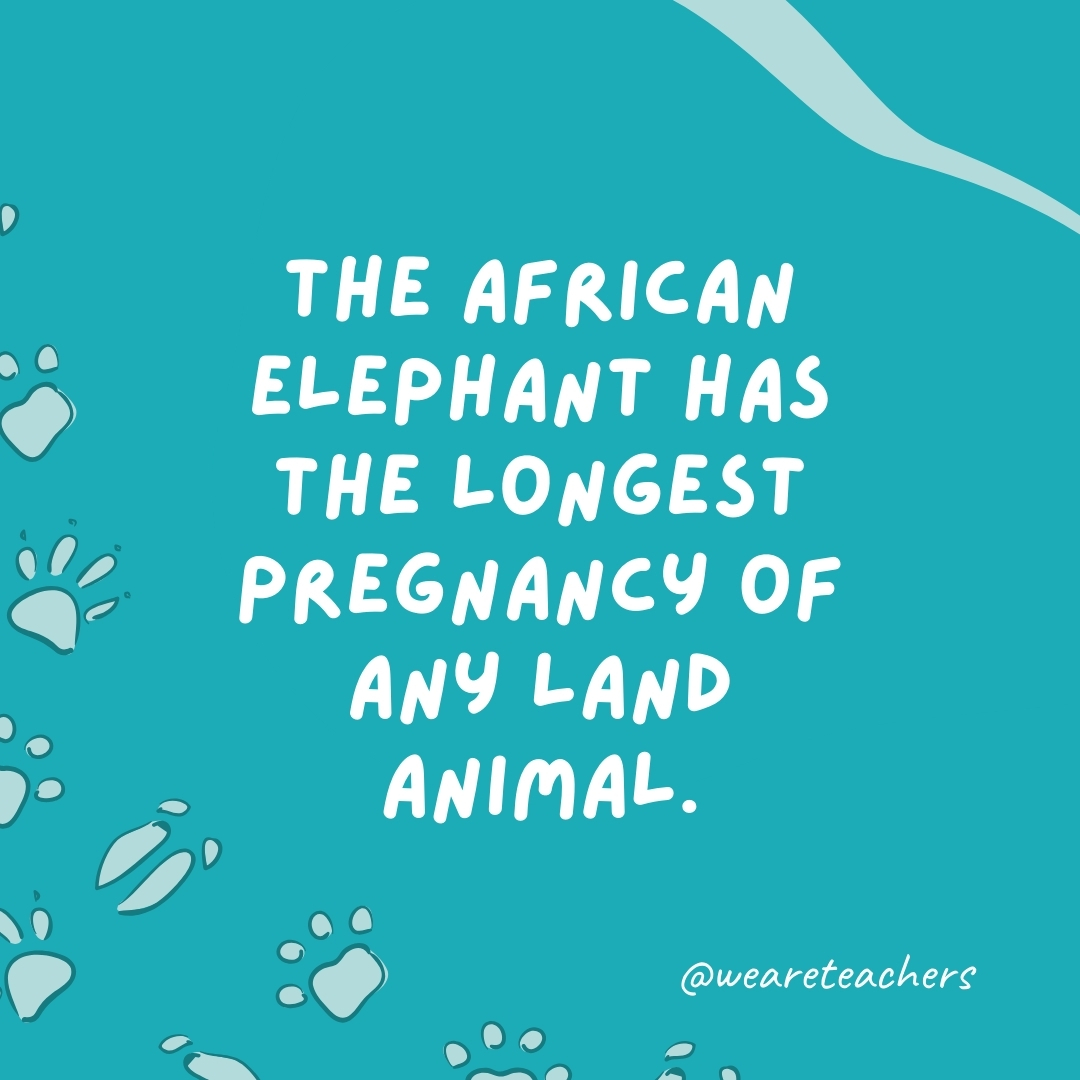
This extended gestation period can last up to 22 months.
The little brown bat can eat up to 1,000 mosquitoes in an hour.
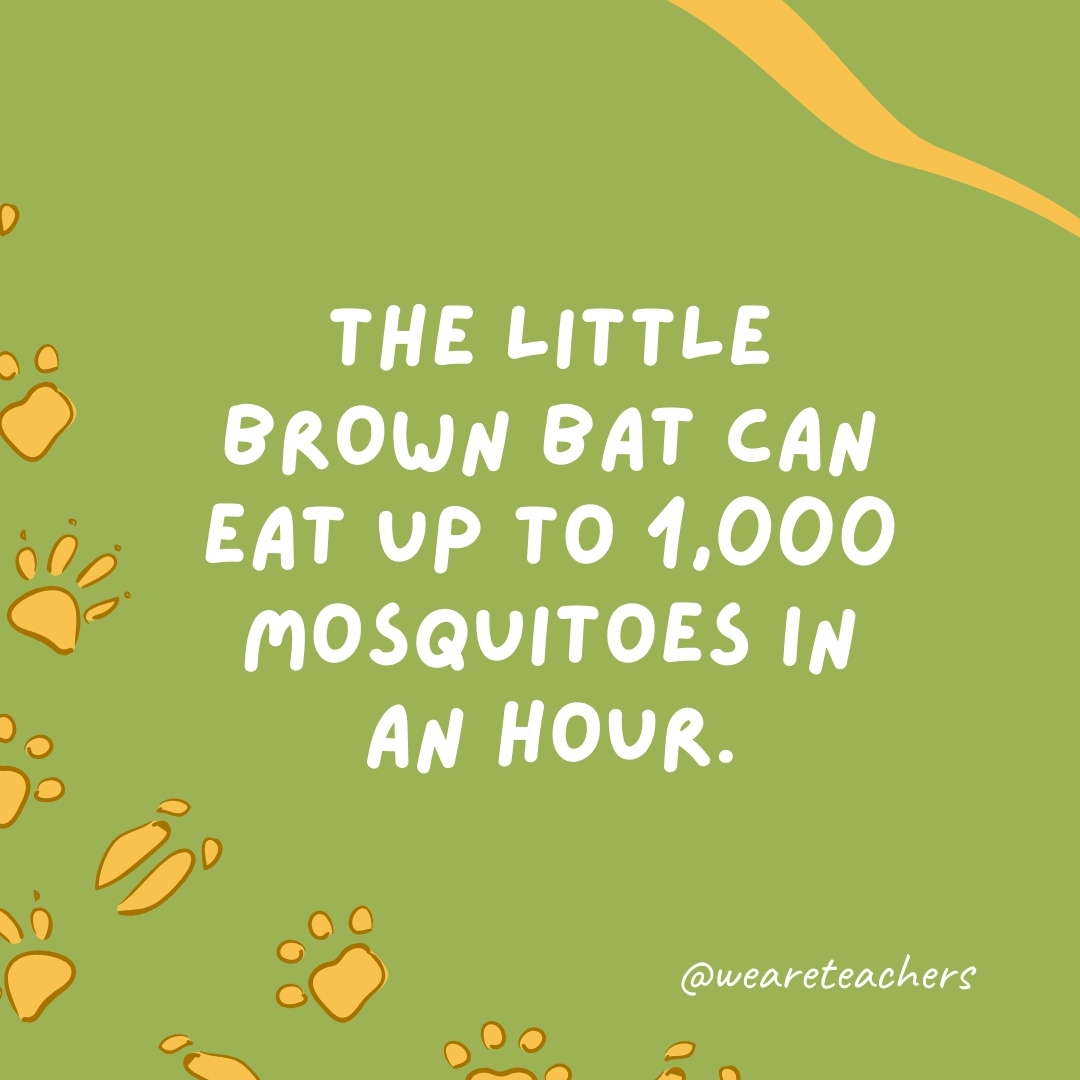
As nocturnal hunters, bats play a crucial role in controlling insect populations, feasting on thousands of mosquitoes and other pests each night.
The zebra fish can regenerate its heart.

This small tropical fish has the remarkable ability to heal its own heart, making it a subject of intense study for regenerative medicine and cardiac research.
A group of ferrets is called a business.
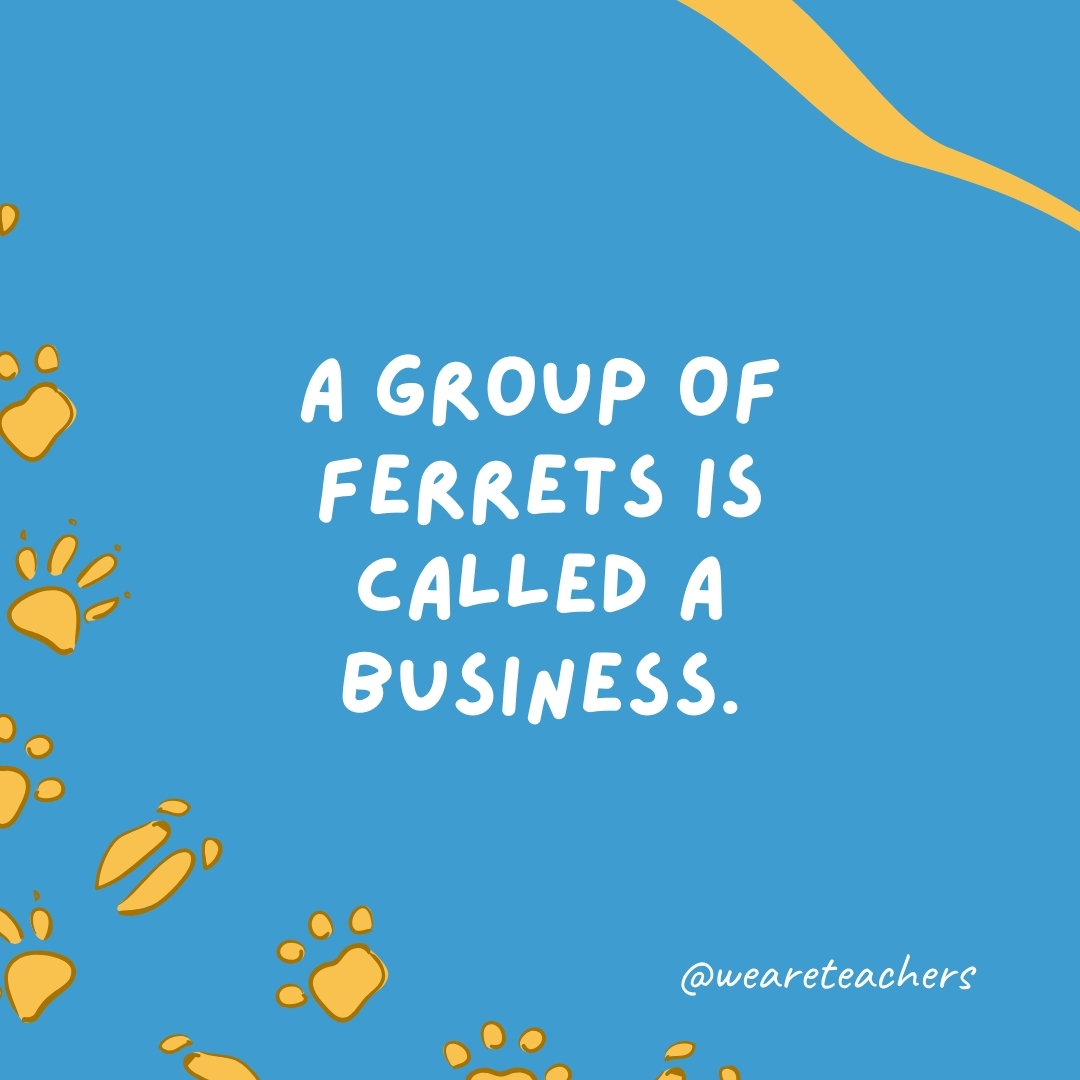
This playful and curious group of mammals is known for their energetic antics, forming what is appropriately termed a business, a bustling bundle of fur and fun.
It’s a common misconception that porcupines can shoot their quills at predators.

Porcupines cannot shoot their quills, although their quills actually detach easily when touched, embedding in predators as a defensive mechanism.
The vampire squid lives in deep ocean waters and is named for its dark color and red eyes.
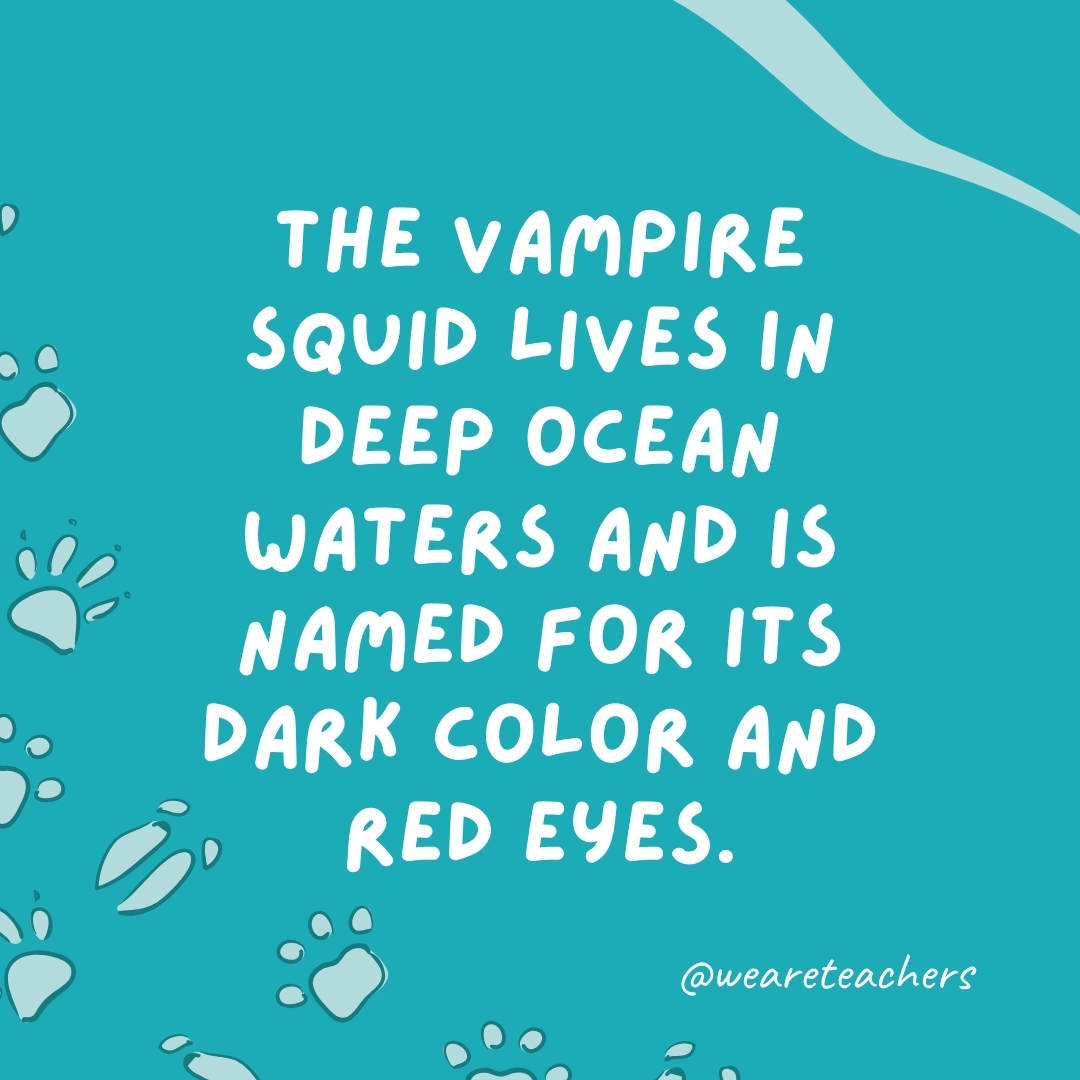
Inhabiting the oxygen-minimal depths, this mysterious creature has a cloak-like webbing and bioluminescent spots, giving it an otherworldly appearance.
The koala sleeps up to 22 hours a day.

Living a leisurely life in the eucalyptus trees, koalas spend most of their time sleeping, conserving energy for their low-nutrition diet.
A group of fish is called a shoal or a school.

Fish of the same species that swim in synchronized groups are called schools, a behavior that provides safety in numbers from predators and increases their efficiency in moving through water. When fish of different species swim together, it’s called a shoal.
The tarantula can survive for more than two years without food.
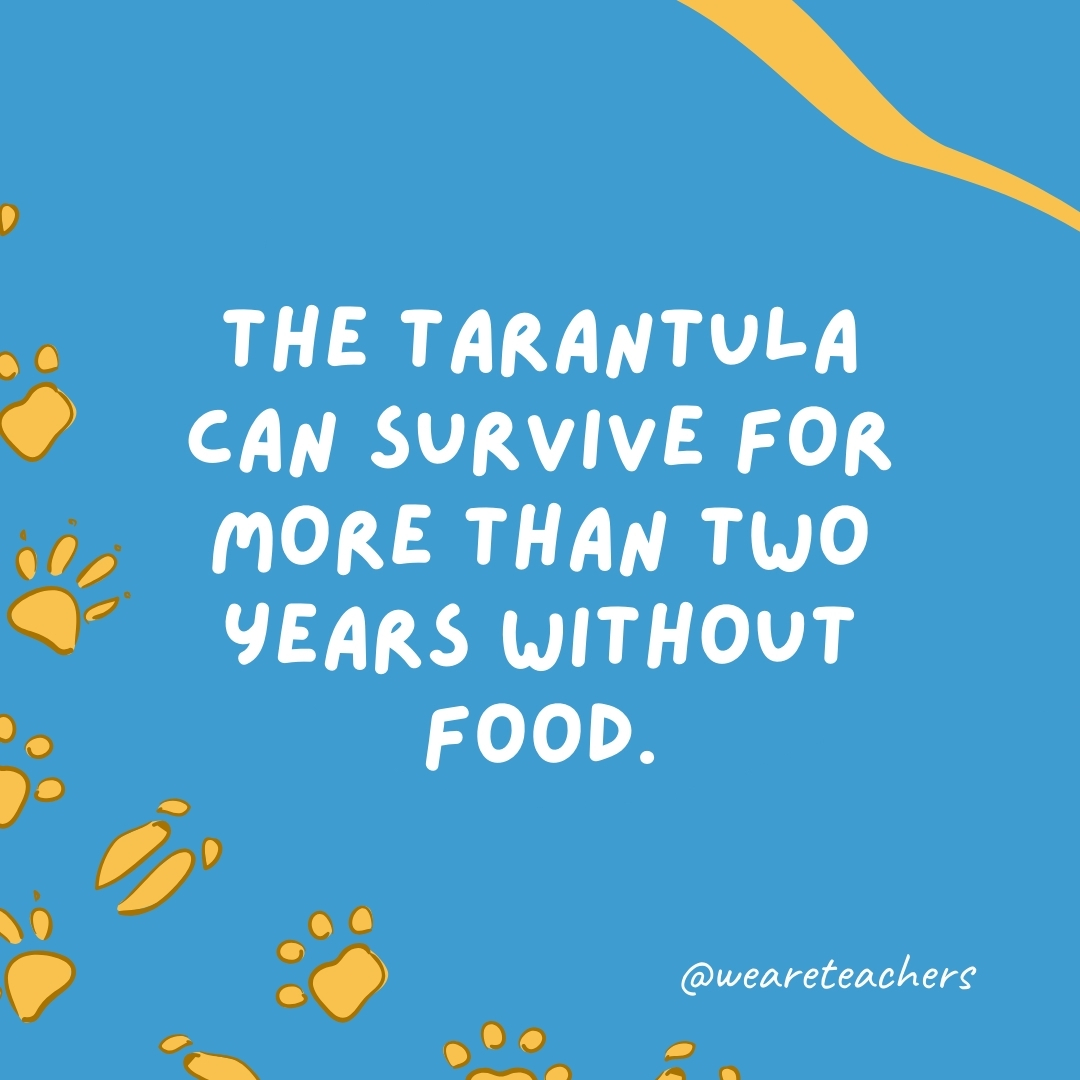
With a slow metabolism and the ability to conserve energy, tarantulas are survival experts, enduring long periods without eating as long as they have water.
The anaconda is the heaviest snake in the world.

Found in South American rainforests and waterways, the anaconda is a formidable predator, relying on its massive strength to overpower prey.
The dung beetle is the world’s strongest insect.

They can pull the equivalent of a human pulling six double-decker buses, showcasing the dung beetle’s mighty prowess.
A group of ducks on the water is called a raft.

They can also be called a bunch or paddling.
A group of pigeons is called a kit, flock, or flight.

When flying, pigeons are called a flight, moving together with impressive coordination, often seen swirling through the skies in urban environments. The term “kit” is mostly used by pigeon breeders, while the more common “flock” is used for groups of pigeons in general.
The Greenland shark has the longest known lifespan of all vertebrate species.
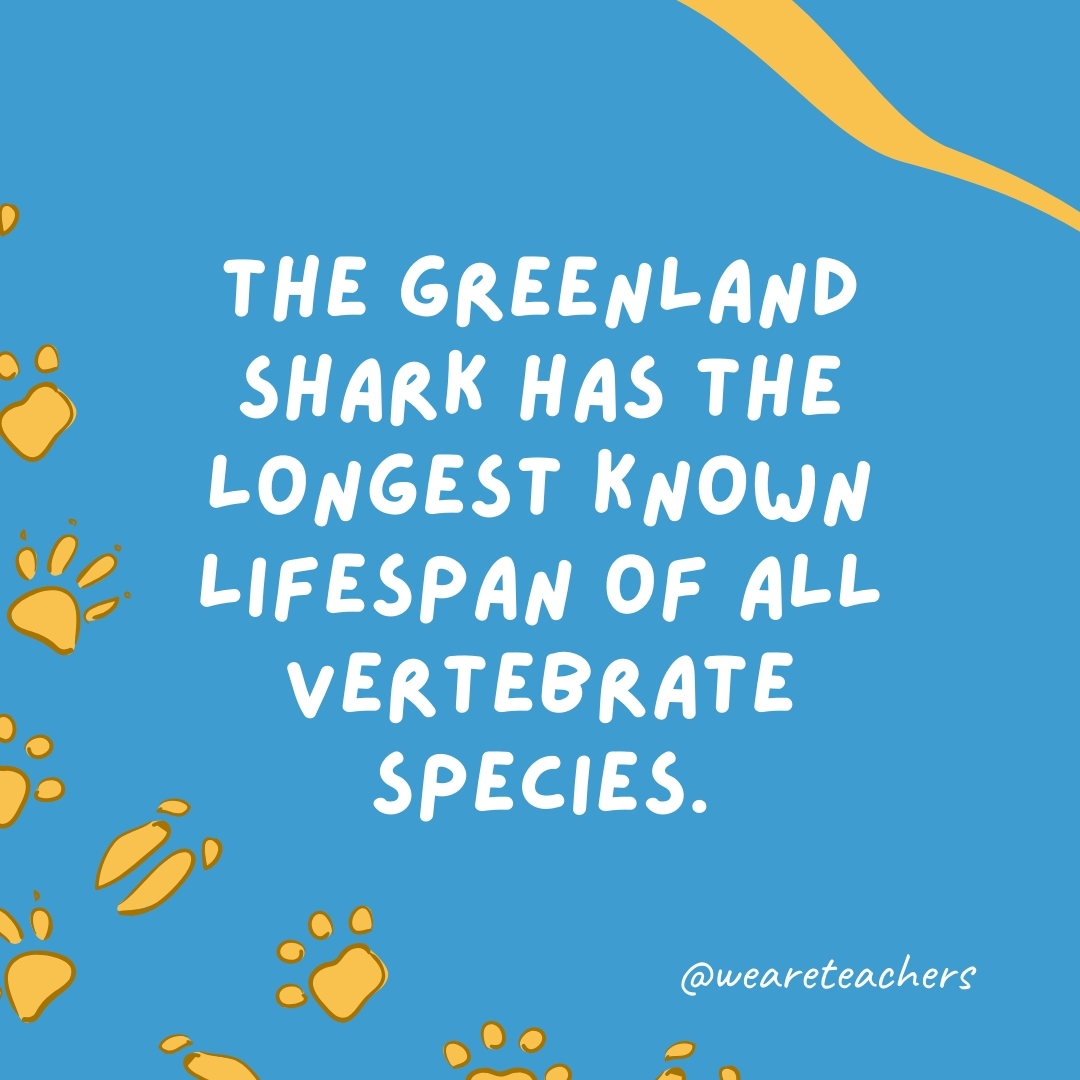
It’s estimated to be at least 272 years.
The dragonfly has been around for 300 million years.
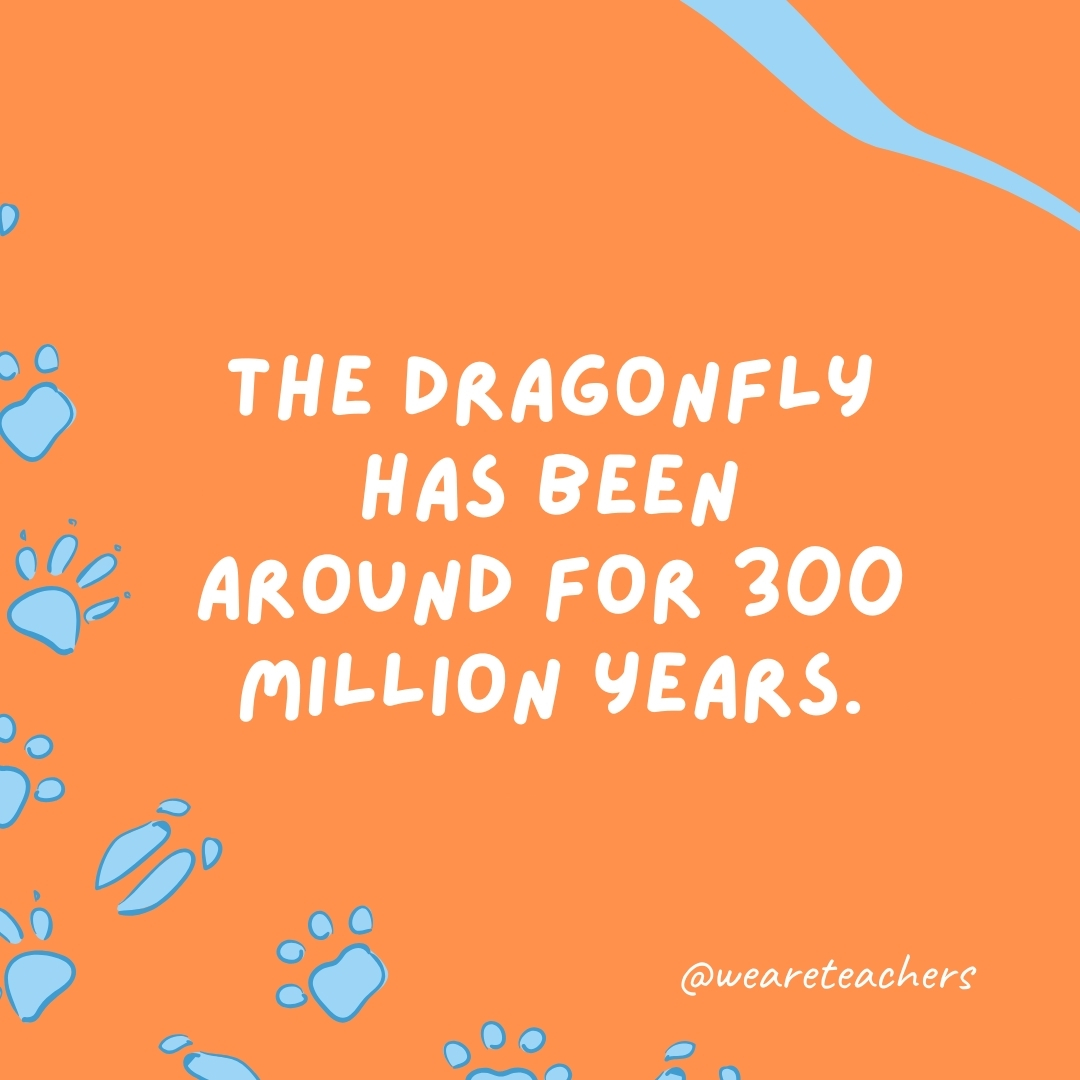
With a lineage that dates back to before the dinosaurs, dragonflies have been gliding over waterways for eons, their design barely changing over the millennia.
A group of geese on the ground is called a gaggle.
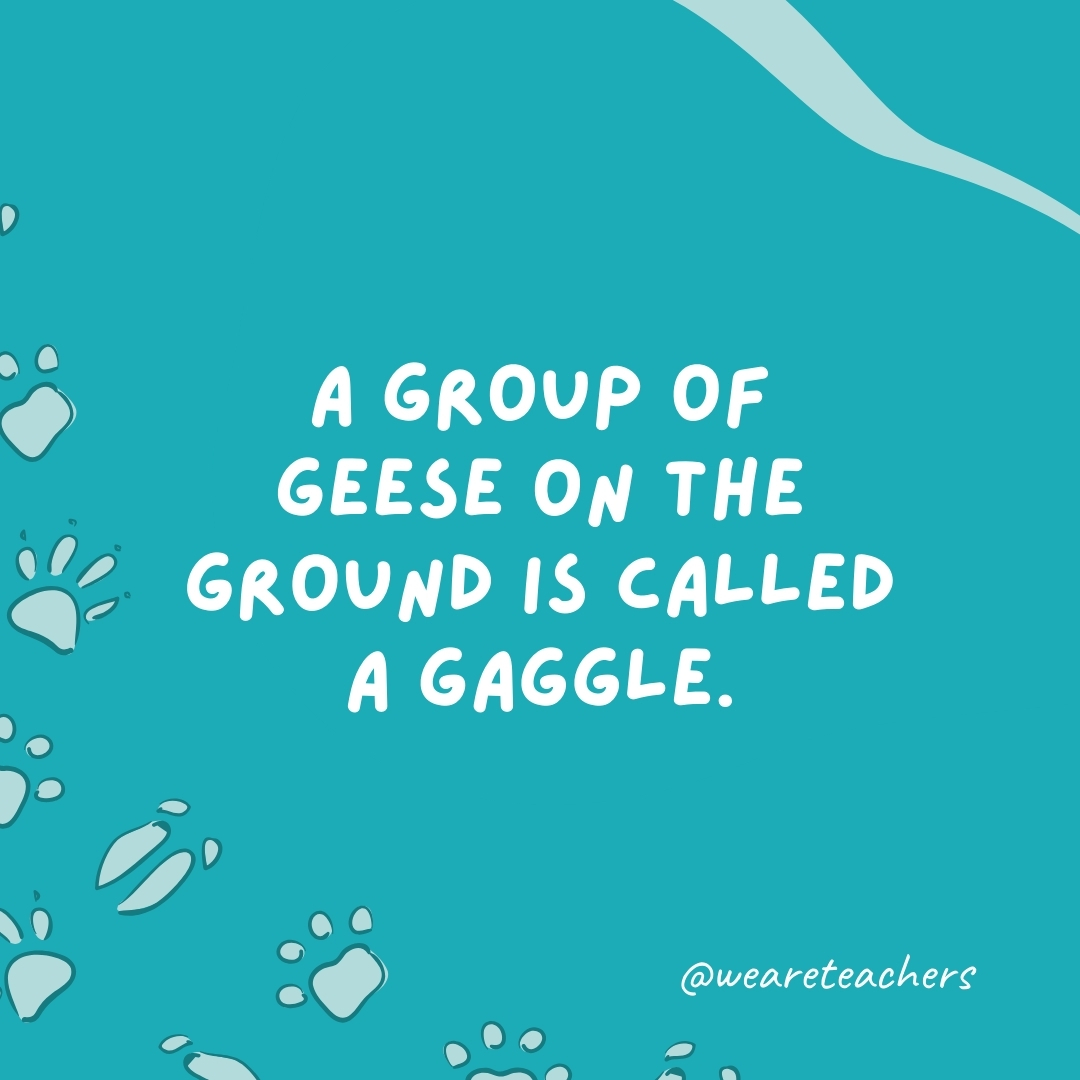
Geese exhibit different social structures based on their environment, whether honking together on land or flying in V formations in the sky. When flying, geese are referred to as a flock or skein.
The sun bear is the smallest of the bear species.
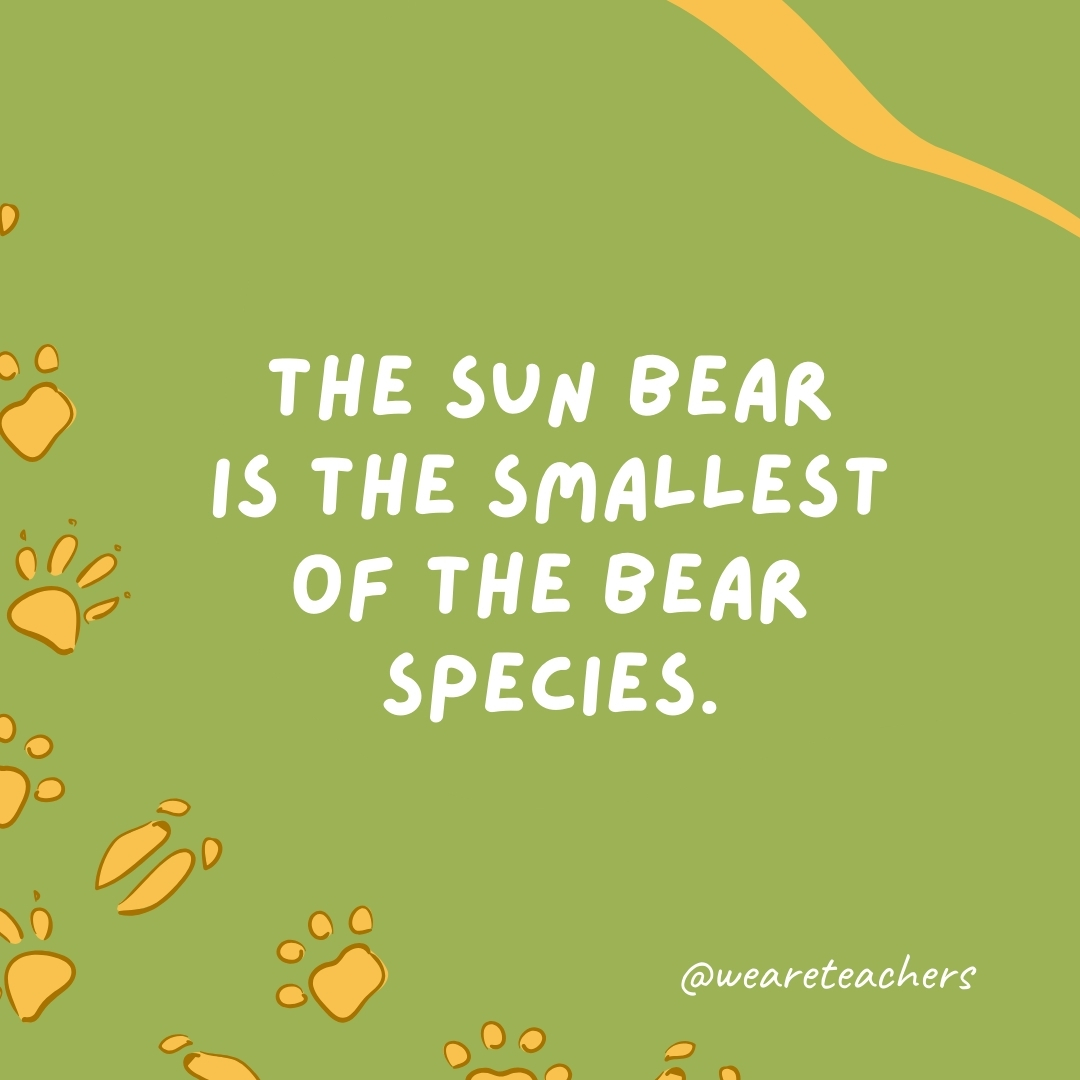
Found in the tropical forests of Southeast Asia, the sun bear’s compact size and nocturnal habits make it a unique member of the bear family.
The sailfish is the fastest fish in the ocean, capable of speeds up to 68 mph.
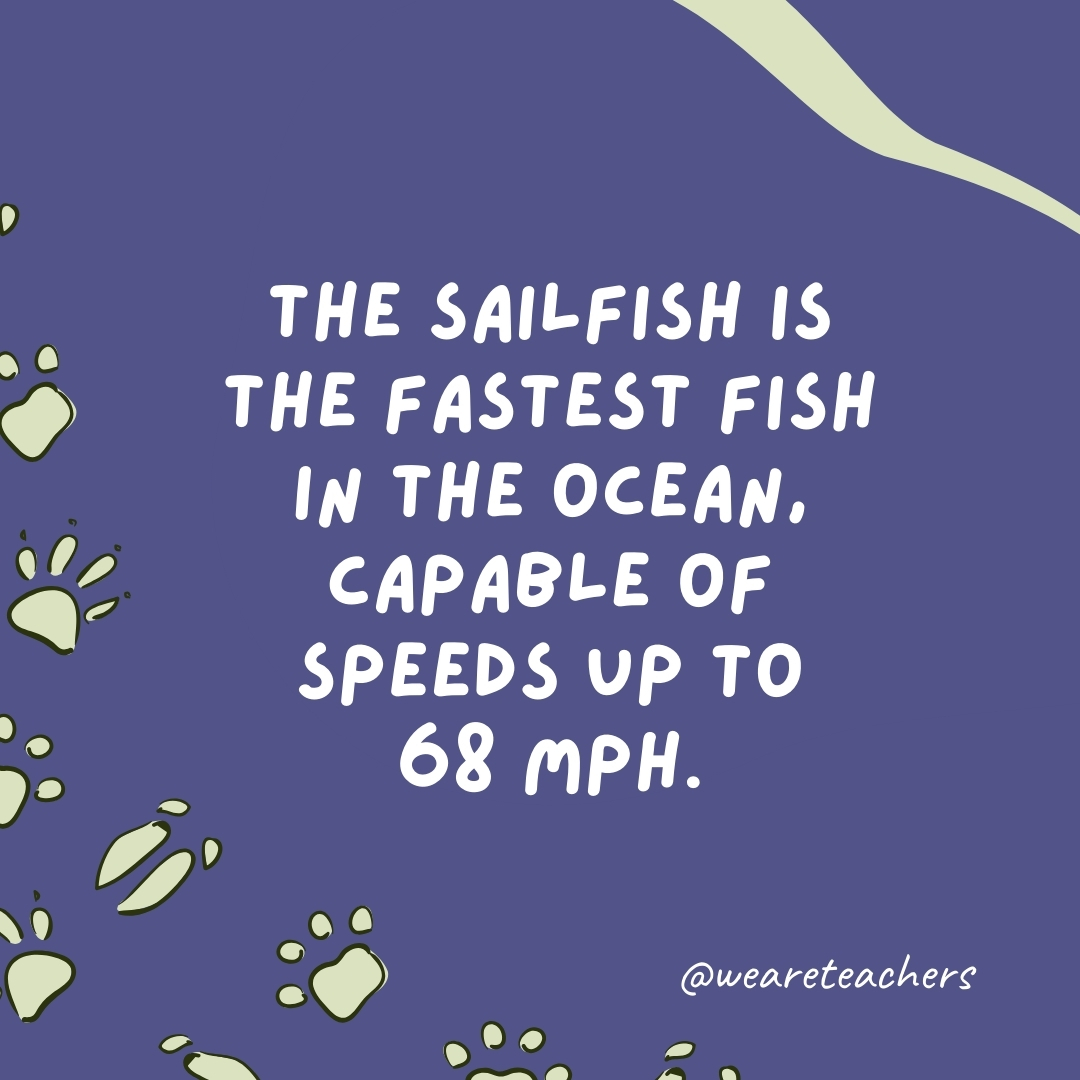
Slicing through the water with its sleek body and long, bill-like snout, the sailfish is the ocean’s speedster, hunting with incredible velocity.
The toucan’s beak is one-third of its body length.

Not just a colorful display, the toucan’s large beak is a versatile tool for reaching fruit, regulating body temperature, and engaging in social interactions.
The pistol shrimp can create a sound loud enough to break glass.

By snapping its claw shut at lightning speed, the pistol shrimp generates a cavitation bubble that collapses with a loud pop, capable of stunning its prey and deterring predators.
The African gray parrot is one of the most intelligent birds.
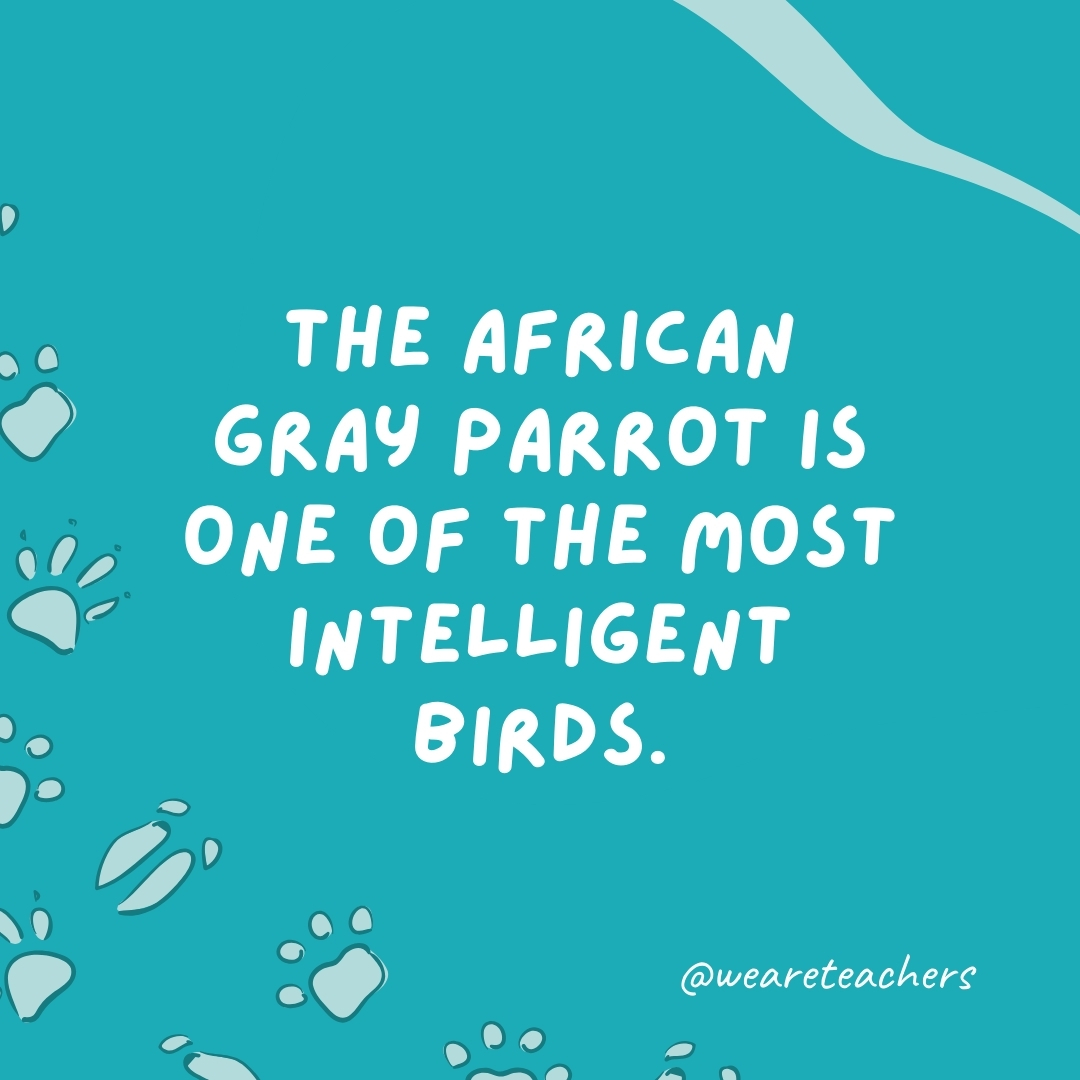
Renowned for their cognitive abilities and vocal skills, African gray parrots can learn an impressive vocabulary, engage in simple conversations, and even develop an understanding of concepts like color and shape.
A group of monkeys is called a troop.
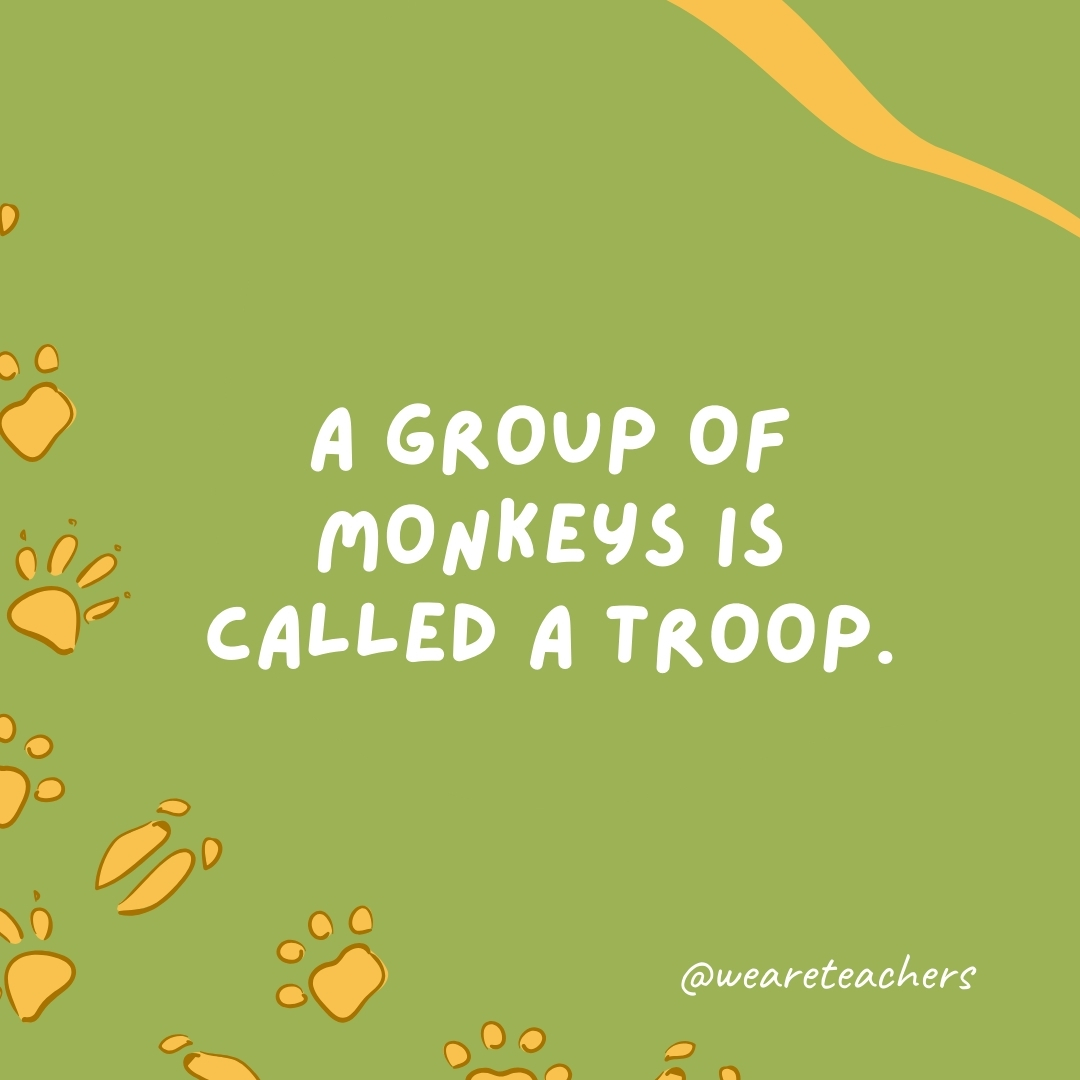
Monkeys, with their social nature and complex behaviors, live in troops that navigate the challenges of their environment together, forming bonds and establishing hierarchies.
The Galápagos tortoise can live to be over 100 years old, making it one of the longest-living animals.

The oldest known tortoise lived to be 175 years old!
The pygmy marmoset is the smallest monkey in the world.
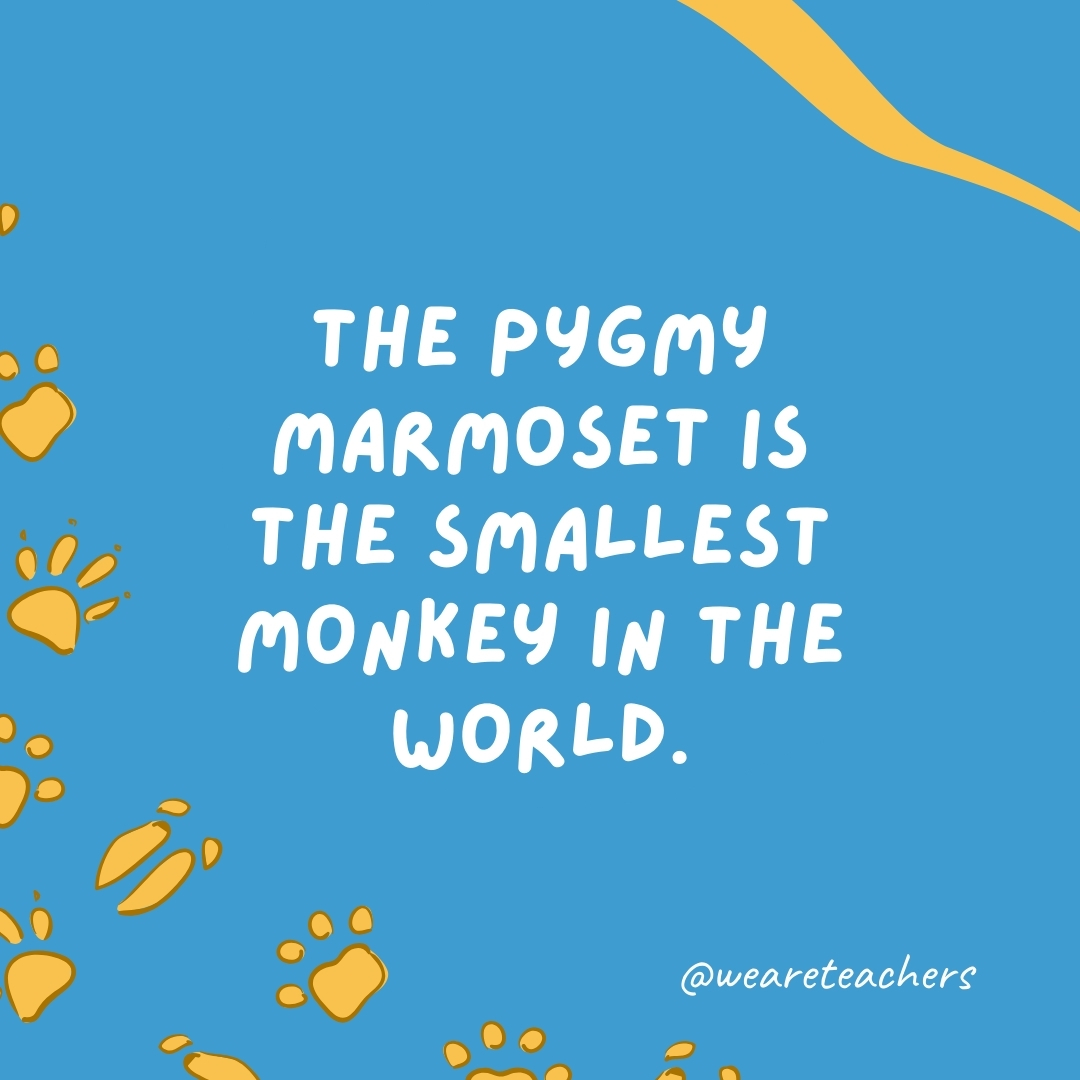
Weighing as little as a stick of butter, this tiny primate clings to the trees of the South American rainforests, leaping and feasting on gum and insects.
A group of cats is called a clowder.

Cats, known for their independent yet occasionally social nature, come together in clowders, sharing territories and occasionally forming bonds.
Jellyfish are made up of 95% water.
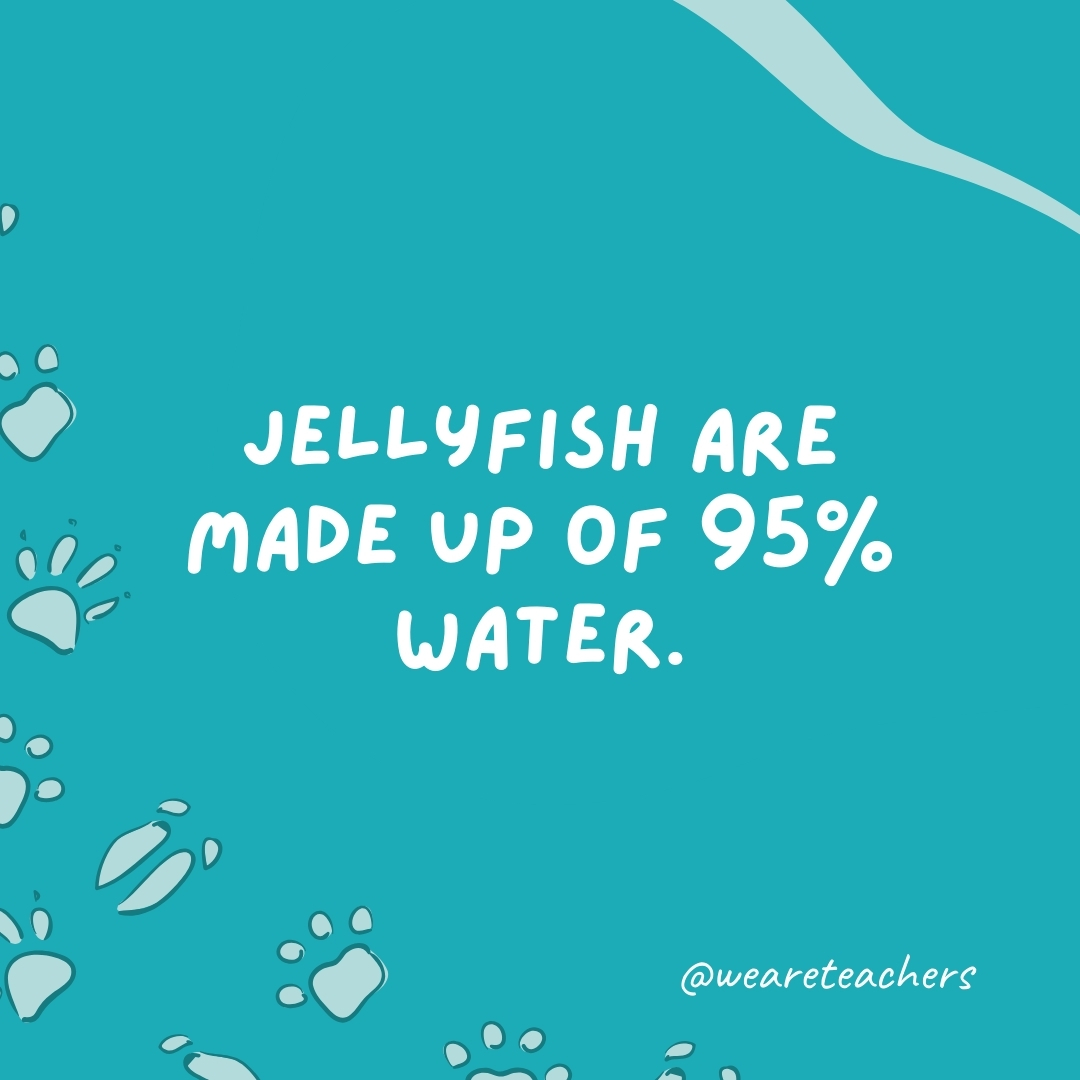
These ethereal sea creatures drifting through the world’s oceans are made almost entirely of water, giving them their ghostly, translucent appearance.
The honeybee can fly at 15 miles per hour.

Buzzing from flower to flower, honeybees are not only crucial pollinators but also nimble flyers, covering large distances in their quest for nectar.
The tunnel system where rabbits live is called a warren.

Rabbits, with their burrowing habits and social structures, form warrens, complex networks of underground tunnels where they live and raise their young.
The blue-ringed octopus carries enough venom to kill 26 adult humans.
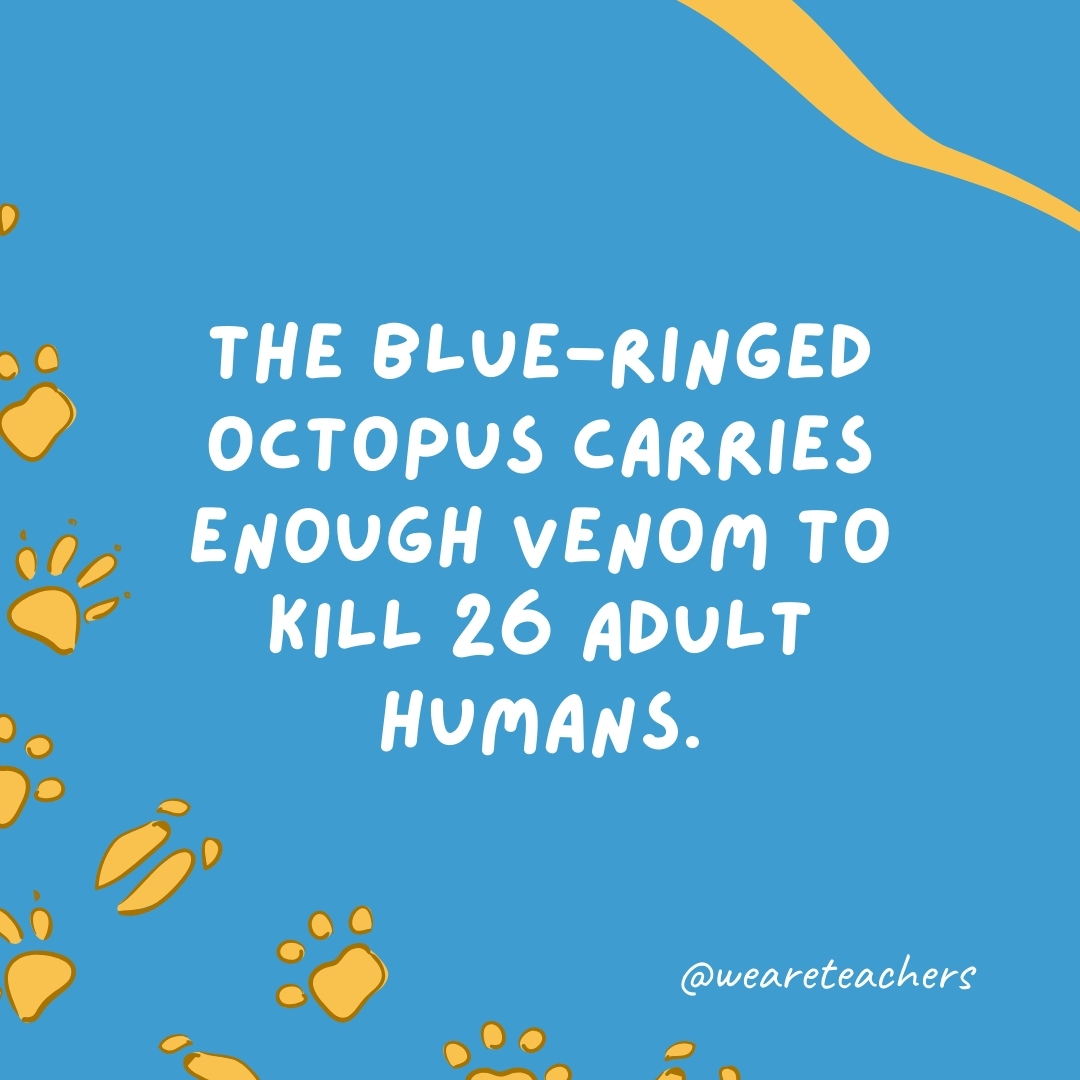
This tiny but deadly cephalopod, adorned with iridescent blue rings, harbors a potent neurotoxin, making it one of the ocean’s most dangerous inhabitants.
The giant squid has the largest eyes in the animal kingdom.
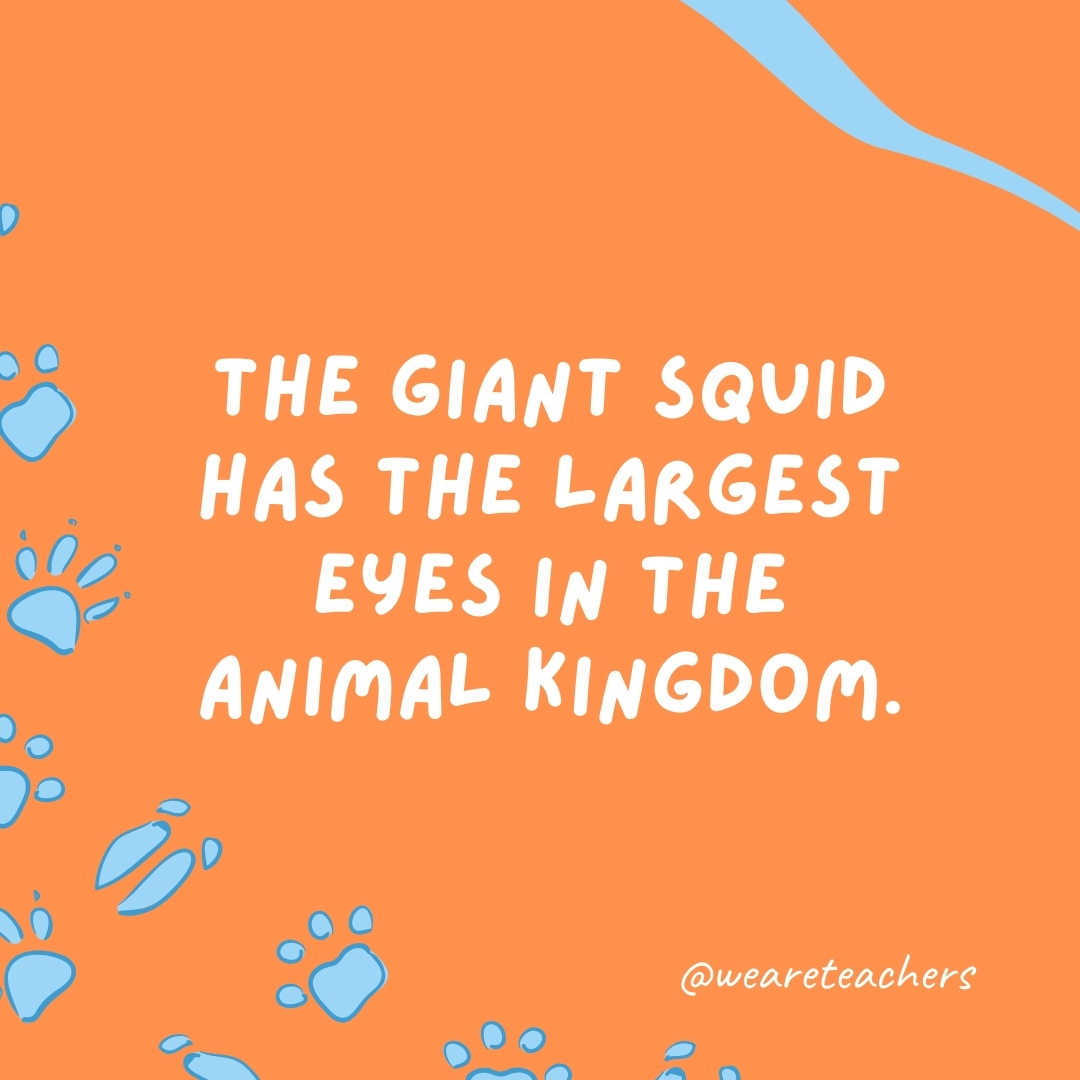
Peering through the deep, the giant squid’s dinner plate–size eyes are adapted to detect faint glimmers of light, helping it navigate the murky depths.
A group of squirrels is called a scurry.

Their other collective names include squad, colony, and dray.
The falcon is the fastest bird, capable of diving at 240 mph.
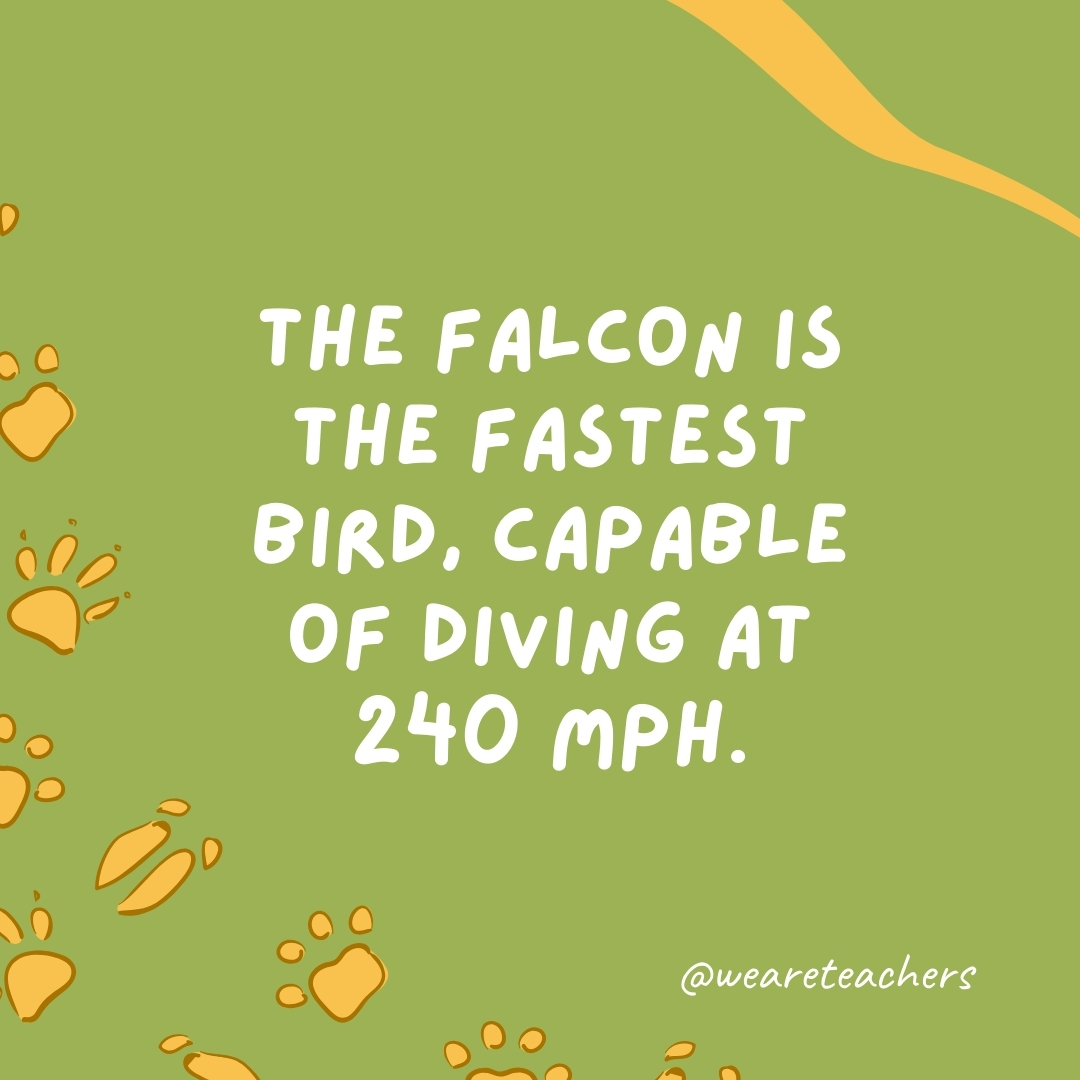
In its hunting stoop, the peregrine falcon becomes a living missile, plummeting towards its prey at speeds that make it the fastest bird on earth.
The komodo dragon can eat 80% of its body weight in one meal.

The formidable komodo dragon, with its voracious appetite, devours huge meals with efficiency, ruling over its island habitat as a top predator.
A group of parrots is called a pandemonium.

Reflecting the noisy, chaotic nature of their social interactions, a group of parrots is fittingly known as a pandemonium, a term as colorful as the birds themselves.
The star-nosed mole is the fastest-eating mammal.

They take as little as 227 milliseconds to identify and consume their food.
The capuchin monkey uses tools more variedly and effectively than any other animal but humans.
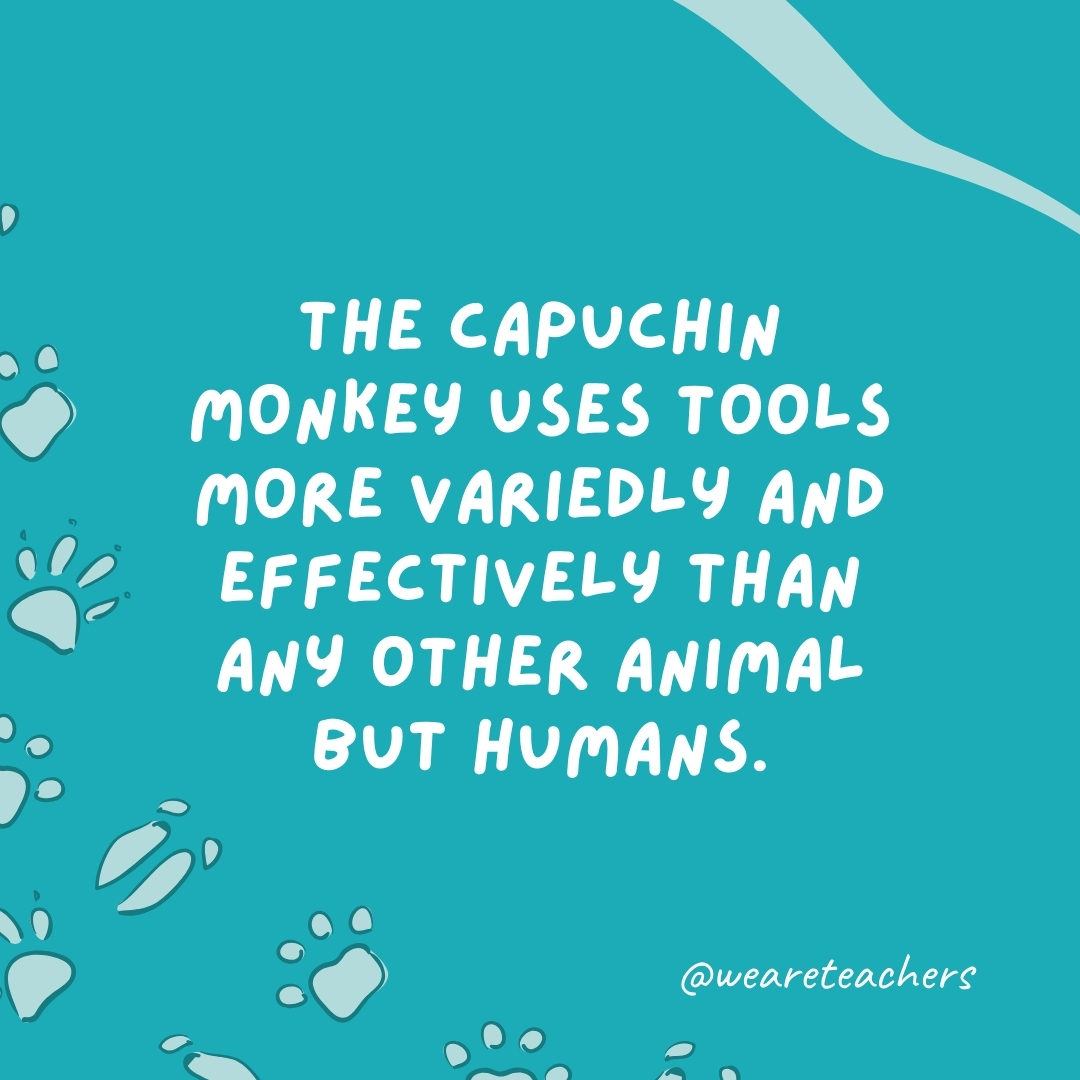
These intelligent primates have been observed using rocks to crack nuts, sticks to fish for termites, and even sponges made from leaves to soak up water, showcasing their remarkable problem-solving skills.
A group of starlings is called a murmuration.

In the twilight skies, starlings come together in murmurations, performing breathtaking aerial ballets that ripple and swirl, a natural spectacle of coordination and beauty.
The cheetah can accelerate from 0 to 60 miles per hour in just 3 seconds.

The epitome of speed, the cheetah’s acceleration outmatches most sports cars, making it a supreme hunter on the African plains.
The proboscis monkey is named for its long nose, which amplifies its vocalizations.
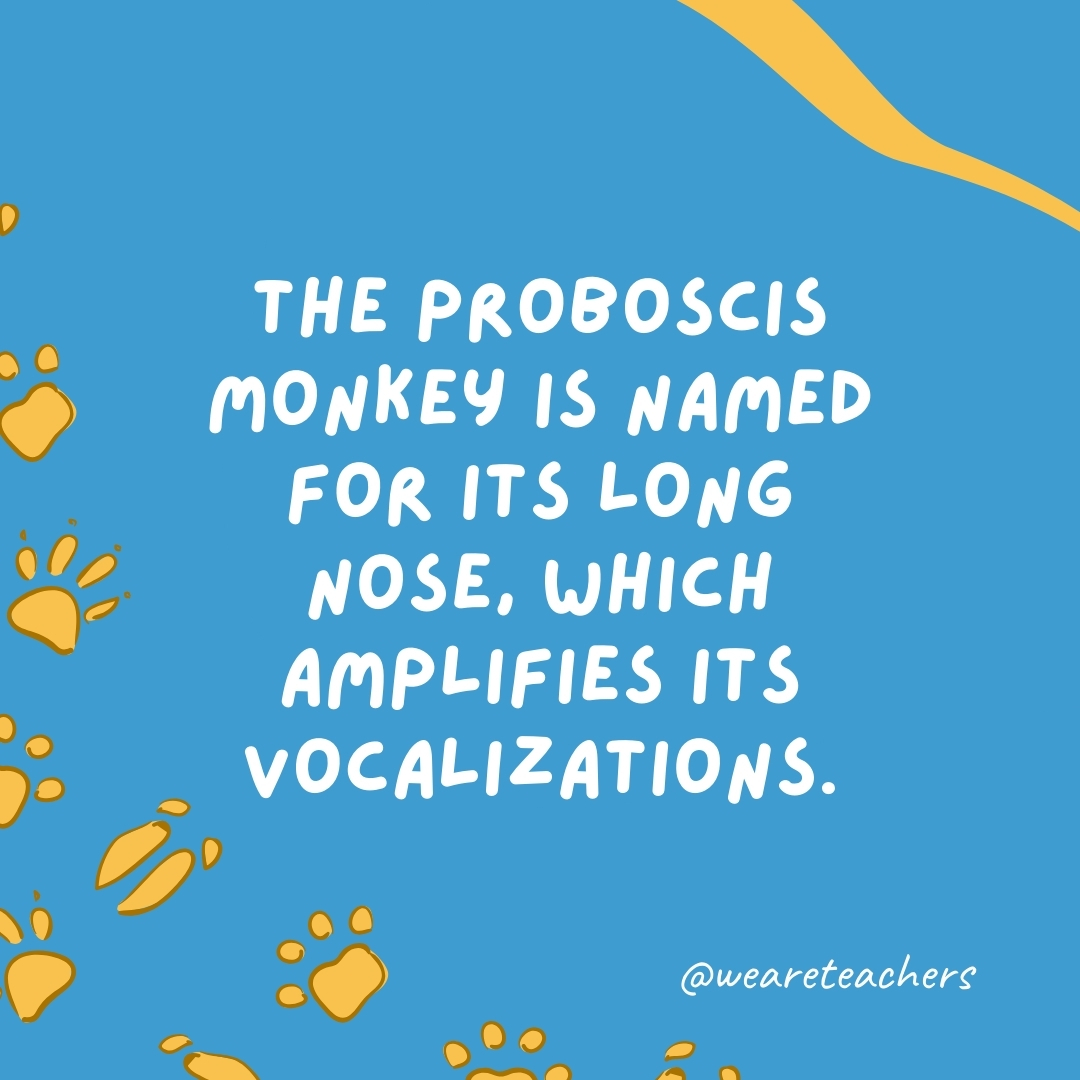
This distinctive feature of the male proboscis monkey not only plays a role in attracting mates but also enhances its calls, echoing through the mangrove forests of Borneo.
The humpback whale sings complex songs that can last up to 30 minutes.

These haunting melodies, unique to each population, are thought to play a role in communication and mating, showcasing the deep social connections of these marine giants.
An orca is not a whale.
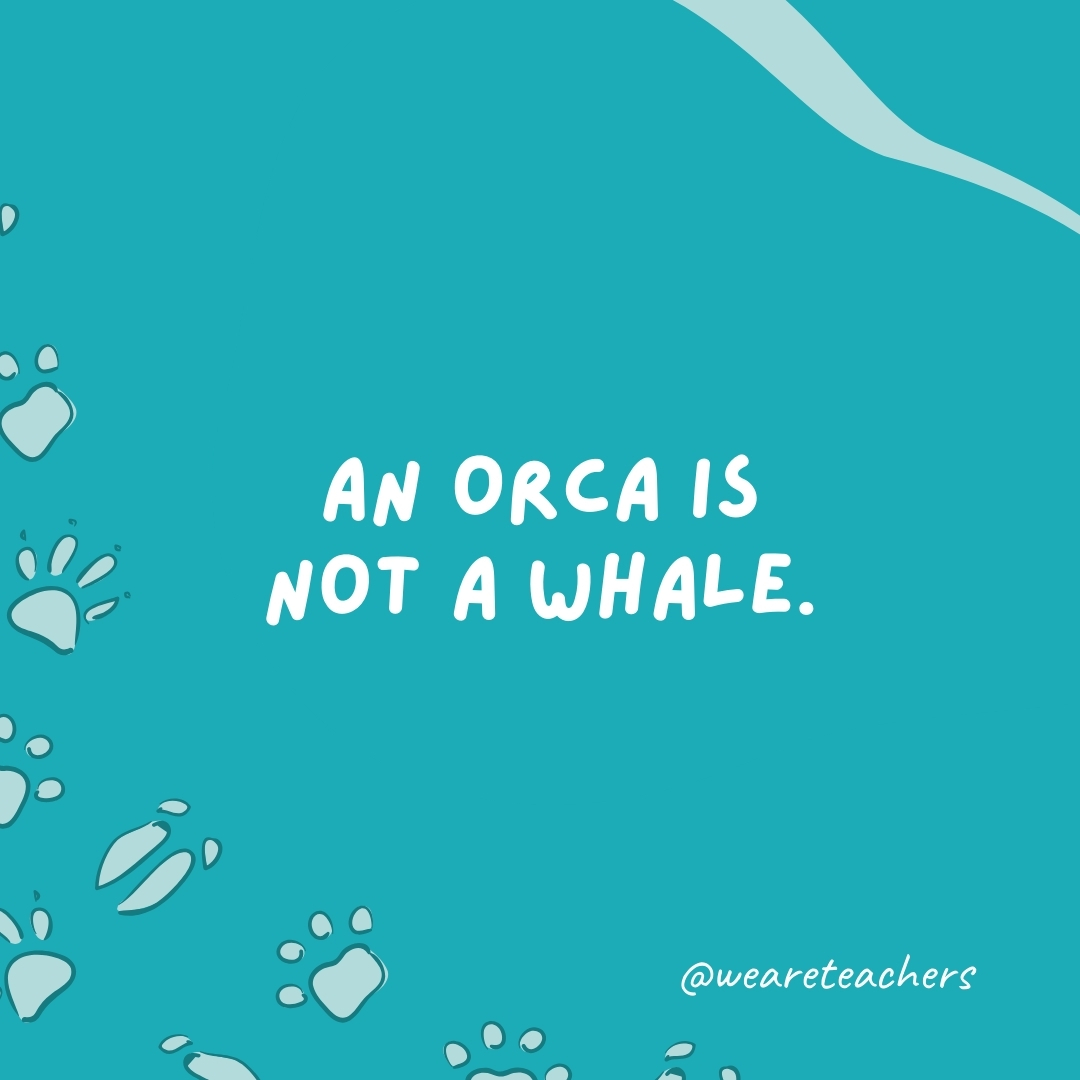
The largest member of the dolphin family, orcas are powerful predators known for their intelligence, complex social structures, and striking black-and-white coloring.
The chameleon changes its color not only for camouflage but also to express mood, temperature, and to communicate.

This ability to shift hues is a sophisticated form of communication, reflecting the chameleon’s emotions and interactions with its environment and fellow creatures.
A group of dogs is called a pack.

Dogs, with their pack mentality, form close-knit groups that hunt, play, and live together, showcasing their ancestral ties to wolves.
The gray parrot can live up to 60 years in captivity.
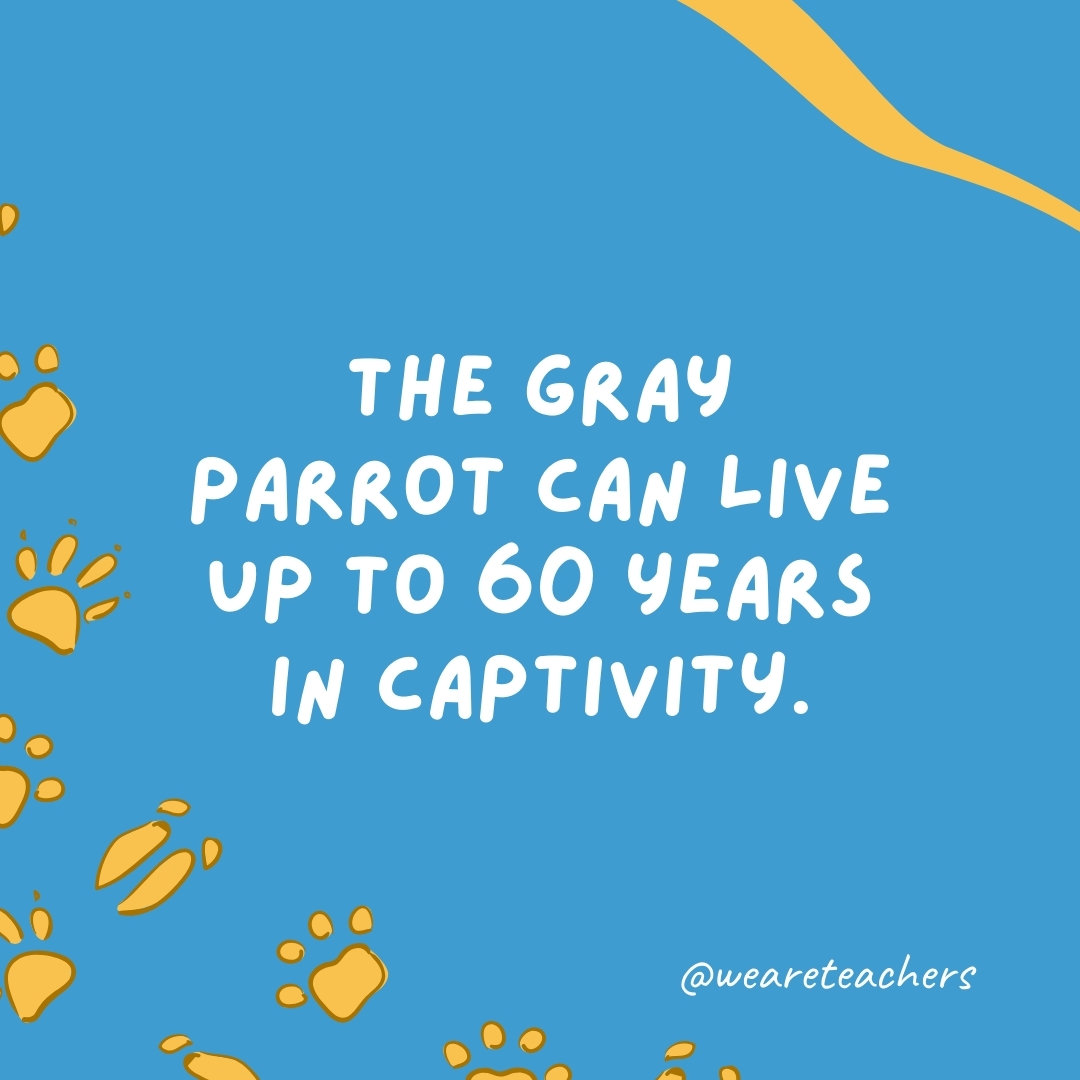
Known for their intelligence and ability to mimic human speech, gray parrots are long-lived companions that form deep bonds with their human caretakers.
A group of hyenas is called a clan.

Hyenas, known for their laughter-like calls, can also be called a cackle.
The platypus senses its prey through electroporation.

This unique sensory ability allows the platypus to hunt underwater with its eyes, ears, and nose closed, navigating and finding food through electrical signals.
The tarsier can rotate its head nearly 180 degrees in either direction.

With its large, fixed eyes, the tarsier compensates with an incredibly flexible neck, allowing it to scan its environment for prey and predators alike.
The blue-footed booby dances to attract a mate.

Watch this video for footage of the blue-footed booby’s adorable dance.
A group of rats is called a mischief.

This term aptly describes the playful and sometimes troublesome nature of rats, who are known for their curiosity and knack for getting into tight spots.
The monarch butterfly migrates up to 3,000 miles each year.
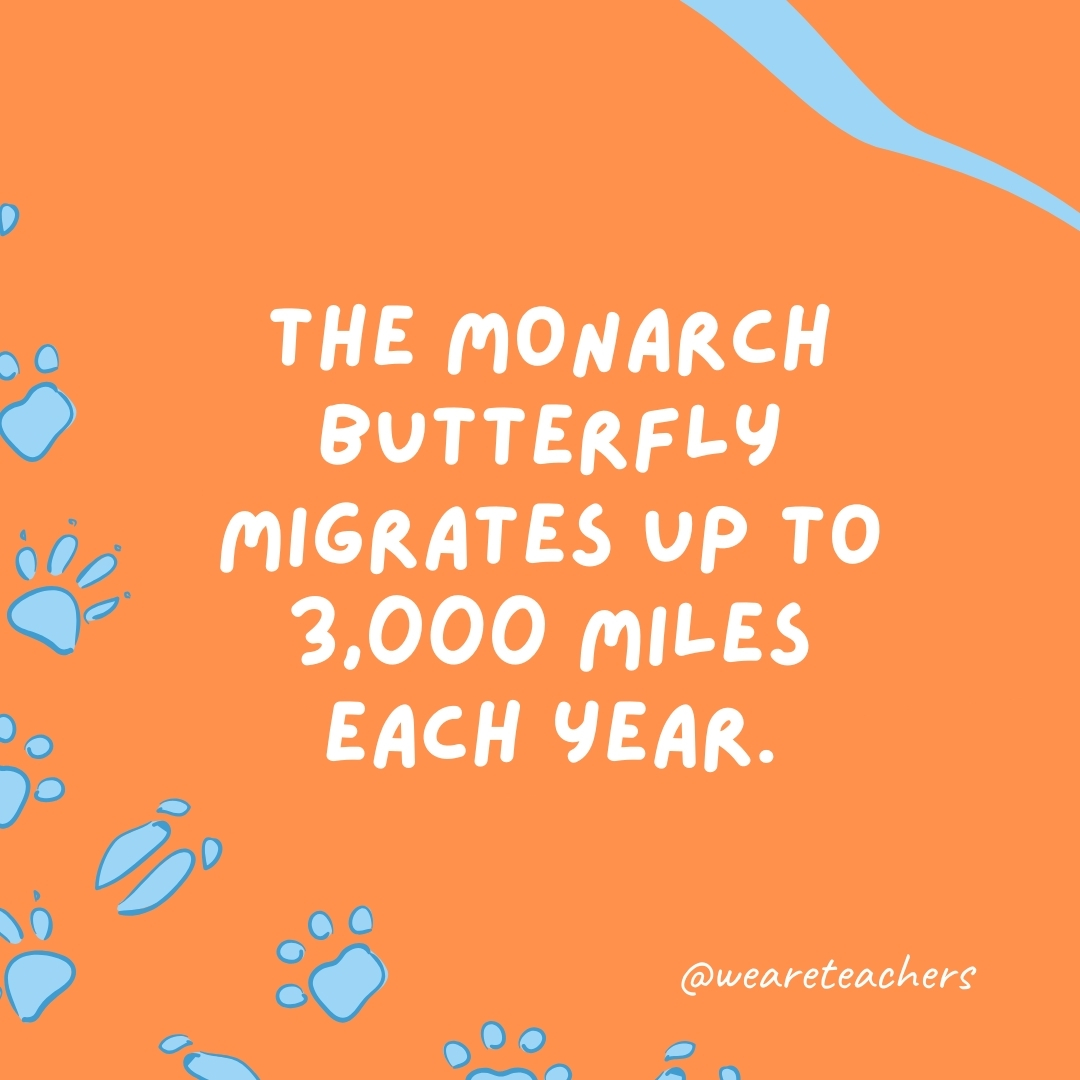
Embarking on one of the most remarkable journeys in the animal kingdom, monarch butterflies travel vast distances, from Canada to Mexico, in a multi-generational odyssey that spans the continent.
A group of swans is called a bevy or a wedge when in flight.

Swans, with their graceful elegance, gather in bevies on the water, transforming into a wedge formation as they take to the skies, a testament to their beauty and coordination.
The coconut crab is the largest land-living arthropod in the world.

This formidable crab, with its powerful claws, not only dominates the terrestrial invertebrate world but also showcases the incredible diversity and adaptability of crustaceans.
A group of quails is called a covey.

These small, ground-nesting birds form close-knit groups known as coveys (but also bevys and flocks), providing warmth, protection, and social interaction within their habitats.
The two-toed sloth is one of the slowest-moving animals in the world.
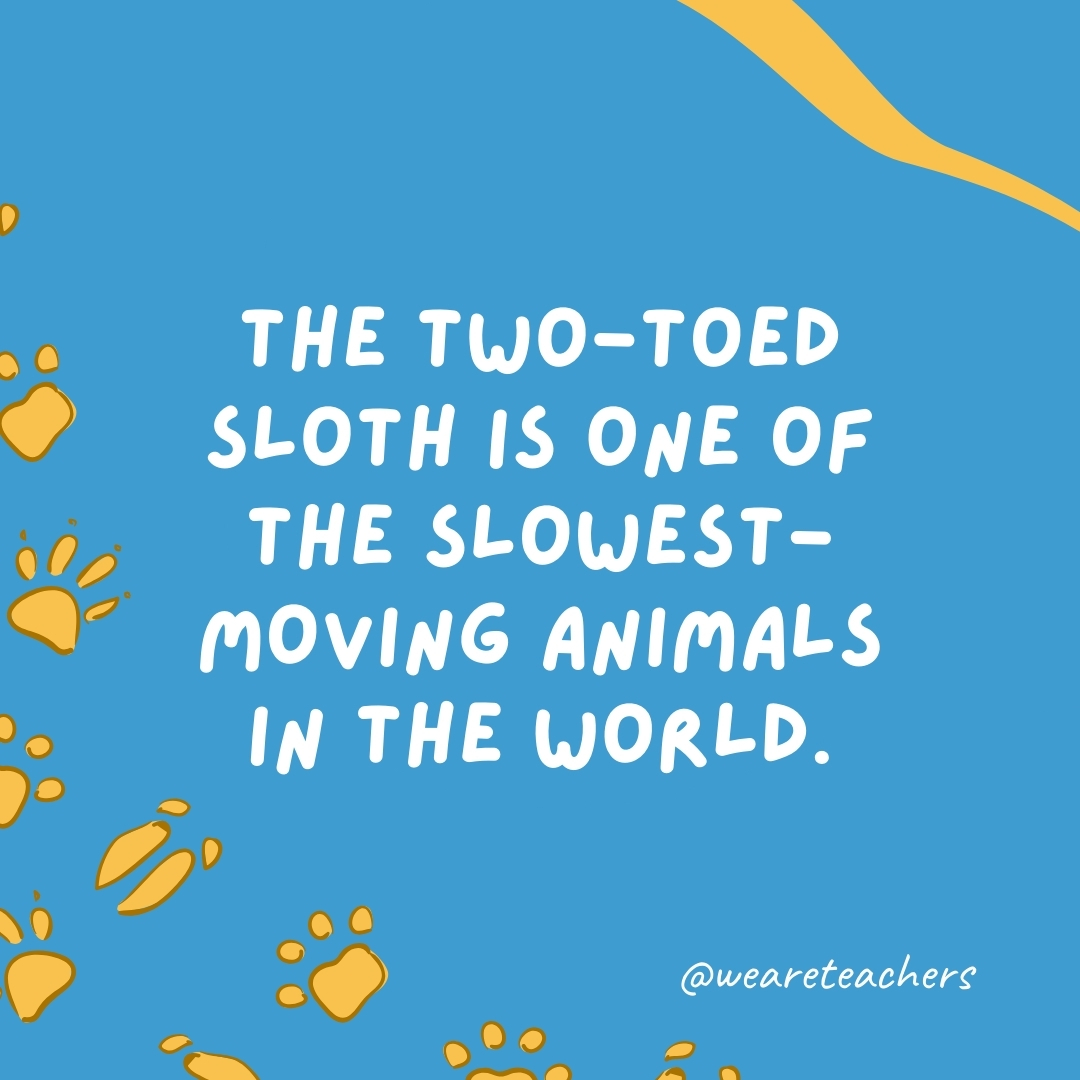
It commonly travels at a top speed of 0.03 miles per hour!
The water bear can survive extreme conditions, including in outer space.

These microscopic creatures are virtually indestructible, enduring environments from the deep sea to the vacuum of space, a testament to life’s resilience.
A group of snakes is called a nest or a pit.

Whether coiled in a nest or gathered in a pit, snakes evoke both fascination and fear, representing the diverse and often misunderstood world of reptiles.
The wandering albatross has the largest wingspan of any living bird.

The largest documented had a wingspan of 11 feet!
The black marlin is one of the fastest fish in the sea.

In the race through the ocean, the black marlin is a formidable competitor, reaching speeds up to 82 mph!
Elephants communicate over long distances using infrasound that humans cannot hear.

These gentle giants maintain complex social bonds and coordinate movements through low-frequency sounds, demonstrating the depth of their communicative abilities.
A group of giraffes is called a tower.
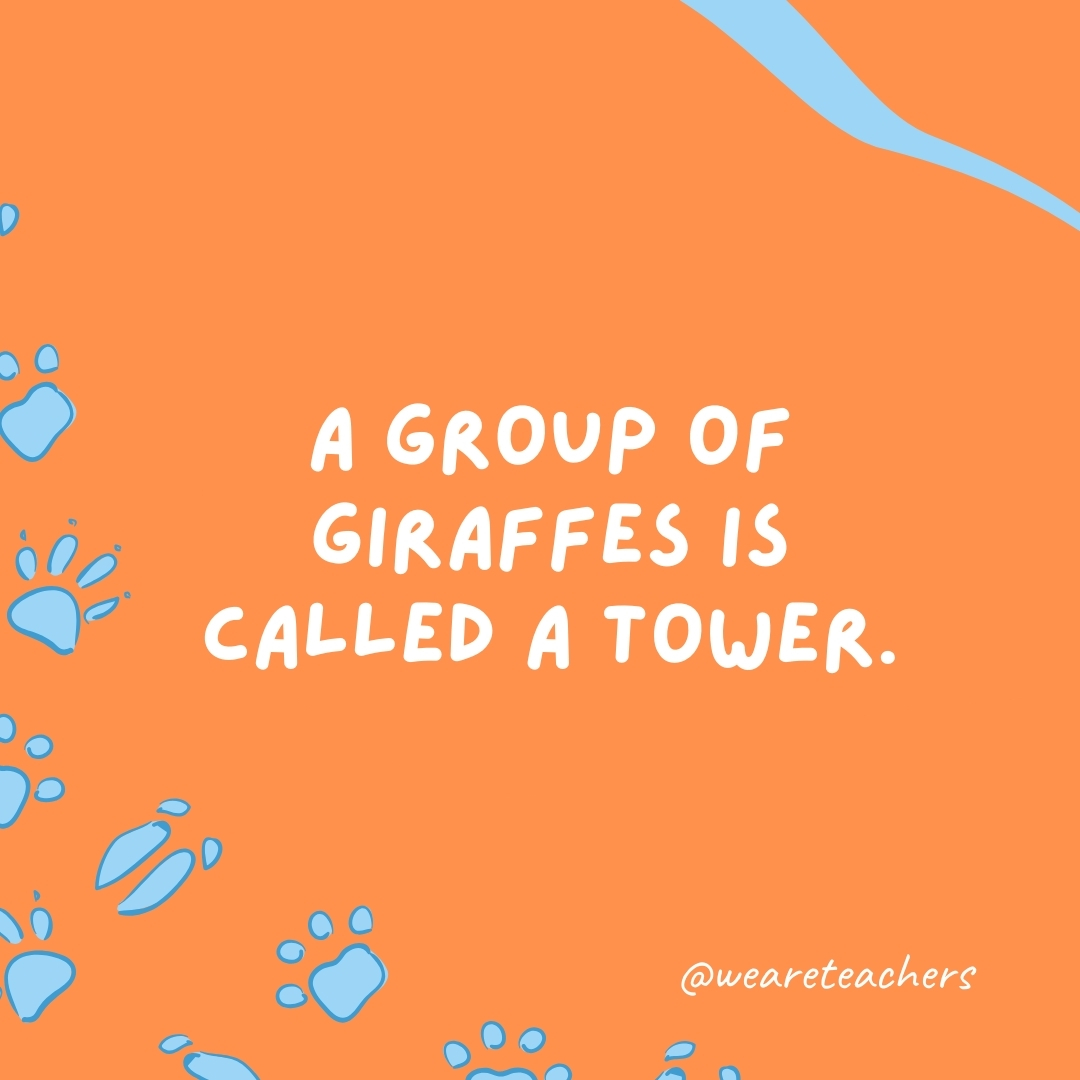
Elegantly stretching toward the sky, giraffes form what is aptly called a tower, a sight that captures the majesty and grace of these tallest of terrestrial animals.
The electric eel generates enough electricity to power 10 light bulbs.

In the murky waters of the Amazon, the electric eel wields its bioelectric capabilities not only for defense and predation but also as a fascinating example of nature’s power.
The okapi’s tongue is so long that it can wash its own eyelids and clean its ears.

This elusive forest dweller, with its zebra-striped legs and giraffe-like build, uses its lengthy tongue in a display of personal hygiene that is both bizarre and fascinating.
The sea otter uses tools such as rocks to break open shellfish.

As one of the few mammals known to use tools, sea otters exhibit remarkable intelligence and dexterity, floating on their backs as they dine on their hard-earned meals.
A group of leopards is called a leap.

Stealthy and solitary, leopards may come together in what is beautifully termed a leap, highlighting the grace and agility of these formidable predators.
The male anglerfish is much smaller than the female and spends its life attached to her body.
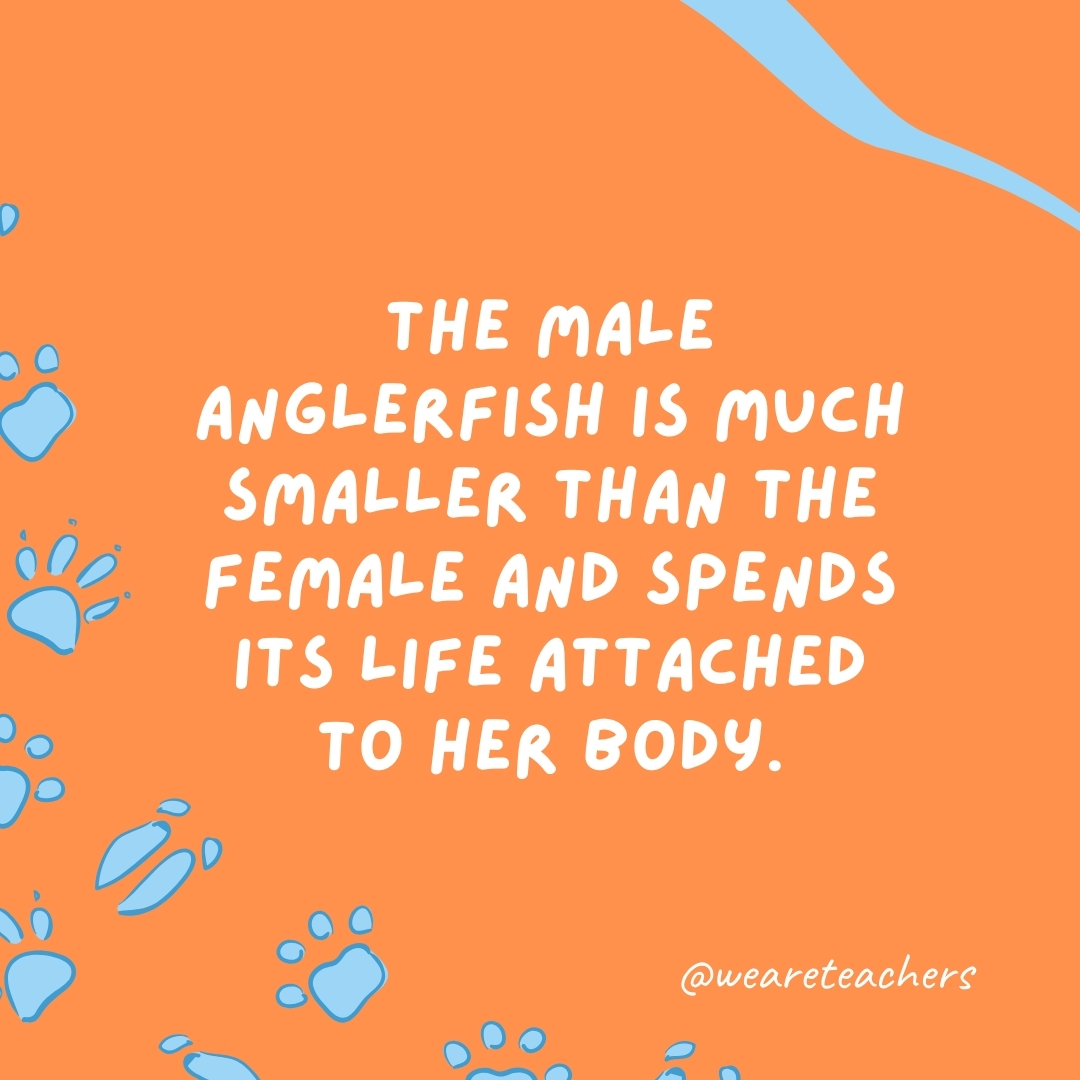
In a bizarre twist of nature, the male anglerfish becomes a permanent appendage of the female, a living testament to the extreme adaptations of deep-sea life.
The kiwi lays the largest egg in relation to its body size of any bird in the world.

Its eggs can weigh up to a quarter of its own body mass!
A group of alligators is called a congregation.

In the swamps and rivers of the American South, alligators gather in congregations, ancient reptiles that command respect and caution.
The gibbon is known for its loud, elaborate songs used to mark territory and attract mates.
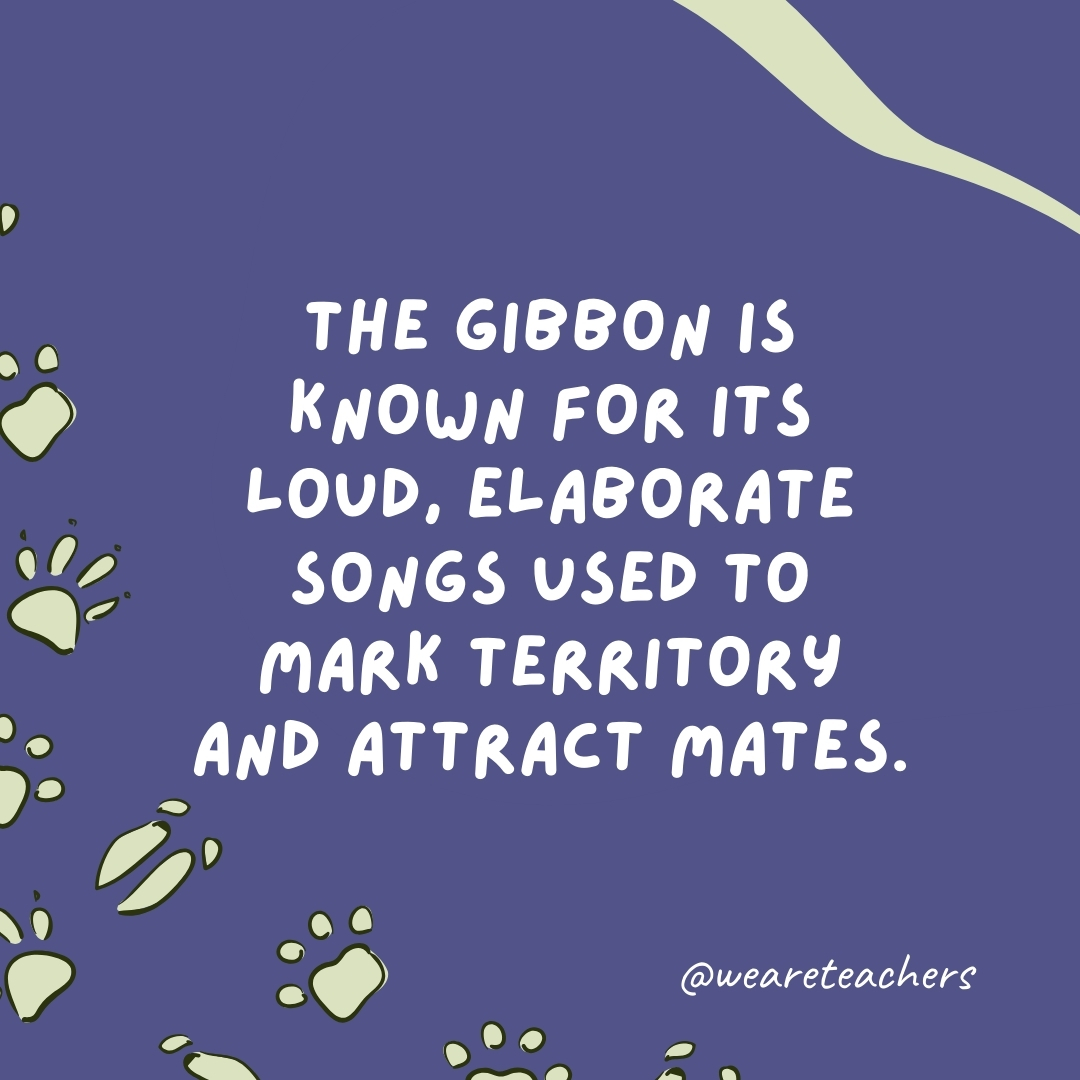
In the rainforests of Southeast Asia, the haunting calls of gibbons echo through the canopy, a symphony of sound that defines the acoustic landscape.
The hoatzin is known as the “stinkbird.”

This is due to its unique digestive system that ferments vegetation, causing a manure-like odor!
A group of toads is called a knot.

Bound together by more than just their croaks, toads form knots, a term that captures the tightly intertwined lives of these amphibians in their watery worlds.
The archerfish hunts by spitting water at insects above the surface.
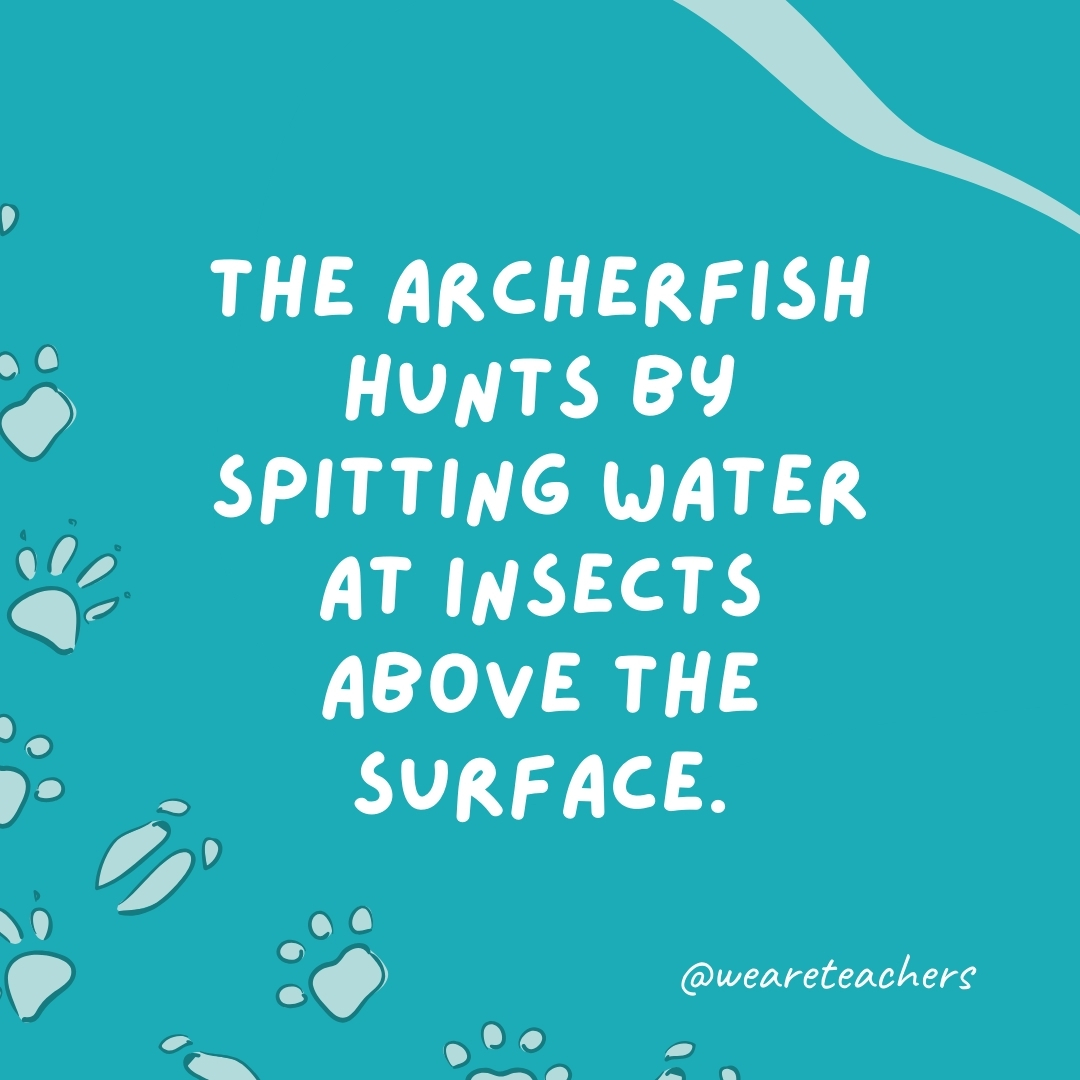
With remarkable precision, the archerfish uses water as a weapon, knocking insects into the water to eat. Watch an archerfish take down a spider with this technique!
The frigate bird can stay aloft for two months at a time.
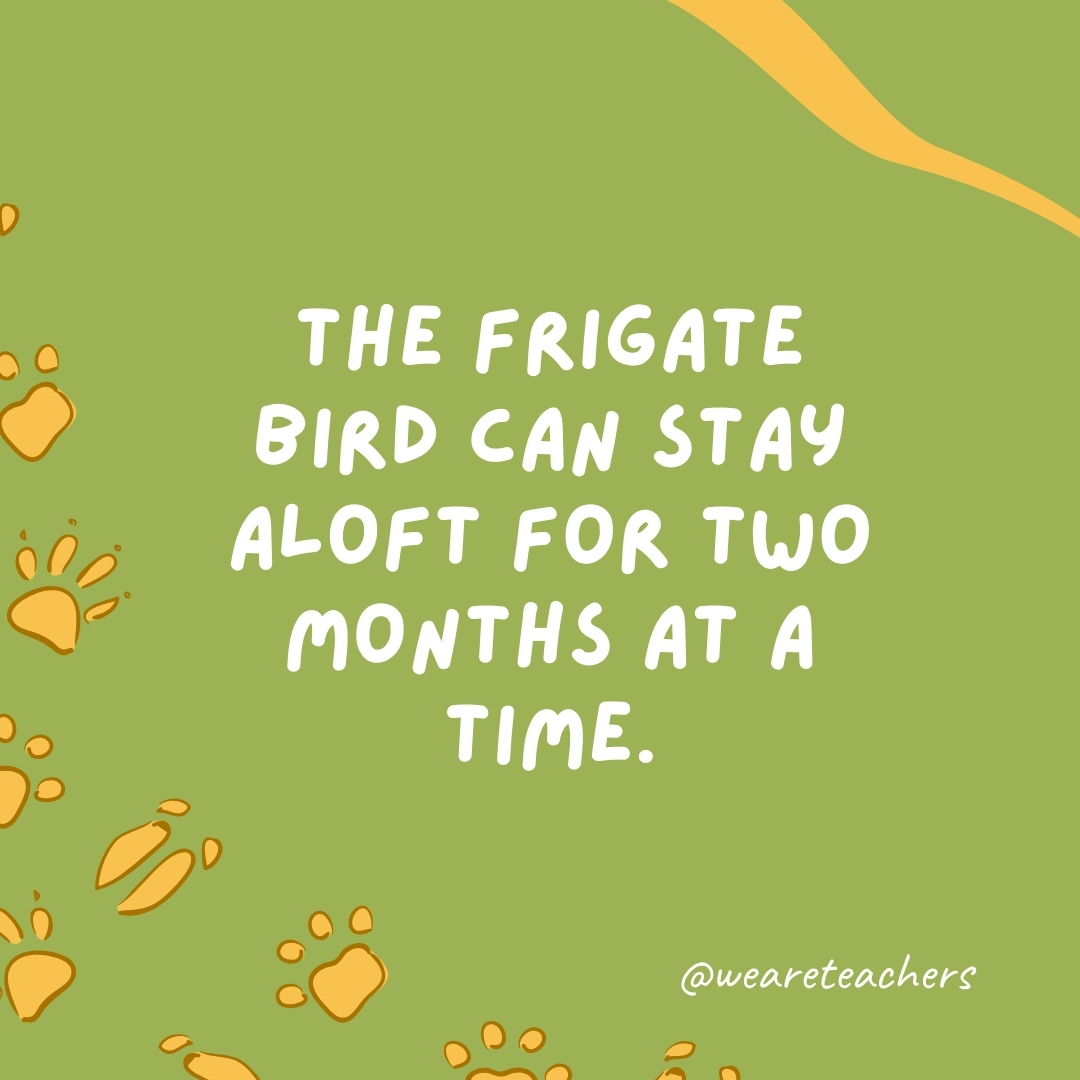
Soaring on high, the frigate bird is a marvel of endurance, spending weeks to months in flight without touching land or sea, and they can sleep while in flight!
The vampire bat is the only mammal that feeds entirely on blood.

In the shadows of the night, the vampire bat embarks on its quest for blood, a unique dietary choice that fuels myths and legends about these nocturnal creatures.
A group of seals is called a herd.

On ice floes and in coastal waters, seals gather in herds, their collective presence a reminder of the social structures that bind the animal kingdom.
The golden eagle is one of the largest, fastest, and most nimble raptors in North America.
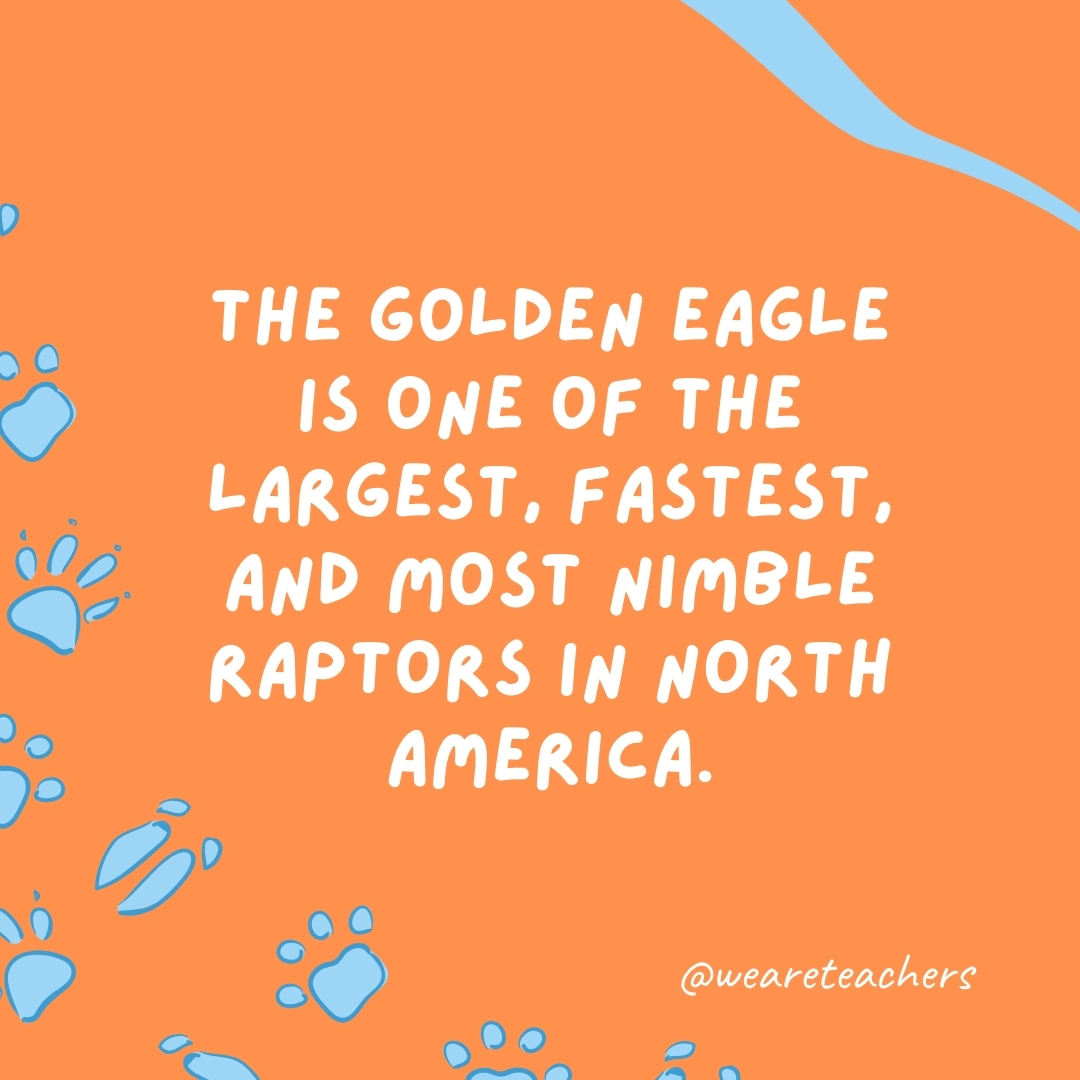
With a wingspan that commands the sky, the golden eagle is a symbol of power and precision, soaring and diving with breathtaking agility.
A group of turtles is called a bale.

In the water or on land, turtles come together in bales, slow-moving congregations that reflect the ancient lineage and enduring appeal of these reptiles.
The clouded leopard has the largest canine teeth in proportion to body size of any wild cat.

Their canines can measure 2 inches or longer!
The goliath frog is the largest frog in the world.
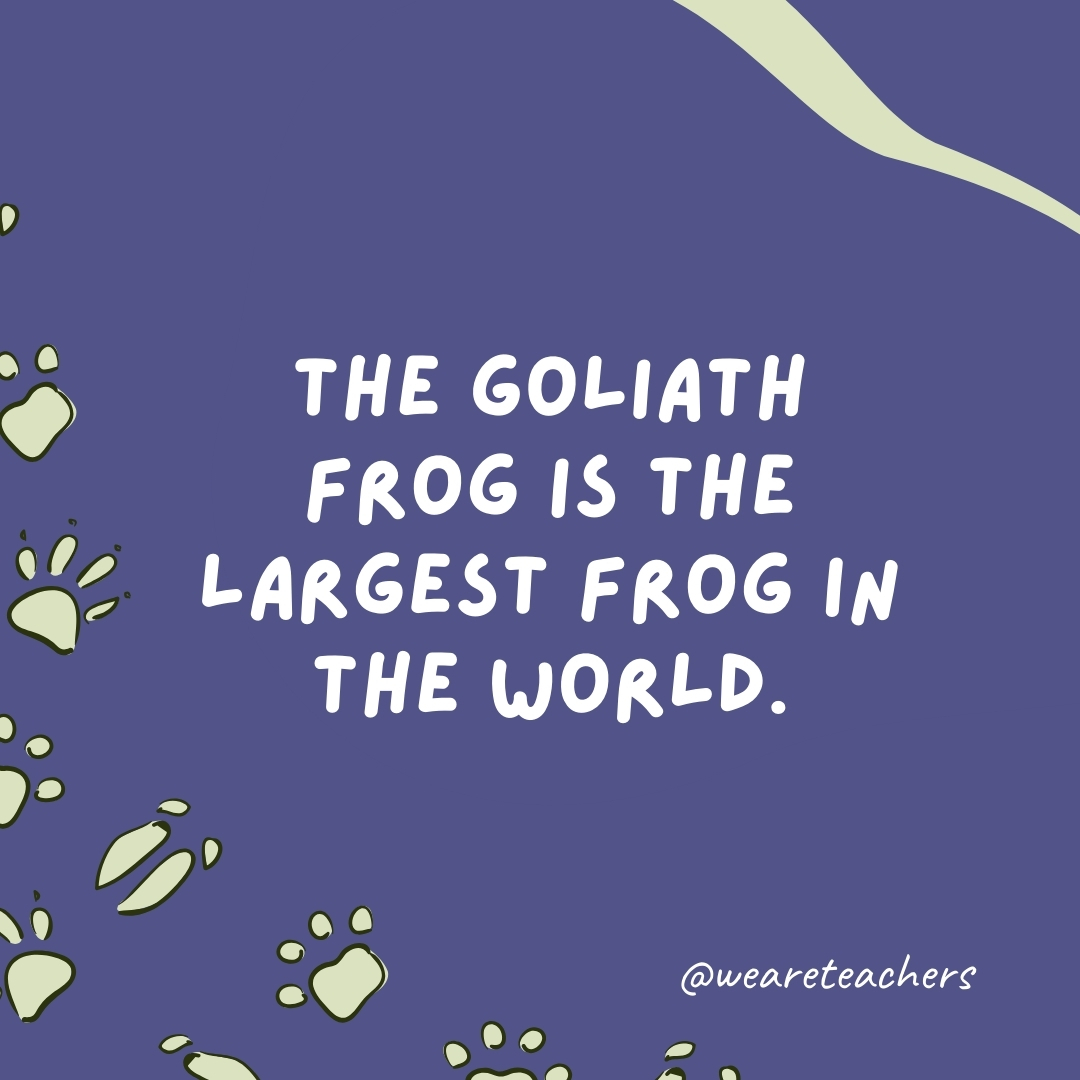
It can weigh up to 7.2 pounds and grow to 12.5 inches in length!
The snow leopard cannot roar.

Silent and elusive, the snow leopard’s quiet presence in the high mountains of Central Asia speaks to its solitary nature and the mystery that surrounds this beautiful big cat.
The honeyguide bird leads humans and other animals to beehives so that they can share in the spoils once the honey has been harvested.

In a remarkable example of interspecies cooperation, the honeyguide and humans engage in a mutualistic relationship, each benefiting from the other’s abilities in the pursuit of sweet rewards.
A group of kookaburras is called a riot.

With their raucous laughter and communal lifestyle, kookaburras create a riot of sound and activity, embodying the spirited nature of Australia’s varied birdlife.
The Amazon river dolphin, or pink dolphin, is the largest species of freshwater dolphin.

Adorned in shades of pink and living in the murky waters of the Amazon, this dolphin navigates its complex habitat with intelligence and agility, a mystical presence in the river’s folklore.
The bumblebee bat is one of the smallest mammals in the world.
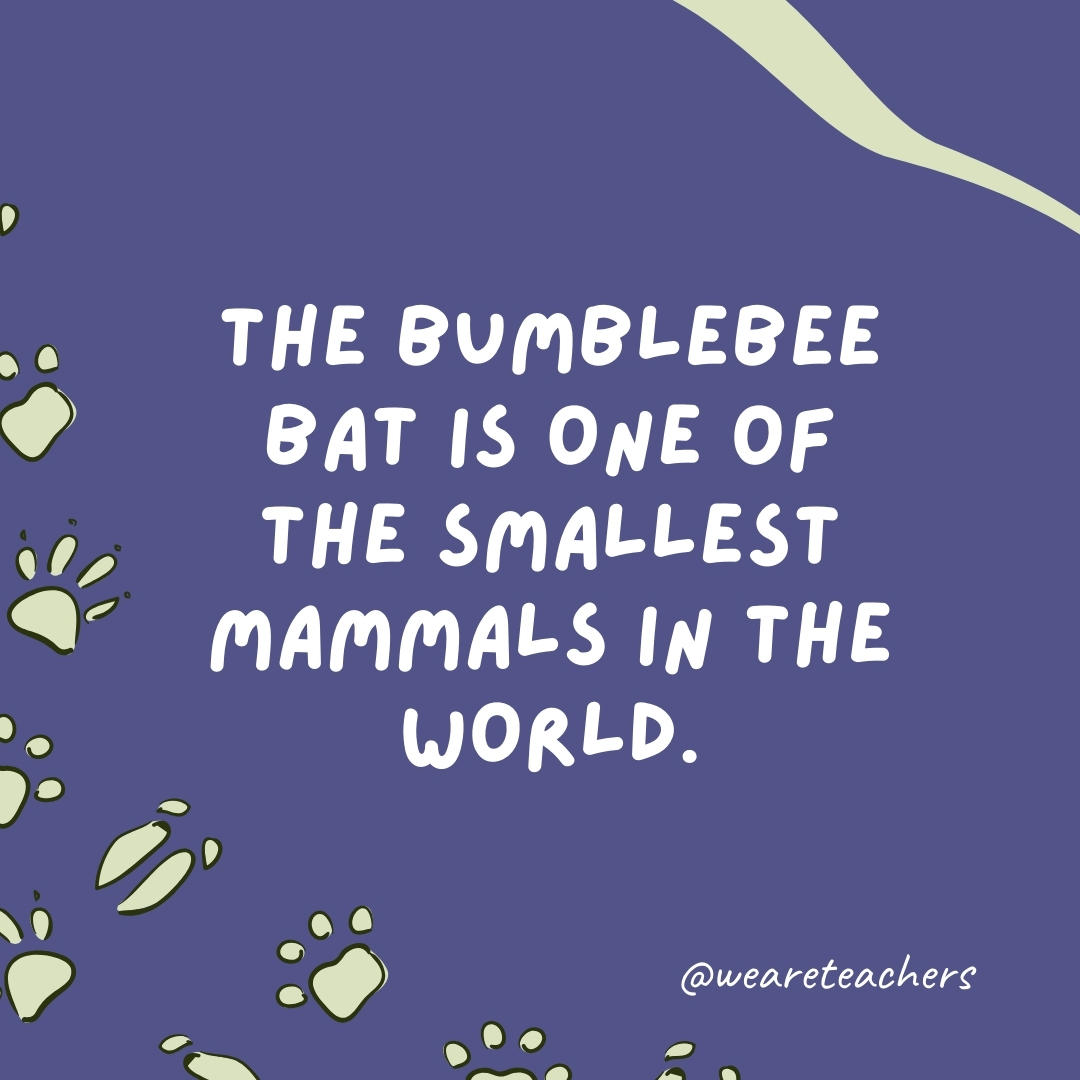
Weighing less than a penny, this tiny bat flutters through the night skies of Thailand and Myanmar, a minuscule marvel of the mammalian world.
The pygmy hippopotamus is a smaller, less aquatic relative of the common hippopotamus.

Treading through the forests and streams of West Africa, the pygmy hippo leads a more secretive life than its larger cousin, a rare glimpse into the diversity of the hippopotamus family.
The markhor is the national animal of Pakistan and has incredibly long, twisted horns.

Climbing the rugged mountains of Central Asia, the markhor’s majestic horns spiral toward the sky, a symbol of the wild beauty and resilience of nature.
The African lungfish can survive droughts by burrowing into mud and entering a state of suspended animation.
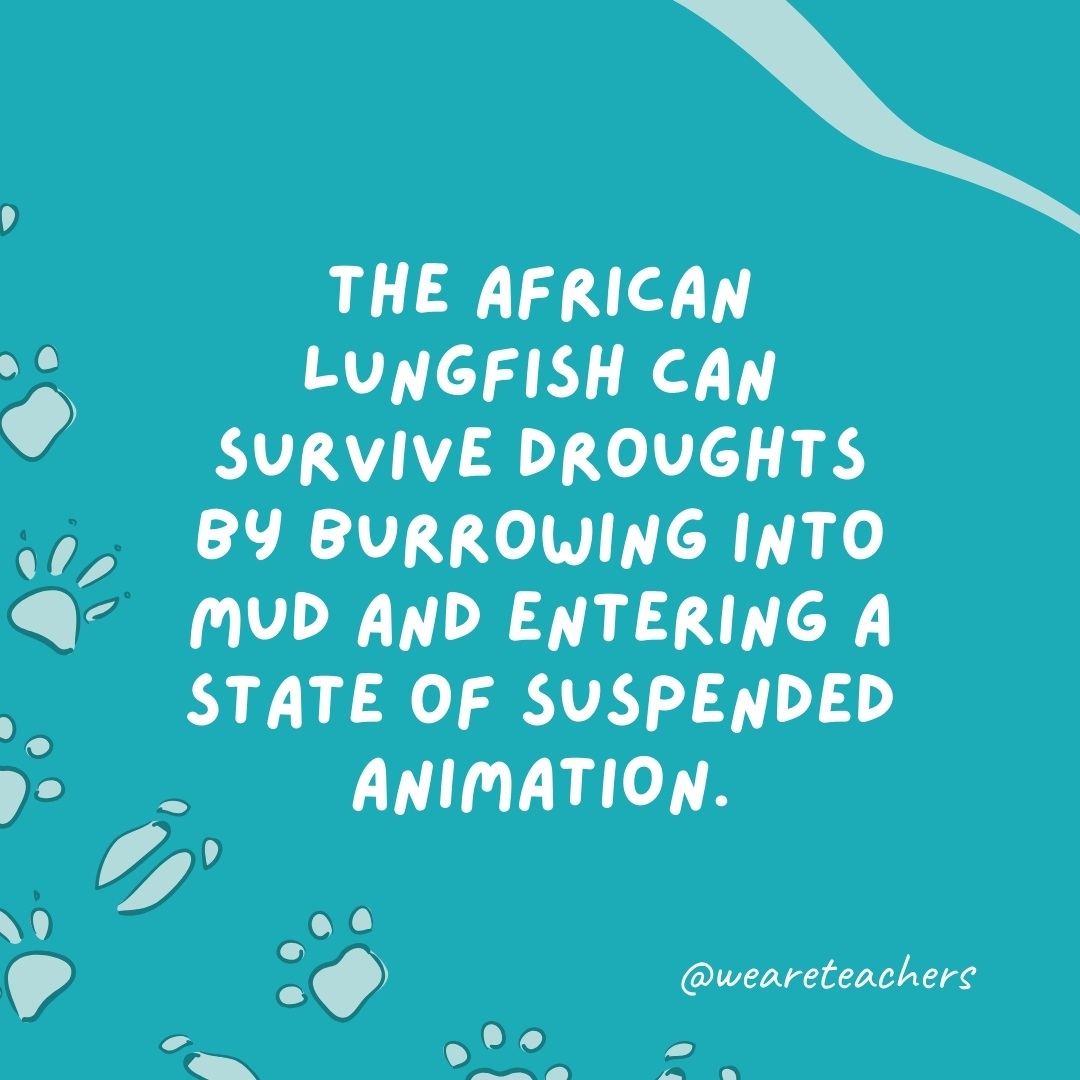
When water is scarce, the lungfish retreats into the earth, a living fossil that breathes air and waits for the rains to return, a testament to survival in the harshest conditions.
The Saharan silver ant is one of the most heat-resistant terrestrial animals in the world.

In the scorching sands of the Sahara, this ant ventures out in the midday heat, its reflective silver hairs a natural adaptation to one of the harshest environments on Earth.
A group of moles is called a labor.

Digging tirelessly through the soil, moles form labors, a collective effort that transforms the landscape beneath our feet, unseen but essential to the ecosystem.
The giant Pacific octopus is the largest species of octopus.

In the cold waters of the Pacific, this cephalopod stretches its tentacles, a master of camouflage and intelligence, exploring the ocean’s depths with curiosity and skill.
The sunbird uses its long, curved beak to extract nectar from flowers.

Darting from bloom to bloom, the sunbird’s beak is perfectly shaped for sipping nectar, a vibrant participant in the pollination dance.
The barreleye fish has a transparent head and tubular eyes.

In the deep, dark ocean, the barreleye looks upward through its transparent skull, its eyes like telescopes peering into the waters above, a living embodiment of nature’s ingenuity. This incredible video is mind-blowing!
The arctic wolf is one of the only mammals that can survive the arctic cold.

Cloaked in white, the arctic wolf traverses the icy wilderness, its adaptation to the cold a testament to the enduring spirit of wildlife in the planet’s most extreme environments.
A group of larks is called an exaltation.

Soaring and singing, larks rise into the sky in exaltations, their melodious calls a celebration of the joy and beauty of flight.
The chambered nautilus has remained virtually unchanged for millions of years.
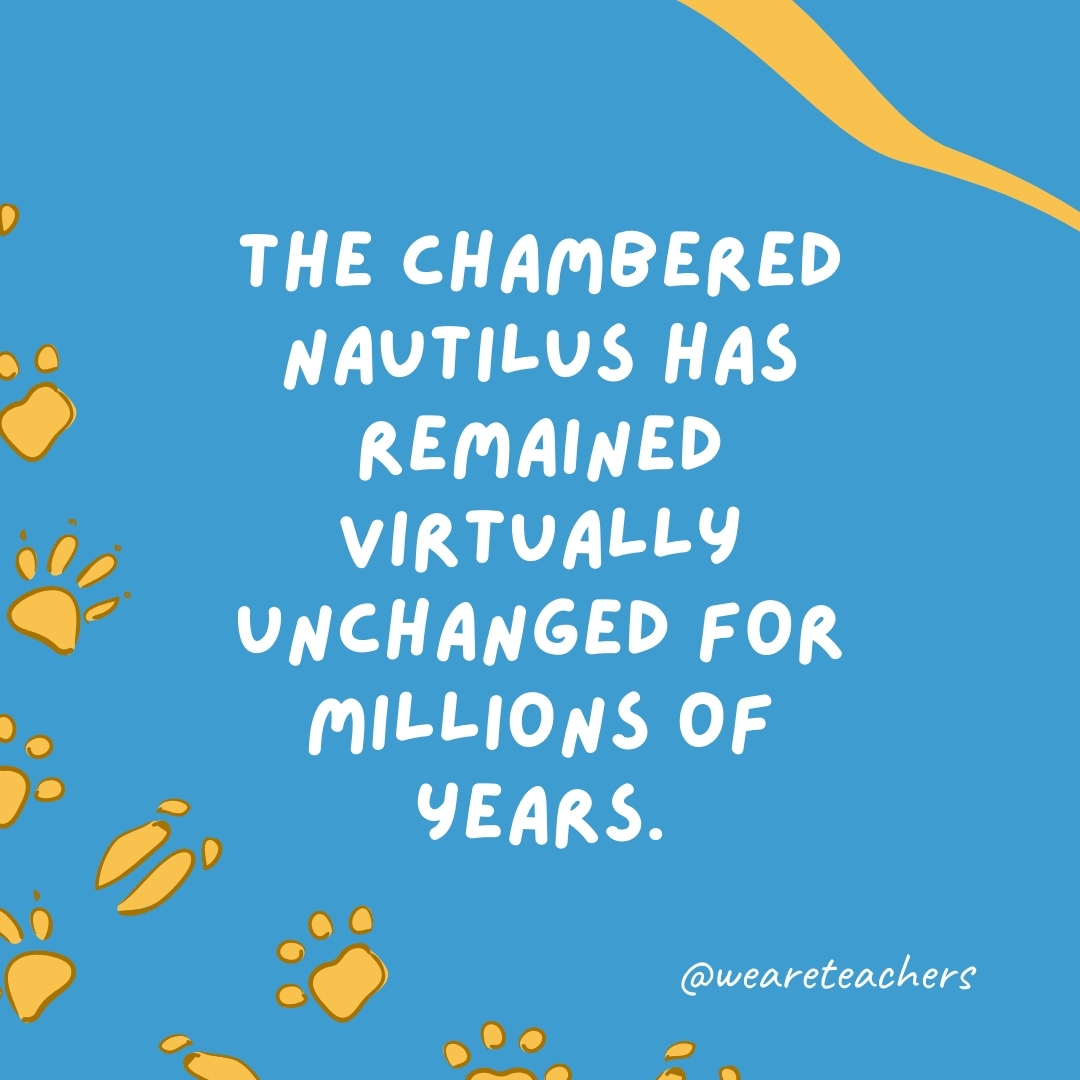
A living fossil, the nautilus glides through the ocean depths in its spiral shell, a symbol of the mystery and majesty of the marine world.
The Greenland shark’s meat is toxic if eaten raw but can be consumed if properly processed.
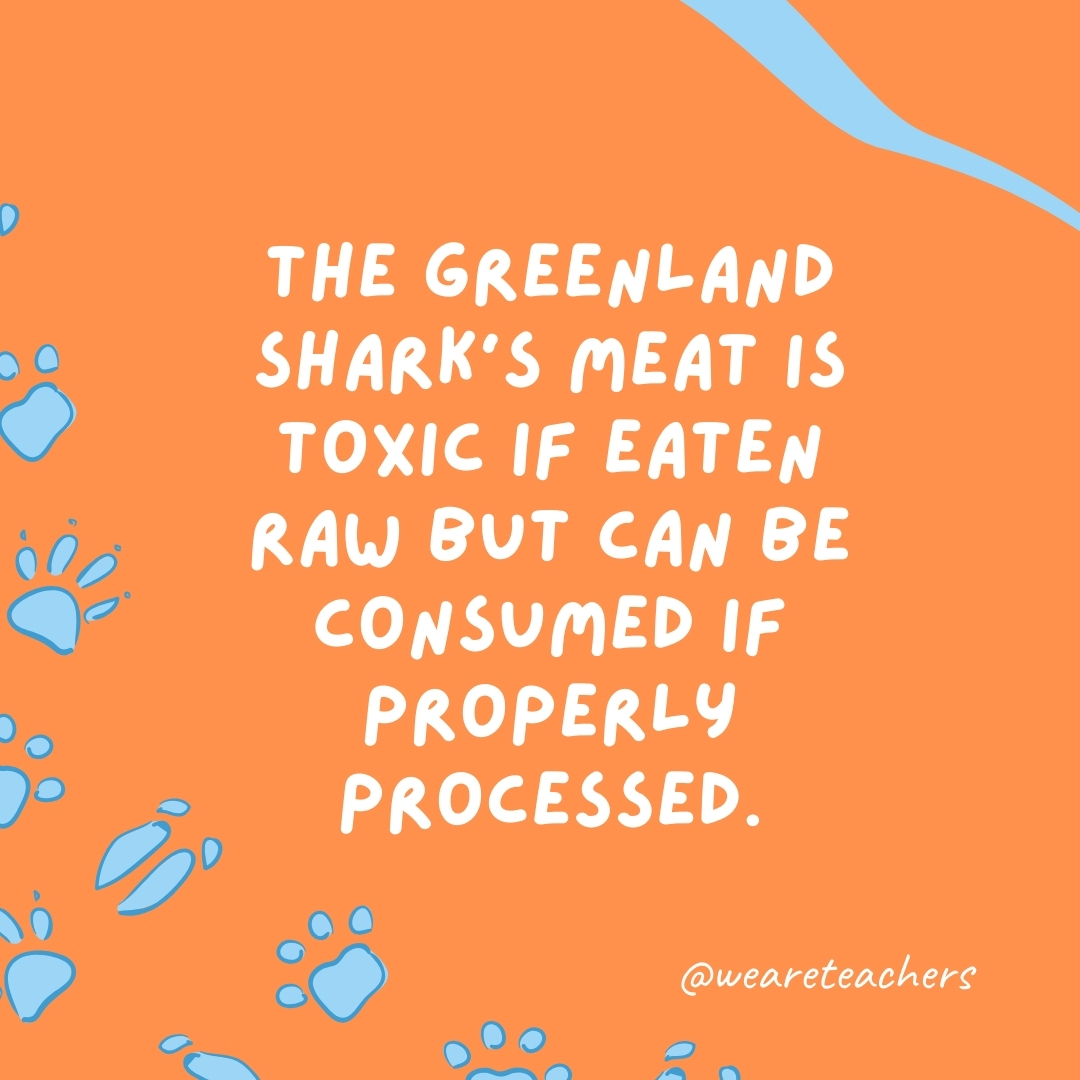
In the icy waters of the North Atlantic and Arctic, the Greenland shark’s flesh harbors a potent toxin, yet through traditional preparation, it becomes a part of the Inuit diet, a link between survival and the stark beauty of the Arctic.
The thorny dragon uses grooves in its skin to collect water from any part of its body and channel it to its mouth.

In the arid Australian outback, the thorny dragon sips moisture from the morning dew—and even moist sand!—and is a testament to life’s adaptability in the face of scarcity.
The wandering spider is one of the world’s most venomous spiders.

Roaming the floors of the rainforest, the Brazilian wandering spider’s potent venom makes it a formidable creature, a hidden danger in the lush undergrowth.
A group of guinea pigs is called a herd.
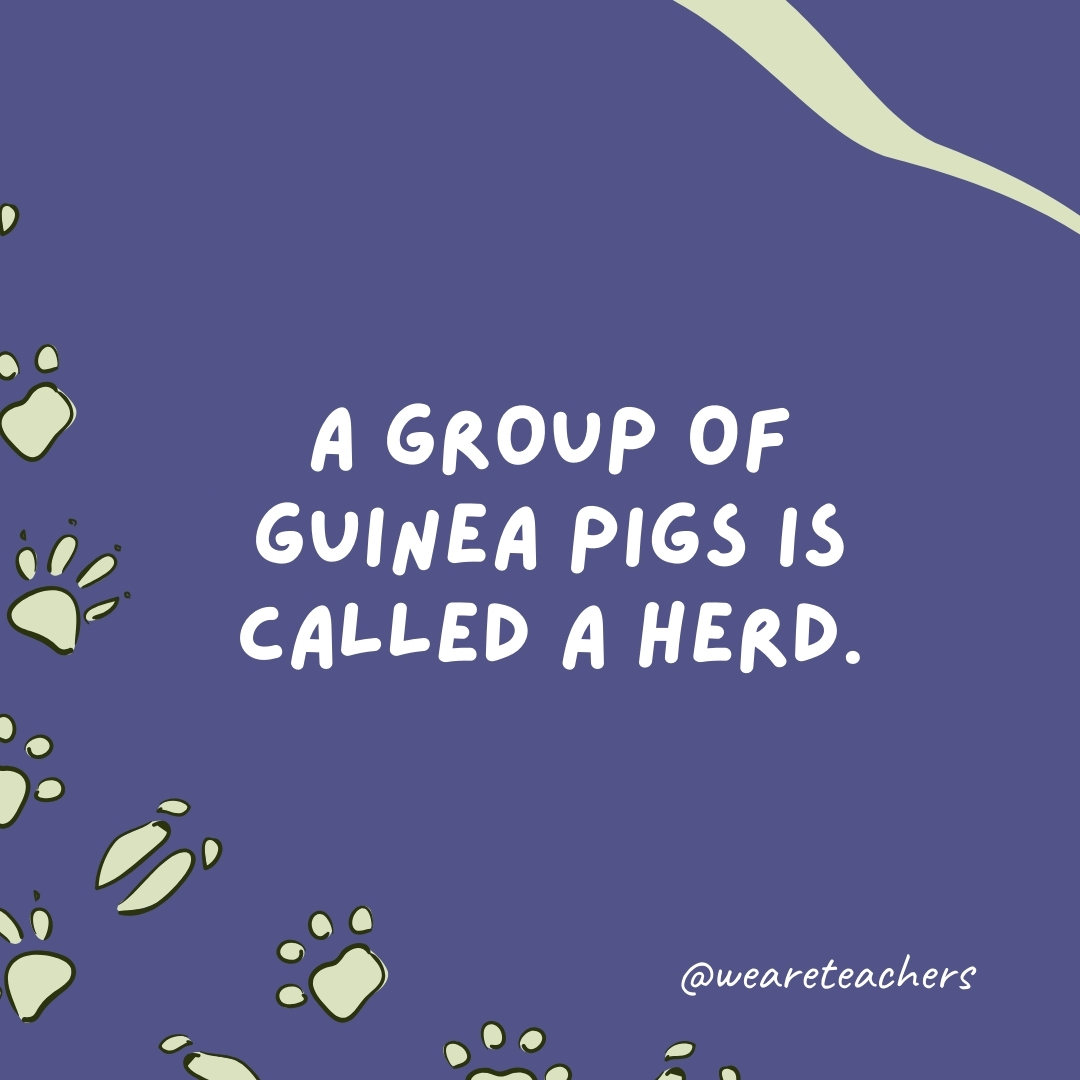
In the warmth of their burrows or the comfort of our homes, guinea pigs form herds, their gentle chatter and curious explorations a testament to their social nature.
The red panda uses its long, bushy tail for balance and to cover itself in winter, acting as a blanket.

In the tree branches of the Himalayas, the red panda’s tail serves as a cozy scarf, a splash of color in the snow, and a tool for agile movement through the canopy.
The mudskipper fish can walk on land and breathe air.

On the muddy shores of mangrove forests, the mudskipper blurs the line between aquatic and terrestrial life, a fish out of water that feels right at home. Watch this video about the fish that walks on land!
A group of swans is called a bevy or a regatta.

Gliding gracefully on serene waters, swans come together in bevies, their elegance and poise mirrored in the calmness around them, transforming into a regatta as they sail like ships in the breeze.
The velvet worm shoots a sticky slime from its head to trap its prey.
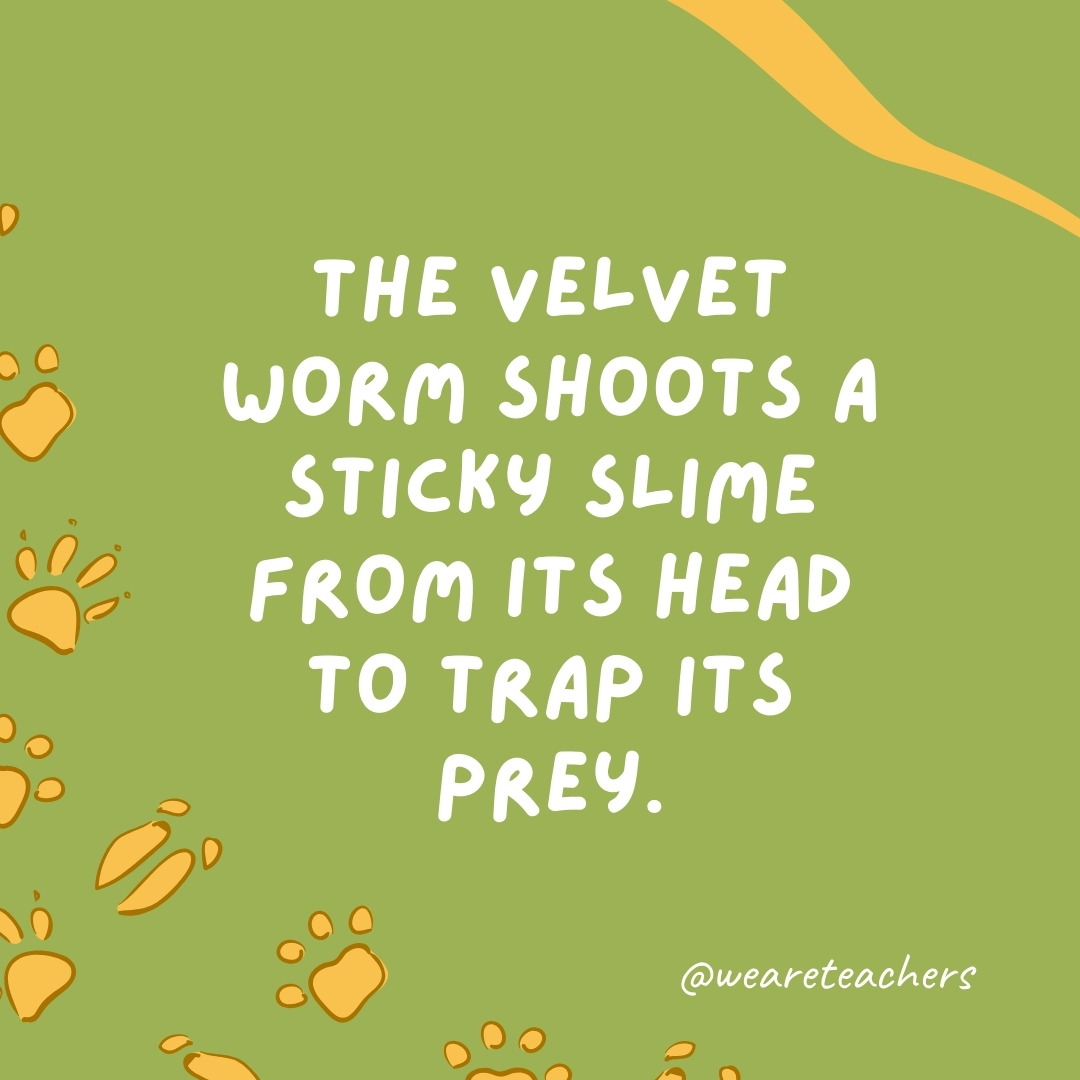
In the damp underbrush, the velvet worm ensnares insects with a squirt of slime, a predator cloaked in softness, revealing the unexpected ferocity of the miniature world.
The yeti crab farms bacteria on its hairy claws and feeds on them.

In the blackness of the hydrothermal vents, the yeti crab cultivates life, its furry claws a garden in the deep, a whisper of warmth and sustenance in the eternal dark.
Otters often hold hands while sleeping.
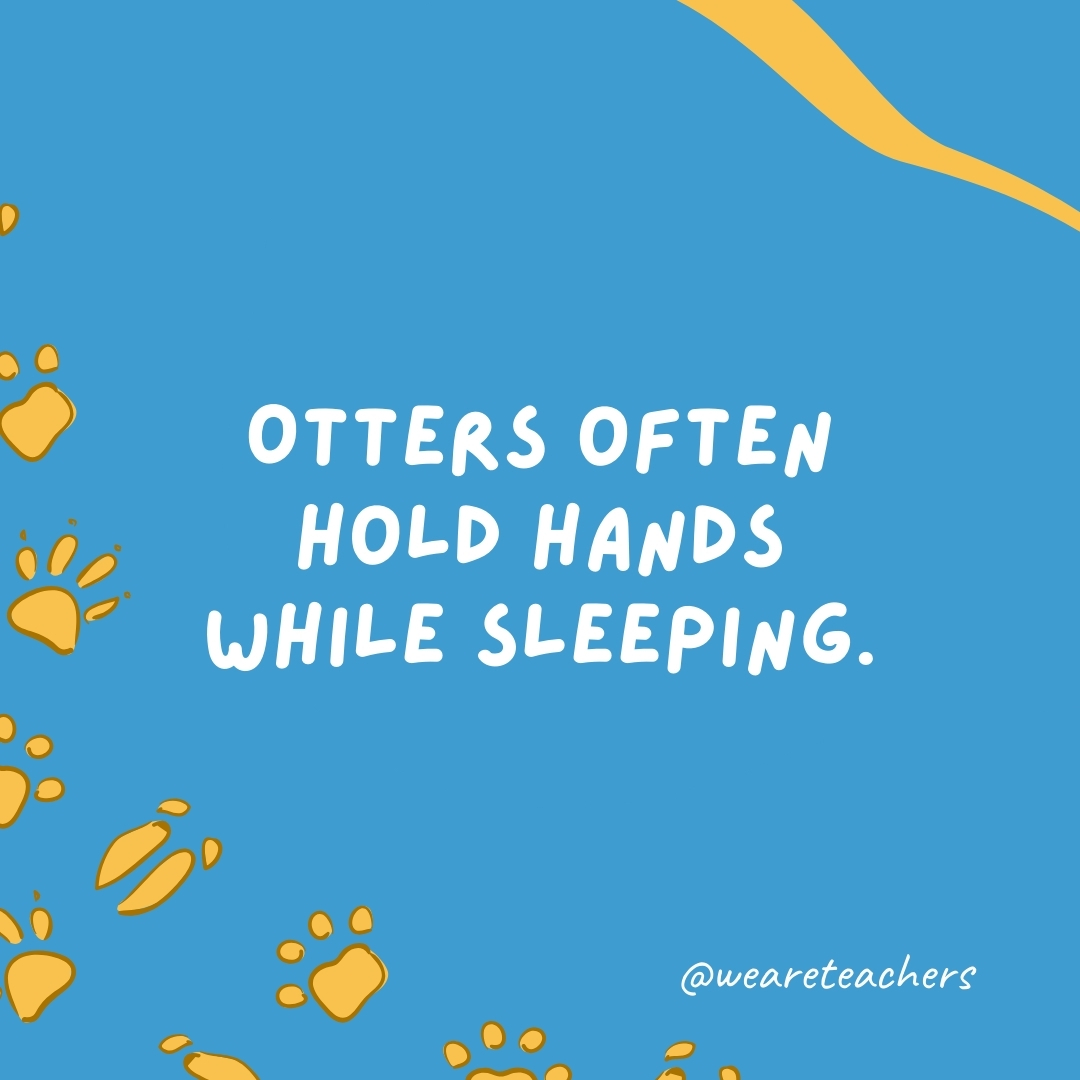
They clasp paws while resting to prevent drifting apart from each other in the water. Look at this really cute video!
A mere 5% of cheetah cubs reach maturity.

The cheetah population in Africa, which is at risk, faces an alarmingly high cub mortality rate, with so few cheetah cubs surviving until adulthood.
Japanese macaques play with snowballs for fun.

Also referred to as snow monkeys, Japanese macaques also love soaking in hot springs.
For every person on Earth, there are over 1.4 billion insects.
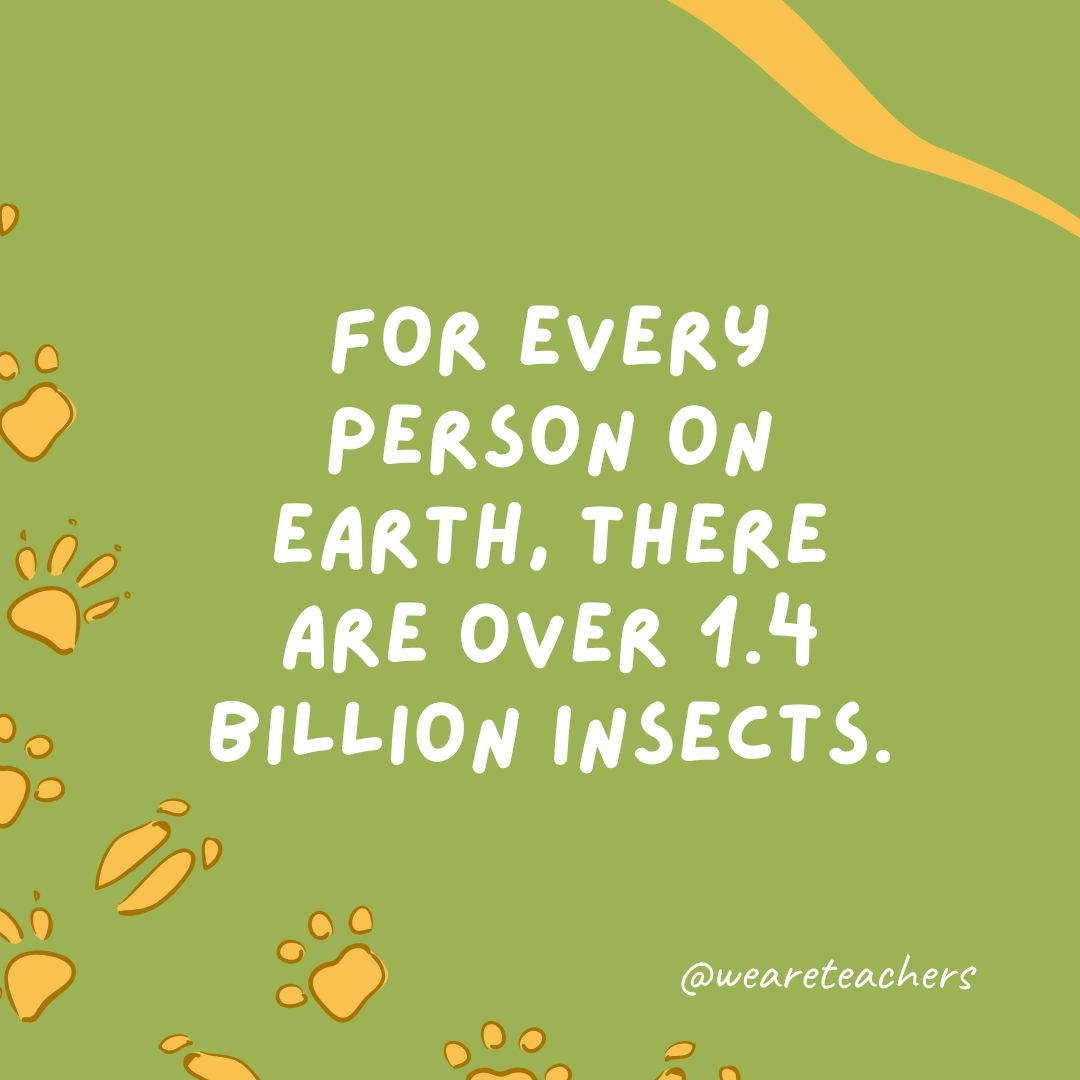
Read this great piece about why insects are so important to our planet’s survival.
Roosters protect their hearing by tilting their heads back when they crow.

This action completely covers their ear canal, acting as a natural earplug.
The mayfly holds the title for the shortest lifespan among animals worldwide.

The adult phase of its life lasts merely 24 hours.
The naked mole rat is capable of surviving in an atmosphere with almost no oxygen.

They can endure up to six hours in environments with extremely low oxygen levels.
A cockroach can continue to survive for weeks after its head has been cut off.
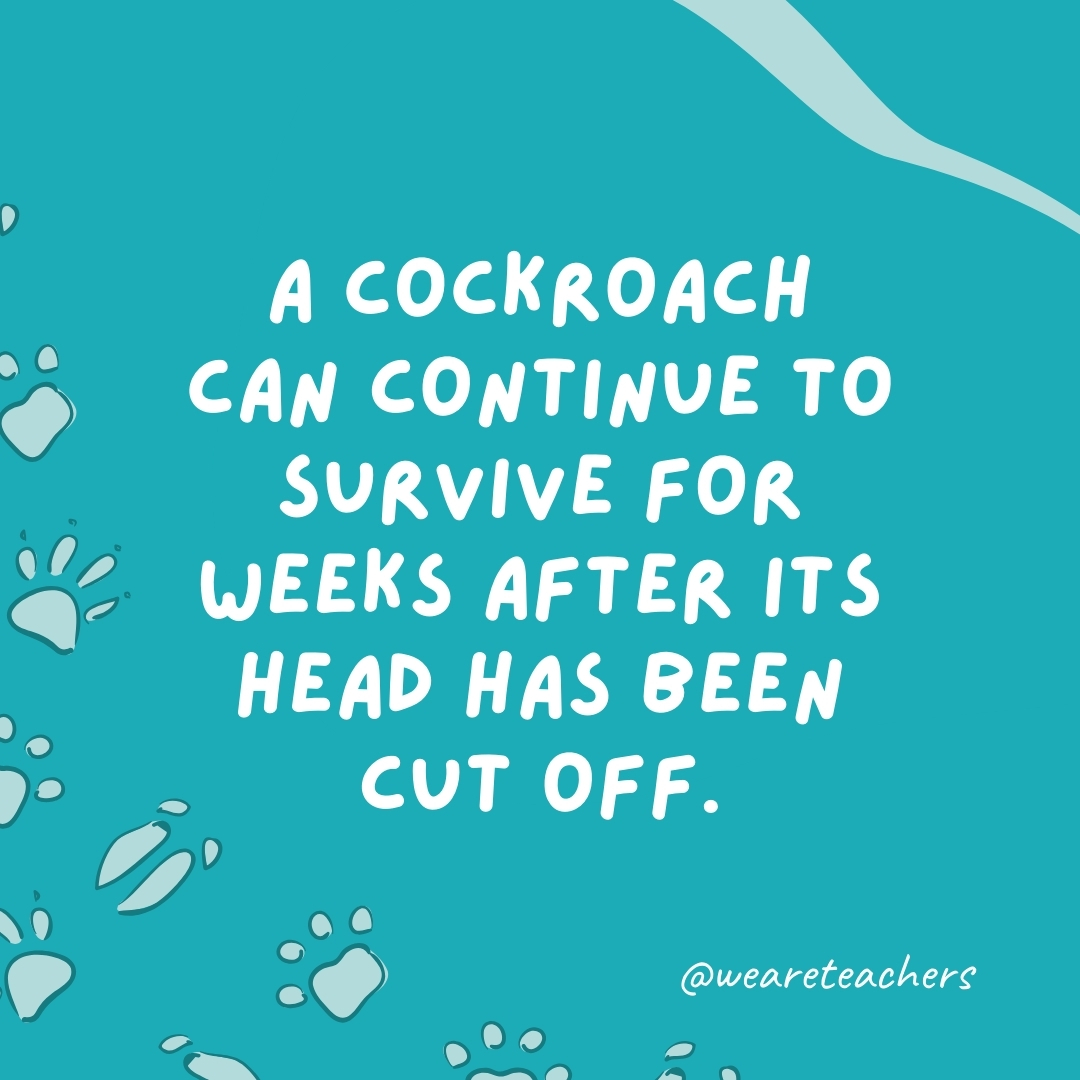
It can remain alive for weeks. What?!
Cows can be potty-trained.

Impressive! Read more about how this could help our environment.
A typical garden snail has 14,000 teeth.

Furthermore, research has revealed that snail teeth are exceptionally strong.
Young elephants suck on their trunks for comfort.
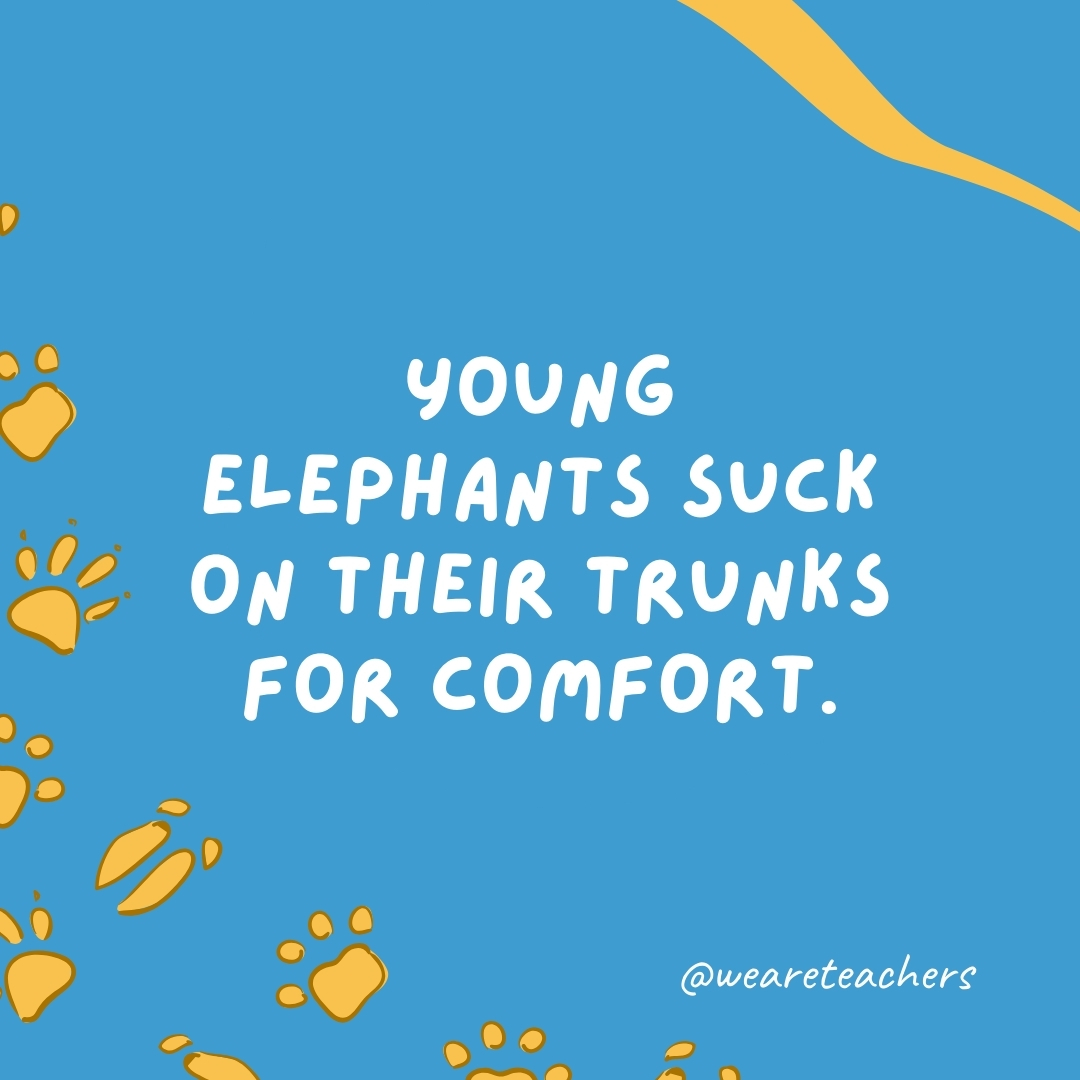
Baby elephants suck their trunks in a manner similar to how human infants suck their thumbs.
Great white sharks are capable of sensing a single drop of blood in 25 gallons of water.

That’s quite a remarkable feat (and a little scary)!
The shoebill stork is capable of swallowing baby crocodiles whole.
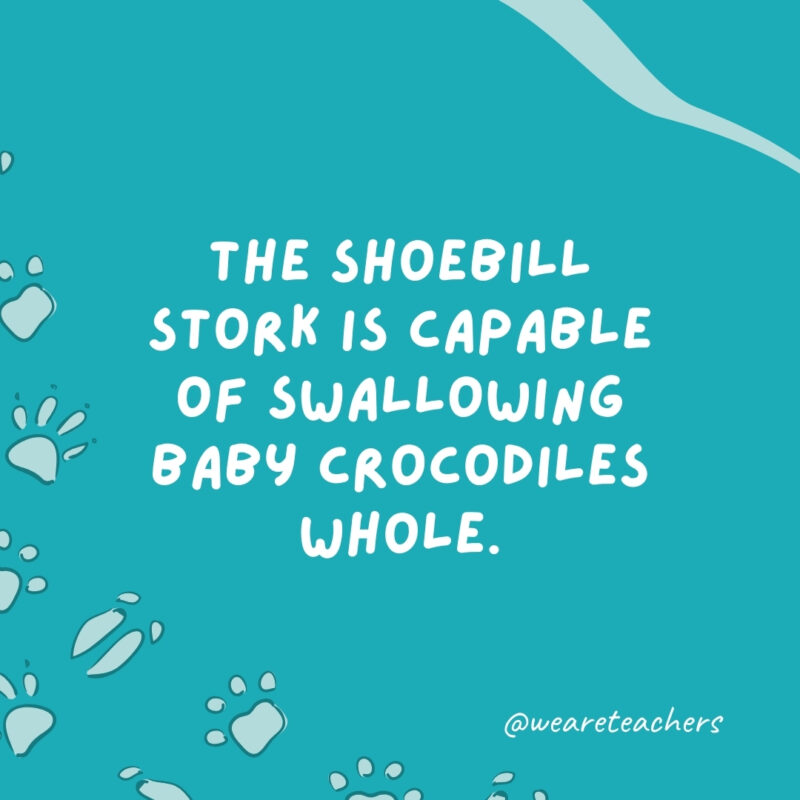
Subsequently, it regurgitates the bones and other parts that cannot be digested.
